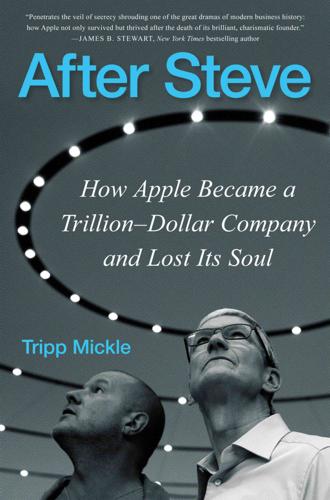
After Steve: How Apple Became a Trillion-Dollar Company and Lost Its Soul
by
Tripp Mickle
Published 2 May 2022
Shortly after the markets closed: “Letter from Tim Cook to Apple Investors,” Apple, January 2, 2019, https://www.apple.com/newsroom/2019/01/letter-from-tim-cook-to-apple-investors/. That afternoon, Cook sat down: “CNBC Exclusive: CNBC Transcript: Apple CEO Tim Cook Speaks with CNBC’s Josh Lipton Today,” CNBC, January 2, 2019, https://www.cnbc.com/2019/01/02/cnbc-exclusive-cnbc-transcript-apple-ceo-tim-cook-speaks-with-cnbcs-josh-lipton-today.html. The following day: Sophie Caronello, “Apple’s Market Cap Plunge Must Be Seen in Context,” Bloomberg, January 4, 2019, https://www.bloomberg.com/news/articles/2019-01-04/apple-s-market-cap-plunge-must-be-seen-in-context.
…
Cook’s inbox overflowed: Interview with Tim Cook. “Apple is open”: Edward Moyer, “Apple’s Cook Takes Aim at Trump’s Immigration Ban,” CNET, January 28, 2017, https://www.cnet.com/news/tim-cook-trump-immigration-apple-memo-executive-order/. Cook assured Apple’s staff: Interview with Tim Cook. In late May: Lizzy Gurdus, “Exclusive: Apple Just Promised to Give U.S. Manufacturing a $1 Billion Boost” (video), CNBC, May 3, 2017, https://www.cnbc.com/2017/05/03/exclusive-apple-just-promised-to-give-us-manufacturing-a-1-billion-boost.html. Cramer didn’t point out: Tripp Mickle and Yoko Kubota, “Tim Cook and Apple Bet Everything on China.
…
In 1969, the local school: Interviews with Wayne Ellis, Fay Farris, and others. In sixth or seventh grade: Todd C. Frankel, “The Roots of Tim Cook’s Activism Lie in Rural Alabama,” Washington Post, March 7, 2016, https://www.washingtonpost.com/news/the-switch/wp/2016/03/07/in-rural-alabama-the-activist-roots-of-apples-tim-cook/; Matt Richtel and Brian X. Chen, “Tim Cook, Making Apple His Own,” New York Times, June 15, 2014, https://www.nytimes.com/2014/06/15/technology/tim-cook-making-apple-his-own.html. After he became Apple’s CEO: Auburn University, “Tim Cook Receiving the IQLA Lifetime Achievement Award,” YouTube, December 14, 2013, https://www.youtube.com/watch?
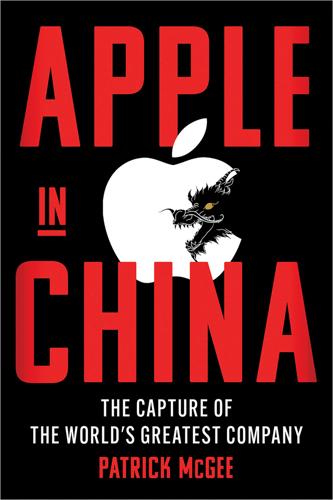
Apple in China: The Capture of the World's Greatest Company
by
Patrick McGee
Published 13 May 2025
The ODM earns profit through design; the OEM earns it from vertical integration—that is, by sourcing more of the parts itself. Chapter 10: IBM West—The Rise of Tim Cook “Most Studious”: Tripp Mickle, After Steve: How Apple Became a Trillion-Dollar Company and Lost Its Soul. New York: William Morrow, 2022. “Go west, young man”: Sam Colt, “Tim Cook Gave His Most In-Depth Interview to Date—Here’s What He Said,” Business Insider, September 20, 2014, https://www.businessinsider.com/tim-cook-full-interview-with-charlie-rose-with-transcript-2014-9. “Here’s to the sensible ones”: Austin Carr and Mark Gurman, “Apple Is the $2.3 Trillion Fortress That Tim Cook Built,” Bloomberg Businessweek, February 9, 2021, https://www.bloomberg.com/news/features/2021-02-09/this-is-how-tim-cook-transformed-apple-aapl-after-steve-jobs.
…
Only a dozen multinationals earn more than $10 billion a year in China, and Apple tops the list with around $70 billion. Never mind conceiving “the next big thing.” Apple’s China Problem is the company’s biggest risk, the most consequential unknown for Tim Cook’s legacy, and an urgent challenge for Washington. This is the story of how Apple got here. PART ONE SAVING APPLE CHAPTER 1 THE BRINK OF BANKRUPTCY Joe O’Sullivan needed to sell Apple’s Macintosh factory in Fountain, Colorado, and fast. The week before, in late March 1996, Apple stunned observers by announcing it would lose $700 million that quarter, the biggest financial setback in its history.
…
But with the negative publicity, sales abruptly declined: Greater China revenues had experienced 67 percent growth in the December quarter, but growth plummeted to just 8 percent in 2013’s March quarter, and in the June quarter they shrank 14 percent. An internal document from Apple later said the decline was “likely influenced by the Chinese Government’s decision to target Apple on Consumer Day.” Apple, in a matter of weeks, went from feeling untouchable to fearing its products would be blacklisted. Eighteen days after the CCTV episode, Tim Cook personally apologized with a letter, translated into Mandarin and posted on Apple’s China website. He offered “sincere apologies,” said he had “immense respect” for China, and acknowledged that a “lack of communication” had led to Apple appearing arrogant or signaling that it didn’t value feedback.
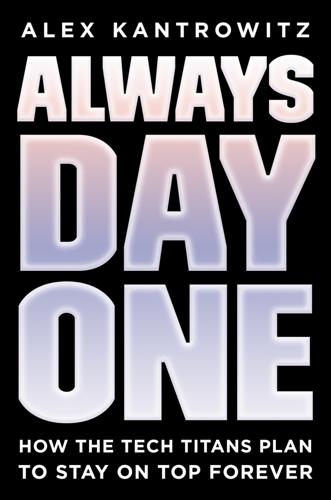
Always Day One: How the Tech Titans Plan to Stay on Top Forever
by
Alex Kantrowitz
Published 6 Apr 2020
New York Times, December 2, 2015. https://www.nytimes.com/2015/12/03/us/san-bernardino-shooting.html. an iPhone 5c: Ng, Alfred. “FBI Asked Apple to Unlock iPhone Before Trying All Its Options.” CNET, March 27, 2018. https://www.cnet.com/news/fbi-asked-apple-to-unlock-iphone-before-trying-all-its-options. not just one iPhone: Grossman, Lev. “Apple CEO Tim Cook: Inside His Fight with the FBI.” Time. Time Magazine, March 17, 2016. https://time.com/4262480/tim-cook-apple-fbi-2. the side of privacy: Cook, Tim. “Customer Letter.” Apple. Accessed February 16, 2016. https://www.apple.com/customer-letter. “To me, marketing is about values”: “Best Marketing Strategy Ever!
…
CNBC, October 23, 2017. https://www.cnbc.com/2017/10/23/apple-co-founder-steve-wozniak-not-upgrading-to-iphone-x-right-away.html. Cook, in an interview with CNBC: “CNBC Exclusive: CNBC Transcript: Apple CEO Tim Cook Speaks with CNBC’s Jim Cramer Today.” CNBC. CNBC, January 8, 2019. https://www.cnbc.com/2019/01/08/exclusive-cnbc-transcript-apple-ceo-tim-cook-speaks-with-cnbcs-jim-cramer-today.html. Apple had Siri: Gross, Doug. “Apple Introduces Siri, Web Freaks Out.” CNN. Cable News Network, October 4, 2011. https://www.cnn.com/2011/10/04/tech/mobile/siri-iphone-4s-skynet/index.html. “Since October 2011, when Steve died”: Note that Jobs began the Siri project.
…
These elements—the design-led development process, the focus, and the element of surprise—have all combined to make Apple’s flagship devices the most desired products in the world. But these same factors are conspiring against Apple as it faces a shift of a similar magnitude to the one Google encountered when typing and clicking turned into talking and tapping. “A Form That’s Right” On January 2, 2019, Tim Cook posted a rare letter to Apple’s website. “To Apple investors,” he wrote. “Today we are revising our guidance for Apple’s fiscal 2019 first quarter.” The letter marked the first time Apple had revised its financial predictions since 2002, when it anticipated it would miss revenue expectations by at least $150 million.
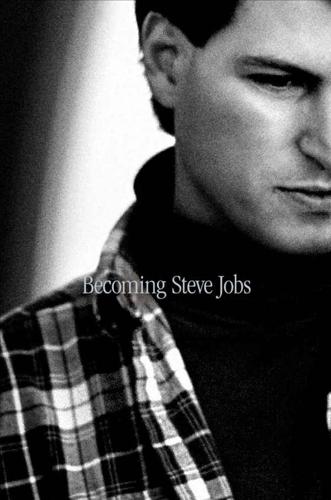
Becoming Steve Jobs: The Evolution of a Reckless Upstart Into a Visionary Leader
by
Brent Schlender
and
Rick Tetzeli
Published 24 Mar 2015
Jon Rubinstein and Avie Tevanian were the next members of the “Save Apple” team to depart. Ruby and Avie had been a buddy act of sorts, managing the hardware and software sides of Apple’s whole widget. Says Ruby, “There’s as much of the turnaround team’s DNA in Apple as there is of Steve’s, and you can still see it today.” They had been involved in every key decision at Apple since 1997. And before they left they helped pull off a move that they’d been talking about with Steve and with Tim Cook for years—switching the microprocessors that powered every Apple personal computer from the PowerPC chip to one made by Intel.
…
THE LAST MEMORIAL service occurred at the Apple campus in Cupertino, on October 20. Nearly ten thousand people gathered on the lawn within the ellipse formed by the campus’s main buildings. Every Apple retail outlet around the globe had been closed for the occasion, with the store employees gathered to watch video of the event streamed live to them over Apple’s virtual network. Tim Cook was the first speaker. Coldplay and Norah Jones, whose music had been featured in Apple television advertisements, played short sets for the crowd. But two speakers provided the highlights: Jony Ive and Bill Campbell, the Apple board member who had been a close adviser of Steve for many, many years.
…
Aside from snippets from my own encounters with Jobs, most of the direct quotations in this chapter were drawn from interviews with Eddy Cue on April 29, 2014; Fred Anderson on August 8, 2012; Avie Tevanian on October 11, 2012; Tim Cook on April 30, 2014; Jon Rubinstein on July 25, 2012; Jony Ive on May 6, 2014, and June 10, 2014; John Doerr on May 7, 2014; Jean-Louis Gassée on October 17, 2012; and Marc Andreessen on May 7, 2014. Online resources we consulted include Fastcodesign.com, the Fast Company magazine website that focuses on design, May 22, 2014, http://www.fastcodesign.com/3030923/4-myths-about-apple-design-from-an-ex-apple-designer; and the blog by former Apple engineer Don Melton, donmelton.com/2014/04/10/memories-of-steve/. Also, Apple SEC filings provided unit sales data each quarter from Fiscal Year 2000 through Fiscal Year 2013.

Dogfight: How Apple and Google Went to War and Started a Revolution
by
Fred Vogelstein
Published 12 Nov 2013
But perhaps the most notable example: Jessica Lessin, “An Apple Exit over Maps,” Wall Street Journal, 10/29/2012; Liz Gannes, “Google Maps for iPhone Had 10 Million Downloads in 48 Hours,” AllThingsD.com, 12/17/2012. Apple’s Tim Cook knows all the challenges: Ina Fried, “Apple’s Tim Cook: The Full D11 Interview,” Tim Cook interviewed by Walt Mossberg and Kara Swisher (video), AllThingsD.com, 5/29/2013, available at www.allthingsd.com/20130529/apples-tim-cook-the-full-d11-interview-video. Jobs was a master: Peter Kafka, “Apple CEO Steve Jobs at D8: The Full, Uncut Interview,” Steve Jobs interviewed by Walt Mossberg and Kara Swisher (video), AllThingsD.com, 6/7/2010, available at www.allthingsd.com/20100607/steve-jobs-at-d8-the-full-uncut-interview.
…
Android’s share of the mobile phone and tablet markets: “Android Captures Record 80 Percent Share of Global Smartphone Shipments in Q2 2013,” Strategy Analytics press release, 8/1/2013; “Small Tablets Drive Big Share Gains for Android,” Canalys press release, 8/1/2013. Apple was also taking heat: Charles Duhigg and Keith Bradsher, “How the US Lost Out on iPhone Work,” New York Times, 1/21/2012; Duhigg and Bradsher, “In China, Human Costs Are Built into an iPad,” New York Times, 1/25/2012; Mark Gurman, “Tim Cook Responds to Claims of Factory Worker Mistreatment: ‘We Care About Every Worker in Our Supply Chain,’” 9to5mac.com, 1/26/2012; “Here’s Apple CEO Tim Cook’s Apology Letter in China” (Digits blog), Wall Street Journal, 4/1/2013. But perhaps the most notable example: Jessica Lessin, “An Apple Exit over Maps,” Wall Street Journal, 10/29/2012; Liz Gannes, “Google Maps for iPhone Had 10 Million Downloads in 48 Hours,” AllThingsD.com, 12/17/2012.
…
Indeed, the best phone ads of 2012 and 2013 came from Samsung, Google’s biggest Android phone maker. After Apple unveiled the iPhone 5, Samsung pounced with a barrage of TV spots that amusingly depicted iPhone users as misguided elitists waiting in line for a phone that was inferior in every way to the Galaxy S III. Apple was also taking heat for the way it was making its phones. The New York Times, in a handful of long articles about the “iEconomy,” presented evidence that Apple was making its iPhones and iPads in Asian sweatshops, forcing CEO Tim Cook to acknowledge Apple could do more to make its contractors provide safer workplaces.
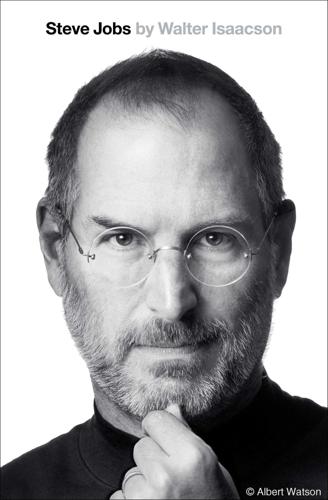
Steve Jobs
by
Walter Isaacson
Published 23 Oct 2011
A Soōtoō Zen master in California who became Jobs’s spiritual teacher. LEE CLOW. Advertising wizard who created Apple’s “1984” ad and worked with Jobs for three decades. DEBORAH “DEBI” COLEMAN. Early Mac team manager who took over Apple manufacturing. TIM COOK. Steady, calm, chief operating officer hired by Jobs in 1998; replaced Jobs as Apple CEO in August 2011. EDDY CUE. Chief of Internet services at Apple, Jobs’s wingman in dealing with content companies. ANDREA “ANDY” CUNNINGHAM. Publicist at Regis McKenna’s firm who handled Apple in the early Macintosh years. MICHAEL EISNER. Hard-driving Disney CEO who made the Pixar deal, then clashed with Jobs.
…
Panasonic came out with a CD drive that could rip and burn music, and it was available first for computers that had old-fashioned tray loaders. The effects of this would ripple over the next few years: It would cause Apple to be slow in catering to users who wanted to rip and burn their own music, but that would then force Apple to be imaginative and bold in finding a way to leapfrog over its competitors when Jobs finally realized that he had to get into the music market. CHAPTER TWENTY-EIGHT CEO Still Crazy after All These Years Tim Cook and Jobs, 2007 Tim Cook When Steve Jobs returned to Apple and produced the “Think Different” ads and the iMac in his first year, it confirmed what most people already knew: that he could be creative and a visionary.
…
Business Week, July 31, 2000; Tim Cook, Auburn commencement address, May 14, 2010; Adam Lashinsky, “The Genius behind Steve,” Fortune, Nov. 10, 2008; Nick Wingfield, “Apple’s No. 2 Has Low Profile,” Wall Street Journal, Oct. 16, 2006. Mock Turtlenecks and Teamwork: Interviews with Steve Jobs, James Vincent, Jony Ive, Lee Clow, Avie Tevanian, Jon Rubinstein. Lev Grossman, “How Apple Does It,” Time, Oct. 16, 2005; Leander Kahney, “How Apple Got Everything Right by Doing Everything Wrong,” Wired, Mar. 18, 2008. From iCEO to CEO: Interviews with Ed Woolard, Larry Ellison, Steve Jobs. Apple proxy statement, Mar. 12, 2001.
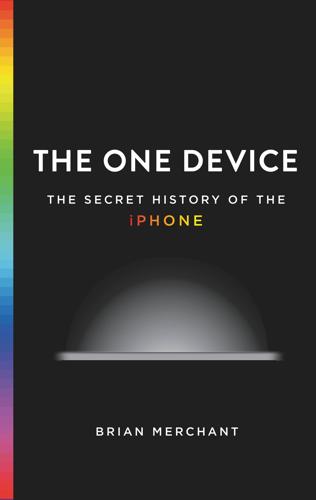
The One Device: The Secret History of the iPhone
by
Brian Merchant
Published 19 Jun 2017
The cost is tens of thousands of lives being made miserable by those last-minute orders, militaristic work environments, and relentless stretches of overtime. This is not necessarily Apple’s fault, but it is certainly a by-product of a globalized workforce. Apple was actually one of the last major tech companies to move its manufacturing overseas; it had spent decades touting its Made in America bona fides. And Tim Cook, who rose through the ranks at Apple on the strength of his supply-chain wizardry, is himself a key driver in that push toward breakneck production. One of his initiatives has been an attempt to eliminate inventory—today, Apple turns over its entire inventory every five days, meaning each iPhone goes from the factory line in China to a cargo jet to a consumer’s hands in a single workweek.
…
The top editorial staff of iPhoneLife magazine participated in an interview call during which I tried to suss out what it was like to write about the iPhone daily for a living. In a phone interview, Cory Moll detailed what forming a union at Apple was like. Mark Spoonauer provided context as a tech editor and longtime vet of Apple Events. I interviewed a couple dozen Apple Store employees, but covertly, which is why I didn’t publish any of their quotes in the text—retail reps aren’t allowed to speak to the press. I also interviewed perhaps a dozen customers waiting in line on launch day. As for the Tim Cook email episode—an Apple PR rep confirmed that Tim had opened my email and forwarded it on; she said he had read it first. Streak’s representatives told me that their technology could “very accurately” determine which device a person used to open an email.
…
(While I’ve been on the science and tech beat for about a decade now, I’ve spent more time covering oil spills than product demos.) So, while I made Apple officials fully aware of this project from the outset and repeatedly spoke with and met their PR representatives, they declined my many requests to interview executives and employees. Tim Cook never answered my (very thoughtful) emails. To tell this story, I met current and former Apple employees in dank dive bars or spoke with them over encrypted communications, and I had to grant anonymity to some of those I interviewed. Many people from the iPhone team still working at Apple told me they would have loved to participate on the record—they wanted the world to know its incredible story—but declined for fear of violating Apple’s strict policy of secrecy.
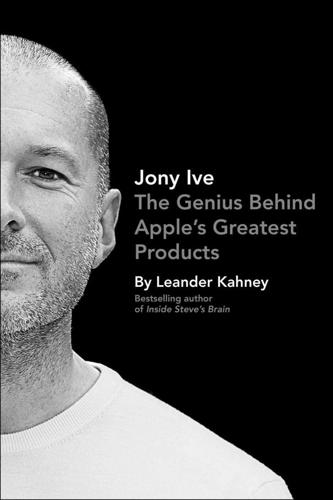
Jony Ive: The Genius Behind Apple's Greatest Products
by
Leander Kahney
Published 14 Nov 2013
Jobs’s first surgery didn’t fully cure him and he later underwent a second round of surgery, taking a leave of absence from Apple to undergo a liver transplant in Memphis, Tennessee, in May 2009. Jobs flew home on his private jet with his wife, where he was met by Jony and Tim Cook at San Jose Airport. The question of Apple’s future was very much in the air, as the announcement of Jobs’s leave had led many in the press to predict that Apple was doomed without him. It seemed to be the consensus of the punditocracy that the fate of Apple rested solely on Jobs’s shoulders. Jony drove Jobs home from the airport and confided on the journey that he was disturbed by newspaper opinion pieces that staked Apple’s survival to Jobs.
…
Jonny Evans, “Apple Design Chief Jonathan Ive Collects CBE,”Macworld, http://www.macworld.co.uk/mac/news/?newsid=16510, November 17, 2006. 24. Marcus Fairs, ICON, http://www.iconeye.com/read-previous-issues/icon-004-|-july/august-2003/jonathan-ive-|-icon-004-|-july/august-2003, July /August 2003. 25. Dick Powell, “At the Core of Apple,” Innovate, issue 6, Summer 2009, http://www.innovation.rca.ac.uk/cms/files/Innovate6.pdf 26. Phil Schiller, Apple v. Samsung trial testimony. 27. Isaacson, Steve Jobs, Kindle Edition. 28. Apple Press info, “Tim Cook Named COO of Apple,” http://www.apple.com/pr/library/2005/10/14Tim-Cook-Named-COO-of-Apple.html, October 14, 2005. 29.
…
Apple Press info, “Tim Cook Named COO of Apple,” http://www.apple.com/pr/library/2005/10/14Tim-Cook-Named-COO-of-Apple.html, October 14, 2005. 29. Interview with Jon Rubinstein, October 2012 30. Leander Kahney, Inside Steve’s Brain, expanded edition (Portfolio, 2009), 96. 31. Joel West, “Apple Computer: The iCEO Seizes the Internet,” http://www.scribd.com/doc/60250577/APPLE-Business, October 20, 2002. 32. Adam Lashinsky, “Tim Cook: The Genius Behind Steve,” Fortune, http://money.cnn.com/2011/08/24/technology/cook_apple.fortune/index.htm, August 24, 2011. 33. Interview with Doug Satzger, January 2013. 34. Walter Isaacson, Steve Jobs, Kindle edition 35.

How to Fix the Future: Staying Human in the Digital Age
by
Andrew Keen
Published 1 Mar 2018
Vestager,” Stephens admits, “but everyone who supports the liberal market economy that made possible the success of Apple, Google and the like should be applauding her courageous effort to reset the balance.”4 Vestager’s courage has been her unwavering determination to squarely stand up to what Farhad Manjoo calls the “new superclass of American corporate might.”5 By reminding companies like Google and Apple of their responsibilities in the real world, Philip Stephens suggests, Vestager—as it happens, the mother of three young girls—is socializing these often rather childish exponents of radical disruption. Apple’s CEO, Tim Cook, for example, “often sounds as if he believes his company should be free to decide how much it pays in tax,” Stephens notes.6 And Vestager hasn’t been shy about explaining to Cook his grown-up obligations.
…
But all she is doing, she explains, is siding with her fellow 507 million Europeans against multibillion-dollar multinationals like Apple, which cheats on taxes, and Google, which illegally crushes its smaller competitors. Tim Cook might call this “political crap,” but for Vestager it’s the essence of her calling as a public servant responsible for pursuing the interests of her community. Not everyone, of course, favors this kind of socially interventionist government. Tim Cook certainly doesn’t. Nor did Lee Kuan Yew, the founder of Singapore, who viewed it as foreign to his ideals. “Westerners have abandoned an ethical basis for society, believing that all problems are solvable by a good government,” he said about Vestager’s style of European social democracy.
…
“If you have any ideas,” Bezos concluded, with typical quirkiness, “just reply to this tweet . . .”10 To take another example, Marc Benioff—the swaggering Henry VIII look-alike CEO of the business software provider Salesforce.com—though a remarkably generous supporter of many noble social causes, remains perhaps a little too enamored with attaching his name to public projects such as the UCSF Benioff Children’s Hospital in San Francisco. Then there’s Tim Cook, the Apple CEO, whom we last met in Margrethe Vestager’s Brussels office, trying to convince the EU commissioner that the 0.005 percent tax his company paid to the Irish government was somehow in the public interest. Yet that’s the same Tim Cook who has been outspoken in his defense of immigration and minority rights and in his critique of the corrosive impact of fake news on our political culture. Yes, it’s complicated.
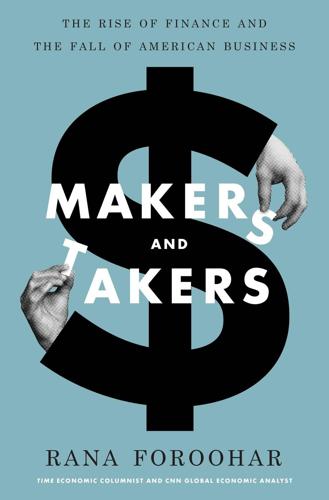
Makers and Takers: The Rise of Finance and the Fall of American Business
by
Rana Foroohar
Published 16 May 2016
But when I once asked him to do Apple CEO Tim Cook, he declined. “Nah, I can’t do Cook. I can only do crazies.”1 Of course, some people say Cook is crazy to listen to Icahn, who has spent the last several years trying to persuade him to give back more and more of Apple’s $200 billion cash hoard to investors in the form of massive share buybacks, instead of investing it back in R&D or product development. This had the effect of pushing up the price of Apple’s stock while conveniently increasing the value of Icahn’s $7 billion in Apple holdings along with those of all the other Apple investors. In April 2015, Icahn’s efforts paid off, bigger than even he could have imagined.
…
Sonn, and Yannet Lathrop, National Employment Law Project, “The Growing Movement for $15,” November 4, 2015. 5. Carl C. Icahn, “Sale: Apple Shares at Half Price” (an open letter to Tim Cook), carlicahn.com, October 9, 2014; William Lazonick, Mariana Mazzucato, and Oner Tulum, “Apple’s Changing Business Model: What Should the World’s Richest Company Do with All Those Profits?” Accounting Forum 37, no. 4 (2013): 261; author interviews and reporting for Time magazine. 6. Nabila Ahmed and Mary Childs, “Apple Is the New Pimco, and Tim Cook Is the New King of Bonds,” Bloomberg, June 4, 2015. 7. Interview with OFR economists and analysts for this book. 8.
…
Worse, financial thinking has become so ingrained in American business that even our biggest and brightest companies have started to act like banks. Apple, for example, has begun using a good chunk of its spare cash to buy corporate bonds the same way financial institutions do, prompting a 2015 Bloomberg headline to declare, “Apple Is the New Pimco, and Tim Cook Is the New King of Bonds.”6 Apple and other tech companies now anchor new corporate bond offerings just as investment banks do, which is not surprising considering how much cash they hold (it seems only a matter of time before Apple launches its own credit card). They are, in essence, acting like banks, but they aren’t regulated like banks.
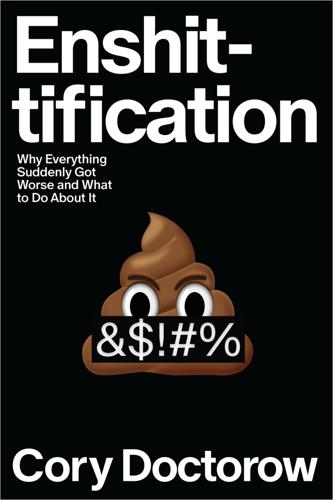
Enshittification: Why Everything Suddenly Got Worse and What to Do About It
by
Cory Doctorow
Published 6 Oct 2025
Satan took Helmsley to hell in 2007, but her breathtaking act of let-’em-eat-cake hubris was, and still is, typical for the ultrarich. Take Tim Cook, Apple’s billionaire CEO, who was elevated to replace founder Steve Jobs after he figured out how to move Apple’s manufacturing to Chinese sweatshops without compromising quality. (The answer turned out to be partnering with the electronics giant Foxconn to create factory environments that were so unbearable that the company installed suicide nets to catch workers who had reached the ultimate breaking point.) In 2022, Vox Media reporter LiQuan Hunt asked Tim Cook how he could communicate securely with his mother—an Android user—with Apple’s default iMessage App.
…
This involved establishing labor oversight and discipline in those remote Chinese factories that was so overwhelming and brutal that Foxconn, Apple’s primary contractor, had to install suicide nets around the factories in “iPhone City” to catch workers who leaped to their deaths rather than face another day on the job. We don’t have to speculate about how Tim Cook treats workers he’s not afraid of. The suicide nets have settled the matter. This is what Apple’s tech workers can look forward to, once Tim Cook is no longer worried about replacing them. The bad news is that tech has resolved its labor scarcity problem. As I noted earlier, the US tech sector fired 260,000 workers in 2023.
…
For a man with a dick-shaped rocket, Jeff Bezos sure has an abiding hatred of our kidneys. Apple CEO Tim Cook has a reputation for being a kind of cuddly tech boss who stands out from the pack. But the reason Apple’s board picked Cook to replace cofounder Steve Jobs after he juice-cleansed his way into an early cancer death wasn’t Cook’s sunny disposition. As I discussed on page 291, Cook’s signature achievement prior to his elevation to CEO, the deed that led to his accumulation of more than $2 billion in personal wealth, was figuring out how to offshore Apple’s production to factories in China. This involved establishing labor oversight and discipline in those remote Chinese factories that was so overwhelming and brutal that Foxconn, Apple’s primary contractor, had to install suicide nets around the factories in “iPhone City” to catch workers who leaped to their deaths rather than face another day on the job.
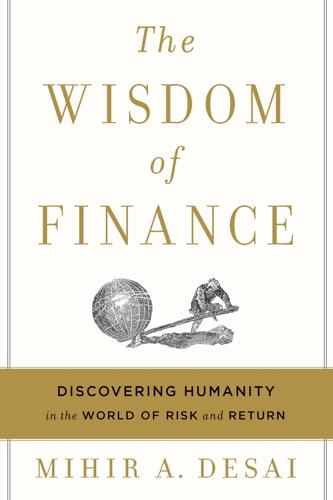
The Wisdom of Finance: Discovering Humanity in the World of Risk and Return
by
Mihir Desai
Published 22 May 2017
As just one example of this, the largest individual owner of Apple is CEO Tim Cook, but he owns only 0.02 percent of the company. Even the largest mutual fund owner of Apple owns less than 10 percent of the company. There are millions of investors in Apple who have decided to delegate the job of running Apple to managers—and these investors expect the managers to pursue what is in the best interest of the investors in Apple. For financial economists, this transition to companies with diffuse owners who delegate authority to professional managers is akin to Adam biting the apple in the Garden of Eden—it represents the end of innocence and the beginning of the modern world.
…
In short, capital markets begin to look like a daisy chain of principal-agent contracts, each with significant problems and conflicts. Let’s return to Apple. In 2013, Tim Cook faced a revolt triggered by the actions of David Einhorn of Greenlight Capital, who wanted Cook to start releasing all the cash that was building up inside of Apple. Cook, and Steve Jobs before him, had resisted calls to release that cash. Einhorn was the principal telling his agent, Tim Cook, to return that cash to shareholders. But Einhorn is himself the agent of state pension funds that have delegated to him the job of generating returns.
…
And those state pension funds have our savings invested in them, and we’ve appointed those pension fund managers to manage our wealth. It is a series of principal-agent relationships—we (the ultimate principal) save through pensions funds (our agents), which appoint David Einhorn (the agents of the pension funds), who monitors Tim Cook (the agent of David Einhorn), who appoints Jony Ive (Cook’s agent as Apple’s chief design officer), who appoints . . . you get the idea. Once you become attuned to the principal-agent relationship, it’s hard not to see it playing out everywhere in life. In many ways, the biggest debates today on what is wrong with capitalism are actually debates about finance and agency theory.

Habeas Data: Privacy vs. The Rise of Surveillance Tech
by
Cyrus Farivar
Published 7 May 2018
When the clock struck midnight: Sebastian Anthony, “Tim Cook Says Apple Will Fight US Gov’t Over Court-Ordered iPhone Backdoor,” Ars Technica, February 17, 2016. Available at: https://arstechnica.com/gadgets/2016/02/tim-cook-says-apple-will-fight-us-govt-over-court-ordered-iphone-backdoor/. “We have great respect”: Tim Cook, “A Message to our Customers,” February 16, 2016. https://www.apple.com/customer-letter/. Seventy-two hours later: UNITED STATES V. IN THE MATTER OF THE SEARCH OF AN APPLE IPHONE, GOVERNMENT’S MOTION TO COMPEL, February 19, 2016. https://www.documentcloud.org/documents/2715997-Apple-iPhone-Access-MOTION-to-COMPEL.html.
…
Two days later, FBI Director: FBI Director Comments on San Bernardino Matter, February 21, 2016. https://www.fbi.gov/news/pressrel/press-releases/fbi-director-comments-on-san-bernardino-matter. The following day, February 22: “Email to Apple employees from Apple CEO Tim Cook,” February 22, 2016. Available at: https://www.documentcloud.org/documents/2716997-Tim-Cook-Emails-Apple-Employees.html. While all of this was going on: David Kravets, “Trump Urges Supporters to Boycott Apple in Wake of Encryption Brouhaha,” Ars Technica, February 19, 2016. Available at: https://arstechnica.com/tech-policy/2016/02/trump-urges-supporters-to-boycott-apple-in-wake-of-encryption-brouhaha/. The New York case: Cyrus Farivar, “Feds: Since Apple Can Unlock iPhone 5S Running iOS 7, It Should,” Ars Technica, October 24, 2015.
…
Available at: https://arstechnica.com/tech-policy/2014/03/judge-denies-govt-request-to-search-suspects-iphone-in-ricin-case/. “On devices running iOS”: Cyrus Farivar, “Apple Expands Data Encryption Under iOS 8, Making Handover to Cops Moot,” Ars Technica, September 18, 2014. Available at: https://arstechnica.com/apple/2014/09/apple-expands-data-encryption-under-ios-8-making-handover-to-cops-moot/. That same day, in an open letter: “A mess age from Tim Cook about Apple’s commitment to your privacy.” September 18, 2014. Available at: https://web.archive.org/web/20141112091320/https://www.apple.com/privacy/ Google followed suit the next day: Craig Timberg, “Newest Androids Will Join iPhones in Offering Default Encryption, Blocking Police,” The Washington Post, September 18, 2014. https://www.washingtonpost.com/news/the-switch/wp/2014/09/18/newest-androids-will-join-iphones-in-offering-default-encryption-blocking-police/?
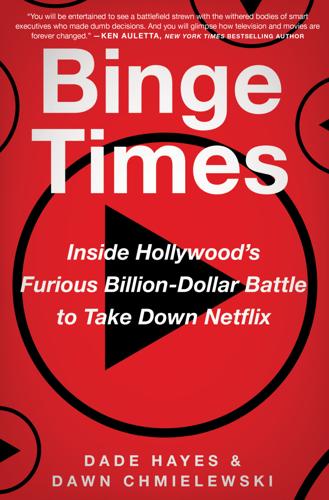
Binge Times: Inside Hollywood's Furious Billion-Dollar Battle to Take Down Netflix
by
Dade Hayes
and
Dawn Chmielewski
Published 18 Apr 2022
CHAPTER 6: LIVE FROM CUPERTINO Details of the Apple event are the authors’ firsthand account. The chapter also draws upon Dawn Chmielewski, “Apple Brings Out Oprah to Tout Apple TV+ Streaming TV but Leaves Viewers Guessing,” Forbes, March 25, 2019; Jessica E. Lessin and Amir Efrati, “Apple’s TV Push Stalls as Partners Hesitate,” Information, July 30, 2014; Jimmy Iovine interview with Ben Sisario, “Jimmy Iovine Knows Music and Tech. Here’s Why He’s Worried,” New York Times, December 30, 2019; Tim Cook remarks, Apple Keynote Event, March 25, 2019; Mark Lawson, “Apple TV+: Less a Rival to Netflix, More a Smug Religious Cult,” Guardian, March 25, 2019; Josef Adalian, “We Learned a Lot About Apple TV+ Today, but Not How Much It’ll Cost,” New York, March 25, 2019; Elahe Izadi, “Bono Is Sorry U2’s Album Automatically Showed Up on Your iTunes,” Washington Post, October 15, 2014.
…
Cue questioned how the company could sell a $7,000 device and make any profit on high-end screens that delivered low margins. Cook wondered about how Apple might build a business around a piece of glass in the living room. It didn’t fit with CEO Tim Cook’s vision for building out Apple’s ecosystem. The executive who first made his mark smoothing out Apple’s supply chain isn’t known for introducing groundbreaking new wares, but rather, for building an array of products and services around his predecessor’s creations. He’s a smart, steady operator—and that’s precisely what Apple needed after its iconic founder’s death. Cook’s calm, hands-clasped stage presence, leavened with a warm Alabama lilt, lacks the crackle of electricity that Jobs generated.
…
But here I am, bowing to the needs of Apple TV.” Apple immediately did damage control, telling other members of the press that Hanks had been misquoted. The star’s trademark sardonic wit had been misinterpreted by writer Hadley Freeman as sincere complaining, the company insisted. The Guardian stood by its story, which remained unchanged on its website. Then, on Today, Hanks seemed to channel Apple CEO Tim Cook. On the eve of the Apple TV+ launch, Cook raved to Wall Street analysts that its $5 price point was “amazing,” as was the offer of twelve months of free service to anyone buying an Apple device. “It’s a gift to our users,” he said, “and from a business point of view, we’re really proud of the content, we’d like as many people as possible to view it.”

Digital Wars: Apple, Google, Microsoft and the Battle for the Internet
by
Charles Arthur
Published 3 Mar 2012
Yet he would not be hurried; once again he managed the moment perfectly, releasing a statement to the board later that month saying that ‘I have always said if there ever came a day when I could no longer meet my duties and expectations as Apple’s CEO, I would be the first to let you know. Unfortunately, that day has come.’ He ‘strongly recommended’ that the board ‘execute our succession plan and name Tim Cook as CEO of Apple’. That Apple had a succession plan came as a surprise to analysts and shareholders who had repeatedly asked the company to specify what, if any, plans there were if Jobs were to fall under a bus, and been rebuffed. He asked to be made chairman (a role largely seen inside Apple as a sinecure). The board acquiesced to all his demands. ‘I believe Apple’s brightest and most innovative days are ahead of it,’ Jobs wrote.
…
The latter was the case with the town of Mildura, in the Australian Outback, which was shown miles from its correct location; Australian police issued a warning to people not to use Apple’s Maps to find it lest they die of heatstroke in the arid land. (The error was tracked down to a difference in the official Australian gazetteer, which gives place locations, between ‘Mildura’, the town, and ‘Mildura Rural City’, the nominal centre of a 22,000 square kilometre area including the town. Apple had used the latter. It was corrected within days.) A week after the release, and with Apple’s maps a laughing stock, Tim Cook – who had now been in unquestioned charge of Apple for a year – surprised the media with an effusive apology posted on the website.
…
He insisted, as had Rubinstein, that the screen was a tough polycarbonate, the same one that had been used for the fourth-generation iPod (the colour-screen devices launched in June, which were also discontinued the next month with the release of video-capable iPods). The message – problem in one batch, not many calls, same material, concerned users should buy a case – became the only one that Apple would put out. There was no off-the-record nudge and wink, no backroom briefing. Apple had its message and stuck to it. Later in October, during Apple’s quarterly results, chief operating officer Tim Cook was asked about the scratching issue. He sang from exactly the same hymn sheet: ‘We’ve had very, very few calls from customers,’ he said. ‘We don’t believe it’s a widespread issue. It’s made of the same material as the fourth-generation iPods.
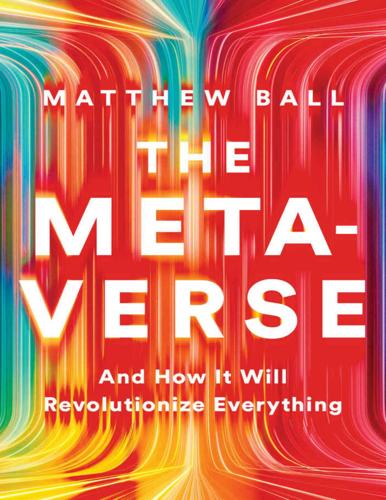
The Metaverse: And How It Will Revolutionize Everything
by
Matthew Ball
Published 18 Jul 2022
Tyler Wilde, “Epic Will Lose Over $300M on Epic Games Store Exclusives, Is Fine With That,” PC Gamer, April 10, 2021, accessed February 14, 2022, https://www.pcgamer.com/epic-games-store-exclusives-apple-lawsuit/. 8. Adi Robertson, “Tim Cook Faces Harsh Questions about the App Store from Judge in Fortnite Trial,” The Verge, May 21, 2021, accessed January 5, 2022, https://www.theverge.com/2021/5/21/22448023/epic-apple-fortnite-antitrust-lawsuit-judge-tim-cook-app-store-questions. 9. Nick Wingfield, “IPhone Software Sales Take Off: Apple’s Jobs,” Wall Street Journal, August 11, 2008. 10. John Gruber, “Google Announces Chrome for iPhone and iPad, Available Today,” Daring Fireball, June 28, 2021, accessed January 4, 2022, https://daringfireball.net/linked/2012/06/28/chrome-ios. 11.
…
In 2020, an estimated $700 billion was spent using iOS apps. However, less than 10% of this was billed by Apple. Of this 10%, nearly 70% was for games. Put differently, seven in every 100 dollars spent inside iPhone and iPad apps were for games, but 70 of every 100 dollars grossed by the App Store were from the category. Given that these devices are not gaming-focused, are rarely bought for this purpose, and that Apple offers almost none of the online services of a gaming platform, this figure often comes as a surprise. The judge overseeing Epic Games’ lawsuit against Apple famously told Apple CEO Tim Cook: “You don’t charge Wells Fargo, right? Or Bank of America?
…
Microsoft, “Microsoft to Acquire Activision Blizzard to Bring the Joy and Community of Gaming to Everyone, Across Every Device,” January 18, 2022, accessed February 2, 2022, https://news.microsoft.com/2022/01/18/microsoft-to-acquire-activision-blizzard-to-bring-the-joy-and-community-of-gaming-to-everyone-across-every-device/. 2. Adi Robertson, “Tim Cook Faces Harsh Questions about the App Store from Judge in Fortnite Trial,” The Verge, May 21, 2021, accessed January 4, 2022, https://www.theverge.com/2021/5/21/22448023/epic-apple-fortnite-antitrust-lawsuit-judge-tim-cook-app-store-questions. 3. Brad Smith, “Adapting Ahead of Regulation: A Principled Approach to App Stores,” Microsoft, February 9, 2022, accessed February 11, 2022, https://blogs.microsoft.com/on-the-issues/2022/02/09/open-app-store-principles-activision-blizzard/ 4.
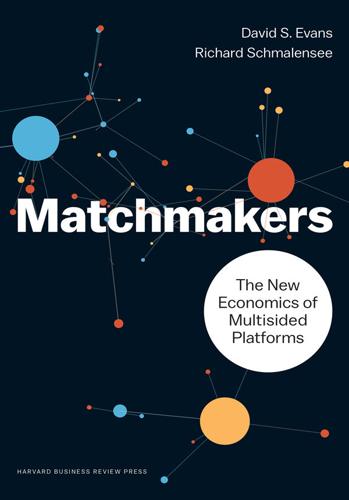
Matchmakers: The New Economics of Multisided Platforms
by
David S. Evans
and
Richard Schmalensee
Published 23 May 2016
A year after launch, out of 100 users, about 17 had ever tried it and out of those 17 just 5 used it when they could.20 Over the course of the year more people got the new iPhone model so that more people in total had Apple Pay set up on their phones and used it when they could. The number of people who probably had Apple Pay on their phones increased from roughly 2.7 million in November 2014 to 11.7 million in October 2015.21 As a result, the likelihood that an American adult would use Apple Pay at a terminal that accepted Apple Pay increased from 0.7 percent in November 2014 to 1.8 percent in October 2015.22 When it planned Apple Pay, the company had reasons to believe that more retailers would have the slick NFC terminals that Tim Cook showed at the September 2014 announcement.
…
As they make the journey toward the critical mass frontier, how can they know whether they have made a wrong turn and need to adjust, whether they should abandon the trip, or whether they are about to cross the frontier into the growth zone? Let’s follow one of the most successful matchmakers of all time on a recent trek. Chapter 10 Fizzle or Sizzle Making Smart Bets on New Matchmakers Forty-three minutes into the Apple live event, on September 9, 2014, after introducing the new iPhone 6, Tim Cook announced he was going to talk about an “entirely new category of service” for Apple.1 A thick wallet with cash and cards sticking out appeared on the screen behind him. “Our vision is to replace this.” According to Cook, people in the United States “scramble” for their cards about 200 million times a day, and they “go through what is a fairly antiquated payment process.”
…
When eBay attempted to expand its business into China, it had trouble attracting enough retailers and buyers to interest either side, and it had to give up its expansion plans. Apple Pay Organizes Support In 2014, there was a well-developed ecosystem for consumer payments in the United States. Along with cash and checks, there were credit and debit cards.6 The average person over the age of 18 had 2.4 cards. Many merchants accepted these cards; consumers could pay with them at millions of locations.7 Americans used them a lot, as Tim Cook pointed out: more than 200 million times a day for a total of $4 trillion of purchases a year.8 Debit and credit cards involve three major groups of businesses in the United States and many developed countries.

The Contrarian: Peter Thiel and Silicon Valley's Pursuit of Power
by
Max Chafkin
Published 14 Sep 2021
failed to attract: Owen Thomas, “Peter Thiel’s College Tour,” Valleywag, October 6, 2017, https://gawker.com/308252/peter-thiels-college-tour.gawker.com “but Thiel’s taken”: Owen Thomas “Peter Thiel Crush Alert,” Valleywag, November 27, 2007. out Tim Cook: Owen Thomas, “Is Apple COO Tim Cook Gay?” Valleywag, November 10, 2008, https://web.archive.org/web/20090119085309/http://valleywag.gawker.com/5082473/is-apple-coo-tim-cook-gay. that he was psychologically unstable: Ryan Holiday, Conspiracy: Peter Thiel, Hulk Hogan, Gawker, and the Anatomy of Intrigue (New York: Portfolio, 2018), 31. “Wal-Mart of Banking”: Peter Goodman and Gretchen Morgenson, “Saying Yes, WaMu Built Empire on Shaky Loans,” The New York Times, December 28, 2008, https://www.nytimes.com/2008/12/28/business/28wamu.html.
…
His closest advisers were there: Bannon, Pence, Priebus, Kushner, Stephen Miller, Ivanka Trump, plus Eric and Don Jr. But the real stars were the CEOs of the United States’ largest and most important tech companies, and their shepherd in all things Trump, Peter Thiel. He sat at Trump’s left elbow, with Pence on the other side. To his left was Apple’s Tim Cook. Arrayed around the table, interspersed between Trump’s advisers and children, was a group that included Facebook’s Sheryl Sandberg and Amazon’s Jeff Bezos, as well as the CEOs of Microsoft, Cisco, Oracle, Intel, and IBM. “These are monster companies,” Trump said, beaming before lavishing praise on Thiel.
…
Zuckerberg had taught himself Mandarin, and while hosting a top party official, he’d displayed copies of Xi’s book, saying that he’d been presenting them to employees as gifts. The following year, just as Trump’s anti-China rhetoric was propelling him to the front of the Republican field, Zuckerberg was laying it on thick with Xi in person. Over dinner at the White House with the Chinese leader—as well as President Obama, Apple’s Tim Cook, and Microsoft’s Satya Nadella—Zuckerberg, whose wife, Priscilla, was pregnant at the time, asked Xi to give his unborn child an honorary Chinese name. Xi declined. Zuckerberg had bent over backward in 2016 to avoid being seen as anti-conservative, but it was becoming increasingly clear that the conservatives had maneuvered him into helping Trump win the election.
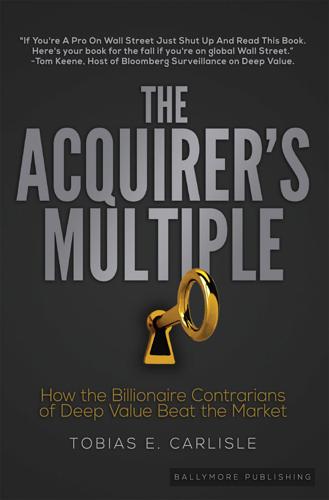
The Acquirer's Multiple: How the Billionaire Contrarians of Deep Value Beat the Market
by
Tobias E. Carlisle
Published 13 Oct 2017
Carl Icahn wrote an open letter to Apple’s chief executive, Tim Cook. Icahn asked for Apple to return cash through a $150 billion buyback. Icahn wrote in the letter:61 When we met, you agreed with us that the shares are undervalued. In our view, irrational undervaluation as dramatic as this is often a short-term anomaly. The timing for a larger buyback is still ripe, but the opportunity will not last forever. While the board’s actions to date ($60 billion share repurchase over three years) may seem like a large buyback, it is simply not large enough given that Apple currently holds $147 billion of cash on its balance sheet, and that it will generate $51 billion of [operating earnings] next year (Wall Street consensus forecast…With such an enormous valuation gap and such a massive amount of cash on the balance sheet, we find it difficult to imagine why the board would not move more aggressively to buy back stock by immediately announcing a $150 billion tender offer (financed with debt or a mix of debt and cash on the balance sheet).
…
“iPrefs: Unlocking Value.” Greenlight Capital, 2013. Available at https://www.greenlightcapital.com/905284.pdf. 60 David Einhorn. “iPrefs: Unlocking Value.” Greenlight Capital, 2013. Available at https://www.greenlightcapital.com/905284.pdf. 61 Carl Icahn, Letter to Tim Cook. Available at https://www.cnbc.com/2013/10/24/carl-icahns-letter-to-tim-cook.html 62 Carl C Icahn, Tweet, 11:21 AM, August 14, 2013. Available at https://twitter.com/Carl_C_Icahn/statuses/367350206993399808 63 David Einhorn. “iPrefs: Unlocking Value.” Greenlight Capital, 2013. Available at https://www.greenlightcapital.com/905284.pdf. 64 Carl C Icahn, Tweet, 11:12 AM, 11:13 AM, August 19, 2014.
…
In early 2013, Einhorn pushed Apple, Inc., then trading at $60, to pay out some of its huge pile of cash. Einhorn said that Apple’s $150 billion in cash was too much for a stock with only $60 billion in fixed assets. Apple could use it to buy “all but 17 companies in the S&P 500.”59 It earned next to no interest. It was better in the hands of shareholders. He said Apple’s stock price was discounted to the value of the cash, about $20 per share. Apple could “unlock significant shareholder value” by cutting the cash on its “bloated balance sheet.”60 Einhorn wasn’t the only activist to complain about Apple’s cash pile.
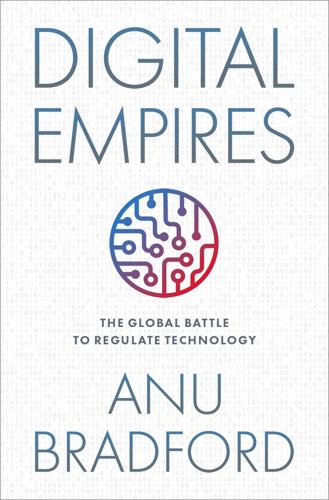
Digital Empires: The Global Battle to Regulate Technology
by
Anu Bradford
Published 25 Sep 2023
module=inline&pgtype=article. 37.See Steve Stecklow & Jeffrey Dastin, Special Report: Amazon Partnered With China Propaganda Arm, Reuters (Dec. 17, 2021), https://www.reuters.com/world/china/amazon-partnered-with-china-propaganda-arm-win-beijings-favor-document-shows-2021-12-17/. 38.See Tim Maurer & Garrett Hinck, Cloud Security: A Primer for Policymakers, Carnegie Endowment for Int’l Peace 20 (Aug. 2020), https://carnegieendowment.org/files/Maurer_Hinck_Cloud_Security-V3.pdf. 39.See Haibin Peng, Amazon to Expand China Cloud Business as Demand Swells, Yicai Global (Mar. 26, 2021), https://www.yicaiglobal.com/news/amazon-to-expand-china-cloud-business-as-demand-swells. 40.See Rita Liao, Kindle’s China Future in Doubt After Disappearing From Online Shelves, TechCrunch (Jan. 4, 2022), https://techcrunch.com/2022/01/04/amazon-kindle-china/; Stecklow & Dastin, supra note 37. 41.Lambert Bu, Violet Chung, Nick Leung, Kevin Wei Wang, Bruce Xia, & Chenan Xia, The Future of Digital Innovation in China: Megatrends Shaping One of the World’s Fastest Evolving Digital Ecosystems, McKinsey (Sep. 30, 2021), https://www.mckinsey.com/featured-insights/china/the-future-of-digital-innovation-in-china-megatrends-shaping-one-of-the-worlds-fastest-evolving-digital-ecosystems; Number of Internet Users in China From 2008 to 2021, Statista (May 12, 2022), https://www.statista.com/statistics/265140/number-of-internet-users-in-china/. 42.See Nicas, Zhong, & Wakabayashi, supra note 2. 43.See Isobel Asher Hamilton, China’s Grip on Apple Tightens as It Boots a Hong Kong Police-Tracking App and News App Quartz, Bus. Insider (Oct. 10, 2019), https://www.businessinsider.com/apple-boots-hong-kong-police-tracking-app-hkmap-live-2019-10?r=US&IR=T. 44.See James Clayton, Apple Takes Down Quran App in China, BBC (Oct. 15, 2021), https://www.bbc.com/news/technology-58921230. 45.See id. 46.See Madeline Farber, Apple CEO Tim Cook Really Does Not Like President Trump’s Travel Ban, Fortune (Feb. 9, 2017), https://fortune.com/2017/02/09/apple-ceo-tim-cook-donald-trump-travel-ban/. 47.See Jackson, supra note 7. 48.See id. 49.See Clive Thompson, Google’s China Problem (and China’s Google Problem), N.Y.
…
Insider (Oct. 10, 2019), https://www.businessinsider.com/major-us-tech-companies-blocked-from-operating-in-china-2019-5. 6.See Nicas, Zhong, & Wakabayashi, supra note 2. 7.See Sarah Jackson, Apple CEO Tim Cook Reportedly Signed a Secret $275 Billion Deal With China in 2016 to Skirt Challenges With Government Regulators, Bus. Insider (Dec. 7, 2021), https://www.businessinsider.com/apple-tim-cook-275-billion-china-deal-regulatory-crackdown-report-2021-12?r=US&IR=T. 8.See Vlad Savov, Apple’s Balancing Act in China Gets Trickier During Xi’s Crackdown, Bloomberg (Oct. 12, 2021), https://www.bloomberg.com/news/articles/2021-10-12/apple-s-china-balancing-act-gets-trickier-during-xi-s-crackdown?leadSource=uverify%20wall. 9.See Jackson, supra note 7. 10.See Paul Mozur, Daisuke Wakabayashi, & Nick Wingfield, Apple Opening Data Center in China to Comply With Cybersecurity Law, N.Y.
…
For example, as pro-democracy protests intensified in Hong Kong in 2019, Apple removed an app that helped the protesters track police activity.43 Apple’s app removal decisions in China are often difficult to reconcile with the company’s human rights rhetoric in the West. In 2021, Apple removed the Quran app in China.44 The app is used by millions of Muslims around the world but had to be removed according to Chinese censorship rules because it was “hosting illegal religious texts.”45 The removal of the Quran app stands in stark contrast to Apple’s vocal defense of the rights of Muslims in the US, including Apple CEO Tim Cook’s criticism of former president Trump’s 2017 decision to restrict the entry of individuals from several Muslim-majority countries to the US.46 In addition to having its App Store censored, Apple has also acceded to the Chinese government’s demands in operating Apple Maps.47 In 2015, China’s State Bureau of Surveying and Mapping ordered Apple Maps to make the contested Diaoyu Islands—or, as the Japanese call them, Senkaku Islands—look bigger on Apple Maps so that they seem more prominent to Chinese users.

The Future Is Faster Than You Think: How Converging Technologies Are Transforming Business, Industries, and Our Lives
by
Peter H. Diamandis
and
Steven Kotler
Published 28 Jan 2020
“it will be about health”: Lizzy Gurdus, “Tim Cook: Apple’s Greatest Contribution Will Be ‘About Health,’ ” CNBC, January 8, 2019. See: https://www.cnbc.com/2019/01/08/tim-cook-teases-new-apple-services-tied-to-health-care.html. Racing Apple are Google, Amazon, Facebook, Samsung, Baidu, Tencent, and others: CB Insights does an excellent job summarizing the big-tech healthcare ecosystem in these two reports: https://www.cbinsights.com/research/top-tech-companies-healthcare-investments-acquisitions/ and https://www.cbinsights.com/research/google-amazon-apple-health-insurance/. DIY Diagnostics Oura ring: See: https://ouraring.com.
…
AR is projected to create a $90 billion market: “For AR/VR 2.0 to Live, AR/VR 1.0 Must Die,” Digi-Capital, January 15, 2019. See: https://www.digi-capital.com/news/2019/01/for-ar-vr-2-0-to-live-ar-vr-1-0-must-die/. I regard [AR] as a big idea like the smartphone: David Phelan, “Apple CEO Tim Cook: As Brexit Hangs over UK, ‘Times Are Not Really Awful, There’s Some Great Things Happening’,” Independent. See: https://www.independent.co.uk/life-style/gadgets-and-tech/features/apple-tim-cook-boss-brexit-uk-theresa-may-number-10-interview-ustwo-a7574086.html. Nintendo released Pokémon GO: Lauren Munsi, “Pokémon GO Surpasses the 1 Billion Downloads Milestone,” Nintendo Wire, July 31, 2019.
…
For most of the last century, the healthcare industry was an uneasy partnership between big pharma, big government, and the full spectrum of doctors, nurses, and trained medical professionals. Now we’re witnessing an invasion. Many of the big technology companies are getting into this game, all intent on making an impact. “If you zoom out into the future,” Apple CEO Tim Cook recently said (in that same interview with the Independent where he talked about the potential of AR), “and ask what was Apple’s greatest contribution to mankind, it will be about health.” Racing Apple are Google, Amazon, Facebook, Samsung, Baidu, Tencent, and others. As we shall see in a moment, all of these companies have three clear advantages over the establishment: They’re already in your home, into artificial intelligence, and experts in collecting and analyzing your data.

The Wires of War: Technology and the Global Struggle for Power
by
Jacob Helberg
Published 11 Oct 2021
S&E Enterprise in a Global Context,” National Science Foundation, https://www.nsf.gov/statistics/2018/nsb20181/report/sections/overview/workers-with-s-eskills. 50 Jane Croft, “China plays catch-up with Europe and US in patents filing race,” Financial Times, July 9, 2019, https://www.ft.com/content/8ecf7464-8d05-11e9-b8cb-26a9caa9d67b. 51 “Charting a Course for Success: America’s Strategy for Stem Education,” National Science and Technology Council, December 2018, https://www.energy.gov/sites/prod/files/2019/05/f62/STEM-Education-Strategic-Plan-2018.pdf. 52 “2019 1st Quarter Manufacturers’ Outlook Survey,” National Association of Manufacturers, https://www.nam.org/2019-1st-quarter-manufacturers-outlook-survey/. 53 Glenn Leibowitz, “Apple CEO Tim Cook: This Is the No. 1 Reason We Make iPhones in China (It’s Not What You Think),” Inc., December 21, 2017, https://www.inc.com/glenn-leibowitz/apple-ceo-tim-cook-this-is-number-1-reason-we-make-iphones-in-china-its-not-what-you-think.html. 54 “Recommendations for Strengthening American Leadership in Industries of the Future.” 55 O’Mara, The Code, 389. 56 “The Global AI Talent Tracker,” MacroPolo, https://macropolo.org/digital-projects/the-global-ai-talent-tracker/. 57 Sara Salinas, “Mary Meeker just presented 294 slides on the future of the internet—read them here,” CNBC, May 30, 2018, https://www.cnbc.com/2018/05/30/mary-meekers-internet-trends-2018.html. 58 Ruchir Sharma, “The Comeback Nation,” Foreign Affairs, May 2020, https://www.foreignaffairs.com/articles/united-states/2020-03-31/comeback-nation. 59 Stuart Anderson, “Trump Cuts Legal Immigrants By Half and He’s Not Done Yet,” Forbes, July 21, 2020, https://www.forbes.com/sites/stuartanderson/2020/07/21/trump-cuts-legal-immigrants-by-half-and-hes-not-done-yet/#4446d3f46168. 60 “Suspension of Entry of Immigrants Who Present a Risk to the United States Labor Market During the Economic Recovery Following the 2019 Novel Coronavirus Outbreak,” The White House, April 22, 2020, https://www.federalregister.gov/documents/2020/04/27/2020-09068/suspension-of-entry-of-immigrants-who-present-a-risk-to-the-united-states-labor-market-during-the. 61 Laura Collins and Matthew Denhart, “Policy Recommendations: Modernizing Immigration for Today’s Realities,” George W.
…
FBI director James Comey publicly requested that Apple write code to bypass the phone’s security features. Eventually, a judge ordered Apple to do so. Apple refused. “Some would argue that building a backdoor for just one iPhone is a simple, clean-cut solution,” Tim Cook wrote in an open letter. “Ultimately, we fear that this demand would undermine the very freedoms and liberty our government is meant to protect.”29 In the debate between the government’s responsibility to protect Americans and the tech industry’s obligation to safeguard its customers’ privacy, each side wielded dueling metaphors. In Comey’s estimation, Apple selling encrypted iPhones to terrorists was no different than selling a kidnapper a closet that could never be opened.
…
In 2010, Time magazine named Facebook founder and CEO Mark Zuckerberg its Person of the Year.7 A couple of years later, the cover of Forbes featured Twitter and Square founder Jack Dorsey under the headline “America’s Best Entrepreneurs.”8 When I arrived in the Bay in the summer of 2014, Airbnb, which had started six years earlier as an air mattress in its founders’ San Francisco living room, had recently closed a $475 million funding round.9 Uber had just launched Uber Pool.10 Within a year, Fitbit had IPOed.11 Palantir, the data analytics company, was valued at $20 billion.12 The term “unicorn” had originally been coined to describe the rarity of billion-dollar start-ups; by mid-2015, there were over 130 unicorns.13 By the middle of the decade, 62 percent of adult Americans were on Zuckerberg’s Facebook.14 Sleek Apple Watches started appearing on the wrists of the well connected, and Amazon Echos began dotting living rooms around the United States. The optimism was electric. The decade was also a high-water mark in Washington’s love affair with Silicon Valley; this crystallized when Secretary of State Hillary Clinton told a group of tech executives, “Use me like an app!”15 Hardly a White House roundtable or commission was complete without a handful of Silicon Valley luminaries. State dinners at the White House were studded with tech titans—Zuckerberg, Apple’s Tim Cook, Netflix CEO Reed Hastings, Reid Hoffman of LinkedIn, Oracle chairman Larry Ellison.16 The so-called tech surge to overhaul the healthcare.gov website in late 2013 brought a growing number of technologists into government.17 Google seemed so completely intertwined with the Obama administration that some dubbed it the “Android administration,” after the Google mobile phone.18 Googlers flooded into the administration, and a steady stream of White House staffers left 1600 Pennsylvania Avenue in Washington for 1600 Amphitheatre Parkway in Mountain View.19 It had not yet become cliché—or ironic—to say that we were changing the world.

The Job: The Future of Work in the Modern Era
by
Ellen Ruppel Shell
Published 22 Oct 2018
“Bringing high-volume electronics” Kenneth Kraemer, Greg Linden, and Jason Dedrick, “Capturing Value in Global Networks: Apple’s iPad and iPhone,” Personal Computing Industry Center, University of California, Irvine, and Syracuse University School of Information Studies, July 2011, http://pcic.merage.uci.edu/papers/2011/Value_iPad_iPhone.pdf. jobs for Apple engineers, marketers, and sales staff Apple CEO Tim Cook claims that the company has created “two million” American jobs (https://apple.com/newsroom/2018/01/apple-accelerates-us-investment-job-creation), but only eighty thousand of the holders of these jobs are actual Apple employees. Almost 1.5 million are members of what he describes as the “developer community” who write the apps he says have “changed the world.”
…
Spence, “Job Market Signalling,” Quarterly Journal of Economics 87, no. 3 (1973): 355–74. “he more nearly resembles” Frederick Winslow Taylor, The Principles of Scientific Management (New York: Harper, 1911), 59. “began to stop having as many vocational kinds of skills” Shawn Langlois, “Tim Cook Says This Is the Real Reason Apple Products Are Made in China,” MarketWatch, December 21, 2015, http://www.marketwatch.com/story/tim-cook-apple-doesnt-make-its-products-in-china-because-its-cheaper-2015-12-20. a significant “negative impact” factor on their bottom line “The Boiling Point? The Skills Gap in the United States,” Deloitte and Manufacturing Institute, 2011, http://www.themanufacturinginstitute.org/~/media/A07730B2A798437D98501E798C2E13AA.ashx.
…
Given the rapid advances in factory automation, it’s unclear just how many people should be trained up for jobs in mass manufacturing, no matter how “advanced.” In May 2017, Apple CEO Tim Cook announced a $1 billion advanced-manufacturing fund to bolster US manufacturers by offering skills training, such as teaching people to write code to create apps. But the announcement came with a caveat: the cost of this program would be paid with “US money which we have to borrow to get.” Cook was intentionally reminding us that a substantial portion of Apple’s cash holdings is registered overseas and cannot be used in the United States unless repatriated under the US tax code, triggering the collection of income tax. Apple has kept earnings abroad and has borrowed money from its own foreign subsidiaries to pay dividends and make new investments.
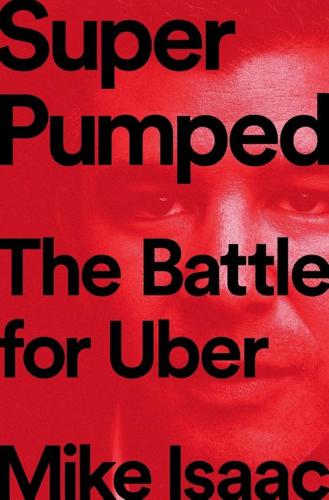
Super Pumped: The Battle for Uber
by
Mike Isaac
Published 2 Sep 2019
He and a few close colleagues helped to orchestrate some of the drug busts in New York, limited widespread fraud in China, and helped repair other areas in which Uber was bleeding money and facing liabilities. He was valuable. When he started in March 2014, Quentin’s team faced a very specific headache. Two years earlier, Apple released a version of its iOS mobile software that killed outside access to the unique identification number of every iPhone, the so-called IMEI number, or “international mobile equipment identity” number. The update was a hallmark of Tim Cook’s Apple. Unlike its rivals Google, Facebook, and Amazon, Apple’s business didn’t rely on hoovering up personal data from its customers. Facebook and Google were advertising companies, and as such relied on discovering every digital detail of its customers’ lives in order to target them with ads.
…
Uber’s method of identifying fraudsters made use of digital surveillance techniques common to Silicon Valley’s largest companies. That practice ran against some of Apple’s long-espoused principles, specifically an individual’s right to privacy. Steve Jobs had valued consumer privacy, but his successor, Tim Cook, was a fanatic. He believed Apple’s users should have complete control of their private digital lives. And if an Apple customer decided to wipe their iPhone clean of data, no one else—individuals, family members, companies, law enforcement—should be able to find a trace of that data on the device afterwards.
…
Should they address the issue with the public? And what if Apple started snooping around? Uber had recently submitted their newest iOS app build. What were they supposed to tell Apple if they found out Uber was breaking the rules? At first, nothing happened. But a few weeks later they got their answer: the App Store declined Uber’s latest software update. Quentin’s team had been caught. As the man in charge of the App Store, Eddy Cue had seen the best—and worst—of the startup world. Eddy Cue reported directly to Apple CEO Tim Cook, and no one else. He was the guy who saw rising startup stars before nearly anyone else in Silicon Valley, because their apps skyrocketed to the top of his charts.

Don't Be Evil: How Big Tech Betrayed Its Founding Principles--And All of US
by
Rana Foroohar
Published 5 Nov 2019
And to be fair, some companies, including Apple and, more recently, Google, are trying to get out in front of such efforts, by making tweaks to their own devices and systems that make it easier for people to track and limit their own technology usage. In 2018, in a speech to EU officials, Apple CEO Tim Cook admitted that there was, and is, a serious dark side to the Big Tech revolution. “We shouldn’t sugar-coat the consequences. This is surveillance. And these stockpiles of personal data only serve to enrich the companies that collect them.” Earlier that year, he admitted that he himself—like many Apple users—was spending way too much time on his phone, and that this was a problem.
…
In a speech at a European privacy commissioners conference in late October 2018, Apple CEO Tim Cook decried the “data industrial complex” made up of companies (including Google and Facebook) that make the vast majority of their money by keeping people online for as long as possible in order to garner as much of their personal data as possible. “Our own information—from the everyday to the deeply personal—is being weaponized against us with military efficiency,” said Cook, whose own company still makes most of its money from hardware. Apple has its own issues—from tax offshoring to legal battles over intellectual property infringement, which we will explore later.
…
Rana Foroohar, “Vivienne Ming: ‘The Professional Class Is About to Be Blindsided by AI,” Financial Times, July 27, 2018. 69. Sam Levin, “Facebook Told Advertisers It Can Identify Teens Feeling ‘Insecure’ and ‘Worthless,’ ” The Guardian, May 1, 2017. 70. Foroohar, “All I Want for Christmas Is a Digital Detox.” 71. Emily Bary, “Apple Never Meant for You to Spend So Much Time on Your Phone, Tim Cook Says,” MarketWatch, June 27, 2019. 72. Olivia Solon, “Ex-Facebook President Sean Parker: Site Made to Exploit Human ‘Vulnerability,’ ” The Guardian, November 9, 2017. Chapter 2: The Valley of the Kings 1. Rana Foroohar and Edward Luce, “Privacy as a Competitive Advantage,” Financial Times, October 16, 2017. 2.
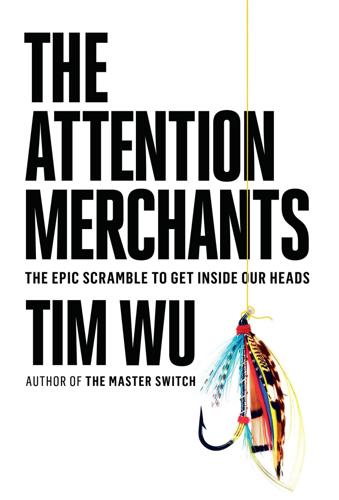
The Attention Merchants: The Epic Scramble to Get Inside Our Heads
by
Tim Wu
Published 14 May 2016
Matthew Panzarino, “Apple’s Tim Cook Delivers Blistering Speech on Encryption, Privacy,” TechCrunch, June 2, 2015, http://techcrunch.com/2015/06/02/apples-tim-cook-delivers-blistering-speech-on-encryption-privacy/. 2. Ibid. 3. Tim Cook, “Apple’s Commitment to Your Privacy,” Apple, http://www.apple.com/privacy/. 4. Robin Anderson, Consumer Culture and TV Programming (Boulder, CO: Westview Press, 1995). 5. Richard Serra and Carlota Fay Schoolman, “Television Delivers People,” Persistence of Vision—Volume 1: Monitoring the Media (1973), video. 6. Farhad Manjoo, “What Apple’s Tim Cook Overlooked in His Defense of Privacy,” New York Times, June 10, 2015, http://www.nytimes.com/2015/06/11/technology/what-apples-tim-cook-overlooked-in-his-defense-of-privacy.html?
…
Farhad Manjoo, “What Apple’s Tim Cook Overlooked in His Defense of Privacy,” New York Times, June 10, 2015, http://www.nytimes.com/2015/06/11/technology/what-apples-tim-cook-overlooked-in-his-defense-of-privacy.html?_r=0. 7. Lev Grossman, “Inside Facebook’s Plan to Wire the World,” Time, December 15, 2014, http://time.com/facebook-world-plan/. 8. iOS Developer Library, “What’s New in Safari,” Apple, https://developer.apple.com/library/ios/releasenotes/General/WhatsNewInSafari/Articles/Safari_9.html [website is no longer active]. 9. Joshua Benton, “A Blow for Mobile Advertising: The Next Version of Safari Will Let Users Block Ads on iPhones and iPads,” NiemanLab, June 10, 2015, http://www.niemanlab.org/2015/06/a-blow-for-mobile-advertising-the-next-version-of-safari-will-let-users-block-ads-on-iphones-and-ipads/. 10.
…
But the word became widely used in 2013 after Netflix began releasing the full seasons at once, prompting the Oxford Dictionary to add it to the language and also short-list it as “Word of the Year” (the ultimate winner was “selfie”). CHAPTER 28 WHO’S BOSS HERE? On June 1, 2015, Tim Cook, CEO of Apple, the world’s most valuable company, gave a speech at the annual dinner of a small Washington nonprofit named EPIC, the Electronic Privacy Information Center. Apple’s leaders almost never give speeches in Washington, making Cook’s appearance something of a surprise; though to be fair, he didn’t actually show up at the dinner, but rather videoconferenced his way in. All the same, even more surprising was what he had to say.

The Perfect Weapon: War, Sabotage, and Fear in the Cyber Age
by
David E. Sanger
Published 18 Jun 2018
Spy Agencies,” Washington Post, November 20, 2017, www.washingtonpost.com/news/business/wp/2017/11/20/amazon-launches-new-cloud-storage-service-for-u-s-spy-agencies/?utm_term=.8dcf7ac21a9f. Cook’s social and political intuition: Todd Frankel, “The Roots of Tim Cook’s Activism Lie in Rural Alabama,” Washington Post, March 7, 2016, www.washingtonpost.com/news/the-switch/wp/2016/03/07/in-rural-alabama-the-activist-roots-of-apples-tim-cook/?utm_term=.5f670fd2354d. “more than 5½ years”: Computer-security experts question that figure, because Apple does not fully realize how quickly the NSA’s supercomputers can crack codes. the agency developed the “Clipper chip”: Steven Levy, “Battle of the Clipper Chip,” New York Times, June 12, 1994, www.nytimes.com/1994/06/12/magazine/battle-of-the-clipper-chip.html.
…
But the real irony was that as tech firms publicly protested the NSA’s intrusions into their networks—Microsoft, IBM, and AT&T among them—they were privately vying for the hugely profitable business of managing the intelligence community’s data. * * * — Tim Cook, the quiet, almost ascetic chief executive of Apple, rose in the company as a counterweight to Steve Jobs. Jobs was the showman, Cook the understated strategist. Jobs erupted when products didn’t look right or politics limited the ideal technological solution; Cook lacked Jobs’s intuitive sense of what made a product feel distinctly like an Apple product, but what he lacked as a designer he made up for with his considerable geopolitical sensibility. Whereas Jobs was no ideologue and rarely dug deeply into the question of Apple’s place in society, Cook seemed as comfortable making a civil-liberties argument as a technological one.
…
If it wouldn’t be tolerated in the physical world, he said, why should it be tolerated in the digital world? From the other coast, Tim Cook had an answer: the apartment keys and trunk keys belonged to the owner of the apartment and the car, not to the manufacturer of their locks. “It’s our job to provide you with the tools to lock up your stuff,” Cook said. At Apple and Google, company executives told me that Washington had brought these changes on themselves. Because the NSA had failed to police their own insiders, the world was demanding that Apple prove their data was secure, and it was up to Apple to do so. Naturally the government saw this as a deliberate dodge.

How Boards Work: And How They Can Work Better in a Chaotic World
by
Dambisa Moyo
Published 3 May 2021
Some corporations launched public initiatives to help Black people progress within their company ranks, while others created multimillion-dollar funds that target minorities. On June 3, 2020, Goldman Sachs established a $10 million fund to help address racial and economic injustice. SoftBank, a Japanese company focused on technology, launched a $100 million fund to invest in start-ups led by Black Americans and people of color. CEO Tim Cook announced the investment of $100 million in Apple’s racial equity and justice initiative. Beyond this, many executives spoke of the need to educate themselves about the realities of daily racial injustice. However, the global nature and scale of the demonstrations mean that corporations must move from large proclamations and statements to actions—from tell to show.
…
Global technological tensions and competition necessarily throw up questions of surveillance, counterterrorism, and regulatory creep. Boards and management often find these to be among the hardest questions to answer, as they can pit moral and ethical views against the imperative to grow the business and achieve commercial success. Take the matter of data use. At a conference in Orlando, Florida, in 2019, Tim Cook, the CEO of Apple, declared data privacy to be the most important issue of the century. Western society assumes that an individual’s personal information is theirs and theirs alone and should be protected. This notion was enshrined in the European Union’s 2016 General Data Protection Regulation (GDPR), which forced companies to reevaluate their data management.
…
May 6, 2019. https://tax.thomsonreuters.com/news/chairman-clayton-companies-should-provide-more-disclosure-on-human-capital-management/. Thorndike, William, Jr. The Outsiders: Eight Unconventional CEOs and Their Radically Rational Blueprint for Success. Boston: Harvard Business School Publishing, 2012. 350.org. “About 350.” https://350.org/about/. Tibken, Shara. “Tim Cook Says Some Tech Regulation Likely Needs to Happen.” CNET, October 2, 2018. www.cnet.com/news/tim-cook-talks-privacy-regulation-congress-alex-jones-china-during-interview/. Tonello, Matteo. “Separation of Chair and CEO Roles.” Harvard Law School Forum on Corporate Governance, September 1, 2001. https://corpgov.law.harvard.edu/2011/09/01/separation-of-chair-and-ceo-roles/.
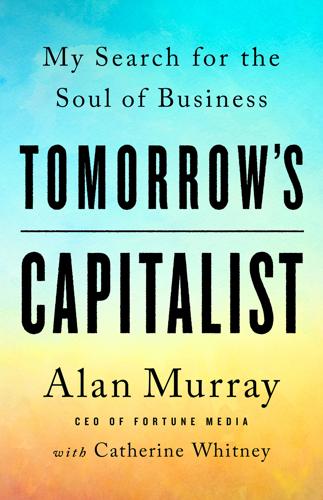
Tomorrow's Capitalist: My Search for the Soul of Business
by
Alan Murray
Published 15 Dec 2022
They asked a nationally representative group of people about their intent to buy Apple products in the near future. Some of the respondents were first randomly shown a statement that the Apple CEO Tim Cook had made criticizing Indiana’s religious freedom bill as discriminatory to LGBTQ individuals. Other respondents randomly received a generic statement about Cook’s management philosophy. And some respondents were provided with no additional statement. Those who heard about Cook’s activism expressed a significantly higher intent to buy Apple products in the near future than those in the other two groups. The authors concluded, “Learning about Cook’s activism increased intent to purchase among supporters of same-sex marriage but did not erode intent among its opponents.
…
They want to make sure the company they are in is actually committed to improving the state of the world. What is going to happen is that you have these very young people getting involved with next-generation technologies, and they are going to use it to create this [new] industrial revolution, which is actually about saving the planet.” Apple CEO Tim Cook, speaking to my colleague Adam Lashinsky at a CEO event in San Francisco in 2018, put it this way: “For Apple, we have always been about changing the world. It became clear to me a number of years ago that you don’t do that by staying quiet on things that matter. And so, for us, that’s been the driving issue.… I don’t think business should only deal in commercial things.
…
CNBC, December 16, 2019. 9. Letter from Josh Bolten, Business Roundtable, to Senator Elizabeth Warren, October 21, 2019. https://www.boston.com/wp-content/uploads/2020/09/2019.10.03-Response-to -Letter-to-Business-Round-Table-re-stakeholder-commitments-and-the-Accountable -Capitalism-Act.pdf. 10. Jonathan Vanian. “Apple CEO Tim Cook on Data Privacy, Immigration, and Speaking Out.” Fortune, June 25, 2018. 11. Leadership Next interview, Alan Murray and Ellen McGirt with Chip Bergh. 12. Alan Murray and David Meyer. “Satya Nadella Explains Microsoft’s Climate Responsibilities.” CEO Daily/Fortune, January 24, 2020. 13. Alan Murray and David Meyer.
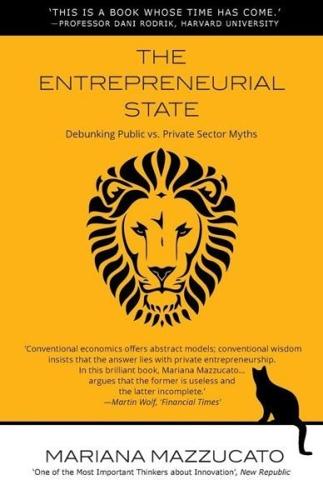
The Entrepreneurial State: Debunking Public vs. Private Sector Myths
by
Mariana Mazzucato
Published 1 Jan 2011
Lewis, J. 2007. ‘Technology Acquisition and Innovation in the Developing World: Wind Turbine Development in China and India’. Studies in Comparative International Development 32, nos. 3–4: 208–32. Liedtke, M. 2012. ‘Apple Cash: CEO Tim Cook Says Company Has More Than It Needs’. Huffington Post, 23 February. Available online at http://www.huffingtonpost.com/2012/02/23/apple-cash-ceo-tim-cook_n_1297897.html?view=print&comm_ref=false (accessed 19 July 2012). Lim, B. and S. Rabinovitch. 2010. ‘China Mulls $1.5 Trillion Strategic Industries Boost: Sources’. Reuters, 3 December. Available online at http://www.reuters.com/article/2010/12/03/us-china-economy-investmentidUSTRE6B16U920101203 (accessed 24 July 2012).
…
To put this in greater perspective, the average employee at Foxconn earns $4,622 annually, meaning the top 9 executives earned the same amount of money as 95,000 workers did in 2011 and 89,000 workers did in 2012. Borrowing the method that Shapiro used, one could factor that the top 9 Apple executives are expected to earn the same amount of money as roughly 17,600 of the company’s US retail employees did in 2011 (64 per cent of the total) and 15,000 (55 per cent of the total) in 2012 (Shapiro 2012).2 When Apple’s CEO, Tim Cook, announced in February 2012 that the company has more cash ($98 billion) than it currently needs to sustain its operations, many analysts and shareholders expected Apple to return a portion of its record-high cash to its shareholders (Liedtke 2012). The top executives were intrigued by the question of what to do with the excess sitting cash, since the company had not been distributing dividends or repurchasing its own stocks during Steve Jobs’ tenure.
…
‘Display’s the Thing: The Real Stakes in the Conflict over High Resolution Displays’. Berkeley Roundtable on the International Economy (BRIE) Working Paper no. 52. Available online at http://brie.berkeley.edu/publications/WP%2052.pdf (accessed 24 January 2013). Haslam, K. 2012. ‘Tim Cook’s Disastrous First Appointment as CEO’. Macworld, 30 October. Available online at http://www.macworld.co.uk/apple-business/news/?newsid=3407940&pagtype=allchandate (accessed 22 January 2013). Henderson, J. 2004. ‘UT Professor, 81, Is Mired in Patent Lawsuit’. Houston Chronicle, 5 June. Available online at http://www.chron.com/default/article/UT-professor-81-is-mired-in-patent-lawsuit-1662323.php (accessed 11 February 2013).
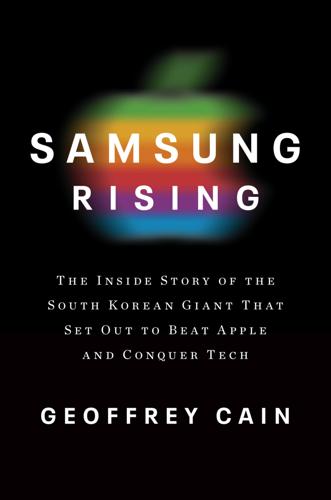
Samsung Rising: The Inside Story of the South Korean Giant That Set Out to Beat Apple and Conquer Tech
by
Geoffrey Cain
Published 15 Mar 2020
Jobs was prepared to sue. Tim Cook, as Apple’s supply chain expert, was wary of endangering the relationship with a supplier that Apple depended on. When Jay Lee visited the Cupertino campus, Jobs and Cook expressed their concerns to him. Apple drafted a proposal to license some of its patents to Samsung for $30 per smartphone and $40 per tablet, with a 20 percent discount for cross-licensing Samsung’s portfolio back to Apple. For 2010 that revenue would have come to $250 million. In the end, Samsung’s lawyers reversed the offer. Since Apple was copying Samsung’s patents, they argued, Apple had to pay Samsung.
…
The commercial was more a brand-building exercise than an effort to sell more phones, poking fun at Apple’s lawsuit. Samsung was riding a powerful wave of positive publicity. Forbes described the ad as “a barrage of not-so-subtle jabs at competitor Apple Inc.” Phil Schiller, Apple’s senior vice president for marketing, was livid at Samsung’s marketing campaign. He shot an email to Apple’s ad agency, TBWA\Chiat\Day, with a link to the Wall Street Journal article. “We have a lot of work to do to turn this around,” he wrote. He emailed Apple CEO Tim Cook that Apple “may need to start a search for a new agency.” “We feel it too and it hurts,” wrote an advertising executive at TBWA back to Schiller.
…
She later decided that the jury had miscalculated Samsung’s damages and cut Apple’s award down to $600 million. The legal war between the two companies, however, was far from over. A second trial between Apple and Samsung was already in the works. Samsung took home some legal victories as well in the UK, Japan, and South Korea. * * * — ON THE MORNING OF September 12, 2012, Apple CEO Tim Cook took the stage in Cupertino for his first product launch as successor to the late Steve Jobs. “Today we’re taking it to the next level,” he said. After years of waiting to deliver something dramatically new, Apple was releasing the iPhone 5.
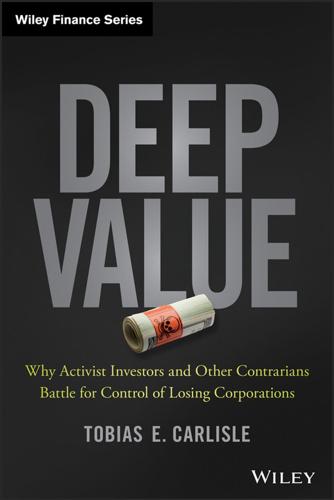
Deep Value
by
Tobias E. Carlisle
Published 19 Aug 2014
Applied Deep Value 207 Einhorn argued that, at a 10 percent cost of capital, the cash represented an opportunity cost of close to $13.7 billion per year, or $14 in earnings per share. His solution was for Apple to issue to existing shareholders “iPrefs”— high-yielding preference shares—which, said Einhorn, would allow Apple to “unlock significant shareholder value” by reducing the cash on its “bloated balance sheet.”18 He wasn’t the only activist to complain about Apple’s huge cash stockpile. Shortly after Einhorn unveiled his idea at the Ira W. Sohn Conference, Icahn would also propose in an open letter to Tim Cook, Apple’s CEO, that Apple return cash through a $150 billion buyback:19 When we met, you agreed with us that the shares are undervalued.
…
If no activist emerges to improve the unexploited intrinsic value, other corrective forces act on the market price to generate excellent returns in the meantime. The coda to Einhorn’s and Icahn’s campaigns to have Apple pay out $150 billion in excess capital clearly demonstrates the power of this idea. After both had prodded Apple for 6 months, writing letters and meeting with Apple chief executive Tim Cook, Apple initiated a buyback in 2013. By February 2014 it had repurchased $40 billion of stock, a record amount for any company over a 12-month span.21 Shortly afterward, Icahn withdrew his plan to have the company undertake the bigger buyback he had proposed, writing in an open letter to Apple shareholders, “We see no reason to persist with our nonbinding proposal, especially when the company is already so close to fulfilling our requested repurchase target.”22 After Icahn had withdrawn his plan, Apple announced in April that it would in fact 210 DEEP VALUE return $130 billion in capital through an increased buyback and a hike in its dividend.
…
Greenlight Capital, 2013. Available at https://www.greenlightcapital.com/905284.pdf. 17. Ibid. 18. Ibid. 19. Carl Icahn, “Letter to Tim Cook.” Icahn Enterprises, October 8, 2013. Available at http://www.scribd.com/doc/178753981/Carl-Icahn-s-Letter-To-Apple-s-Tim-Cook. 20. Einhorn, 2013. 21. David Benoit. “Icahn Ends Apple Push With Hefty Paper Profit.” The Wall Street Journal, February 10, 2014. Applied Deep Value 215 22. Steven Russolillo. “Carl Icahn: ‘Agree Completely’ With Apple’s Bigger Buyback.” The Wall Street Journal, April 23, 2014. 23. Benoit, 2014. 24. Benjamin Graham and David Dodd. Security Analysis.
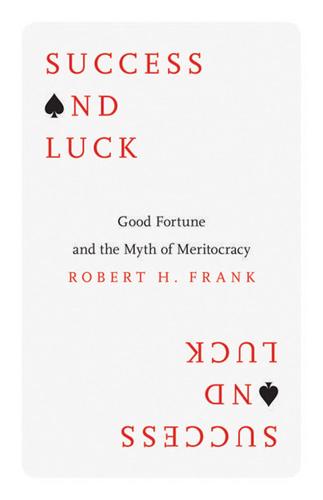
Success and Luck: Good Fortune and the Myth of Meritocracy
by
Robert H. Frank
Published 31 Mar 2016
Adam Smith, The Wealth of Nations, part 4, section 3, Library of Economics and Liberty, http://www.econlib.org/library/Smith/smWN.html. 8. Adam Satariano, Peter Burrows, and Brad Stone, “Scott Forstall, the Sorcerer’s Apprentice at Apple,” Bloomberg Business, October 12, 2011, http://www.bloomberg.com/bw/magazine/scott-forstall-the-sorcerers-apprentice-at-apple-10122011.html. 9. Jay Yarrow, “Tim Cook: Why I Fired Scott Forstall,” Business Insider, December 6, 2012, http://www.businessinsider.com/tim-cook-why-i-fired-scott-forstall-2012–12. 10. Robert D. Putnam, Our Kids: The American Dream in Crisis, New York: Simon and Shuster, 2015. 11. M. A. Fox, B. A. Connolly, and T.
…
Yet few press accounts of him during his heyday at the company failed to mention that he was unusually ambitious. According to Bloomberg Business, some associates described him off the record as someone who “routinely takes credit for collaborative successes, deflects blame for mistakes.”8 When Forstall was dismissed in October 2012, Apple CEO Tim Cook explained that the move was necessary to preserve the company’s collaborative culture.9 Does willingness to acknowledge the contributions of others—to admit that your success stemmed in part from what others did—affect your attractiveness as a teammate? My experience with former Fed chairman Ben Bernanke, with whom I had the privilege of coauthoring an introductory economics textbook, suggests that it does.
…
Perceptions that someone is “too ambitious” may sometimes be rooted in jealousy or envy, but unusually ambitious individuals can threaten team cohesion even in the absence of such emotions. Many believe, for example, that former Apple senior vice president Scott Forstall was discharged from his post for that reason. Forstall had been the chief architect of the iOS operating system that powers the iPhone and iPad, whose meteoric sales growth made Apple the most profitable company in history. He had been the longtime protégé of Apple cofounder Steve Jobs, was universally acknowledged as an extraordinary engineering talent, and was sometimes mentioned as a potential future Apple CEO. Yet few press accounts of him during his heyday at the company failed to mention that he was unusually ambitious.
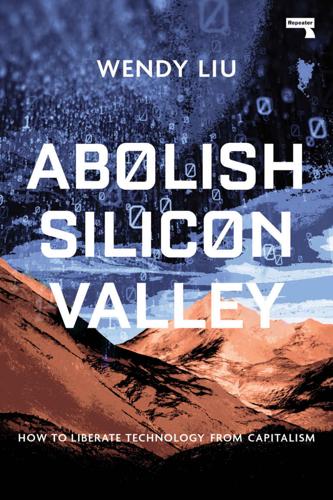
Abolish Silicon Valley: How to Liberate Technology From Capitalism
by
Wendy Liu
Published 22 Mar 2020
For insight into the psychological aspects of the bubble, Mel and Patricia Krantzler’s Down and Out in Silicon Valley: The High Cost of the High Tech Dream (Prometheus, 2002) is excellent reading. 4 For commentary on this phenomenon, see, for example, “The iPhone X Proves How Tim Cook’s Apple Is Embracing the Rich” by Paris Marx for The Bold Italic, published September 25, 2017, at https://thebolditalic.com/the-iphone-x-proves-how-tim-cooks-apple-is-embracing-the-rich-8a0270d8fc91. 5 OK, there are only two so far — Lime and Bird — but that’s still two too many for my liking. See, for example, “Lime, A Scooter Startup That Barely Existed Two Years Ago, Now Going To Be Worth $2 billion” by Theodore Schleifer for Vox, published January 15, 2019, at https://www.vox.com/2019/1/15/18184756/lime-scooter-fundraising-valuation-two-billion. 6 I’m mostly referring to the SoftBank Vision Fund, which has poured incredible amounts of money into companies like the gloriously overvalued (and still unprofitable) WeWork, but SoftBank is only the most egregious example of the trend.
…
The mind conjures images of Facebook CEO Mark Zuckerberg robotically testifying in front of Congress,2 or Uber co-founder Travis Kalanick lecturing an Uber driver about personal responsibility.3 We associate Google with its founders Larry Page and Sergey Brin; Twitter with CEO Jack Dorsey; Apple with founder Steve Jobs and current CEO Tim Cook; Microsoft with founder Bill Gates. As a result, we’re tempted to believe that the problems of the industry originate with the specific individuals at the helm, who are somehow uniquely bad, and that if we simply swapped in some people with better ethical codes, everything would be fixed.
…
There’s something eerily timeless about Kafka, and when I came across these words (penned circa 1920), I was a little spooked at how precisely it captured the way I felt during the worst days of my startup. 2 See, for example, “Trump hosting roundtable with Silicon Valley’s tech leaders” by Rebecca Shabad for CBS News, published December 14, 2016, at https://www.cbsnews.com/news/trump-tech-leaders-meeting-ibm-tim-cook-others/. The list of attendees included executives from Microsoft, Facebook, Google, Apple, Amazon, IBM, and Tesla. 3 See, for example, “Google Gets a Seat on the Trump Transition Team” by David Dayen for The Intercept, published November 15, 2016, at https://theintercept.com/2016/11/15/google-gets-a-seat-on-the-trump-transition-team/. 4 See “Y Combinator boss Sam Altman says he’s not going to cut ties with Peter Thiel for supporting Donald Trump” by Peter Kafka (probably no relation) on October 16, 2016, for Recode, at https://www.vox.com/2016/10/16/13302120/y-combinator-sam-altman-peter-thiel-donald-trump.
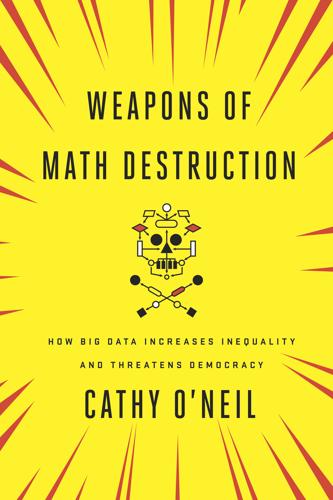
Weapons of Math Destruction: How Big Data Increases Inequality and Threatens Democracy
by
Cathy O'Neil
Published 5 Sep 2016
“In terms of business competitiveness”: Businessweek Archives, “Same Sex Benefits: Where IBM Goes, Others May Follow,” Bloomberg Business, October 6, 1996, www.bloomberg.com/bw/stories/1996-10-06/same-sex-benefits-where-ibm-goes-others-may-follow. a gay man, Tim Cook: Timothy Donald Cook, “Tim Cook Speaks Up,” Bloomberg Business, October 30, 2014, www.bloomberg.com/news/articles/2014-10-30/tim-cook-speaks-up. Apple, the most valuable company: Verne Kopytoff, “Apple: The First $700 Billion Company,” Fortune, February 10, 2015, http://fortune.com/2015/02/10/apple-the-first-700-billion-company/. In 1907 alone, 3,242 miners died: MSHA, “Coal Fatalities for 1900 Through 2014,” US Department of Labor, accessed January 9, 2016, www.msha.gov/stats/centurystats/coalstats.asp.
…
Since then, gays and lesbians have registered impressive progress in many domains. This progress is uneven, of course. Many gay, lesbian, and transgender Americans are still victims of prejudice, violence, and WMDs. This is especially true among poor and minority populations. Still, as I write this, a gay man, Tim Cook, is the chief executive of Apple, the most valuable company on earth. And if he so chooses, he has the constitutional right to marry a man. Now that we’ve seen how corporations can move decisively to right a wrong in their hiring algorithms, why can’t they make similar adjustments to the mathematical models wreaking havoc on our society, the WMDs?
…
By doing this, we have unwittingly built the greatest-ever training corpus for natural-language machines. As we turned from paper to e-mail and social networks, machines could study our words, compare them to others, and gather something about their context. The progress has been fast and dramatic. As late as 2011, Apple underwhelmed most of techdom with its natural-language “personal assistant,” Siri. The technology was conversant only in certain areas, and it made laughable mistakes. Most people I know found it near useless. But now I hear people talking to their phones all the time, asking for the weather report, sports scores, or directions.
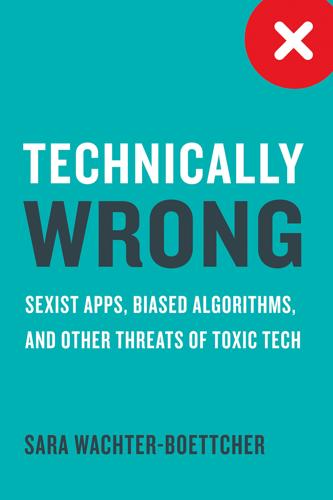
Technically Wrong: Sexist Apps, Biased Algorithms, and Other Threats of Toxic Tech
by
Sara Wachter-Boettcher
Published 9 Oct 2017
Amélie Lamont, “Not a Black Chair,” Medium, March 14, 2016, https://medium.com/@amelielamont/not-a-black-chair-8a8e7e2b9140#.gpk28w3fp. 3. Erica Joy, “The Other Side of Diversity,” Medium, November 4, 2014, https://medium.com/this-is-hard/the-other-side-of-diversity-1bb3de2f053e#.xn7th3cbt. 4. Megan Rose Dickey, “Apple’s Tim Cook on Latest Diversity Numbers: There’s ‘a Lot More Work to be Done,’” TechCrunch, August 13, 2015, https://techcrunch.com/2015/08/13/apples-tim-cook-on-latest-diversity-numbers-theres-a-lot-more-work-to-be-done. 5. Maxine Williams, “Facebook Diversity Update: Positive Hiring Trends Show Progress,” Facebook Newsroom, July 14, 2016, http://newsroom.fb.com/news/2016/07/facebook-diversity-update-positive-hiring-trends-show-progress. 6.
…
CRAWLING TOWARD REPRESENTATION To be fair, I’m not saying tech isn’t doing anything to improve diversity. You can find annual diversity reports from most of the big companies now, highlighting shifts in employee demographics and glossy profiles of staff from underrepresented groups. Whenever a new one comes out, though, it tends to read something like this one, from Apple CEO Tim Cook, in 2015: We are proud of the progress we’ve made, and our commitment to diversity is unwavering. But we know there is a lot more work to be done.4 Or this one, from Facebook’s global director of diversity, Maxine Williams, in 2016: Over the past few years, we have been working hard to increase diversity at Facebook through a variety of internal and external programs and partnerships.
…
And the title “Doctor” was coded as male.2 Or in March of 2016, when JAMA Internal Medicine released a study showing that the artificial intelligence built into smartphones from Apple, Samsung, Google, and Microsoft isn’t programmed to help during a crisis. The phones’ personal assistants didn’t understand words like “rape,” or “my husband is hitting me.” In fact, instead of doing even a simple web search, Siri—Apple’s product—cracked jokes and mocked users.3 It wasn’t the first time. Back in 2011, if you told Siri you were thinking about shooting yourself, it would give you directions to a gun store. After getting bad press, Apple partnered with the National Suicide Prevention Lifeline to offer users help when they said something that Siri identified as suicidal.
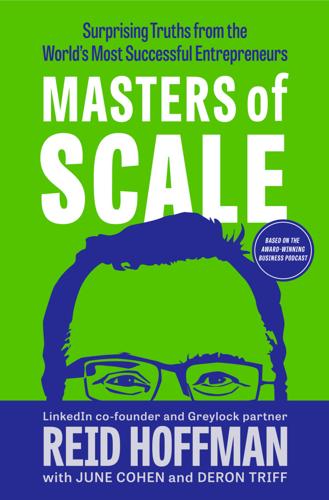
Masters of Scale: Surprising Truths From the World's Most Successful Entrepreneurs
by
Reid Hoffman
,
June Cohen
and
Deron Triff
Published 14 Oct 2021
When Burberry stores started seeing double-digit growth in sales, it became clear that Angela’s leadership style was equal parts vision and substance. * * * — Her success at Burberry was what got Tim Cook’s attention. Angela may have been hesitant to sign on to Apple at first, but she couldn’t resist the challenge Tim laid out for her. From its inception, the Apple Store had almost mythic status as a mecca for Apple superfans. But as the brand grew more and more popular, Apple’s customer base had grown and changed, too. The challenge now was to maintain the stores’ allure for techies while also appealing to more mainstream crowds. To pull that off would require a big vision.
…
And she’d regularly rotate in appearances by different senior execs from Apple’s offices across the globe, to build that sense of one cohesive team. Angela also worked to create more human-to-human contact across Apple’s network of retail stores: for example, through apps designed to make it easier for people working in different stores to connect and solve problems together. The mission she brought to the Apple Stores started with a question inspired by a quote from Tim Cook. Says Angela, “Tim used to always say, ‘Apple Retail has always been about so much more than just selling.’ So if it’s not just about selling, then what is it about?”
…
The change was so dramatic, Angela herself was declared by the British press to be the highest-paid executive in the United Kingdom. She and her family had settled happily into their life in the United Kingdom, and she had just shared a plan with her board—to double revenue again, over the next five years. And then Apple called. Or the search firm anyway. Apple CEO Tim Cook felt she should become Apple’s next Head of Retail. “And I said, ‘I’m honored, absolutely honored to be considered, but I have the greatest job in the world and I’m on a mission. So, no, thank you.’ ” Six months later, they called again. “And I said, ‘Look, it’s only been six months and nothing has changed.
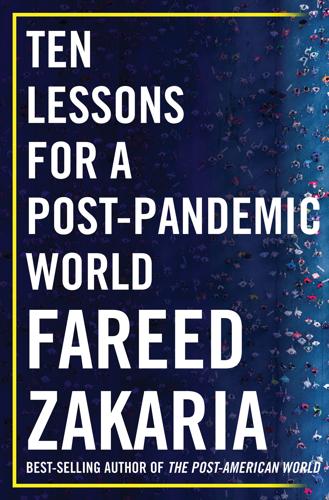
Ten Lessons for a Post-Pandemic World
by
Fareed Zakaria
Published 5 Oct 2020
(In fact, the company soon filed for bankruptcy, and as of this writing was searching for a new owner.) Apple faced a similar dilemma. In 2012, the company’s CEO, Tim Cook, proudly announced on prime-time television that its new computer would be manufactured in the United States. It was to be the first Apple product in many years bearing the words, “Assembled in USA.” But the plan to make Macs in Austin, Texas, turned out to be far more difficult than imagined, and sales of the computer were delayed by several months. The main obstacle ended up being something tiny, a custom screw that American manufacturers couldn’t produce enough of and that Apple ended up having to order from China.
…
Meanwhile, small wearable devices can constantly monitor a person’s vital functions and transmit the data to the cloud, where it can be analyzed and, if something irregular is detected, sent to medical specialists. Apple CEO Tim Cook has said he believes that his company’s “greatest contribution to mankind . . . will be about health”—through the increasingly sophisticated medical use of products like the Apple Watch. Ideally, the pandemic-induced move online will shift the entire focus of medicine away from treating diseases and toward preventing them, which is a far more effective way to keep us all healthy.
…
PublicationDocumentID=6322. 104 “25% of our workforce”: Sonal Khetarpal, “Post-COVID, 75% of 4.5 Lakh TCS Employees to Permanently Work from Home by ’25; from 20%,” Business Today India, April 30, 2020. 104 issued a correction: Saunak Chowdhury, “TCS Refutes Claims of 75% Employees Working from Home Post Lock-Down,” Indian Wire, April 28, 2020. 104 450,000 employees: Tata Consultancy Services, “About Us,” https://www.tcs.com/about-us. 106 up one billion: Jeff Becker and Arielle Trzcinski, “US Virtual Care Visits to Soar to More Than 1 Billion,” Forrester Analytics, April 10, 2020, https://go.forrester.com/press-newsroom/us-virtual-care-visits-to-soar-to-more-than-1-billion/. 106 “greatest contribution to mankind”: Lizzy Gurdus, “Tim Cook: Apple’s Greatest Contribution Will Be ‘About Health,’ ” CNBC Mad Money, January 8, 2019. 107 97% accuracy: “Using Artificial Intelligence to Classify Lung Cancer Types, Predict Mutations,” National Cancer Institute, October 10, 2018, https://www.cancer.gov/news-events/cancer-currents-blog/2018/artificial-intelligence-lung-cancer-classification. 107 up to 11% fewer false positives: D.

The Best Interface Is No Interface: The Simple Path to Brilliant Technology (Voices That Matter)
by
Golden Krishna
Published 10 Feb 2015
Adam Lashinsky, “Amazon’s Jeff Bezos: The Ultimate Disrupter,” Fortune, November 16, 2012. http://fortune.com/2012/11/16/amazons-jeff-bezos-the-ultimate-disrupter/ 3 “Cook: It’s never been stronger. Innovation is so deeply embedded in Apple’s culture. The boldness, ambition, belief there aren’t limits, a desire to make the very best products in the world. It’s the strongest ever. It’s in the DNA of the company.” “Live Recap: Apple CEO Tim Cook Speaks at Goldman Conference,” Wall Street Journal - Digits, February 12, 2013. http://blogs.wsj.com/digits/2013/02/12/live-apple-ceo-tim-cook-speaks-at-goldman-conference/ 4 Jesse Solomon, “Google Worth More Than Exxon. Apple Next?” CNN, February 7, 2014. http://money.cnn.com/2014/02/07/investing/google-exxon-market-value/ 5 2012 Lobbying (Millions $) Google, 18.22 Exxon Mobil, 12.97 “Biggest Increases in Lobbying in U.S.,” Bloomberg, May 28, 2013. http://www.bloomberg.com/visual-data/best-and-worst/biggest-increases-in-lobbying-in-u-dot-s-companies 2014 April–June (Q2) Lobbying (Millions $) Google, 5.03 Exxon Mobil, 2.80 Pfizer, 1.60 Lauren Hepler, “Google Drops $5M on Q2 2014 Lobbying: Self-Driving Cars, Health, Tax, Immigration,” Silicon Valley Business Journal, July 28, 2014. http://www.bizjournals.com/sanjose/news/2014/07/28/self-driving-cars-health-tech-immigration-google.html 6 Ashlee Vance, “This Tech Bubble Is Different,” Businessweek, April 14, 2011. http://www.businessweek.com/magazine/content/11_17/b4225060960537.htm Chapter 5 Addiction UX 1 “A whopping 96 percent of Google’s $37.9 billion 2011 revenue came from advertising . . .”
…
The result is that much of our lives today is dominated by digital interfaces asking us to tap, touch, swipe, click, and hover because that’s what people were hired to create. HP CEO Meg Whitman says, “We’ve got to continue the innovation engine.”1 Amazon CEO Jeff Bezos says, “We innovate by starting with the customer and working backwards.”2 Apple CEO Tim Cook says, “Innovation is so deeply embedded in Apple’s culture.”3 But when you specifically hire someone to generate UI, you won’t get new, innovative solutions. You’ll get more UI, not better UX. This is UI: Navigation, subnavigation, menus, drop-downs, buttons, links, windows, rounded corners, shadowing, error messages, alerts, updates, checkboxes, password fields, search fields, text inputs, radio selections, text areas, hover states, selection states, pressed states, tooltips, banner ads, embedded videos, swipe animations, scrolling, clicking, iconography, colors, lists, slideshows, alt text, badges, notifications, gradients, pop-ups, carousels, OK/Cancel, etc. etc. etc.
…
1 John Pavlus, “A Tale of Two Newspaper Interfaces,” MIT Technology Review, March 13, 2013. http://www.technologyreview.com/view/512486/a-tale-of-two-newspaper-interfaces/ 2 Karis Hustad, ““Netflix Rolls Out Updated, Smarter TV Interface,” Christian Science Monitor, November 13, 2013. http://www.csmonitor.com/Innovation/2013/1113/Netflix-rolls-out-updated-smarter-TV-interface 3 “Apple TV: A Simpler Interface, Easier Access to Media Through the iCloud” Washington Post, March 8, 2012. http://www.washingtonpost.com/business/economy/apple-tv-a-simpler-interface-easier-access-to-media-through-icloud/2012/03/08/gIQARVivzR_story.html Chapter 2 Let’s Make an App 1 “Apple iPhone 3G ad - There’s An App For That (2009),” YouTube, Last accessed August 2014. https://www.youtube.com/watch?v=Mc-pV2YYOAs 2 Simon Hudson, Bumps for Boomers: Marketing Sport Tourism to the Aging Tourist, 2011, (Oxford: Goodfellow Publishers), p.14 3 Apple in 2009 started using the phrase, “There’s an app for that” in TV ads to show off the multitude of apps available for iOS devices through its popular App Store, which opened July 2008.

This Is How They Tell Me the World Ends: The Cyberweapons Arms Race
by
Nicole Perlroth
Published 9 Feb 2021
See Mikey Campbell, “Apple Rails against FBI Demands for ‘Govtos’ in Motion to Vacate Decryption Request,” Appleinsider.com, February 25, 2016. Tim Cook personally addressed the company’s battle with the FBI in interviews and in a message to Apple’s customers: “A Message to Our Customers,” February 16, 2016. In private, Apple employees argued that the government could not be trusted with the keys to Apple’s communications when it could not even keep its own employees’ data secure, as it had failed to do in the Chinese hack of the U.S. Office of Personnel Management. The quote from Carole Adams, the mother of one of the San Bernardino shooting victims, in support of Apple was sourced from Tony Bradley, “Apple vs. FBI: How Far Can the Government Go in the Name of ‘National Security’?”
…
“Espionage groups don’t reach out and say, ‘You burned my zero-day!’ ” Grosse told me. But, anecdotally, “We’re hearing that we’ve made their jobs a lot harder. I can live with that.” Tim Cook was getting flooded with personal letters from every corner of the globe—Brazil, China, his home state of Alabama. He received more personal notes from Germans throughout 2013 and 2014 than the sum total of notes he had received in his seventeen years at Apple. And the words in these notes were not merely dramatic and emotional. They were heartfelt. Germans had lived through Stasi surveillance, when every workplace, university, and public venue was monitored by soldiers, analysts, tiny cameras, and microphones to root out “subversive individuals.”
…
See also Tim Cook’s 2019 Commencement Address to Stanford University: www.youtube.com/watch?v=2C2VJwGBRRw. My colleagues Matt Richtel and Brian X. Chen chronicled Cook’s early days as CEO: “Tim Cook, Making Apple His Own,” New York Times, June 15, 2014. In the wake of the Snowden revelations, then President Obama held several closed-door meetings with Cook and other tech executives in 2014. In December, Obama met with Cook as well as Marissa Mayer of Yahoo, Dick Costolo of Twitter, Eric Schmidt of Google, Sheryl Sandberg of Facebook, Brian Roberts of Comcast, Randall Stephenson of AT&T, Brad Smith of Microsoft, Erika Rottenberg of LinkedIn, and Reed Hastings of Netflix.
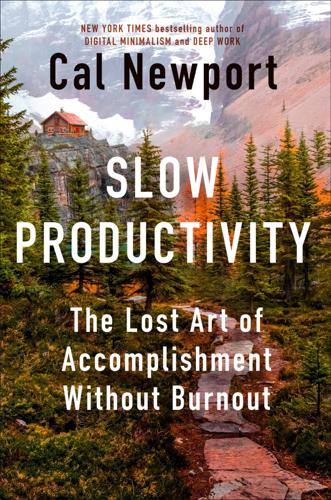
Slow Productivity: The Lost Art of Accomplishment Without Burnout
by
Cal Newport
Published 5 Mar 2024
GO TO NOTE REFERENCE IN TEXT “Stop treating us”: AppleTogether, “Thoughts on Office-Bound Work,” appletogether.org/hotnews/thoughts-on-office-bound-work.html. GO TO NOTE REFERENCE IN TEXT A full year after Cook’s: Jane Thier, “Tim Cook Called Remote Work ‘the Mother of All Experiments.’ Now Apple Is Cracking Down on Employees Who Don’t Come in 3 Days a Week, Report Says,” Fortune, March 24, 2023, fortune.com/2023/03/24/remote-work-3-days-apple-discipline-terminates-tracks-tim-cook. GO TO NOTE REFERENCE IN TEXT “They’re at the vanguard”: Cal Newport, “What Hunter-Gatherers Can Teach Us about the Frustrations of Modern Work,” New Yorker, November 2, 2022, newyorker.com/culture/office-space/lessons-from-the-deep-history-of-work.
…
As the distraction of the health emergency dissipated, more than a few former cubicle dwellers were left wondering what other major changes might be possible. We see this new attitude reflected in the wrangling that emerged between employees and bosses over plans to return to office buildings. In the spring of 2022, when Apple CEO Tim Cook announced that employees would be required to work in person at the company’s Cupertino headquarters at least some days each week, the protest in response was swift and intense. “Stop treating us like school kids who need to be told when to be where and what homework to do,” demanded an open letter addressed to Cook by an employee group called AppleTogether.
…
When they couldn’t provide a clear answer, he made the decision to simplify their product line down to only four computers: a desktop and laptop for business users and a desktop and laptop for casual users. There would be no confusion about which Apple machine was right for you. Equally important, this simplification allowed Apple to focus its efforts on quality and innovation: making its small number of products stand out. This was the period, for example, in which Apple’s colorful, bulbous iMac and whimsical clamshell iBook were released. The decision to trade complexity for quality worked. During Jobs’s first fiscal year, when his plan was still being implemented, Apple lost over a billion dollars. The next year, it turned a profit of $309 million. “Deciding what not to do is as important as deciding what to do,” Jobs explained.

The Everything Blueprint: The Microchip Design That Changed the World
by
James Ashton
Published 11 May 2023
Four years after Krzanich’s pronouncement, on 22 June 2020 Apple’s chief executive Tim Cook announced ‘a historic day for the Mac’.28 The effect of Otellini’s great charm offensive had expired. The technology giant was dropping Intel chips from the Mac in favour of ‘Apple silicon’, its own-house chips developed on Arm architecture and a direct result of that surprise 2008 conference call. ‘Apple silicon will make the Mac stronger and more capable than ever,’ added Cook. ‘I’ve never been more excited about the future of the Mac.’ For Apple, the move gave it greater control over its supply chain and made it easier for apps developed on iPhone, iPad and the iOS operating system to work on the Mac without modification.
…
It acquired Intel’s smartphone modem unit for $1bn when Chipzilla gave up on the business line. That deal took Apple’s portfolio to more than 17,000 wireless technology patents, ranging from protocols for cellular standards to modem architecture and operation. In March 2021, news of Apple’s €1bn investment in Munich, Germany, partly funding a silicon design centre focused on connectivity and wireless technologies, was further evidence of its desire to pull away from Qualcomm, just as it had from Intel and Samsung. People that knew Apple well estimate that Srouji, who was elevated to Tim Cook’s management team in late 2015 and showered with stock options, had at least 4,000 engineers working under him.
…
Ireland’s Central Statistics Office (CSO) suggested that electricity consumption by the country’s data centres increased by 144 per cent between 2015 and 2020 – and rose to 849 gigawatt hours in the fourth quarter of 2020.2 An engineer, Allan Daly, one of the most visible complainants against Amazon’s expansion, called for a further assessment of the site’s energy demands before planning permission was granted. Daly’s environmental concerns had already contributed to Apple’s struggles a two-hour drive west. In February 2015 the iPhone company announced plans to construct its first two data centres in Europe, including one at a forested site in Athenry, a small town in County Galway, where Daly lived. Planning was approved by September that year but the project became mired in protests and appeals. The path was eventually cleared and, in November 2017, after a trip to see Apple chief executive Tim Cook at the company’s headquarters in Cupertino, California, Ireland’s Taoiseach Leo Varadkar said ‘we will do anything that is within our power to facilitate’ the centre getting built.3 But Apple had lost interest and in October 2019, as workmen busied themselves on behalf of Amazon, it signalled the Athenry site would be sold.
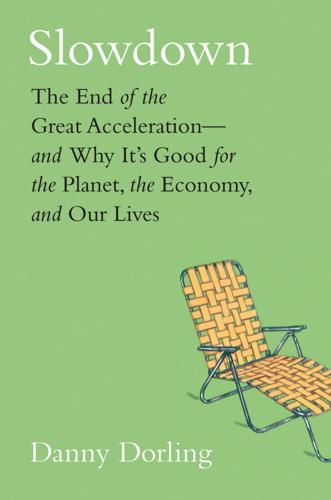
Slowdown: The End of the Great Acceleration―and Why It’s Good for the Planet, the Economy, and Our Lives
by
Danny Dorling
and
Kirsten McClure
Published 18 May 2020
Tom Orlik, “China’s Latest Official GDP Report Is Accurate. No, Really,” Bloomberg Businessweek, 25 January 2019, https://www.bloomberg.com/news/articles/2019-01-25/china-s-latest-official-gdp-report-is-accurate-no-really. 15. Tim Cook, “Letter from Tim Cook to Apple Investors,” Apple Press Release, 2 January 2019, https://www.apple.com/newsroom/2019/01/letter-from-tim-cook-to-apple-investors/. 16. Tim Jackson, Chasing Progress: Beyond Measuring Economic Growth (London: New Economics Foundation, 2004), https://neweconomics.org/2004/03/chasing-progress. 17. George Monbiot, “Goodbye, Kind World,” 10 August 2004, https://www.monbiot.com/2004/08/10/goodbye-kind-world/. 18.
…
Do that and then it becomes hard to maintain a common front. Some businesspeople will turn on their own politicians—turning on Donald Trump, in the case referred to above—to try to explain why their government’s approach is not helping. Although to see that in Tim Cook’s message, you need to read between the lines. That the chief executive officer of Apple, the eleventh-largest company in the world by revenue in 2019 and the fourth largest in America, should be so concerned about U.S. relations with China is telling. His predecessors were worried about whether it was best to manufacture in China and what the risks might be.
…
See also great acceleration Advanced Research Projects Agency Network (ARPANET), 31 Affordable Care Act, 313 Afghanistan, 172, 173 Africa: children in, 316–17; fertility rates, 158, 226, 227; language in, 73; Niger fertility rate, 201–4, 203; out-migration from, 158; population, 157–61, 159 agnosia, 287 AI (artificial intelligence), 85, 87, 96–97, 301–2 air travel, 302–4, 303, 363n2 Alexa, 79, 97 Americas: fertility rates, 226, 227; population, 177–79, 178, 209. See also United States Amsterdam: as center of selfishness, 263; house prices, 248, 249 Anderson, Li, 312 Angus Maddison Project Database 2018, 149, 155; GDP, 234, 238; population, 146, 148, 150, 151, 156, 159, 164, 167, 169, 172, 176 Apple (Tim Cook, CEO), 239–40 Ardern, Edward, 269 Armstrong, William, 94, 97 artificial intelligence (AI), 85, 87, 96–97, 301–2 Australia, population, 175, 176, 177 automobile debt, 43–49, 48 automobiles: and carbon emissions, 101–2, 112–16; and debt, 43–49, 48; numbers manufactured, 114–15, 118 babies, 143, 218, 309.

Stakeholder Capitalism: A Global Economy That Works for Progress, People and Planet
by
Klaus Schwab
Published 7 Jan 2021
But over time, Benioff's outspoken stance did inspire others to take similar steps. Fellow Big Tech leaders, such as Tim Cook of Apple, started calling for regulation of their sector, in areas where they felt they were ill-equipped to make decisions on their own. Even if subtly aimed at other competitors, it showed that technology companies had started to reflect on the societal consequences of their actions. “Technology has the potential to keep changing the world for the better,” Apple's Tim Cook wrote ahead of Davos in 2019,27 “but it will never achieve that potential without the full faith and confidence of the people who use it.”
…
Remain in Crisis,” Heather Knight, San Francisco Chronicle, 2014, https://www.sfchronicle.com/archive/item/A-decade-of-homelessness-Thousands-in-S-F-30431.php. 24 Trailblazer, Marc Benioff, October 2019, pp. 12–13. 25 “Marc Benioff Says Companies Buy Each Other for the Data, and the Government Isn't Doing Anything about It,” April Glaser, Recode., November 2016, https://www.vox.com/2016/11/15/13631938/benioff-salesforce-data-government-federal-trade-commission-ftc-linkedin-microsoft. 26 Trailblazer, Marc Benioff, October 2019, pp. 12–13. 27 “You Deserve Privacy Online. Here's How You Could Actually Get It,” Tim Cook, TIME Magazine, January 2019, https://time.com/collection/davos-2019/5502591/tim-cook-data-privacy/. 28 “Big Tech Needs More Regulation,” Mark Zuckerberg, Financial Times, February 2020, https://www.ft.com/content/602ec7ec-4f18-11ea-95a0-43d18ec715f5. 29 “Benioff Comes Out Strong for Homeless Initiative, although Salesforce Would Pay Big,” Kevin Fagan, San Francisco Chronicle, October 2018, https://www.sfchronicle.com/bayarea/article/Benioff-comes-out-strong-for-homeless-initiative-13291392.php. 30 “The Social Responsibility of Business,” Marc Benioff, The New York Times, October 2018, https://www.nytimes.com/2018/10/24/opinion/business-social-responsibility-proposition-c.html. 31 “We can now measure the progress of stakeholder capitalism.
…
Notes 1 “Top 5 Tech Giants Who Shape Shenzhen, ‘China's Silicon Valley,’” South China Morning Post, April 2015, https://www.scmp.com/lifestyle/technology/enterprises/article/1765430/top-5-tech-giants-who-shape-shenzhen-chinas-silicon. 2 Interview with Liu Guohong by Peter Vanham, Shenzhen, China, June 2019. 3 Nanyang Commercial Bank, https://www.ncb.com.hk/nanyang_bank/eng/html/111.html. 4 “First Land Auction Since 1949 Planned in Key China Area,” Los Angeles Times/Reuters, June 1987, https://www.latimes.com/archives/la-xpm-1987-06-28-mn-374-story.html. 5 “The Silicon Valley of Hardware,” Wired, https://www.wired.co.uk/video/shenzhen-episode-1. 6 “Exclusive: Apple Supplier Foxconn to Invest $1 Billion in India, Sources Say,” Reuters, July 2020, https://www.reuters.com/article/us-foxconn-india-apple-exclusive/exclusive-apple-supplier-foxconn-to-invest-1-billion-in-india-sources-say-idUSKBN24B2GH. 7 “Global 500: Ping An Insurance,” Fortune, https://fortune.com/global500/2019/ping-an-insurance. 8 “The World's Biggest Electric Vehicle Company Looks Nothing Like Tesla,” Bloomberg, April 2019, https://www.bloomberg.com/news/features/2019-04-16/the-world-s-biggest-electric-vehicle-company-looks-nothing-like-tesla. 9 “How Shenzhen Battles Congestion and Climate Change,” Chia Jie Lin, GovInsider, July 2018, https://govinsider.asia/security/exclusive-shenzhen-battles-congestion-climate-change/. 10 “China's Debt Threat: Time to Rein in the Lending Boom,” Martin Wolf, Financial Times, July 2018 https://www.ft.com/content/0c7ecae2-8cfb-11e8-bb8f-a6a2f7bca546. 11 “China's Debt-to-GDP Ratio Surges to 317 Percent,” The Street, May 2020, https://www.thestreet.com/mishtalk/economics/chinas-debt-to-gdp-ratio-hits-317-percent. 12 “Climate Change: Xi Jinping Makes Bold Pledge for China to Be Carbon Neutral by 2060,” South China Morning Post, September 2020, https://www.scmp.com/news/china/diplomacy/article/3102761/climate-change-xi-jinping-makes-bold-pledge-china-be-carbon. 13 “Current Direction for Renewable Energy in China,” Anders Hove, The Oxford Institute for Energy Studies, June 2019, https://www.oxfordenergy.org/wpcms/wp-content/uploads/2020/06/Current-direction-for-renewable-energy-in-China.pdf. 14 “Everyone around the World is Ditching Coal—Except Asia,” Bloomberg, June 2020, https://www.bloomberg.com/news/articles/2020-06-09/the-pandemic-has-everyone-ditching-coal-quicker-except-asia. 15 “Statistical Review of World Energy 2020,” BP, https://www.bp.com/en/global/corporate/energy-economics/statistical-review-of-world-energy.html. 16 “World Integrated Trade Solution,” World Bank, 2018, https://wits.worldbank.org/CountryProfile/en/Country/CHN/Year/LTST/TradeFlow/Import/Partner/by-country/Product/Total#. 17 “China Imports,” Comtrade, UN, 2018, https://comtrade.un.org/labs/data-explorer/. 18 “Does Investing in Emerging Markets Still Make Sense?”

Stakeholder Capitalism: A Global Economy That Works for Progress, People and Planet
by
Klaus Schwab
and
Peter Vanham
Published 27 Jan 2021
But over time, Benioff's outspoken stance did inspire others to take similar steps. Fellow Big Tech leaders, such as Tim Cook of Apple, started calling for regulation of their sector, in areas where they felt they were ill-equipped to make decisions on their own. Even if subtly aimed at other competitors, it showed that technology companies had started to reflect on the societal consequences of their actions. “Technology has the potential to keep changing the world for the better,” Apple's Tim Cook wrote ahead of Davos in 2019,27 “but it will never achieve that potential without the full faith and confidence of the people who use it.”
…
Remain in Crisis,” Heather Knight, San Francisco Chronicle, 2014, https://www.sfchronicle.com/archive/item/A-decade-of-homelessness-Thousands-in-S-F-30431.php. 24 Trailblazer, Marc Benioff, October 2019, pp. 12–13. 25 “Marc Benioff Says Companies Buy Each Other for the Data, and the Government Isn't Doing Anything about It,” April Glaser, Recode., November 2016, https://www.vox.com/2016/11/15/13631938/benioff-salesforce-data-government-federal-trade-commission-ftc-linkedin-microsoft. 26 Trailblazer, Marc Benioff, October 2019, pp. 12–13. 27 “You Deserve Privacy Online. Here's How You Could Actually Get It,” Tim Cook, TIME Magazine, January 2019, https://time.com/collection/davos-2019/5502591/tim-cook-data-privacy/. 28 “Big Tech Needs More Regulation,” Mark Zuckerberg, Financial Times, February 2020, https://www.ft.com/content/602ec7ec-4f18-11ea-95a0-43d18ec715f5. 29 “Benioff Comes Out Strong for Homeless Initiative, although Salesforce Would Pay Big,” Kevin Fagan, San Francisco Chronicle, October 2018, https://www.sfchronicle.com/bayarea/article/Benioff-comes-out-strong-for-homeless-initiative-13291392.php. 30 “The Social Responsibility of Business,” Marc Benioff, The New York Times, October 2018, https://www.nytimes.com/2018/10/24/opinion/business-social-responsibility-proposition-c.html. 31 “We can now measure the progress of stakeholder capitalism.
…
Notes 1 “Top 5 Tech Giants Who Shape Shenzhen, ‘China's Silicon Valley,’” South China Morning Post, April 2015, https://www.scmp.com/lifestyle/technology/enterprises/article/1765430/top-5-tech-giants-who-shape-shenzhen-chinas-silicon. 2 Interview with Liu Guohong by Peter Vanham, Shenzhen, China, June 2019. 3 Nanyang Commercial Bank, https://www.ncb.com.hk/nanyang_bank/eng/html/111.html. 4 “First Land Auction Since 1949 Planned in Key China Area,” Los Angeles Times/Reuters, June 1987, https://www.latimes.com/archives/la-xpm-1987-06-28-mn-374-story.html. 5 “The Silicon Valley of Hardware,” Wired, https://www.wired.co.uk/video/shenzhen-episode-1. 6 “Exclusive: Apple Supplier Foxconn to Invest $1 Billion in India, Sources Say,” Reuters, July 2020, https://www.reuters.com/article/us-foxconn-india-apple-exclusive/exclusive-apple-supplier-foxconn-to-invest-1-billion-in-india-sources-say-idUSKBN24B2GH. 7 “Global 500: Ping An Insurance,” Fortune, https://fortune.com/global500/2019/ping-an-insurance. 8 “The World's Biggest Electric Vehicle Company Looks Nothing Like Tesla,” Bloomberg, April 2019, https://www.bloomberg.com/news/features/2019-04-16/the-world-s-biggest-electric-vehicle-company-looks-nothing-like-tesla. 9 “How Shenzhen Battles Congestion and Climate Change,” Chia Jie Lin, GovInsider, July 2018, https://govinsider.asia/security/exclusive-shenzhen-battles-congestion-climate-change/. 10 “China's Debt Threat: Time to Rein in the Lending Boom,” Martin Wolf, Financial Times, July 2018 https://www.ft.com/content/0c7ecae2-8cfb-11e8-bb8f-a6a2f7bca546. 11 “China's Debt-to-GDP Ratio Surges to 317 Percent,” The Street, May 2020, https://www.thestreet.com/mishtalk/economics/chinas-debt-to-gdp-ratio-hits-317-percent. 12 “Climate Change: Xi Jinping Makes Bold Pledge for China to Be Carbon Neutral by 2060,” South China Morning Post, September 2020, https://www.scmp.com/news/china/diplomacy/article/3102761/climate-change-xi-jinping-makes-bold-pledge-china-be-carbon. 13 “Current Direction for Renewable Energy in China,” Anders Hove, The Oxford Institute for Energy Studies, June 2019, https://www.oxfordenergy.org/wpcms/wp-content/uploads/2020/06/Current-direction-for-renewable-energy-in-China.pdf. 14 “Everyone around the World is Ditching Coal—Except Asia,” Bloomberg, June 2020, https://www.bloomberg.com/news/articles/2020-06-09/the-pandemic-has-everyone-ditching-coal-quicker-except-asia. 15 “Statistical Review of World Energy 2020,” BP, https://www.bp.com/en/global/corporate/energy-economics/statistical-review-of-world-energy.html. 16 “World Integrated Trade Solution,” World Bank, 2018, https://wits.worldbank.org/CountryProfile/en/Country/CHN/Year/LTST/TradeFlow/Import/Partner/by-country/Product/Total#. 17 “China Imports,” Comtrade, UN, 2018, https://comtrade.un.org/labs/data-explorer/. 18 “Does Investing in Emerging Markets Still Make Sense?”

System Error: Where Big Tech Went Wrong and How We Can Reboot
by
Rob Reich
,
Mehran Sahami
and
Jeremy M. Weinstein
Published 6 Sep 2021
This is where an idea that sounds so compelling in principle begins to run into trouble. Let’s start with the idea of a competitive marketplace. The best current example of a big tech company deeply committed to privacy is Apple. Indeed, the company’s CEO, Tim Cook, has made the battle for privacy a hallmark of his leadership, positioning Apple in opposition to other corporate behemoths in the technology industry. Apple’s approach to privacy—“Privacy by design”—privileges the protection of personal data at every turn. The company collects only the personal data required to deliver the services people need (“data minimization”).
…
One can imagine that the CEOs gathered their best and brightest in the C-suite to figure out how to counter the incoming criticisms. Amazon’s Jeff Bezos and Google’s CEO, Sundar Pichai, went for the personal approach—leading with their own inspiring stories of having risen from humble beginnings. Apple CEO Tim Cook continued his effort to differentiate Apple from the other companies, claiming that it doesn’t have a “dominant market share in any market where we do business.” Facebook’s Mark Zuckerberg took perhaps the most interesting line in defending the company’s enormous market power: “Facebook is a successful company now, but we got there the American way: we started with nothing and provided better products that people find valuable.”
…
Harvard professor Cynthia Dwork: Cynthia Dwork, “Differential Privacy,” in Automata, Languages and Programming, edited by Michele Bugliesi et al. (Heidelberg, Germany: Springer, 2006), 1–12. Cook refused to cooperate: Leander Kahney, “The FBI Wanted a Backdoor to the iPhone. Tim Cook Said No,” Wired, April 16, 2019, https://www.wired.com/story/the-time-tim-cook-stood-his-ground-against-fbi/. “We’re not trying”: Matt Burgess, “Google Got Rich from Your Data. DuckDuckGo Is Fighting Back,” Wired, June 8, 2020, https://www.wired.co.uk/article/duckduckgo-android-choice-screen-search. Google had acted illegally: Ibid.

Facebook: The Inside Story
by
Steven Levy
Published 25 Feb 2020
“If you’re not”: Cook’s remark was made on an MSNBC “Revolution” event in an interview with Kara Swisher and Chris Hayes, on April 6, 2018. Cook disagreed: Matthew Panzarino, “Apple’s Tim Cook Delivers Blistering Speech on Encryption, Privacy,” TechCrunch, June 2, 2015. measure their worth with Likes: Brian Fung, “Apple’s Tim Cook May Have Taken a Subtle Dig at Facebook in His MIT Commencement Speech,” Washington Post, June 9, 2017. After Cambridge: Peter Kafka, “Tim Cook Says Facebook Should Have Regulated Itself, but It’s Too Late for That Now,” Recode, March 28, 2018. “extremely glib”: Ezra Klein, “Mark Zuckerberg on Facebook’s Hardest Year, and What Comes Next,” Vox, April 2, 2018.
…
“It’s a shared view that we’ve turned the corner and that we now have confidence that we can not only address problems that come up but we can systematically get ahead of them in the future,” Andrew Bosworth told me in late 2018. Not all of them, it turned out. While Facebook’s critics were abundant, one in particular seemed to get under Zuckerberg’s skin: Apple’s CEO, Tim Cook. As Facebook’s problems became more public after the election, Cook began to voice reservations about social media, and Facebook in particular. Apple’s business model, Cook noted at every opportunity, was based on a straightforward exchange: you pay for the product and use it. The Facebook business model, Cook would note, provides a service that seems free but actually isn’t, as you are paying with your personal information and constant exposure to ads.
…
Just as leaders of great national powers would summit despite their hostilities, Zuckerberg and Cook would generally set aside time to talk at the annual Herb Allen summer gathering. In 2017, Zuckerberg had been upset at a remark Cook had made at a commencement speech; the Apple CEO had told the graduates not to measure their worth with Likes, and Zuckerberg had taken that personally. Tim Cook wasn’t about to run his speeches past Zuckerberg. By then Cook was promoting privacy as a pillar of Apple’s deal with its customers. The targets of his jibes were Google and Facebook, but only Google was a direct competitor, and Zuckerberg felt sideswiped. After Cambridge Analytica, Cook was asked what he would do if he were in Zuckerberg’s place.
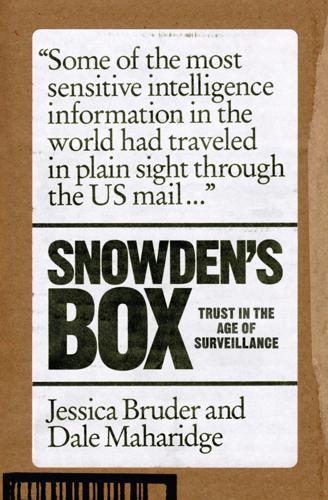
Snowden's Box: Trust in the Age of Surveillance
by
Jessica Bruder
and
Dale Maharidge
Published 29 Mar 2020
Purges Hundreds of Millions of Call and Text Records,” New York Times, June 28, 2018. p. 93 German media scholar Till Wäscher: Wäscher, “Six Frames against Surveillance.” p. 94 Apple CEO Tim Cook: Eric Lichtblau and Katie Benner, “Apple Fights Order to Unlock San Bernardino Gunman’s iPhone,” New York Times, February 17, 2016; Kate Fazzini, “In a Three-Way Privacy Fight, Apple Has More to Lose Than Facebook or Google,” CNBC, October 25, 2018. p. 94 Justice Department officials derided the company’s refusal to cooperate: Eric Lichtblau and Matt Apuzzo, “Justice Department Calls Apple’s Refusal to Unlock iPhone a ‘Marketing Strategy,’” New York Times, February 19, 2016. p. 94 Snowden told the Guardian he had no regrets: Ewen MacAskill and Alex Hern, “Edward Snowden: ‘The People Are Still Powerless, but Now They’re Aware,” Guardian, June 4, 2018.
…
In 2016, the popular messaging service WhatsApp began using end-to-end encryption to protect users’ communications. The same year, tensions rose as Apple defied a federal court order to help the FBI break into an iPhone belonging to one of the perpetrators of a San Bernardino mass shooting that killed fourteen people. “The same engineers who built strong encryption into the iPhone to protect our users would, ironically, be ordered to weaken those protections and make our users less safe,” said Apple CEO Tim Cook, who later made “privacy is a human right” his public mantra. Justice Department officials derided the company’s refusal to cooperate, calling it a “marketing strategy.”
…
I absorbed the story, trying to process the enormity of it all. A national freakout was brewing. I called Dale: “Is that it?” “Yes.” “Shit.” I felt light-headed. “Is that all of it?” “No.” Over the next few days, more disclosures followed. The NSA had been collecting users’ private communications from AOL, Apple, Facebook, Google, Microsoft, Yahoo, and other companies. Obama had told intelligence officials to make a list of possible foreign targets for American cyberattacks. During a single thirty-day period, the NSA had harvested nearly 3 billion pieces of intelligence from US computer networks. And so on.
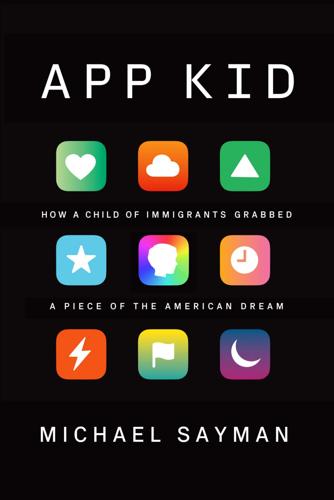
App Kid: How a Child of Immigrants Grabbed a Piece of the American Dream
by
Michael Sayman
Published 20 Sep 2021
I planned to spend the night with the other hard-core attendees who lined up in lawn chairs around the block the night before opening day. When the doors opened tomorrow at eight a.m., we’d be the first inside, stampeding into the main hall to nab front-row seats to the keynote address by Apple’s CEO, Tim Cook. Charline had managed to score permission to film me at the event—no small feat, as Apple is very strict about whom they let into the conference. They don’t allow big cameras, so a fourth crew member she’d sent for the day filmed me on his phone. “You sure you don’t want to stay out with us?” I asked Marcello, licking ketchup from my fingers.
…
At eight a.m., the doors opened, and I threw myself, laughing crazily, into the stampede. Marcello, who’d returned just in time to catch the mad rush on video, joined me inside for the keynote lecture. “You guys don’t mess around.” He laughed, shaking his head. The lights dimmed, and Tim Cook appeared on the stage before a prominent Apple logo at the center of the massive wide-screen displays. He began the keynote by highlighting the diversity of their developer conference attendance that year. There were record numbers of nationalities, young adults, and online participants. As Cook spoke, I was already plotting my next move: to get a picture with him.
…
I thanked him and was off. I’d gotten my fifteen seconds; it was time to give someone else a chance. After pausing to tweet the Tim Cook photo, I made a beeline—with Marcello running alongside, filming—for the pressroom. I wanted to see if any reporters might be interested in hearing about 4 Snaps. The app had been steadily marching down the charts since I’d stopped promoting it to turn my attention to preparing for the internship. But now I was reenergized about 4 Snaps—as if some of the Apple CEO’s magic had rubbed off on me during our handshake. For the rest of the conference, I was a whirling dervish.
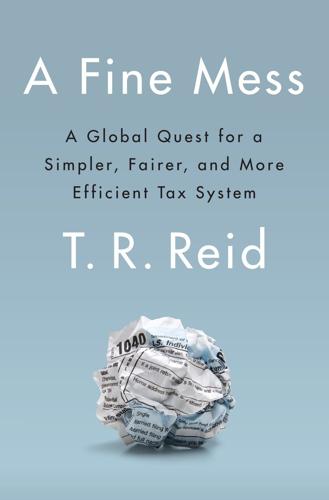
A Fine Mess
by
T. R. Reid
Published 13 Mar 2017
When confronted about these tactics by angry U.S. senators from both parties—“It is completely outrageous,” said John McCain, the Arizona Republican, “that Apple has not only dodged full payment of U.S. taxes, but it has managed to evade paying taxes around the world through its convoluted and pernicious strategies”—Apple executives responded with indignation of their own. “We pay all the taxes we owe, every single dollar,” declared Tim Cook, Apple’s CEO, who noted that Apple paid significant sums in U.S. taxes on its sales in the United States—more than $16 million in corporate income tax every day of the year. “We do not depend on tax gimmicks. . . . We do not stash money on some Caribbean island.” The problem, Cook said, was that 35% corporate tax rate, which would make it “very expensive” to record those international sales in the United States or to bring home the billions of dollars Apple had assigned to its foreign subsidiaries.
…
By routing its manufacturing through a tiny factory in Puerto Rico, Microsoft saved over $4.5 billion in taxes on goods sold in the United States” over a three-year period.8 Despite these industrious efforts to escape American taxes, Caterpillar, Apple, Google, and Microsoft still declare themselves to be American corporations. Apple’s CEO, Tim Cook, was adamant on this point that day when the senators were grilling him about “stateless income.” “I am often asked,” Cook said, “if Apple still considers itself an American company. My answer has always been an emphatic ‘Yes.’ We are proud to be an American company and equally proud of our contribution to the U.S. economy.”
…
The best solution would be for the United States to “eliminate all corporate tax expenditures, lower corporate income tax rates, and implement a reasonable tax on foreign earnings that allows the free flow of capital back to the United States.” In short, Tim Cook gave Congress the same message that Gérard Depardieu had given to François Hollande: if you set tax rates high, taxpayers will fall back on “convoluted and pernicious strategies” to avoid them—including taking their money to a different country. Although Cook did not mention it to the senators, Apple Inc. had actually found a roundabout way to bring home some of the billions it held overseas without paying U.S. tax on the earnings. In 2013, Apple borrowed billions of dollars—that is, it sold corporate bonds—in the United States.
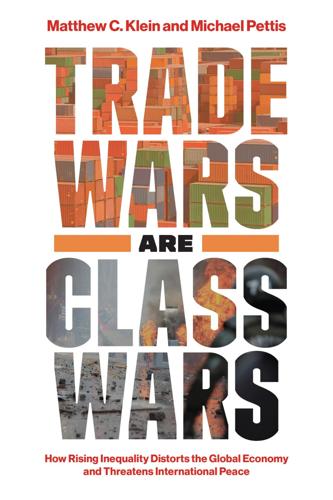
Trade Wars Are Class Wars: How Rising Inequality Distorts the Global Economy and Threatens International Peace
by
Matthew C. Klein
Published 18 May 2020
The only safety of nations lies in removing the unearned increments of income from the possessing classes, and adding them to the wage-income of the working classes or to the public income, in order that they may be spent in raising the standard of consumption. John A. Hobson, Imperialism: A Study (1902) Contents Acknowledgments Introduction ONE From Adam Smith to Tim Cook: The Transformation of Global Trade TWO The Growth of Global Finance THREE Saving, Investment, and Imbalances FOUR From Tiananmen to the Belt and Road: Understanding China’s Surplus FIVE The Fall of the Wall and the Schwarze Null: Understanding Germany’s Surplus SIX The American Exception: The Exorbitant Burden and the Persistent Deficit Conclusion.
…
The challenge is an intellectual one (getting people to appreciate this perspective) and a political one (defeating entrenched interests that benefit from the status quo). To understand how all this works, it helps to have a historical perspective of how we got here. O•N•E From Adam Smith to Tim Cook The Transformation of Global Trade International trade used to be simple. High transport costs and politically imposed constraints limited the flow of finished goods and raw materials across borders. In the late eighteenth and early nineteenth centuries, British thinkers argued for removing tariffs and other barriers to encourage specialization, while Americans and Germans proposed protecting infant industries to develop diversified domestic markets.
…
See also Thomas Hauner, Branko Milanovic, and Suresh Naidu, “Inequality, Foreign Investment, and Imperialism,” Stone Center Working Paper 2017, for a modern quantitative analysis of Hobson’s thesis. 8. Kenneth Austin, “Communist China’s Capitalism: The Highest Stage of Capitalist Imperialism,” World Economics, January–March 2011, 79–94. ONE From Adam Smith to Tim Cook 1. Adam Smith, An Inquiry into the Nature and Causes of the Wealth of Nations, 2 vols., ed. Edwin Cannan (London: Methuen, 1904), vol. 1, bk. 1, chap. 1, available at https://oll.libertyfund.org/. 2. R. H. Coase, “The Nature of the Firm,” Economica 4, no. 16 (November 1937): 386–405. 3. Smith, Wealth of Nations, vol. 1, bk. 4, chap. 2. 4.
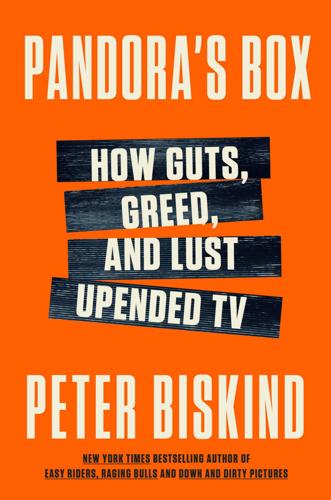
Pandora's Box: How Guts, Guile, and Greed Upended TV
by
Peter Biskind
Published 6 Nov 2023
“vaginal hygiene”: Lucas Shaw, “Apple’s Billion-Dollar Bet on Hollywood Is the Opposite of Edgy,” Bloomberg Businessweek, October 25, 2017, https://www.bloomberg.com/news/articles/2017-10-25/apple-s-billion-dollar-bet-on-hollywood-is-the-opposite-of-edgy. 15. “Netflix is just soooo Android”: Entertainment Strategy Guy, “Worst-Case Scenario: Apple TV+,” Ankler, July 21, 2022, https://theankler.com/p/worst-case-scenario-apple-tv. 16. “Don’t be so mean”: Alexandra Steigrad and Nicolas Vega, “Apple’s Hollywood Venture Marred by ‘Intrusive’ Execs, Including Tim Cook,” New York Post, March 3, 2019, https://nypost.com/2019/03/03/appless-hollywood-venture-marred-by-intrusive-execs. 17. “There’s never been one note”: Stuart McGurk, “Can Apple Hack It in Hollywood?
…
“expensive NBC”: Tripp Mickle and Joe Flint, “No Sex Please, We’re Apple: iPhone Giant Seeks TV Success on Its Own Terms,” Wall Street Journal, September 22, 2018, https://www.wsj.com/articles/no-sex-please-were-apple-iphone-giant-seeks-tv-success-on-its-own-terms-1537588880. 20. “shares customer data with the Chinese”: Jack Nicas, “Apple’s Compromises in China: 5 Takeaways,” New York Times, May 17, 2021, https://www.nytimes.com/2021/05/17/technology/apple-china-privacy-censorship.html. 21. three years elapsed: Tyler Sonnemaker, “Apple knew a supplier was using child labor . . .” Business Insider, December 31, 2020. 22. “unrest” among its employees: Jack Nicas and Kellen Browning, “Tim Cook Faces Surprising Employee Unrest at Apple,” New York Times, September 17, 2021, https://www.nytimes.com/2021/09/17/technology/apple-employee-unrest.html. 23.
…
As of 2022, it was valued somewhere between $2 and $3 trillion, with approximately $195.57 billion petty cash in its piggy bank as of the previous year, and revenue of $366 billion in 2021. It’s richer than Google, Amazon, and Meta combined. Apple spent an estimated $6 billion on content to start its streamer. There’s apparently no ceiling on the price it will pay for scripted shows, but at the beginning, it was most interesting as examples of what money couldn’t buy, which in Apple TV+’s case was apparently consistently good TV, although with the passage of time, its programming has blossomed. Apple chief Tim Cook reportedly challenged Eddy Cue, senior VP of internet software and services, to spearhead the effort to start its new streamer.

Data and Goliath: The Hidden Battles to Collect Your Data and Control Your World
by
Bruce Schneier
Published 2 Mar 2015
Google has done much the same: Associated Press (2 Apr 2013), “Timeline: A look at developments linked to Google privacy concerns,” CTV News, http://www.ctvnews.ca/sci-tech/timeline-a-look-at-developments-linked-to-google-privacy-concerns-1.1220927. Apple is somewhat of an exception: Rich Mogull (25 Jun 2014), “Why Apple really cares about your privacy,” Macworld, http://www.macworld.com/article/2366921/why-apple-really-cares-about-your-privacy.html. It uses iTunes purchase information: Charles Arthur (18 Sep 2014), “Apple’s Tim Cook attacks Google and Facebook over privacy flaws,” Guardian, http://www.theguardian.com/technology/2014/sep/18/apple-tim-cook-google-facebook-privacy-surveillance. It’s very big business for Amazon: Jay Greene (18 Mar 2014), “Amazon easing into $1 billion sideline business: ad sales,” Union Bulletin, http://union-bulletin.com/news/2014/mar/18/amazon-easing-1b-sideline-business-ad-sales.
…
The UK wants similar access: Guardian (19 Sep 2014), “Former UK ambassador to the United States given data-access role,” Guardian, http://www.theguardian.com/technology/2014/sep/19/sir-nigel-shienwald-data-access-role-david-cameron. Apple’s business model protects: Rich Mogull (25 Jun 2014), “Why Apple really cares about your privacy,” Macworld, http://www.macworld.com/article/2366921/why-apple-really-cares-about-your-privacy.html. Charles Arthur (18 Sep 2014), “Apple’s Tim Cook attacks Google and Facebook over privacy flaws,” Guardian, http://www.theguardian.com/technology/2014/sep/18/apple-tim-cook-google-facebook-privacy-surveillance. Do you trust a company: European countries allow for far more permissive government access than the US does.
…
companies are employing “warrant canaries”: Cyrus Farivar (5 Nov 2013), “Apple takes strong privacy stance in new report, publishes rare ‘warrant canary,’” Ars Technica, http://arstechnica.com/tech-policy/2013/11/apple-takes-strong-privacy-stance-in-new-report-publishes-rare-warrant-canary. valiant and clever effort: In fact, Apple’s canary disappeared in the report following the one where it debuted. No one is sure what it means. Jeff John Roberts (18 Sep 2014), “Apple’s ‘warrant canary’ disappears, suggesting new Patriot Act demands,” Gigaom, https://gigaom.com/2014/09/18/apples-warrant-canary-disappears-suggesting-new-patriot-act-demands.
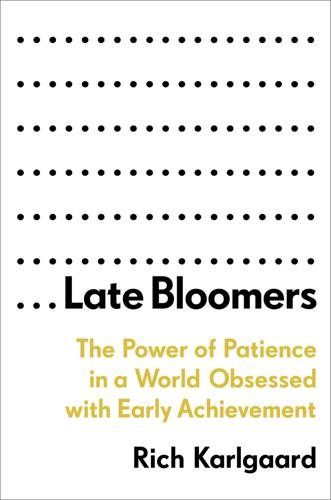
Late Bloomers: The Power of Patience in a World Obsessed With Early Achievement
by
Rich Karlgaard
Published 15 Apr 2019
Magic Johnson heads a group that bought Major League Baseball’s Los Angeles Dodgers from Frank McCourt for $2 billion. most recent Forbes list: “Forbes Releases 2018 List of America’s Richest Self-Made Women, a Ranking of the Successful Women Entrepreneurs in the Country,” Forbes, July 11, 2018, https://bit.ly/2NI4zje. Apple CEO: Tim Cook, “Tim Cook Speaks Up,” Bloomberg, October 30, 2014. attitudes toward diversity: Gary R. Hicks and Tien-Tsung Lee, “Public Attitudes Toward Gays and Lesbians: Trends and Predictors,” Journal of Homosexuality 51, no. 2 (2006): 57–77; Andrew Markus, “Attitudes to Multiculturalism and Cultural Diversity,” in Multiculturalism and Integration: A Harmonious Relationship, ed.
…
Prominent African Americans like Michael Jordan and Magic Johnson aren’t just former athletes, they’re now team owners. The most recent Forbes list of “America’s Richest Self-Made Women” includes seventeen billionaires, with businesses ranging from roofing to trucking to retail. Same-sex marriage is now a federally mandated constitutional right in all fifty states, and high-profile business leaders like Apple CEO Tim Cook openly identify as gay. And even though we’ve lately taken a step back as a society in terms of public and political tolerance, polls confirm that over recent decades, attitudes toward diversity in education and the workplace, gender equality, and same-sex marriage have shifted steadily.
…
In 2008, Hector Zenil, who coleads the Algorithmic Dynamics Lab at the Karolinska Institute in Sweden, studied 3,400 people between the ages of four and ninety-one on their ability to behave randomly. The idea is that random thinking—seeing beyond the obvious—is connected to creative thinking. When an apple falls from a tree, the creative person doesn’t simply think that apple must have been ripe; like Isaac Newton, she sees the apple fall and pictures the invisible force of gravity. How did Hector Zenil and researchers test for random thinking? They developed five short “random item generation” tasks performed on a computer, including twelve simulated coin flips, ten simulated rolls of a die, and arranging boxes on a grid.

Amazon Unbound: Jeff Bezos and the Invention of a Global Empire
by
Brad Stone
Published 10 May 2021
Despite instituting temperature checks, social distancing guidelines, and other safety measures, some employees were still getting sick and workers protested that the company was prioritizing sales over safety. Leandro Justen After it resisted making Bezos available to testify before Congress, Amazon was forced to relent. On July 29, 2020, the CEO appeared virtually, along with Facebook’s Mark Zuckerberg, Google’s Sundar Pichai, and Apple’s Tim Cook, during the House Judiciary Subcommittee’s hearing on online platforms and market power. Mandel Ngan “My life is based on a large series of mistakes,” Bezos said in November 2019 at the Smithsonian’s American Portrait Gala in Washington D.C. He was introduced by his oldest son, Preston. Joy Asico/AP for National Portrait Gallery Bezos sorted through binders of artists before choosing the photorealistic painter Robert McCurdy.
…
It’s part of what makes it so special.” Bezos had saved the Post. But he was also, in a way, benefiting from the refracted glow of its noble journalistic mission. In 2016, Fortune magazine placed Bezos in the top spot on its list of the world’s 50 Greatest Leaders—above Angela Merkel, Pope Francis, and Tim Cook. The accompanying article spent as much space on the turnaround at the paper as it did on the momentum at Amazon. “We used to joke that Jeff changed retail completely, built a 10,000-year clock, and sent rockets into space. But he wasn’t called the greatest leader in the world until he helped a newspaper company,” a former Post executive told me.
…
For Bezos and his advisors though, who were still trying to positively spin the embarrassing events surrounding his divorce, such a cloud of uncertainty was at the very least distracting from the more unsavory and complicated truth. * * * As the entire mêlée quieted over the course of 2019, Bezos and Lauren Sanchez started appearing together in public. In July, they attended the Allen & Company conference in Sun Valley, Idaho, mingling with the likes of Warren Buffett, Tim Cook, and Mark Zuckerberg. A few days later, they watched the Wimbledon men’s finals from the Royal Box, three rows behind Prince William and Kate Middleton. In August, they gamboled in the western Mediterranean Sea on the super yacht of mogul David Geffen. There were also trips to Solomeo, Italy, for a summit organized by luxury designer Brunello Cucinelli and to Venice, aboard the mega yacht of Barry Diller and Diane von Furstenberg.

Elon Musk
by
Walter Isaacson
Published 11 Sep 2023
he asked. “Just call Apple and tell them to give you the data you need.” Roth was taken aback. If a midlevel employee like himself called Apple and asked them to change their policies on information privacy, they would, as he put it, “tell me to go fuck myself.” Musk insisted the problem was fixable. “If I need to call Apple, I’ll call Apple,” he said. “I’ll call Tim Cook, if I have to.” Yoel Roth resigns That conversation was the final straw for Roth. The business model for Twitter Blue was imperiled given the constraints imposed by Apple. The issue of blue-checked impersonators was impossible to control immediately because Musk had laid off most of the human moderators.
…
He could be confrontational, with both colleagues and competitors. Tim Cook, who took over Apple in 2011, was different. He was calm, coolly disciplined, and disarmingly polite. Although he could be steely when warranted, he avoided unnecessary confrontations. Whereas Jobs and Musk seemed drawn to drama, Cook had an instinct for defusing it. He had a steady moral compass. “Tim doesn’t want any animosity,” a mutual friend told Musk. That was not the type of information that would usually have moved Musk out of warrior mode, but he realized that being at war with Apple was not a great idea. “I thought, well, I don’t want any animosity either,” Musk says.
…
When the meeting was over, Cook walked Musk to the apricot trees and serenity pond in the middle of the circular campus that Jobs had envisioned. Musk pulled out his iPhone to take a video. “Thanks @tim_cook for taking me around Apple’s beautiful HQ,” he tweeted as soon as he got back into his car. “We resolved the misunderstanding about Twitter potentially being removed from the App Store. Tim was clear that Apple never considered doing so.” 89 Miracles Neuralink, November 2022 A slide showing the goal and Jeremy Barenholtz Cures When Musk moved to Texas, followed by Shivon Zilis, he decided to open a Neuralink facility in Austin in addition to the one in Fremont, California.
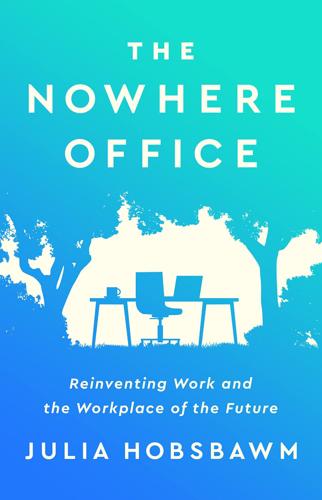
The Nowhere Office: Reinventing Work and the Workplace of the Future
by
Julia Hobsbawm
Published 11 Apr 2022
‘Google May Cut Pay of Staff Who Work from Home’, BBC News, 11 August 2021, https://www.bbc.co.uk/news/business-58171716 22. Sarah O’Connor, ‘Cutting Pay for Remote Workers is a Risky Move’, Financial Times, 17 August 2021, https://www.ft.com/content/a37150e3-7480-4181-90e4-1ce9dc5d1d39 23. Zoe Schiffer, ‘Apple Employees Push Back Against Returning to the Office in Internal Letter’, Verge, 4 June 2021, https://www.theverge.com/2021/6/4/22491629/apple-employees-push-back-return-office-internal-letter-tim-cook 24. ‘11.8% CAGR, Employee Communication Software Market is Emerging with $1,780.09 Million by 2027’, Industry Today, 8 June 2021, https://industrytoday.co.uk/it/11-8--cagr--employee-communication-software-market-is-emerging-with--1-780-09-million-by-2027 25.
…
Barry Levine, ‘Study: Gen Z Cares About Issues and is Skeptical of Brands’, Marketing Dive, 30 May 2019, https://www.marketingdive.com/news/study-gen-z-cares-about-issues-and-is-skeptical-of-brands/555782/ 15. https://www.businessofpurpose.com/statistics New Paradigm Strategy Group & Fortune, 2019 16. https://www.businessofpurpose.com/statistics DDI World, 2018 17. Zoe Schiffer, ‘Apple Employees Push Back Against Returning to the Office in Internal Letter’, Verge, 4 June 2021, https://www.theverge.com/2021/6/4/22491629/apple-employees-push-back-return-office-internal-letter-tim-cook 18. ‘Machines Will Do More Tasks Than Humans by 2025: WEF’, Phys.org, 17 September 2018, https://phys.org/news/2018-09-machines-tasks-humans-wef.html 19. Scott Stein, ‘Virtual Mark Zuckerberg Showed Me Facebook’s New VR Workplace’, Cnet, 19 August 2021, https://www.cnet.com/tech/computing/virtual-mark-zuckerberg-showed-me-facebooks-new-vr-workplace-solution/ 20.
…
Some companies are clearly struggling to accept the serious shift in mindset and values of their talent. It remains to be seen whether management will rise to the challenges of supporting home-based working or continue to believe they can persuade and cajole workers to be present in the office when they don’t want to be. There was a pushback experienced by other major companies such as Apple, which found itself forced to row back from dictating office working days post-pandemic.23 Anne-Elisabeth Moutet, a French broadcaster and columnist based in Paris, understands presenteeism as something else too: a feature of power politics: The French system hates hybrid. Because the French boss wants to know what his subordinates are doing, very micromanaging most of the time.

Palo Alto: A History of California, Capitalism, and the World
by
Malcolm Harris
Published 14 Feb 2023
Along with John Ashcroft, Steve Jobs helped lead America’s B2K transition, and the internet has not changed back. The connection between Steve Jobs and Apple’s customer base is intense and bizarre, but it’s at most half the story: DESIGNED BY APPLE IN CALIFORNIA reads the most common label on the company’s products, followed by ASSEMBLED IN CHINA. Behind Apple’s success was another world-historical phenomenon: the rise of Chinese high-tech manufacturing. In 1998, Jobs hired a VP from leading compatibles producer Compaq named Tim Cook to build Apple’s offshore manufacturing relationships. Cook depended on those relationships at Compaq, and at Apple he turned to one of his former contractors: Terry Gou, the politically connected head of the Taiwanese electronics firm Hon Hai Precision Industry Co., Ltd.
…
Of the cracks in Apple’s notoriously uniform corporate communications front, the biggest was probably the one in the Chinese-language Commercial Times, which reported a couple of months early that the product was due to arrive on the market in the first half of 2007.1 Its sources knew better than anyone when the iPhone was going to be ready: They were building it. Demos like Macworld 2007 gave Apple fans an inside look at the product, somewhere between the regular public sales pitch and an internal company celebration. This fits with the outsized role that devotees play in Apple’s success as well as the curious parasocial relationship these super-users have with the computer brand. Jobs introduced the supporting cast: Apple designer extraordinaire Jony Ive, Google and Yahoo! CEOs Eric Schmidt and Jerry Yang, as well as the head of exclusive wireless partner (and recent AT&T acquisition) Cingular. Tim Cook got a shoutout during a display of the “visual voicemail” technology, but there was no mention of Foxconn or the nation of China at all.
…
Lizhi, “A Screw Fell to the Ground,” from “The Poetry and Brief Life of a Foxconn Worker.” 13. “Foxconn to Raise Wages Again at China Plant,” Reuters, October 1, 2010. 14. Tripp Mickle and Yoko Kubota, “Tim Cook and Apple Bet Everything on China. Then Coronavirus Hit,” Wall Street Journal, March 2, 2020. 15. Paul Mozur, “Apple Puts Key Contractor on Probation over Labor Abuses in China,” New York Times, November 9, 2020. 16. David Barboza, “How China Built ‘iPhone City’ with Billions in Perks for Apple’s Partner,” New York Times, December 29, 2016. 17. Ibid. 18. John Charles Smith, Imperialism in the Twenty-First Century: Globalization, Super-Exploitation, and Capitalism’s Final Crisis (New York: Monthly Review Press, 2016), 30. 19.
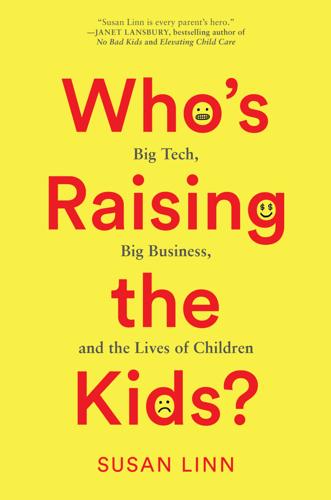
Who’s Raising the Kids?: Big Tech, Big Business, and the Lives of Children
by
Susan Linn
Published 12 Sep 2022
Neal Larson, “Apple Would Be in Trouble with Customers If They Weren’t a Cult,” Idaho State Journal, December 31, 2017, idahostatejournal.com/opinion/columns/apple-would-be-in-trouble-with-customers-if-they-weren/article_feb63db0-7e47-51a2-a17d−6e95a8ebbf69.html; Lindsay Willott, “10 Brand Loyalty Statistics for 2017,” Customer Thermometer, May 25, 2017, www.customerthermometer.com/customer-retention-ideas/brand-loyalty-statistics-2017; Kurt Badenhausen, “The World’s Most Valuable Brands 2019: Apple on Top at $206 Billion,” Forbes, May 22, 2019; Marty Swant, “Apple, Microsoft and Other Tech Giants Top Forbes’ 2020 Most Valuable Brands List,” Forbes, May 22, 2019; Communications, “Forbes Releases Seventh Annual World’s Most Valuable Brands List,” Forbes, May 23, 2017. 40. “Apple 1984 Super Bowl Commercial Introducing Macintosh Computer,” www.youtube.com/watch?v=2zfqw8nhUwA. 41. “Apple CEO Tim Cook: ‘Privacy Is a Fundamental Human Right,’” NPR, October 1, 2015, www.npr.org/sections/alltechconsidered/2015/10/01/445026470/apple-ceo-tim-cook-privacy-is-a-fundamental-human-right. 42. Chen Guangcheng, “Apple Can’t Resist Playing by China’s Rules,” New York Times, January 23, 2018. 43. Jack Nicas, Raymond Zhong, and Daisuke Wakabayashi, “Censorship, Surveillance and Profits: A Hard Bargain for Apple in China,” New York Times, May 17, 2021. 44.
…
The screen explodes into a bright white light, and we see and hear the following words: “On January 24th Apple Computer will launch Macintosh, and you’ll see why 1984 won’t be like 1984.” The ad launched a decades-long marketing trajectory that positioned Apple as antiauthoritarian, pro-freedom, pro-democracy, and pro-nonconformity. In 2015, Apple’s CEO Tim Cook reinforced this branding when he was interviewed about privacy on National Public Radio. He described privacy as “a fundamental human right,”41 and claimed that Apple was more protective of its customers than other tech companies were. Yet in 2017, Apple began allowing the highly authoritarian, nondemocratic Chinese government to access data from all Chinese citizens who stored data in Apple’s iCloud—including their contacts, photos, text files, and calendars.42 Four years later, the New York Times quoted Nicholas Bequelin, East Asia director for the human rights group Amnesty International, describing Apple as a “cog in the censorship machine that presents a government-controlled version of the internet.”
…
Yet in 2017, Apple began allowing the highly authoritarian, nondemocratic Chinese government to access data from all Chinese citizens who stored data in Apple’s iCloud—including their contacts, photos, text files, and calendars.42 Four years later, the New York Times quoted Nicholas Bequelin, East Asia director for the human rights group Amnesty International, describing Apple as a “cog in the censorship machine that presents a government-controlled version of the internet.” Bequelin went on to say that “if you look at the behavior of the Chinese government, you don’t see any resistance from Apple—no history of standing up for the principles that Apple claims to be so attached to.”43 Apple is just one example of a corporation whose actions belie its branding.
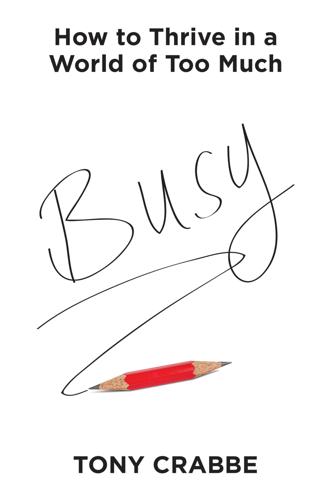
Busy
by
Tony Crabbe
Published 7 Jul 2015
Kjell Nordström and Jonas Ridderstrale, Karaoke Capitalism (New York: Financial Times Prentice Hall, 2004). 6. Cited by Susan Adams, “The Test That Measures a Leader’s Strengths,” Forbes.com (August 28, 2009), http://www.forbes.com/2009/08/28/strengthsfinder-skills-test-leadership-managing-jobs.html. 7. Quoted by Dan Frommer, “Apple COO Tim Cook: ‘We Have No Interest In Being In The TV Market,’” Business Insider (February 23, 2010), http://www.businessinsider.com/live-apple-coo-tim-cook-at-the-goldman-tech-conference-2010-2. 8. Robert S. Kaplan and David P. Norton, “The Balanced Scorecard: Measures That Drive Performance,” Harvard Business Review 83 (July–August 2005): 172–80. 9. M. Baghai, S. Coley, and D.
…
We say “no” to good ideas every day. We say “no” to great ideas in order to keep the amount of things we focus on very small in number so that we can put enormous energy behind the ones we choose.7 —Tim Cook, Apple CEO Succeeding in a world of too much is not about producing “more”; in fact, it is about doing less, better and with more impact. It’s about focusing on fewer, bigger things with enormous energy. Like Apple. Here are some practical tactics to help you to do this. Do the Big Stuff First There is a little experiment Stephen Covey used to do with rocks, gravel and sand. You take a big jug and fill it with big rocks.
…
Product-based positioning can come from either strategy. Henkel, the German company, invented the glue stick to allow people to easily and cleanly glue paper. Henkel released Pritt Stick in 1969, which fit a need (we didn’t know we had) in schools and offices; by 2001 they were being sold in 121 countries. Apple is the obvious example of sexy. At the time iPods were becoming dominant, there were many other MP3 players, but none were so cool. It’s about doing very few things really well, so that they stand out from the competition in a crowded market. How could you differentiate yourself through what you do?

Platform Revolution: How Networked Markets Are Transforming the Economy--And How to Make Them Work for You
by
Sangeet Paul Choudary
,
Marshall W. van Alstyne
and
Geoffrey G. Parker
Published 27 Mar 2016
Charles Duhigg, “How Companies Learn Your Secrets,” New York Times, February 16, 2012, http://www.nytimes.com/2012/02/19/magazine/shopping-habits.html?pagewanted=all. 18. Wade Roush, “The Story of Siri, from Birth at SRI to Acquisition by Apple—Virtual Personal Assistants Go Mobile,” xconomy, June 14, 2010, http://www.xconomy.com/san-francisco/2010/06/14/the-story-of-siri-from-birth-at-sri-to-acquisition-by-apple-virtual-personal-assistants-go-mobile/?single_page=true. 19. “A letter from Tim Cook on Maps,” Apple, http://www.apple.com/letter-from-tim-cook-on-maps/. 20. Amadeo, “Google’s Iron Grip on Android.” CHAPTER 8: GOVERNANCE 1. Josh Dzieza, “Keurig’s Attempt to DRM Its Coffee Cups Totally Backfired,” The Verge, February 5, 2015, http://www.theverge .com/2015/2/5/7986327/keurigs-attempt-to-drm-its-coffee-cups-totally-backfired. 2.
…
Apple’s decision to create its own mapping app to compete with Google Maps made sound strategic sense—despite the fact that the initial service was so poorly designed that it caused Apple significant public embarrassment. The new app misclassified nurseries as airports and cities as hospitals, suggested driving routes that passed over open water (your car had better float!), and even stranded unwary travelers in an Australian desert a full seventy kilometers from the town they expected to find there. iPhone users erupted in howls of protest, the media had a field day lampooning Apple’s misstep, and CEO Tim Cook had to issue a public apology.19 Apple accepted the bad publicity, likely reasoning that it could quickly improve its mapping service to an acceptable quality level—and this is essentially what has happened.
…
These laws moderate behavior at both the user and the ecosystem level. For example, at the user level, the Apple rule that allows a user to share digital content among up to six devices or family members prevents unlimited sharing while nonetheless providing economic incentives for the purchase of Apple services and making a reasonable amount of sharing convenient.22 At the ecosystem level, the Apple rule compelling app developers to submit all code for review, combined with the rule that releases Apple from any duty of confidentiality, allows Apple to proliferate best practices.23 Platform laws should be, and usually are, transparent.
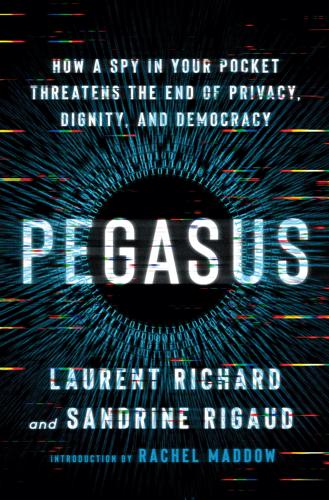
Pegasus: How a Spy in Your Pocket Threatens the End of Privacy, Dignity, and Democracy
by
Laurent Richard
and
Sandrine Rigaud
Published 17 Jan 2023
The talk in that building and beyond was that this new facility would be the launchpad for future versions of Apple’s signature product, the iPhone. If anybody at Apple had an inkling that a few dozen NSO cyber-researchers right around the corner from the new digs were spending their days and nights hunting for weaknesses to exploit in the iPhone operating software, they didn’t show it. NSO was barely known at the time and not really on Apple’s threat radar. So the relatively small spyware company’s presence certainly didn’t shake the conviction that the business district of Herzliya, just north of Tel Aviv, was the place to be. “Apple is in Israel,” Tim Cook said on his visit to inaugurate the new R&D center in February 2015, “because the engineering talent here is incredible.”
…
CHAPTER FOURTEEN THE FIRST DON’T When CEO Tim Cook and his gurus were deciding where to situate Apple Inc.’s largest R&D facility outside the United States, they had few limits. The company’s annual net profits were around $40 billion a year and climbing, as was the global market share of its mobile phone. Cook and company had the planet to choose from, and they picked a midsize suburb pinched between sea and desert, 7,500 miles from their headquarters in Cupertino, California, in a country with less than nine million inhabitants and a gross domestic product in the vicinity of Norway’s and Nigeria’s. Apple erected a gleaming twenty-first-century glass box of an eco-friendly building in that faraway spot and reserved 180,000 square feet of office space for seven hundred of its employees—with room to grow.
…
The number of cybersecurity firms in Israel had grown from 171 in 2013 to 420 in 2017; private investments had sextupled in those same four years, to more than $800 million. Team8, a seed fund started by a former commander of 8200, was nearing the $100 million mark after new investments from Microsoft, Qualcomm, and Citi. The personal investment fund of Google executive chairman Eric Schmidt had been one of the first to kick money into that fund. So Tim Cook and Apple were in the flood tide. Amazon, Google, and Microsoft had operations in Israel, along with NEC and IBM and Cisco. “We have special programs for comfortable landing for companies that are coming here,” Netanyahu explained. Netanyahu had become the chief proselytizer for the new industry, which gave him plenty chances to take credit as its chief visionary.
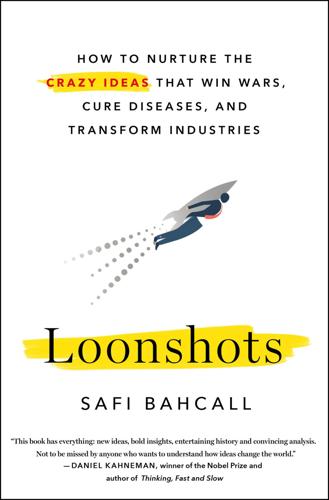
Loonshots: How to Nurture the Crazy Ideas That Win Wars, Cure Diseases, and Transform Industries
by
Safi Bahcall
Published 19 Mar 2019
Just like the failure of Friendster prior to Facebook, or the failure of cholesterol-lowering drugs and diets prior to Endo’s statins, or the failure of the Comets before the Boeing 707, IBM’s failure with OS/2 had been a False Fail. In rescuing Apple, Jobs demonstrated how to escape the Moses Trap. He had learned to nurture both types of loonshots: P-type and S-type. He had separated his phases: the studio of Jony Ive, Apple’s chief product designer, who reported only to Jobs, became “as off-limits as Los Alamos during the Manhattan Project.” He had learned to love both artists and soldiers: it was Tim Cook who was groomed to succeed him as CEO. Jobs tailored the tools to the phase and balanced the tensions between new products and existing franchises in ways that have been described in many books and articles written about Apple.
…
Steve Wozniak, Apple’s cofounder along with Jobs, who was working on the Apple II franchise, left, along with other critical employees; the Mac launch failed commercially; Apple faced severe financial pressure; Jobs was exiled; and John Sculley took over (eventually rescuing the Mac and restoring financial stability). When Jobs returned twelve years later, he had learned to love his artists (Jony Ive) and soldiers (Tim Cook) equally. Although equal-opportunity respect is a rare skill by nature, it can be nurtured with practice (more on this in chapter 5). Manage the transfer, not the technology Bush, although a brilliant inventor and engineer, pointedly stayed out of the details of any one loonshot.
…
Elevating Jobs first to interim CEO in mid-1997 and then to full-time CEO in early 1998 was viewed as a Hail Mary play, and one with a particularly small chance of saving the company. The many failed promises of NeXT had reduced Jobs’s credibility as a technology leader in the eyes of industry analysts and observers. When Jobs finally took over, gone was the dismissive attitude toward soldiers. In March 1998, he hired Tim Cook, known as the “Attila the Hun of inventory,” from Compaq to run operations. Also gone were the blinders to S-type loonshots. For example, by 2001 music piracy on the internet was rampant. The idea of an online store selling what could easily be downloaded for free seemed absurd. And no one sold music online that customers could keep on their own computers (online music, at the time, was available only through subscription: monthly fees for streaming songs).
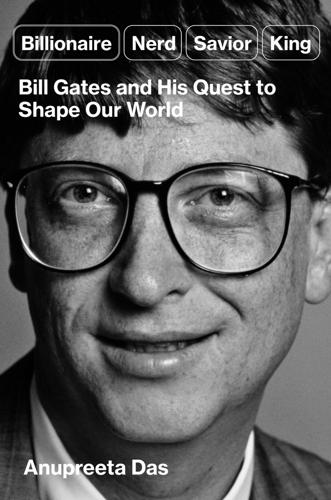
Billionaire, Nerd, Savior, King: Bill Gates and His Quest to Shape Our World
by
Anupreeta Das
Published 12 Aug 2024
In July 2020, a House judiciary panel summoned the chief executives of Amazon, Apple, Alphabet, and Meta to answer questions about the business tactics that led to their dominance. Just years earlier, the same companies were heralded for their innovation. But the mood was darkening amid reports of their overwhelming dominance and alleged anticompetitive behavior, and their potential misuse and lack of oversight of consumer data. Lawmakers from both parties grilled the executives for more than five hours. Each executive—in addition to Bezos, Zuckerberg, Pichai, and Tim Cook of Apple were present, and all testified over video conference because of the pandemic—expressed humility.
…
“Taken together, the image of a computer scientist that emerges in the U.S. is one of a genius male computer hacker who spends a great deal of time alone on the computer, has an inadequate social life, and enjoys hobbies involving science fiction,” Cheryan and her coauthors write.32 Nerds Turned Bros Every July, as business moguls fly in from all over the world to Sun Valley for their annual conference, reporters and photographers jostle to identify the attendees. With little chance of covering the actual events or even peeking at the agenda since the media is not invited, reporting on billionaire fashion has become something of a tradition over the years. Reid Hoffman, the founder of LinkedIn, in a track jacket. Tim Cook, the chief executive of Apple, in a polo shirt. Facebook’s Zuckerberg in one of his trademark gray tees. Barry Diller in a Dior aloha shirt. Michael Bloomberg in a lemon-yellow plaid button-up. Were those Allbirds on Sheryl Sandberg? Blue tinted lenses on Andreas Halvorsen, a hedge fund manager. Stacey Bendet of the fashion house Alice & Olivia in a floral dress.
…
Many technology industry executives and analysts say that Gates’s behavior in front of Congress became an example of what not to do for founders and chief executives of a later generation of tech giants. Along with Zuckerberg, top executives of Google and Google’s parent Alphabet, Amazon, Apple, and others who have been hauled to Congress several times in recent years have remained civil and humble even when they have provided little information to lawmakers. In the summer of 2020, Zuckerberg, Jeff Bezos, Tim Cook, and Sundar Pichai testified in front of the House Judiciary Committee on whether technology companies have too much power. As lawmakers accused the executives of everything from abusing their dominance to right-wing bias, they each sat upright without slumping, their facial expressions showing no emotion.
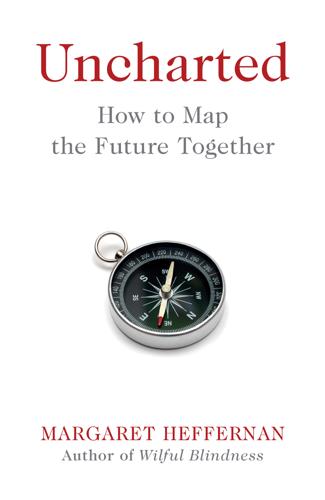
Uncharted: How to Map the Future
by
Margaret Heffernan
Published 20 Feb 2020
The founder of Bulletproof Coffee is equally obsessed by the importance of his own life: ‘The Bulletproof Coffee Founder Has Spent $1 Million in His Quest to Live to 180’, www.menshealth.com/health/a25902826/bulletproof-dave-asprey-biohacking/ 9 2019 commencement address by Apple CEO Tim Cook at Stanford University, news.stanford.edu/2019/06/16/remarks-tim-cook-2019-stanford-commencement, accessed 8 August 2019 10 The hospice movement proved a tremendous ally to the gay community during the AIDS crisis 10 BE PREPARED 1 The World Health Organization considers the death toll of 11,310 to be a significant under-estimate.
…
Why is he, like fellow transhumanists Peter Thiel and Sam Altman, so uninterested in real problems, like the fall in life expectancy, even in rich countries like the United States? Or the immediate climate crisis that could, after all, make eternal life pretty miserable? The vision feels literally disembodied and strangely inhuman. Was it these technologists that Tim Cook had in mind when he said: ‘You cannot possibly be the greatest cause on the earth, because you aren’t built to last’?9 These men seem incapable of imagining a world being any good without them. Is that the bug they’re trying to fix? The transhumanist world is largely white, male, middle-aged and middle-class.
…
We used to ignore these systems but their problems have become ours now, when a bank halfway across the world crashes or a government falls. Apple’s iPhone may have been ‘designed in California’, but making it depends on raw materials and suppliers from Ireland, the Philippines, China, Taiwan, Japan, Austria, Korea, Singapore, Thailand, Germany, the UK, the Netherlands, Indonesia, Puerto Rico, Brazil, Malaysia, Israel, the Czech Republic, Mexico, Vietnam, Morocco, Malta, Belgium and most of the United States. This complex supply chain is designed to reduce costs, take advantage of labour specialisms, employment conditions, currency fluctuations and tax breaks. But they expose Apple (and similar phone manufacturers) to natural disasters, labour disputes, economic volatility, social turmoil, religious strife, trade wars and political discontent: all factors over which the company has no control, little influence and poor foresight.
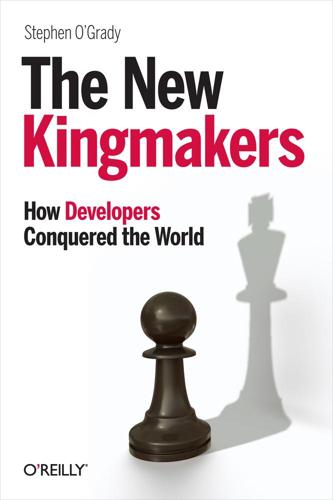
The New Kingmakers
by
Stephen O'Grady
Published 14 Mar 2013
Even its forgotten desktop business is showing steady if unspectacular growth. There are many factors contributing to Apple’s remarkable success, from the brilliance of the late Steve Jobs to the supply chain sophistication of current CEO Tim Cook. And of course, Apple’s success is itself fueling more success. In the tablet market, for example, would-be competitors face not only the daunting task of countering Apple’s unparalleled hardware and software design abilities, but the economies of scale that allow Apple to buy components more cheaply than anyone else. The perfect storm of Apple’s success is such that some analysts are forecasting that it could become the world’s first trillion-dollar company.
…
Here are five businesses that, in at least one area, understood the importance of developers and engaged appropriately. Apple In August 2011, a month after reporting record earnings, Apple surpassed Exxon as the world’s biggest company by market capitalization. This benchmark was reached in part because of fluctuations in oil price that affected Exxon’s valuation, but there’s little debate that Apple is ascendant. By virtually any metric, Steve Jobs’s second tenure at Apple has turned into one of the most successful in history, in any industry. Seamlessly moving from hit product to hit product, the Apple of 2012 looks nothing like the Apple of the late nineties, when Dell CEO Michael Dell famously suggested that Apple should be shut down, to “give the money back to the shareholders.”
…
Lost in the shuffle has been the role of developers in Apple’s success. But while the crucial role played by Apple’s developers in the company’s success might be lost on the mainstream media, it is not lost on Apple itself. In March 2012, Apple dedicated the real estate on its website to the following graphic. Setting aside the 25 billion applications milestone for a moment, consider the value of the home page. For a major retailer to devote the front page of a website to anything other than product is unusual. This action implies that Apple expects to reap tangible benefits from thanking its developers—most notably when it comes to recruiting additional developers.
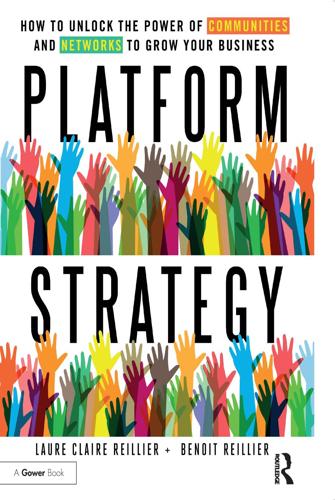
Open for Business Harnessing the Power of Platform Ecosystems
by
Lauren Turner Claire
,
Laure Claire Reillier
and
Benoit Reillier
Published 14 Oct 2017
These outsourcing decisions do not fundamentally alter the business model of the company, however, since it keeps tight control over the end-to-end production process of its devices. 18 Statista, June 2016, www.statista.com/statistics/276623/number-of-apps-available-inleading-app-stores/. 19 If you want to better understand the nature of this ‘governance’, you may want to have a look at the App Store guidelines for app developers: https://developer.apple.com/appstore/review/guidelines/. 20 Apple’s services include the various app stores, as well as iTunes, iCloud, Apple Music, Apple Pay, Apple Care, licensing and other services. 21 Fiscal data from Apple’s website, www.apple.com/pr/library/2016/. 22 http://uk.businessinsider.com/apple-ceo-tim-cook-services-q3-2016-7. 23 Apple announced in June 2016 that this 30% figure could go down to 15% (with 85% going to developers) in some circumstances. See www.theverge.com/2016/6/8/ 11880730/apple-app-store-subscription-update-phil-schiller-interview. 24 Horace Dediu, Asymco (2014), www.asymco.com/, www.asymco.com/2015/08/26/muchbigger-than-hollywood/ and www.asymco.com/2015/01/22/bigger-than-hollywood/. 72 Platform-powered ecosystems 25 At the developer level, Apple now allows third-party developers to plug into Siri across multiple operating systems (iOS, tvOS and macOS).
…
A closer review of revenues generated by Apple’s non-hardware activities since 2005 shows how apps, which were responsible for only a fraction of Apple’s revenues in 2008, are now a multibillion-dollar business. In fact, Tim Cook expects that it will be ‘the size of a Fortune 100 company by the end of 2017’.22 And this, of course, excludes the amount of money that was paid to the developers of these apps (Apple keeps 30% of the price paid for the apps sold on its App Store).23 When looking at total App Store billings (what customers actually spend), Figure 6.5 shows that they are now larger than Hollywood’s US box office revenues and are likely to overtake Hollywood’s global box office revenues in 2016.24 Apple has been able to match different business models to different activities in order to design a self-reinforcing business architecture.
…
Through 64 Platform-powered ecosystems Figure 6.3 Apple’s main business lines Source: Apple website, Wikipedia, Launchworks analysis Table 6.2 Apple’s ecosystem APPLE Apple hardware (iPhone, MacBook, iPad, Apple Watch) Apple Operating Systems (iOS, macOS, Watch OS) Digital Stores (iTunes, Apple Music) App stores (iOS, Mac) Cloud services (iCloud) Apple software (iMovie, iPhoto) Platform Retailer/ Reseller Input/Output business 3 3 3 3 3 3 Source: Launchworks analysis its operating systems and app stores for computers, mobile phones, tablets and wearables, Apple manages a two-sided platform between consumers and software providers. This model fosters a diverse range of software applications. As of June 2016, Apple’s App Store had more than 2 million applications.18 It is interesting to note that Apple, unlike other marketplaces, remains very keen to control the experience of its products end-to-end, and has therefore maintained strong governance around its businesses.

Thinking Machines: The Inside Story of Artificial Intelligence and Our Race to Build the Future
by
Luke Dormehl
Published 10 Aug 2016
Get Ready for the Internet to Disappear In January 2015, Google’s executive chairman Eric Schmidt caused a stir while speaking at the World Economic Forum in Davos, Switzerland. Asked about his predictions for the future of the Web, Schmidt said, ‘I will answer very simply that the Internet will disappear.’ There was, of course, nothing simple about this answer. Upon first listen, it was a bit like Apple CEO Tim Cook telling people that they should put down the smartphones and have a face-to-face conversation with friends, or a movie studio boss saying that cinema is stuck in a rut and people ought to spend their time reading books or going for walks. In reality, Schmidt was saying nothing of the kind. Instead, he was making an observation about what has happened to technology in recent years as it has become both smaller and more pervasive.
…
The sounds of classic rock and roll – which extrapolated ideas from the rhythm and blues music of the 1940s – make sense to a 1955 audience. Heavy metal music, which did the same to ideas from 1960s and 70s rock music, made no sense. However, the act of simply combining ideas by themselves is not necessarily creative, even if the result is novel. As Apple’s CEO Tim Cook has said about unnecessary invention, ‘You can converge a toaster and a refrigerator, but you know those things are not going to probably be pleasing to the user.’ One of my favourite movies of all time is a film by Robert Altman called The Player, a satire on Hollywood and its sometimes lack of creativity.
…
Like Google, Facebook and other tech companies, Apple has competed fiercely to hire AI experts in recent years. According to a former Apple employee, the company’s number of machine learning experts has tripled or quadrupled in the past several years. As with these other companies, Apple uses humans as part of its largely AI-driven services. However, unlike the other companies, Apple presents its human workers as a selling point; not simply as a stand-in for the bits of its technology which don’t quite work properly yet. When Apple introduced its much-anticipated Apple Music streaming service in June 2015, one of its most heavily advertised features was its reliance on humans with specialist music knowledge to curate playlists.
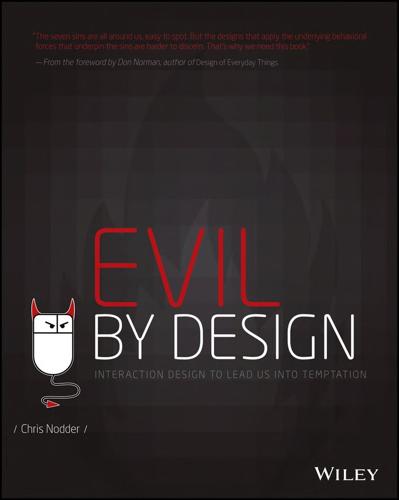
Evil by Design: Interaction Design to Lead Us Into Temptation
by
Chris Nodder
Published 4 Jun 2013
Use self-generated persuasion. Apple fans are the company’s best salespeople. Hype and limited initial availability lead to total strangers asking early adopters how they like their new toy. It’s unlikely these avid fans are going to say, “I hate it!” 6. Construct vivid appeals. New products are demonstrated on-stage using a few select applications that show off the key elements of the product in an emotionally compelling manner (editing vacation photos, planning an exciting event, and so on). 7. Use pre-persuasion. Apple often shies away from direct technical comparison with competitors. Indeed, CEO Tim Cook said, “[Product specifications] are the things tech companies invent because they can’t provide a great experience.”
…
Pratkanis’ techniques: Anthony R. Pratkanis. “How to Sell a Pseudoscience.” Skeptical Inquirer T9 (1995). Tim Cook quote: Goldman Sachs Technology and Internet conference, February 12, 2013. BBC Superbrands documentary: Alex Riley and Adam Boome. “Superbrands' success fuelled by sex, religion and gossip” BBC (bbc.co.uk). May 16, 2011. Retrieved December 2012. Kirsten Bell’s observations: Francie Diep. “Why Apple Is the New Religion.” TechNewsDaily (technewsdaily.com). Oct 23 2012. Retrieved December 2012. Apple as religion: Pui-Yan Lam. “May the Force of the Operating System be with You: Macintosh Devotion as Implicit Religion.”
…
The newer influx of Apple users may have diluted the original fervor of Mac devotees, but it’s still possible to see rationalization at work just by starting a discussion of the relative value-per-dollar of Apple computers versus generic PCs. 3. Manufacture source credibility and sincerity. Steve Jobs, the now-deceased father of Apple, has been replaced by head designer Jony Ive as the spiritual leader of the Apple clan. 4. Establish a granfalloon. Enter any Apple store to see ritual, symbolism, and feelings at work creating a feeling of belonging for the in-group of Apple users. Door greeters might as well be saying, “Welcome home.” 5.
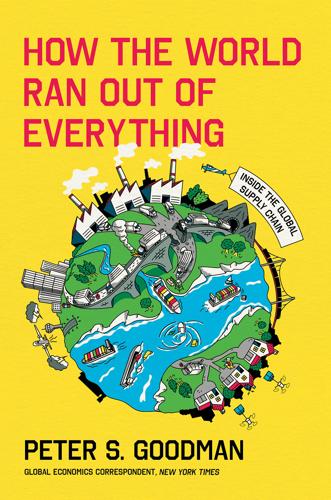
How the World Ran Out of Everything
by
Peter S. Goodman
Published 11 Jun 2024
The merits of this proposition were seemingly affirmed by the fact that the world’s most successful companies were embracing lean. Apple had long been ruled by a singular dedication to Just in Time. Its chief executive, Tim Cook, once described inventory as “fundamentally evil12.” “You kind of want to manage it13 like you’re in the dairy business,” Cook said, channeling his inner Toyota. “If it gets past its freshness date, you have a problem.” But as COVID-19 shut the Chinese factories that assembled the iPhone, Cook faced a different problem. His company, along with countless others, suddenly could not purchase the parts needed to make his company’s products. And if Apple could not find the components it needed, what hope was there for a small start-up confined to Mississippi?
…
And if Apple could not find the components it needed, what hope was there for a small start-up confined to Mississippi? Until the pandemic, Tim Cook had not been wrong. Cutting inventory really had tended to enrich corporations. That fact had been validated for years on stock markets from Hong Kong to London to New York. Ever since the 1970s, executives of publicly traded companies had been consumed with increasing the value of their shares—or risk getting fired. And they personally pocketed some of the gains, because their pay packages were increasingly dominated by grants of shares. The management playbook included myriad ways for a company to lift the value of its shares, from firing workers—a Wall Street favorite—to raising prices or increasing sales.
…
“supply chain organization”: Knut Alicke, Elena Dumitrescu, Christoph Lennartz, and Markus Leopoldseder, “New Organizational Wires for Digital Supply Chains,” McKinsey & Company, April 5, 2018, https://www.mckinsey.com/business-functions/operations/our-insights/new-organizational-wires-for-digital-supply-chains. 12. “fundamentally evil”: Adam Lashinsky, “Tim Cook: The Genius Behind Steve,” Fortune, August 24, 2011. 13. “want to manage it”: Ibid. 14. “keep reducing inventory”: Interview with ManMohan S. Sodhi, April 20, 2021. 15. Between 1981 and 2000: Hong Chen, Murray Z. Frank, and Owen Q. Wu, “What Actually Happened to the Inventories of American Companies Between 1981 and 2000?”
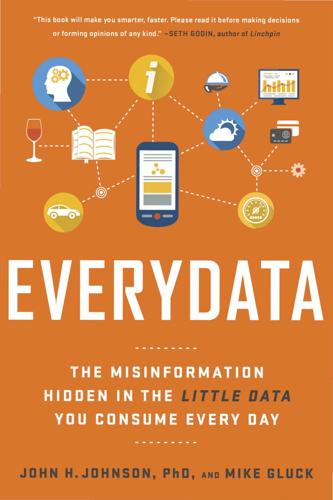
Everydata: The Misinformation Hidden in the Little Data You Consume Every Day
by
John H. Johnson
Published 27 Apr 2016
Ever,” Flowing Data website, accessed August 4, 2015. http://flowingdata.com/2009/11/26/fox-news-makes-the-best-pie-chart-ever/. The pie chart was aired on Fox Chicago, and the source was given as Opinion Dynamics. 12. David Yanofsky, “The Chart Tim Cook Doesn’t Want You to See,” Quartz website, September 10, 2013, http://qz.com/122921/the-chart-tim-cook-doesnt-want-you-to-see/. 13. For a stunning look at how data can be captured, check out www.dear-data.com—“a year-long, analog data drawing project” by two extremely talented information designers: Giorgia Lupi and Stefanie Posavec, “Dear Data,” accessed June 7, 2015, http://www.dear-data.com/. 14.
…
Finally, identify outliers, and understand the impact they can have on your average. Some outliers are perfectly valid parts of the data set. Other times, it makes sense to exclude extreme examples in order to get a fair answer to the question you’re asking. One bad apple can spoil the bunch, as they say. Not every outlier is a bad apple—but an outlier can skew your results in a way you need to be aware of.46 4 Are You Smarter Than an iPhone-Using, Radiohead-Loving Republican? Understanding Correlation Versus Causation As any self-respecting parent will tell you, there’s a lot of pressure to make sure little Susie and Johnny are smarter than their classmates.
…
For example, Starbucks chief creative officer and president of Global Innovation and Evolution Fresh Retail (and former director of real estate) Arthur Rubinfeld has written an entire book on how everyday franchisees can learn the lessons of Starbucks with respect to site selection; his secrets include looking for oil stains in the parking lot (a sign that there’s lots of traffic).18 Maybe a Starbucks location is more likely to have sidewalks, and people like living where there are sidewalks. Maybe every time a Starbucks opens, an Apple Store opens next door—and that’s what is driving the rise in real estate prices. We don’t know. And that’s the point. OMITTED VARIABLES All of these factors—town centers, sidewalks, Apple Stores—are possible omitted variables. An omitted variable is one of the primary reasons why correlation doesn’t equal causation. Remember when we talked about bivariate relationships—relationships between two variables?

The Alignment Problem: Machine Learning and Human Values
by
Brian Christian
Published 5 Oct 2020
Some movements are made; . . . but the first actions are seen to be quite wrong; there is a manifest want of coincidence, which originates a new attempt, and that failing, another is made, until at last we see that the posture is hit. —ALEXANDER BAIN45 What would I do? I wouldn’t be in the situation. —APPLE CEO TIM COOK, WHEN ASKED WHAT HE WOULD DO IN THE SITUATION CONFRONTING FACEBOOK CEO MARK ZUCKERBERG46 It’s 2009, and twenty years after ALVINN but in the very same building, Carnegie Mellon graduate student Stéphane Ross is playing Super Mario Kart—or, rather, a free and open-source derivative called SuperTuxKart, featuring the Linux mascot, a lovable penguin named Tux.
…
“Interpretability Beyond Feature Attribution: Quantitative Testing with Concept Activation Vectors (TCAV).” In Proceedings of the 35th International Conference on Machine Learning, edited by Jennifer Dy and Andreas Krause, 2668–77. PMLR, 2018. Kimball, Spencer, and Paayal Zaveri. “Tim Cook on Facebook’s Data-Leak Scandal: ‘I Wouldn’t Be in This Situation.’” CNBC, March 28, 2018. https://www.cnbc.com/2018/03/28/tim-cook-on-facebooks-scandal-i-wouldnt-be-in-this-situation.html. Kindermans, Pieter-Jan, Sara Hooker, Julius Adebayo, Maximilian Alber, Kristof T. Schütt, Sven Dähne, Dumitru Erhan, and Been Kim. “The (Un)reliability of Saliency Methods.” arXiv Preprint arXiv:1711.00867, 2017.
…
See also Pomerleau, “Knowledge-Based Training of Artificial Neural Networks for Autonomous Robot Driving”: “Autonomous driving has the potential to be an ideal domain for a supervised learning algorithm like backpropagation since there is a readily available teaching signal or ‘correct response’ in the form of the human driver’s current steering direction.” 44. The course was Sergey Levine’s CS294-112, Deep Reinforcement Learning; this lecture, “Imitation Learning,” was delivered on December 3, 2017. 45. Bain, The Senses and the Intellect. 46. Kimball and Zaveri, “Tim Cook on Facebook’s Data-Leak Scandal.” 47. Ross and Bagnell, in “Efficient Reductions for Imitation Learning,” discuss their architecture choice: a three-layer neural network taking in 24-by-18-pixel color images, with 32 hidden units and 15 output units. Pomerleau, “Knowledge-Based Training of Artificial Neural Networks for Autonomous Robot Driving,” discusses the architecture of ALVINN, made from a three-layer neural network taking in 30-by-32-pixel black-and-white images, with 4 hidden units and 30 output units. 48.

Company of One: Why Staying Small Is the Next Big Thing for Business
by
Paul Jarvis
Published 1 Jan 2019
Petitions and boycotts quickly went up online, with thousands of ex-customers, feeling betrayed by the change in the core values on which Daiya had been founded, signing on within days of the announcement. Several retailers, like Portland’s Food Fight and Brooklyn’s Orchard Grocer, stopped selling Daiya immediately. Within hours, over 6,000 people signed a petition to boycott the brand. Bear in mind that Daiya is not just an isolated incident. When Apple released its bug-filled maps software, CEO Tim Cook had to issue a public apology. When United Airlines yanked a customer from his paid-for seat, the internet exploded, and United stock plummeted by a market value of about $1 billion. When Nivea staged an ill-conceived “White Is Purity” campaign that was quickly embraced by white supremacy groups (not their target audience), the company saw a huge backlash from consumers who felt that the ad was overtly racist.
…
Next, customers need to admire your “whole person”—not just how you act when you’re trying to sell them something. What charities do you support? How do you act outside of work? With everyone sharing everything on social media, your entire life is available to anyone with access to Google. CEOs are sharing the news when their own babies are born (like Mark Zuckerberg or Marissa Mayer). Tim Cook, an incredibly private man, shared an essay about being gay and campaigns against anti-transgender laws. Customers admire businesses that feel and act similarly to them. Admiration develops when you do this well, and once you have their admiration, customers develop an interest in your success and accomplishments instead of a sense of resentment or jealousy.
…
As a small business or one that isn’t aiming to grow rapidly, you can use polarization to provide an avenue for reaching your potential audience—without massive advertising spends or paid user acquisition—by getting people talking. Think back to before Apple was a monolith in the tech industry, when it was a tiny company going up against the giant IBM. In a now-famous Apple television advertisement—an homage to George Orwell’s classic book 1984—a hero battles against conformity and “Big Brother.” The ad was so controversial and different from all the other ads at the time that all the cable news outlets picked it up after it first aired and re-aired it for free as a news story. By being different, Apple ended up selling $3.5 million worth of its new Macintoshes just after the ad first ran.

Vassal State
by
Angus Hanton
Published 25 Mar 2024
Take the case of video streaming, where the main offerings are from the five US giants Netflix, Apple, Disney, Amazon and Sky (bought by Comcast of Philadelphia in the autumn of 2018). At the beginning of 2024, each of them required a monthly payment of, respectively, £10.99, £8.99, £7.99, £8.99 and £19.00. These are all-you-can-eat offerings and, as with other ‘Sales-as-a-Service’ models, there are many tricks behavioural scientists use to increase sign-ups. For instance, Apple includes three months’ free subscription with the purchase of any of its devices. This is part of CEO Tim Cook’s plan to boost recurring income. In 2017 he said: ‘We have a goal to double the size of the services business over the next four years.’13 That was achieved in only three years, and in November 2023 Cook said: ‘We have well over 1 billion paid subscriptions across the services on our platform, nearly double the number we had only three years ago.’14 All the video-streaming companies offer free trial periods, and discounts when the whole family signs up – making it very hard, socially, for them ever to unsubscribe.
…
As well as selling into the UK from Ireland, Apple has directed a chunk of its financing through Ireland and other tax havens, something that works out very tax-efficiently because of an obscure financial loophole nicknamed the ‘Bermuda Black Hole’.8 Essentially, profits are routed to Bermuda, where they are untaxed and can stay in a subsidiary that lends the money back to the parent company in the US. Following Ireland’s refusal to accept money from the EU’s fine, Apple’s CEO Tim Cook appealed the judgment, and he won on the basis that Ireland could decide its own tax rates. This case helps explain why such modest amounts of tax have been collected by HMRC from the 1,000-plus multinationals operating in the UK. They make up about 30 per cent of the UK’s trading economy but the tax they pay on their profits makes up little more than 1 per cent of the government’s total tax take.
…
Why You Cannot Milk an Eagle 1 Quoted in ‘G.E.’s strategies let it avoid taxes altogether’, New York Times (24 March 2011), https://www.nytimes.com/2011/03/25/business/economy/25tax.html. 2 ‘List of countries by GDP (nominal)’, Wikipedia [website], https://en.wikipedia.org/wiki/List_of_countries_by_GDP_(nominal); ‘SOI tax stats – country by country report’, IRS [website], https://www.irs.gov/statistics/soi-tax-stats-country-by-country-report. 3 Bobby Allyn, ‘Apple does not owe Ireland nearly $15 billion in back taxes, court rules’, NPR [website] (15 July 2020), https://www.npr.org/2020/07/15/891383815/apple-does-not-owe-ireland-nearly-15-billion-in-back-taxes-court-rules. 4 ‘Paradise Papers: Apple’s secret tax bolthole revealed’, BBC News [website] (6 November 2017), https://www.bbc.co.uk/news/world-us-canada-41889787. 5 Quoted in Shane Walton, ‘Where next for Apple shares as $14B tax order set to be challenged?’, IG Bank [website] (17 September 2019), https://www.ig.com/en-ch/news-and-trade-ideas/where-next-for-apple-shares-as--14b-tax-order-set-to-be-challeng-190917. 6 ‘Labour force survey quarter 1 2021’, Central Statistics Office [website], https://www.cso.ie/en/releasesandpublications/ep/p-lfs/labourforcesurveyquarter12021/labourforce/, combined with the statistics for 2020 at ‘SOI tax stats – country by country report’. 7 Cain Burdeau, ‘Apple suffers setback as it fights colossal tax penalty in EU courts’, Courthouse News Service [website] (9 November 2023), https://www.courthousenews.com/apple-suffers-setback-as-it-fights-colossal-tax-penalty-in-eu-courts/. 8 ‘Bermuda black hole’, Wikipedia [website], https://en.wikipedia.org/wiki/Bermuda_Black_Hole. 9 Gabriel Zucman et al., ‘The missing profits of nations’ [PDF], Gabriel Zucman [website] (June 2018), https://gabriel-zucman.eu/files/TWZ2018.pdf. 10 Katarzyna Anna Bilicka, ‘Comparing UK tax returns of foreign multinationals to matched domestic firms’, American Economic Review 109/8 (2019), pp. 2921–53, doi: 10.1257/aer.20180496. 11 The figure of 10 per cent is based on the official IRS numbers available at ‘SOI tax stats – country by country report’. 12 Nicky Burridge, ‘Government to spend £8.6bn on 119,000 affordable homes’, Zoopla [website] (1 September 2021), https://www.zoopla.co.uk/discover/property-news/government-to-spend-gbp8-6bn-on-119-000-affordable-homes/. 13 Quoted in Richard Murphy, ‘Starbucks avoiding tax has a knock-on effect on homegrown business’, Guardian (16 October 2012), https://www.theguardian.com/commentisfree/2012/oct/16/starbucks-tax-british-business. 14 Tom Bergin, ‘UK committees to examine Starbucks tax strategies’, Reuters [website] (15 October 2012), https://www.reuters.com/article/us-britain-starbucks-tax-idUSBRE89E0EX20121015. 15 Tom Bergin, ‘Starbucks’s European tax bill disappears down $100 million hole’, Reuters [website] (1 November 2012), https://www.reuters.com/article/us-starbucks-tax-europe-idINBRE8A00DP20121101. 16 ‘Special report – how Starbucks avoids UK taxes’, Reuters [website] (15 October 2012), https://www.reuters.com/article/idUSBRE89E0F4/. 17 Andrew Goodall, ‘Starbucks paid no corporation tax on “profitable” UK business’, Tax Journal (16 October 2012), https://www.taxjournal.com/articles/starbucks-paid-no-corporation-tax-profitable-uk-business-16102012. 18 Alex Dunnagan, ‘US set to raise $8.5bn from four tech companies following global tax deal’, TaxWatch [website] (7 October 2021), https://www.taxwatchuk.org/tag/apple/. 19 Alex Cobham and Petr Jansky, ‘Global distribution of revenue loss from corporate tax avoidance: re-estimation and country results: global corporate tax avoidance’, Journal of International Development 30/2 (March 2018), pp. 206–32, doi:10.1002/jid.3348. 20 Felicity Lawrence, Not on the Label: What Really Goes into the Food on Your Plate (London: Penguin, 2004). 21 ‘New ranking reveals corporate tax havens behind breakdown of global corporate tax system; toll of UK’s tax war exposed’, Tax Justice Network [website] (28 May 2019), https://taxjustice.net/press/new-ranking-reveals-corporate-tax-havens-behind-breakdown-of-global-corporate-tax-system-toll-of-uks-tax-war-exposed/. 22 ‘European stocks vs US stocks portfolio comparison’, Lazy Portfolio ETF [website], https://www.lazyportfolioetf.com/comparison/european-stocks-vs-us-stocks/. 23 For Luas, see ‘Luas’, TII [website], https://www.tii.ie/public-transport/luas/. 24 Quoted in ‘The most influential person in the tax world’, NYU Law Magazine 23 (2013) [PDF], https://issuu.com/nyulaw/docs/complete_law_school_magazine_2013/36?
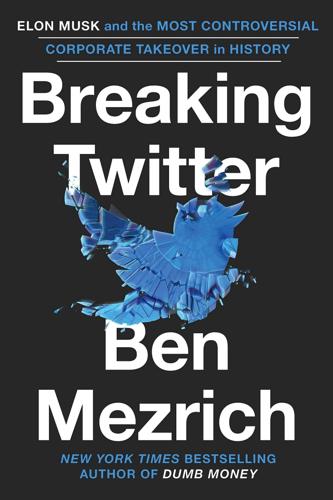
Breaking Twitter: Elon Musk and the Most Controversial Corporate Takeover in History
by
Ben Mezrich
Published 6 Nov 2023
He paused at the reflecting pool in the center of the environmentally friendly grounds that filled the donut hole inside the 1.2-million-square-foot, mostly glass building housing twelve thousand of Apple’s employees, long enough to snap a photo with his phone and tweet it to his followers—“Thanks @tim_cook for taking me around Apple’s beautiful HQ.” When he’d returned to Twitter headquarters, Elon had been all smiles. He had gone from (a day earlier) accusing Apple of threatening to toss Twitter off its App Store, calling Apple un-American and dangerous, threatening to sue them in court, create his own smartphone, or rally together a protest at Apple’s front door, to working everything out in a single afternoon, two masters of the universe chatting in front of a glorified duck pond.
…
She knew that in-app payments were Apple’s bread and butter, and they wouldn’t ever back down from their 30 percent tithe. Once she’d calmed Elon to the point where he was no longer planning to rally a hundred million Twitter followers to show up at Apple’s headquarters with picket signs and pitchforks, she’d been able to suggest a tête-à-tête with her counterparts in payments, to which Elon had first readily agreed. But then the billionaire had done her one better; he’d canceled the meeting with Apple’s payment wonks and had instead told her he wanted to meet with Tim Cook himself: the Apple CEO and the Twitter Chief Twit, face-to-face, to hash things out.
…
Over the past few days, as Elon had become more entrenched in seeing Twitter’s battle with Apple in ideological terms, Esther had attempted to use humor to placate the billionaire—sending him meme after meme poking fun at Apple, their fee structure, whatever she could think of that might defuse his growing vitriol. But just glancing at his Twitter account from the past twenty-four hours, she could see that her strategy was failing. Calling Apple politically “biased” in a tweet to his one hundred million-plus followers, Elon had further expounded that “Apple has mostly stopped advertising on Twitter. Do they hate free speech in America?” He’d accused Apple of threatening to “withhold Twitter from its App Store.”

Calling Bullshit: The Art of Scepticism in a Data-Driven World
by
Jevin D. West
and
Carl T. Bergstrom
Published 3 Aug 2020
With the exact same data, The Washington Post subsequently redrew the figure, zooming in to a more appropriate range. The temperature increase that leaps out of that chart tells a different story. The Internet news site Quartz used this technique to strong effect when, in 2013, Apple CEO Tim Cook gave a presentation about iPhone sales. Below is a version of the graph that Cook showed: This graph looks quite impressive; it seems as if Apple is taking over the world with the iPhone as cumulative sales go up and up and up. But of course cumulative sales go up—cumulative sales can’t go down! What the graph hides is the fact that quarterly iPhone sales had been declining for at least the past two quarters prior to Cook’s presentation.
…
April 4, 2018. https://kuow.org/stories/driving-downtown-seattle-you-may-soon-have-pay-toll/. Tatem, A. J., C. A. Guerra, P. M. Atkinson, and S. I. Hay. “Athletics: Momentous Sprint at the 2156 Olympics?” Nature 431 (2004): 525. Yanofsky, David. “The Chart Tim Cook Doesn’t Want You to See.” Quartz. September 10, 2013. https://qz.com/122921/the-chart-tim-cook-doesnt-want-you-to-see/. BY CARL T. BERGSTROM AND JEVIN D. WEST Calling Bullshit BY CARL T. BERGSTROM Evolution (with Lee Alan Dugatkin) ABOUT THE AUTHORS CARL T. BERGSTROM is an evolutionary biologist and professor in the Department of Biology at the University of Washington, where he studies how epidemics spread through populations and how information flows through biological and social systems at scales—from the intracellular control of gene expression to the spread of misinformation on social media.
…
The asterisk directs us to small print reading “5 grams of fat per 30 gram serving compared to 7 grams of fat in the average of the leading chocolate candy brands.” Here’s an example of a number provided without enough context to be meaningful. What brands are chosen as comparators? Is this an apples-to-apples comparison or are we comparing chocolate-covered malt balls to straight chocolate bars? How about sugar? Refined sugar may be a bigger health concern than fat; are Whoppers higher or lower in sugar? Are there other bad ingredients we should be concerned about? And so on, and so forth. The 25 percent figure sounds like an important nutritional metric, but it is really just meaningless numerosity.
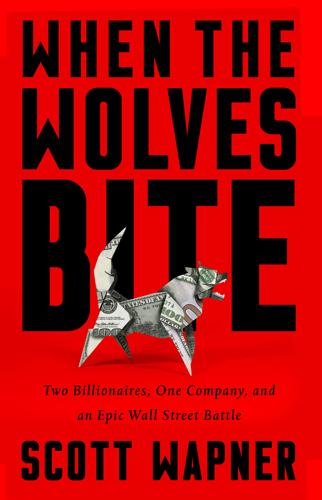
When the Wolves Bite: Two Billionaires, One Company, and an Epic Wall Street Battle
by
Scott Wapner
Published 23 Apr 2018
In a little more than six months, Cheniere shares lost 50 percent of their value from where Icahn had bought in. Investments in Freeport-McMoRan and Hertz had also fallen hard. Even Icahn’s top horse, Apple, which had been a home-run investment, hadn’t been cooperating lately. Icahn had revealed the position back in August 2013 when he tweeted, “We currently have a large position in APPLE. We believe the company to be extremely undervalued. Spoke to Tim Cook today. More to come.” The news had sent Wall Street into a full-fledged frenzy. Apple wasn’t just any stock; it was the market’s crown jewel and the biggest company on Earth by market cap. Back in September 2012, shares had hit an all-time intraday high of $705, but had recently fallen on hard times as investors began to worry about Apple’s margins and the pace of iPhone sales.
…
Four minutes later, Icahn sent a second tweet that read, “Had a nice conversation with [CEO] Tim Cook today. Discussed my opinion that a larger buyback should be done now. We plan to speak again shortly.” Icahn had called Cook before going public out of respect for the CEO and to give him a head’s up about what was about to hit the tape. Cook was in a meeting at the time and called Icahn back when he got out, finding the investor to be direct but cordial. Icahn said he wanted a large buyback and in short order. Cook explained that Apple had begun returning money to shareholders in 2012 after a long period of not doing so, had already expanded the program earlier in the year, and remained committed to the process, though at its own pace.
…
Icahn had spent decades sparring with large companies, often urging them to buy back their own shares or add new board members, but Apple represented something different. It was the richest company on Earth, and even though Icahn could only do so much given Apple’s size, he proved unafraid to take on the giant. Icahn even pledged to hold onto his shares, saying in the letter, “There is nothing short-term about my intentions here.” On October 28, 2013, Apple reported strong earnings, but margins fell to 37 percent, down from 40 percent the prior year. Shares fell 4 percent after hours when the numbers hit. For the year, Apple shares still closed up 5.5 percent. But on January 28, 2014, Apple suffered its worst one-day stock performance in months, with shares dropping 8 percent as a result of disappointing iPhone sales.
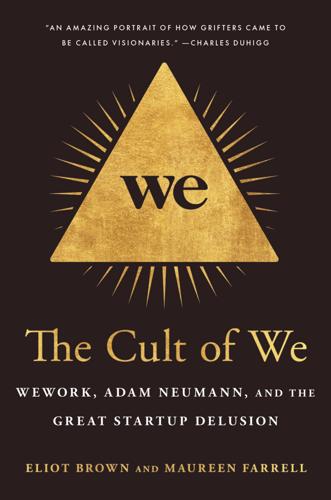
The Cult of We: WeWork, Adam Neumann, and the Great Startup Delusion
by
Eliot Brown
and
Maureen Farrell
Published 19 Jul 2021
He’d met Ruth Porat, Google’s CFO, and both he and Bruce Dunlevie tried to persuade her to join WeWork’s board, to no avail. He hotly pursued a meeting with Tim Cook, CEO of Apple. Neumann and his lieutenants pitched Apple on the idea that a supercharged version of the WeWork key card could be tied into the iPhone. Eventually, Cook agreed to a meeting, and Neumann was so excited he asked aides if he should get his hair done, noting that Cook was gay. Still, nothing concrete resulted from these meetings—not from Google, not from Apple, and not even from another startup closer to WeWork in age and valuation: Airbnb. In multiple meetings with the San Francisco home rental startup, Neumann pitched Airbnb’s CEO, Brian Chesky, on a plan to reinvigorate WeLive and spread it around the world.
…
By 2012, the itch had returned. Son yearned to become a force in the United States again. He turned back to his mobile phone playbook and started trying to buy both Sprint and T-Mobile—a move to compete against AT&T and Verizon. He announced a $21.6 billion deal in late 2012 for 70 percent of Sprint. Apple’s Tim Cook and others assured him that a deal to buy T-Mobile as well would pass muster with U.S. regulators, he told others. As if to announce his return to the Silicon Valley elite, Son bought one of the most expensive houses ever sold in the country, spending $117 million for a nine-acre estate in Woodside, California, a stone’s throw from the epicenter of venture capital on Sand Hill Road.
…
Aiming to modernize his country and diversify Saudi Arabia away from oil, Prince Mohammed was plunging money into the U.S. startup scene, not only via the Vision Fund but also through investments in companies like Lucid Motors, an electric car company. The techno-optimist was happily received by top venture capitalists and tech giant CEOs. Tim Cook of Apple, Sergey Brin and Sundar Pichai of Google, and Mark Zuckerberg of Facebook were all photographed with him. Neumann managed to secure his own meeting. On a stop in Los Angeles, Prince Mohammed was holding court at a mansion, sitting down with people like Oprah Winfrey. Neumann and Roni Bahar traveled there and met with the crown prince as well as the head of the PIF, Yasir al-Rumayyan, for around an hour.
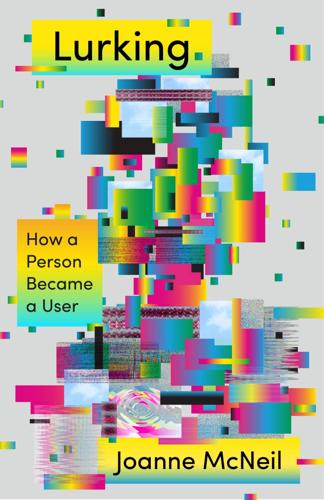
Lurking: How a Person Became a User
by
Joanne McNeil
Published 25 Feb 2020
Amazon, with its books-to-Mars trajectory, demonstrates the limitlessness of American avarice and exploitation, while for libraries to offer not only books but also suit jackets and bicycles upholds in perfect opposition the limitless spirit of compassion and generosity to those in need—a spirit that is curtailed only by the reality of municipal budgets. Apple has even set up shop in an old library. You can upgrade your phone at the Apple Carnegie Library in Washington, D.C., which opened in 2019. As Tim Cook announced, the company will “continue the legacy of this beautiful building as a place where people seek knowledge and a sense of community.” Once it was home to ninety-five thousand volumes; now a customer can purchase a laptop there for three thousand dollars. Then again, there’s a reason why it wasn’t called the Central Public Library when Apple took over. Its very name—Apple Carnegie Library—demonstrates a problem older than the personal computer.
…
He is constantly making comments like “Every time you buy shoes, you’re helping fund Blue Origin,” as he did at the Yale Club in New York in 2019; the transcript of this conversation is available at Business Insider (“Jeff Bezos Just Gave a Private Talk in New York. From Utopian Space Colonies to Dissing Elon Musk’s Martian Dream, Here Are the Most Notable Things He Said,” February 23, 2019). Tim Cook’s announcement about the Apple Carnegie Library comes from a post to his Twitter account on May 1, 2019. The library held ninety-five thousand volumes according to The Washington Post (Judith Valente, “UDC Opens $4.2 Million Library, But Its Campus Not Likely to Be Built,” December 11, 1980). Andrew Carnegie’s philanthropy “was certainly not unimpeachable—it was often warped by his own ego and eccentricity—but we don’t need to idealize it in order to admire elements of it, especially his library campaign,” Benjamin Soskis wrote in a piece about the complicated history of the library for Boston Review (“Apple’s Newest Store and the Perverse Logic of Philanthro-Capitalism,” May 21, 2019).
…
* * * Around the time of its first smartphone launch in 2007, it was possible, if unwise, to talk about Apple as an underdog, and adopt the corporation’s own narrative, a holdover since its famous 1984-inspired Super Bowl commercial, directed by Ridley Scott, featuring a spry bleached blonde racing to attack “Big Brother” with a sledgehammer. In 2007, Apple was ranked 367 on Fortune’s Global 500. Ten years later, it was ninth on the list (between Berkshire Hathaway and Exxon Mobil). With the iPhone, Apple was off to the races: in 2010, Apple sold almost forty million devices, and by 2014, sales were just shy of 170 million. Now the figure is north of two hundred million new Apple phones each year.

The Authoritarian Moment: How the Left Weaponized America's Institutions Against Dissent
by
Ben Shapiro
Published 26 Jul 2021
Doug McMillon, “Advancing Our Work on Racial Equity,” Walmart.com, June 12, 2020, https://corporate.walmart.com/newsroom/2020/06/12/advancing-our-work-on-racial-equity. 3. Rachel Lerman and Todd C. Frenkel, “Retailers and restaurants across the US close their doors amid protests,” WashingtonPost.com, June 1, 2020, https://www.washingtonpost.com/technology/2020/06/01/retailers-restaurants-across-us-close-their-doors-amid-protests/. 4. Tim Cook, “Speaking up on racism,” Apple.com, https://www.apple.com/speaking-up-on-racism/. 5. Mitchell Schnurman, “‘Silence is not an option’: What CEOs are saying about racial violence in America,” DallasNews.com, June 7, 2020, https://www.dallasnews.com/business/commentary/2020/06/07/silence-is-not-an-option-what-ceos-are-saying-about-racial-violence-in-america/. 6.
…
McMillon pledged more minority hiring, “listening, learning and elevating the voices of our Black and African American associates,” and spending $100 million to “provide counsel across Walmart to increase understanding and improve efforts that promote equity and address the structural racism that persists in America.”2 The fact that Walmart had to close hundreds of stores due to the threat of BLM looting went unmentioned.3 Major corporations tripped over themselves to issue public statements denouncing racism—and, more broadly, America’s supposed systemic racism. Many of the corporations pledged to fund their own quasi-religious indulgences, which would alleviate their supposed complicity in the racist system. Tim Cook of Apple issued a letter stating that America’s racist past “is still present today—not only in the form of violence, but in the everyday experience of deeply rooted discrimination,” and offered funding for the Equal Justice Initiative,4 a progressive organization that blames historic racism for nearly every modern ill.
…
After the 2020 election, as big tech moved to stymie alternative media, conservatives jumped to Parler: Parler hit the top spot in Apple’s App Store, and jumped by more than 4.5 million members in one week. Parler’s chief selling point: it would not ban people based on political viewpoint. Parler’s CEO, John Matze, said, “We’re a community town square, an open town square, with no censorship. If you can say it on the street of New York, you can say it on Parler.”52 Until you couldn’t. After the January 6 riots, based on vaguely sourced reports that Parler had been an organizing place for the rioters, Apple, Amazon, and Google all barred Parler. Apple’s App Store barred Parler on the basis that Parler’s processes were “insufficient” to “prevent the spread of dangerous and illegal content.”
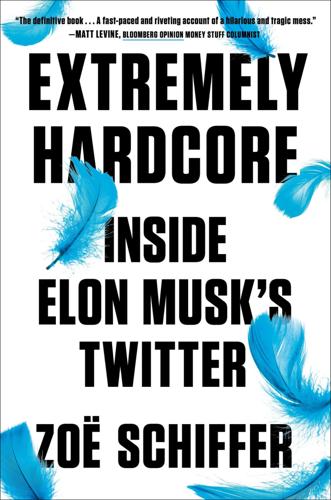
Extremely Hardcore: Inside Elon Musk's Twitter
by
Zoë Schiffer
Published 13 Feb 2024
In recent years, Apple had come under antitrust scrutiny, specifically for the way it ran its app ecosystem. The tech giant was facing increased pressure from app makers who were angry about the 30 percent fee that it collected from in-app purchases. Epic Games, the company behind Fortnite, had sued Apple, arguing the fee was anticompetitive. The judge ruled in favor of Apple on most counts, but the company was still wary of renewed antitrust allegations. Apple CEO Tim Cook, famous for his diplomacy, which had helped the company succeed in China, invited Musk to join him at Apple’s headquarters in Cupertino so they could discuss the dispute.
…
On November 30, Musk tweeted a video taken on Apple’s campus. The two CEOs chatted about supply chains and Musk decided not to press the Apple CEO about handing over the private data of Twitter Blue subscribers. Cook said that Apple would not stop advertising on Twitter, according to Musk’s biographer, Walter Isaacson. “Thanks @tim_cook for taking me around Apple’s beautiful HQ,” Musk wrote. “Good conversation. Among other things, we resolved the misunderstanding about Twitter potentially being removed from the App Store. Tim was clear that Apple never considered doing so.” Cook’s diplomacy had once again paid off, as Musk stopped griping about Apple’s 30 percent app store fee, at least in public.
…
In the back of his mind, Roth wanted to believe that Musk had a secret deal with Apple. The CEO seemed certain that Twitter could identify bad actors using credit card information provided by the iPhone maker. But now Esther Crawford was telling Roth something horrifying: Apple didn’t give Twitter the phone numbers or credit card information of Twitter Blue subscribers. In fact, Apple didn’t give Twitter any specific identifiers for individual users. Roth tried to clarify. “If we catch someone for abusing the Blue badge, they can just keep using that same device and Apple ID to abuse for an additional $8 as they see fit?”

Life After Google: The Fall of Big Data and the Rise of the Blockchain Economy
by
George Gilder
Published 16 Jul 2018
Still in first place as of this writing is Apple, twenty years older, riding on the crest of the worldwide market for its coveted iPhones, but Google is aiming for the top spot with its free strategy. In 2006, it purchased Android, an open source operating system that is endowing companies around the globe, including itself, with the ability to compete with the iPhone. Apple is an old-style company, charging handsomely for everything it offers. Its CEO, Tim Cook, recall, is the author of the trenchant insight that “if the service is ‘free,’ you are not the customer but the product.” Apple stores make ten times more per square foot than any other retailer.
…
This self-learning software will also be capable of performing most of your jobs. The new digital world may not need you anymore. Don’t take offense. In all likelihood, you can retire on an income which we regard as satisfactory for you. Leading Silicon Valley employers, such as Larry Page, Elon Musk, Sergey Brin, and Tim Cook, deem most human beings unemployable because they are intellectually inferior to AI algorithms. Did you know that Google AI defeated the world Go champion in five straight contests? You do not even know what “Go” is? Go is an Asian game of strategy that AI researchers have long regarded as an intellectual challenge far exceeding chess in subtlety, degrees of freedom, and complexity.
…
With the ascendancy of Amazon, Apple, and other online emporia early in the twenty-first century, much of the Internet was occupied with transactions, and the industry retreated to the “cloud.” Abandoning the distributed Internet architecture, the leading Silicon Valley entrepreneurs replaced it with centralized and segmented subscription systems, such as Paypal, Amazon, Apple’s iTunes, Facebook, and Google cloud. Uber, Airbnb, and other sequestered “unicorns” followed. These so-called “walled gardens” might have sufficed if they could have actually been walled off from the rest of the Internet. At Apple, Steve Jobs originally attempted to accomplish such a separation by barring third-party software applications (or “apps”).

Green Swans: The Coming Boom in Regenerative Capitalism
by
John Elkington
Published 6 Apr 2020
Think of Merck chief Kenneth Frazier’s resignation from Donald Trump’s American Manufacturing Council in response to the US leader’s handling of racial violence in Charlottesville. Or Unilever head Paul Polman’s leading a charge on climate change as the US government was pulling out of the Paris accord. Or any number of corporate leaders, from Apple’s Tim Cook to Salesforce’s Marc Benioff, threatening to move business out of US states that do not respect LGBT rights.24 Exciting times, but we should be wary of simply leaving it to companies to handle the great challenges of tomorrow. Listen to a former managing director of Larry Fink’s BlackRock.
…
The net result is that capitalist algorithms have increasingly driven yawning wealth divides and helped wipe something like 60% off the Living Planet Index, a measure of the vitality of Earth’s biosphere calculated by the World Wildlife Fund (WWF).18 “We are the first generation to know we are destroying our planet and the last one that can do anything about it,” WWF UK CEO Tanya Steele told our Green Swan Day audience. Since the New Economy period, we have seen what we might inelegantly call the exponential algorithmicization of our economies. Indeed, leading CEOs like Apple’s Tim Cook have spotlighted the dysfunctions of many of today’s algorithms—and of those who code them. Giving a commencement address at Stanford, he warned his Silicon Valley compatriots, “If you have built a chaos factory, you can’t dodge responsibility for the chaos.”19 Some of these problems can be solved fairly quickly, but others—including the implications of the burgeoning surveillance state—represent intergenerational challenges.
…
How interesting, then, to see the media commentary around Ive’s announcement that he was leaving Apple. This marked a shifting in expectations of brands like Apple, as the Financial Times explained in a full-page article. Noting that it was no longer good enough for products to be beautiful and easy to use, the piece stressed, “The priorities of many consumers are changing. A new generation of environmentally conscious consumers may no longer fetishize a MacBook’s aluminum body or see the latest iPhone as less of a status symbol than their predecessors.”44 The newspaper noted that it is impossible to change the batteries in Apple’s AirPods, its tiny wireless headphones, because the components are glued together to keep their volume as small as possible.

The Big Nine: How the Tech Titans and Their Thinking Machines Could Warp Humanity
by
Amy Webb
Published 5 Mar 2019
They ranged from creating sweeping new legislation to mirror Europe’s aggressive GDPR rules, to a proposal that would designate web platforms as information fiduciaries that would have to follow a prescribed code of conduct, not unlike law firms.78 Just a few months later, Apple CEO Tim Cook went on Twitter to post a screed about the future of privacy, the big tech giants, and America. On October 24, he wrote that companies should make the protection of user privacy paramount. “Companies should recognize that data belongs to users and we should make it easy for people to get a copy of their personal data, as well as correct and delete it,” he wrote, continuing with, “Everyone has a right to the security of their data.”79 Sensing that regulation is becoming a real possibility in the US, Apple has been promoting its data protection services and the privacy protections embedded in its mobile and computer operating systems.
…
Jordan Novet, “Why Tech Companies Are Racing Each Other to Make Their Own Custom AI Chips,” CNBC, April 21, 2018, https://www.cnbc.com/2018/04/21/alibaba-joins-google-others-in-making-custom-ai-chips.html. 78. The full paper can be accessed at https://graphics.axios.com/pdf/PlatformPolicyPaper.pdf?_ga=2.167458877.2075880604.1541172609-1964512884.1536872317. 79. Tweets can be accessed at https://twitter.com/tim_cook/status/1055035534769340418. CHAPTER 3: A THOUSAND PAPER CUTS: AI’S UNINTENDED CONSEQUENCES 1. “‘An Owners’ Manual’ for Google’s Shareholders,” 2004 Founders’ IPO Letter, Alphabet Investor Relations, https://abc.xyz/investor/founders-letters/2004/ipo-letter.html. 2. Ibid. 3. “Leadership Principles,” Amazon, https://www.amazon.jobs/principles. 4.
…
During our lifetimes, we’ve learned to recognize what an apple is through reinforcement learning—someone taught us what an apple looked like, its purpose, and what differentiates it from other fruit. Then, over time and without conscious awareness, our autonomous biological pattern recognition systems got really good at determining something was an apple, even if we only had a few of the necessary data points. If you see a black-and-white, two-dimensional outline of an apple, you know what it is—even though you’re missing the taste, smell, crunch, and all the other data that signals to your brain this is an apple. The way you and Alexa both learned about apples is more similar than you might realize.
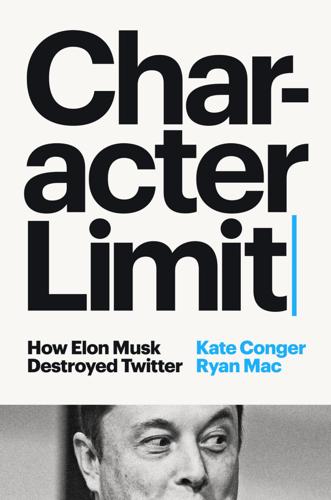
Character Limit: How Elon Musk Destroyed Twitter
by
Kate Conger
and
Ryan Mac
Published 17 Sep 2024
After all, Twitter was a private company. Musk also suggested that if Apple took Twitter out of the App Store, he could tell his Twitter followers to stage a protest at Apple’s headquarters in Cupertino. But Apple wasn’t exactly looking for a fight either. The company and its CEO, Tim Cook, didn’t like the idea of being drawn into a public spat with the erratic entrepreneur, who had once attempted to pitch Apple on buying Tesla. While Cook viewed Twitter’s new owner with trepidation, Apple eventually made overtures to invite Musk to their campus that week. Musk showed up at the $5 billion Apple Park that Wednesday, November 30, walking into the famous building designed by Norman Foster to resemble a spaceship, before being ushered into a conference room with Cook for a one-on-one meeting.
…
Musk viewed the App Store rejection and the apparent pullback in ad spending as a declaration of war by the electronics manufacturer. “Did you know Apple puts a secret 30% tax on everything you buy through their App Store?” he tweeted that morning, injecting himself into a debate that had already been raging in Silicon Valley between app developers and Apple. In a meeting at Twitter that day, Musk became conspiratorial. He said Phil Schiller and Tim Cook, Apple’s head of the App Store and CEO, must be in bed with the shorts, baselessly suggesting that the executives had aligned themselves with the short sellers who often bet against Musk’s companies.
…
* * * >>> On September 27, Yaccarino flew to Southern California, where she was scheduled to make an appearance at CODE Conference, a bougie technology summit at the Ritz-Carlton in the coastal Orange County town of Dana Point. Musk himself had spoken at the conference years earlier, and other top executives like Apple’s Tim Cook and Uber’s Travis Kalanick had graced the stage. For Yaccarino, it was her coming-out party to the technologists. She was wary, but agreed to the interview provided that the conference organizers sat her down with Julia Boorstin, a polished CNBC correspondent whom Yaccarino had viewed as a mentee while at NBCUniversal.
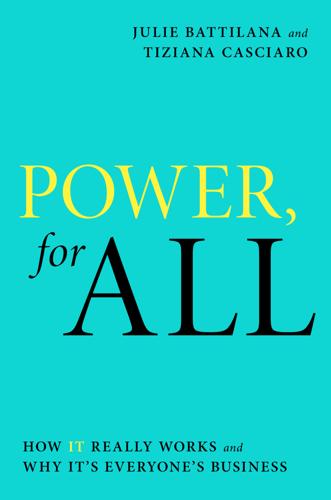
Power, for All: How It Really Works and Why It's Everyone's Business
by
Julie Battilana
and
Tiziana Casciaro
Published 30 Aug 2021
Yet these features are useful only up to a point, as our IP addresses are still visible, which means that our internet service providers, our employers, and/or the government can still track our activity online. Ultimately, protecting ourselves from bias in the algorithms and lack of control over personal data requires changing the laws and then making sure they are enforced. Addressing the 2021 Computers, Privacy and Data Protection conference, Apple’s CEO, Tim Cook, forcefully called for far-reaching data privacy reforms to “send a universal, humanistic response to those who claim a right to users’ private information about what should not and will not be tolerated.”60 Sundar Pichai has also called for such regulation. In an op-ed published in the Financial Times in 2020, he insisted that regulation was needed and suggested that existing “rules such as Europe’s General Data Protection Regulation can serve as a strong foundation.”61 In 2016, the European Union passed the General Data Protection Regulation (GDPR).
…
(London: Palgrave Macmillan UK, 2010). 57 Beth Kowitt, “Inside Google’s Civil War,” Fortune, January 29, 2020, https://fortune.com/longform/inside-googles-civil-war/. 58 Kate Conger, “Hundreds of Google Employees Unionize, Culminating Years of Activism,” New York Times, January 4, 2021, https://www.nytimes.com/2021/01/04/technology/google-employees-union.html. 59 “Home,” Alphabet Workers Union, December 15, 2020, https://alphabetworkersunion.org/. 60 “LIVE: Apple CEO Tim Cook speaks at Brussels’ International Data Privacy Day,” Reuters (video), January 28, 2021, https://www.youtube.com/watch?v=ug6tA6fhhdQ. 61 Sundar Pichai, “Why Google Thinks We Need to Regulate AI,” Financial Times, January 20, 2020, https://www.ft.com/content/3467659a-386d-11ea-ac3c-f68c10993b04. 62 “What is GDRP, the EU’s New Data Protection Law?
…
To illustrate, consider the war that Tim Sweeney, the founder and CEO of game maker Epic Games, has waged against Apple and Google to fight what he sees as their abuse of power over computer game developers. Sweeney’s pushback escalated as the popularity of Epic’s flagship game, Fortnite, grew, giving him leverage over the tech companies. In 2018, he launched Fortnite outside Apple’s App Store and the Google Play store to get around what he saw as their disproportionate app fees. In 2020, Apple and Google responded in kind by banning Fortnite from their stores. in retaliation for Epic Games’ avoiding their payment systems.
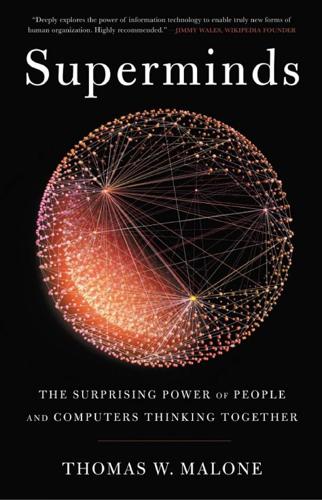
Superminds: The Surprising Power of People and Computers Thinking Together
by
Thomas W. Malone
Published 14 May 2018
But it seems to me that we are justified in saying that Apple is conscious in a way that is closer to being literally true than just metaphorical. By the way, here’s one more piece of evidence: When Apple’s CEO, Tim Cook, spoke at MIT’s commencement, I told him I was writing a book that included the example you’ve just read. When I asked him whether he thought Apple was conscious, he considered the question very thoughtfully. Then, over the course of several minutes, he said he thought Apple was an organism like a person with values and goals and that, of course, it was conscious. You may not view this as conclusive evidence, but I think it’s a very interesting perspective from someone with a uniquely privileged view of the company.
…
And human hierarchies have been critical to our remarkable dominance over the other life forms on our planet.2 Of all the types of superminds, hierarchies are the easiest to recognize. A human hierarchy usually has a single person at its top, and that person speaks on behalf of the whole group.3 When Tim Cook at Apple says something publicly, he is speaking for the whole organization in a way that isn’t possible in any other form of supermind. Since a few people in a hierarchy usually make the most important decisions for the supermind as a whole, their individual human emotions, values, and limitations play a more influential role than in other types of superminds.
…
To explore this question, let’s consider a very specific example of a human group: Apple, Inc. IS APPLE CONSCIOUS? First, let’s define the supermind called Apple as including all the employees of Apple, Inc., along with all the machines, buildings, and other resources the employees use to do their work. Is this group conscious according to the definitions above? Awareness Apple certainly reacts to stimuli in the outside world. If you buy a song on iTunes, Apple will make it available for you to download. If you walk into an Apple store, someone will greet you and try to help you buy an Apple product. In 2007, Apple responded to a variety of changes in the markets for mobile phones, computers, and their components by introducing a widely acclaimed new product called the iPhone.
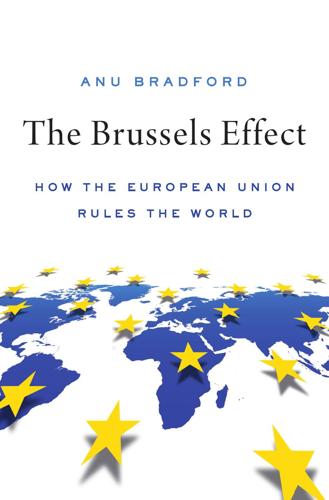
The Brussels Effect: How the European Union Rules the World
by
Anu Bradford
Published 14 Sep 2020
(May 7, 2018), https://www.wsj.com/articles/techs-pickup-of-new-data-privacy-rules-reflects-eus-growing-influence-1525685400 (on file with author). 130.Mark Scott & Laurens Cerulus, Europe’s New Data Protection rules Export Privacy Standards Worldwide, Politico (Jan. 31, 2018), https://www.politico.eu/article/europe-data-protection-privacy-standards-gdpr-general-protection-data-regulation/ [https://perma.cc/WRW7-G6LN]; see also Angelica Mari, Brazilian President Signs Data Protection Bill, ZDNet (Aug. 16, 2018), https://www.zdnet.com/article/brazilian-president-signs-data-protection-bill/ [https://perma.cc/BB2D-JREC]; Asina Pornwasin, Thai Data Protection Laws Must Quickly be Updated to EU Standards: Experts, The Nation (May 25, 2018), http://www.nationmultimedia.com/detail/national/30346209 [https://perma.cc/T729-LKBV]. 131.Graham Greenleaf, The Influence of European Data Privacy Standards Outside Europe: Implications for Globalization of Convention 108, 2 Int’l Data Privacy L. 68, 75 (2012); see, e.g., María Paz Canales, Protección de datos en América Latina, urgente y necesaria [Data Protection in Latin America, Urgent and Necessary], Derechodigitales (July 7, 2017), https://www.derechosdigitales.org/11282/proteccion-de-datos-en-america-latina-urgente-y-necesaria/ [https://perma.cc/5EBL-L7B4] (translation supplied). 132.Tim Cook Calls for US Federal Privacy Law to Tackle “Weaponized” Personal Data, Guardian (Oct. 24, 2018), https://www.theguardian.com/technology/2018/oct/24/tim-cook-us-federal-privacy-law-weaponized-personal-data [https://perma.cc/TG55-FTMB]. 133.Mehreen Khan & Tim Bradshaw, Apple and Facebook Call for EU-style Privacy Laws in US, Fin. Times (Oct. 24, 2018), https://www.ft.com/content/0ca8466c-d768-11e8-ab8e-6be0dcf18713 (on file with author). 134.Mark Zuckerberg, The Internetneeds new rules.
…
Foreign corporations affected by EU laws face no additional compliance costs from the de jure Brussels Effect, giving them the incentive to lobby for the EU standard at their home market as well. This way, they can level the playing field vis-à-vis their domestically oriented companies that currently do not need to comply with the GDPR. The US market illustrates this dynamic: In October 2018, Apple’s CEO Tim Cook called the US government to adopt a comprehensive federal EU-style privacy law, saying that it was “time for the rest of the world” to follow the EU’s lead and adopt a strict legal framework to protect users’ personal data. Cook described the amount of data that companies collect of individuals “unsettling,” referring to it as “surveillance” that can lead to an abuse of the data collected.132 Even more strikingly, Facebook’s privacy chief, Erin Egan, joined Cook in announcing Facebook’s support for a GDPR-equivalent federal privacy law in the United States.133 Six months later, Mark Zuckerberg, the company’s founder and chief executive, called for the adoption of GDPR-style laws worldwide in an op-ed published in the Washington Post in the following terms:134 [E]ffective privacy and data protection needs a globally harmonized framework.
…
hl=en&gl=ZZ [https://perma.cc/PHQ9-RBDJ]; Privacy Statement, Netflix (Apr. 24, 2019), https://help.netflix.com/legal/privacy [https://perma.cc/TF7G-H774]; Mitchener, supra note 86. 90.See Apple Customer Privacy Policy, Apple, https://www.apple.com/legal/privacy/ [https://perma.cc/TG8J-YD7N]. 91.Privacy Policy, Apple, https://www.apple.com/legal/privacy/en-ww/governance/ [https://perma.cc/42BC-X6MJ]. 92.Alex Hern, Apple Launches iOS 11.3 with Raft of Privacy Features, Guardian (Mar. 29, 2018), https://www.theguardian.com/technology/2018/mar/29/apple-launches-ios-113-privacy-features-gdpr-data-protection [https://perma.cc/5G9X-D9KX]. 93.Natasha Lomas, Facebook to Roll Out Global Privacy Settings Hub—Thanks to GDPR, TechCrunch (Jan. 24, 2018), http://social.techcrunch.com/2018/01/24/facebook-to-roll-out-global-privacy-settings-hub-thanks-to-gdpr/ [https://perma.cc/BK5K-A8AD]; Jim Brunsden, Tim Bradshaw & Hannah Kuchler, Facebook’s Sheryl Sandberg to Hold Talks with Top EU Data Official, Fin.

Spike: The Virus vs The People - The Inside Story
by
Jeremy Farrar
and
Anjana Ahuja
Published 15 Jan 2021
Jules phoned me back about an hour later, to make sure he’d understood it all correctly. And, of course, to run through the usual things you’d expect anyone in his situation to say. Like, if Christiane or the children needed anything, they should let him know. I had a much longer conversation with Tim. Tim Cook is a consultant and professor in anaesthesia and intensive care medicine at the Royal United Hospitals in Bath, in south-west England. He is one of my closest friends, ever since we were thrown together 35 years ago during our clinical training at the now-vanished Westminster and Charing Cross Hospital.
…
As you will have seen on the news, Italy has now quarantined over a quarter of the population in the north of the country. The health, social, economic and political consequences of this are totally unknown. Italy, which cordoned off northern regions from late February, put a national lockdown in place on 9 March. I had already called Tim Cook in Bath, so he could get the word out to intensive care networks across the country. The dire situation in northern Italy focused minds in the next SAGE meeting on Tuesday 10 March. I relayed chilling status reports from my contacts there. It was battlefield medicine, deciding who to save and who to leave to die.
…
She has been married to Jeremy Farrar since 1998 and in 2011 they together established the Farrar Foundation to support young people in Vietnam and Nepal in education, health, science and recreational activities Francis Collins A physician, geneticist and expert on disease genetics, Collins headed the Human Genome Project before becoming director of the US National Institutes of Health. He founded the BioLogos Foundation, which promotes the view that belief in Christianity can be reconciled with acceptance of evolution and science. He was involved in early discussions about the origins of SARS-CoV-2. Tim Cook Consultant and professor in anaesthesia and intensive care medicine at the Royal United Hospitals in Bath. A long-time friend of Jeremy Farrar, who confided in him his suspicions of the origins of the virus. Dominic Cummings Political strategist who was special adviser to Michael Gove, then became Director of Vote Leave and chief adviser to Boris Johnson on the latter’s appointment as PM in 2019.

The Code: Silicon Valley and the Remaking of America
by
Margaret O'Mara
Published 8 Jul 2019
His death prompted an extraordinary outpouring of grief, not only from those who knew him personally but from the millions of Apple users who felt that they knew him nearly as well. “Steve was a dreamer and a doer,” one wrote in a tribute wall on the company’s website. “I am grateful for the gift he was in his creative genius,” wrote another. At Apple retail stores throughout the world, people brought flowers and personal notes in tribute.12 At the private memorial service held on Apple’s Cupertino campus a few weeks after his death, new CEO Tim Cook played a recording for the assembled crowd of company employees, celebrities, and Valley power players.
…
Tech firms further reduced their tax bills by writing off stock options, depreciation of facilities, and expenditures on R&D. The elaborate shell game—entirely permissible under IRS rules—made rich companies like Apple, Google, and Amazon even richer. Washington made spasmodic efforts to change the system in the Obama years, but it was hard to cast beloved tech brands as tax-dodging fat cats. “I love Apple!” rhapsodized Missouri Democrat Claire McCaskill at a 2013 Senate hearing where Tim Cook was supposedly being called to account for his company’s creative accounting. Kentucky Republican Rand Paul berated his fellow Senators for “bullying” Cook and a company that was “one of America’s greatest success stories.”12 Facebook employees and alumni also joined the ranks of the breathtakingly wealthy.
…
Jesse Drucker, “Kremlin Cash Behind Billionaire’s Twitter and Facebook Investments,” The New York Times, November 5, 2017; Michael Wolff, “How Russian Tycoon Yuri Milner Bought His Way into Silicon Valley,” Wired, October 21, 2011. 12. Chris William Sanchirico, “As American as Apple Inc.: International Tax and Ownership Nationality,” Tax Law Review 68, no. 2 (2015): 207–74; Rebecca Greenfield, “Senators Turn Tim Cook’s Hearing into a Genius Bar Visit,” The Atlantic, May 21, 2013. 13. David Kirkpatrick, “Inside Sean Parker’s Wedding,” Vanity Fair, August 1, 2013. 14. “Yammer Raises $17 Million in Financing Round Led by The Social+Capital Partnerhip,” Marketwire, September 27, 2011. 15.
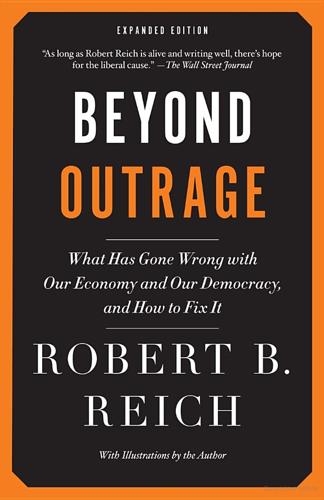
Beyond Outrage: Expanded Edition: What Has Gone Wrong With Our Economy and Our Democracy, and How to Fix It
by
Robert B. Reich
Published 3 Sep 2012
Even though the rate of unemployment has begun to fall, jobs still remain scarce, and the pay of the bottom 90 percent continues to drop, adjusted for inflation. But CEO pay is still rising through the stratosphere. Among the CEOs who took in more than $50 million in 2011 were Qualcomm’s Paul Jacobs ($50.6 million), JCPenney’s Ron Johnson ($51.5 million), Starbucks’s Howard Schultz ($68.8 million), Tyco International’s Ed Breen ($68.9 million), and Apple’s Tim Cook ($378 million). The titans of Wall Street are doing even better. The super-rich are not investing in jobs and growth. They’re putting their bonanza into U.S. Treasury bills or investing it in Brazil or South Asia or anywhere else it can reap the highest return. The American economy is in trouble because so much income and wealth have been going to the top that the rest of us no longer have the purchasing power to keep the economy going.
…
Between 2009 and 2011, the thirty-five biggest U.S. companies added 113,000 American jobs but almost three times that many jobs (333,000) abroad, according to a survey by The Wall Street Journal. Nearly 60 percent of their revenue growth came from outside the United States. Apple employs 43,000 people in the United States but contracts with over 700,000 workers abroad. It makes iPhones in China both because wages are low there and because Apple’s Chinese contractor can quickly mobilize workers from company dormitories at almost any hour of the day or night. American companies aren’t creating just routine jobs overseas. They’re also creating good high-tech jobs there and doing more of their research and development abroad.
…
American corporations signed up for deals with China involving energy and aviation manufacturing, but much of the work would be done in China. American companies don’t care, as long as the deals help their bottom lines. An Apple executive told The New York Times, “We don’t have an obligation to solve America’s problems. Our only obligation is making the best product possible.” He might have added, and showing profits big enough to continually increase our share price. If Apple or any other big American company can make a product best and cheapest in China or anywhere else, then that’s where it’ll do it. I don’t blame the companies. American corporations are in business to make profits and boost their share value, not to create good American jobs.

Fire in the Valley: The Birth and Death of the Personal Computer
by
Michael Swaine
and
Paul Freiberger
Published 19 Oct 2014
The two lines of processors battled for the lead in capability. Intel, though, held the lead in sales quite comfortably. Its microprocessors powered most of the IBM computers and clones, whereas Motorola had one primary customer for its processors—Apple. (Atari and Commodore, with their 680x0-based ST and Amiga computers, had to wait in line for chips behind Apple, foreshadowing Apple supply-chain strategies that would be solidified under Tim Cook as COO.) In 1989 “Moore’s law,” Intel cofounder Gordon Moore’s two-decade-old formulation that memory-chip capacity would double every 18 months, was proving to still roughly predict growth in many key aspects of the technology, including memory capacity and processor speed.
…
Leaving the Stage In 2011, at the age of 56, Steve Jobs died due to complications from pancreatic cancer. A few months earlier he had stepped down as CEO, telling the board, “I have always said if there ever came a day when I could no longer meet my duties and expectations as Apple’s CEO, I would be the first to let you know. Unfortunately, that day has come.” COO Tim Cook was named CEO. In 2013, Steve Ballmer retired as CEO of Microsoft. The company had been struggling to find its way in recent years, failing to secure a significant market share in the new product categories. Satya Nadella, a 22-year Microsoft veteran, would become only the third CEO in Microsoft’s history.
…
Meanwhile, without the singular vision of a Steve Wozniak, the Apple III project was floundering. Delays in the Apple III were soon causing concern in the marketing department. The young company was beginning to feel growing pains at last. When Apple was formed, the Apple II was already near completion. The Apple III was the first computer that Apple—as a company—had designed and built from scratch. The Apple III was also the first Apple not conceived by Steve Wozniak in pursuit of his personal dream machine. Instead the Apple III was a bit of a hodgepodge, pasted together by many hands and designed by committee.
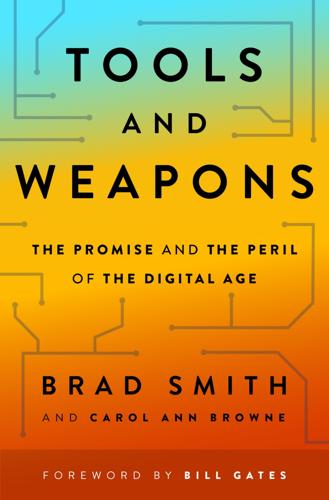
Tools and Weapons: The Promise and the Peril of the Digital Age
by
Brad Smith
and
Carol Ann Browne
Published 9 Sep 2019
It was a bit like telling baseball fans that they could go to an event that included the national anthem, a hot dog eating contest, and the first game of the World Series. We all knew what brought us to Washington on that cold winter morning. An all-star cast of tech leaders arrived at the West Wing, including Apple CEO Tim Cook, Google chairman Eric Schmidt, Facebook COO Sheryl Sandberg, Netflix CEO Reed Hastings, and a dozen others. Most of us already knew each other. Eight of our companies—virtually all competitors—had just come together to create a new coalition, called Reform Government Surveillance, to work together on precisely the issues we were there to discuss.
…
Then we stepped into a large room for what reporters would call “the most memorable moment” of the state visit—not just at Microsoft or in Seattle, but for the entire six days across the country.5 The leaders of twenty-eight technology companies from both the United States and China had gathered for a photo opp. Flanking President Xi was a group that included Tim Cook, Jeff Bezos, Ginni Rometty, Mark Zuckerberg, and the CEOs of basically every household technology name in America. It was a photo that built on President Xi’s cybersecurity announcement during dinner the night before, one that made every other image of the trip pale in comparison. There was only one president from a country other than the United States who could command this audience.
…
While other American companies are present in China, only Apple with its iPhone has enjoyed success in the country on a level that is comparable to its leadership in the rest of the world. In recent years, Apple has earned three times as much revenue as Intel, which is the number two US tech company in China.6 When it comes to profits, the situation is likely starker. Apple may well generate more profits within China than the rest of the American tech sector put together. It’s a notable accomplishment but also a challenge for the company, given China’s large contribution to Apple’s global profitability. As we’ve found at Microsoft over time and more globally with products like Windows and Office, anytime you’re dependent on a particular source for a large share of revenue or profitability, it makes it difficult to contemplate changes in that area.
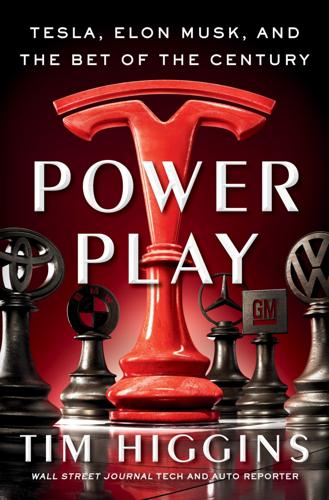
Power Play: Tesla, Elon Musk, and the Bet of the Century
by
Tim Higgins
Published 2 Aug 2021
It should come as no surprise then that Silicon Valley’s biggest player, Apple, had taken note. In 2014, the company had quietly begun work on its own electric car program, hiring a slew of experienced hands to launch the effort, dubbed Project Titan. But it quickly became clear that developing a car was harder than they first thought. So, with Tesla’s stock fallen from its previous highs and with its well-publicized struggles over the Model X, Apple CEO Tim Cook apparently saw an opening. Tesla and Apple had developed a complicated relationship. Musk admired Apple’s achievements and was eager to hire people with Apple on their résumés. His stores were explicitly modeled after Apple’s; his designs took inspiration from the iPhone.
…
They had grown accustomed to it in the dark days leading up to General Motors’ bankruptcy. The gravity of Tesla’s financial situation weighed on Musk. At one point, he thought aloud about how Apple and its war chest of $244 billion might help. By all accounts, the iPhone maker’s efforts to develop a car had been a struggle. Musk’s supposed bravado with CEO Tim Cook years earlier, when Tesla was last in trouble, may have ended a possible acquisition. This time, with his hat in his hand, Musk reached out to Cook about meeting for a possible deal. Perhaps Apple would be interested in acquiring Tesla for about $60 billion, or more than twice its value when Cook had originally inquired?
…
He wanted to be CEO of Apple. Cook, who since Steve Jobs’s death had shepherded Apple into the most valuable publicly traded company in the world, was gobsmacked by the request. “Fuck you,” Cook said, in Musk’s telling, before hanging up. (Apple declined to comment on the record.)*3 Whether or not this was an accurate recounting, it’s hard to imagine Musk was serious about wanting to be CEO of Apple. Rather, the story played into Musk’s vision of Tesla becoming on par with Apple. It also served a more immediate purpose: It told those senior managers hoping for salvation from Apple to think again.

Competition Overdose: How Free Market Mythology Transformed Us From Citizen Kings to Market Servants
by
Maurice E. Stucke
and
Ariel Ezrachi
Published 14 May 2020
But one cannot seriously argue that these benefits should depend on our accepting the inevitability of a toxic competition in which the Gamemakers are always the winners and we have to agree to be the product. Just as US President Dwight D. Eisenhower warned against the creeping powers of the military industrial complex in his farewell address to the nation in 1961, Tim Cook, Apple’s CEO, in 2018, warned against the dangers of the “data industrial complex” where “[o]ur own information, from the everyday to the deeply personal, is being weaponized against us with military efficiency. . . . We shouldn’t sugarcoat the consequences. This is surveillance. And these stockpiles of personal data serve only to enrich the companies that collect them.”169 Cook also firmly endorsed the creation of “a comprehensive federal privacy law in the United States” and went into some detail about what it should cover.
…
US44413318, November 2018, 13, https://www.seagate.com/files/www-content/our-story/trends/files/idc-seagate-dataage-whitepaper.pdf. 166.Lara O’Reilly, “Walgreens Tests Digital Cooler Doors with Cameras to Target You with Ads,” Wall Street Journal, January 11, 2019, https://www.wsj.com/articles/walgreens-tests-digital-cooler-doors-with-cameras-to-target-you-with-ads-11547206200. 167.Facebook, “About: Mission,” accessed May 2, 2019, https://www.facebook.com/pg/facebook/about/. 168.Google, “About Google,” accessed May 2, 2019, https://www.google.com/about/. 169.Tim Cook, “Remarks before the International Conference of Data Protection & Privacy Commissioners” (Brussels, October 24, 2018), https://www.privacy conference2018.org/system/files/2018-10/Tim%20Cook%20speech%20-%20ICDPPC2018.pdf. 170.Bundeskartellamt, “Bundeskartellamt Prohibits Facebook.” 171.Jennifer Valentino-DeVries et al., “How Game Apps That Captivate Kids Have Been Collecting Their Data,” New York Times, September 12, 2018, https://nyti.ms/2N90yFh. 172.The protection of that privacy law is very narrow: Tiny Lab is liable only if its games were directed to children under thirteen years old, or if Tiny Lab had actual knowledge that it was collecting personal information online from children under thirteen years of age.
…
Gerber, Caroline Opio, and Henning Steinfeld, Poultry Production and the Environment—a Review (Rome, Italy: Animal Production and Health Division, Food and Agriculture Organization of the United Nations, 2008), http://www.fao.org/ag/againfo/home/events/bangkok2007/docs/part2/2_2.pdf. 43.US Food & Drug Administration, “FDA Announces Pending Withdrawal of Approval of Nitarsone,” April 1, 2015, https://wayback.archive-it.org/7993/20170406075820/https://www.fda.gov/AnimalVeterinary/NewsEvents/CVMUpdates/ucm440668.htm. 44.Yuanan Hu et al., “Public Health Risk of Arsenic Species in Chicken Tissues from Live Poultry Markets of Guangdong Province, China,” Environmental Science & Technology, 51 (February, 2017): 3508, https://pubs.acs.org/doi/pdf/10.1021/acs.est.6b06258. 45.Richard Bilton, “Apple ‘Failing to Protect Chinese Factory Workers,’” BBC News, December 18, 2014, https://www.bbc.com/news/business-30532463; Marcus Wohlsen, “Apple Isn’t the Only One to Blame for Smartphone Labor Abuses,” Wired, December 19, 2014, https://www.wired.com/2014/12/apple-isnt-one-blame-smartphone-supply-chain-abuses/; Charles Arthur, “Samsung Accused of Exploiting Younger Workers in China,” Guardian (Manchester), September 5, 2012, https://www.theguardian.com/technology/2012/sep/05/samsung-accused-exploiting-workers-china; Charles Arthur, “Samsung Finds Labour Violations at Dozens of Its Chinese Suppliers,” Guardian (Manchester), July 1, 2014, https://www.theguardian.com/technology/2014/jul/01/samsung-working-practice-breaches-chinese-suppliers. 46.Michelle Chen, “Was Your Smartphone Built in a Sweatshop?
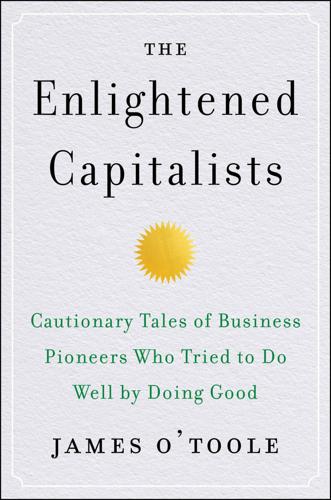
The Enlightened Capitalists
by
James O'Toole
Published 29 Dec 2018
Mounting evidence that influential CEOs like Apple’s Tim Cook have the power to sway public opinion raises alarms because big company executives already wield disproportionate political power through their personal wealth, the financial clout of the corporations they lead, and the influence of lobbyists in their employ. Is it then good for society if they also exercise the considerable power of the bully pulpit that comes with their position? Moreover, when such power is used with regard to sensitive political or religious issues, it is unlikely to be universally appreciated. For example, when Tim Cook spoke in favor of gay marriage, his pronouncement was greeted positively by those on the left, but negatively by those on the right; similarly, when Chick-fil-A CEO Dan Cathy took the opposite stand, the right cheered, and the left jeered.35 The issue is where to draw the line between legitimate and illegitimate use of executive bully pulpits.
…
Trend One: An Emerging Generation of Enlightened and Effective Business Leaders My heart is drawn to evidence that a new generation of enlightened capitalists has emerged in recent years—a generation of men and women as committed to social engagement as their forbearers, but more sophisticated and skilled, and thus more likely to be able to create sustainable legacies. Among the contemporary chief executives often mentioned in this regard are Starbucks’ Howard Schultz, Salesforce’s Marc Benioff, Apple’s Tim Cook, PepsiCo’s Indra Nooyi, Campbell Soup’s Denise Morrison, Merck’s Kenneth Frazier, and, especially, Unilever’s Paul Polman and Whole Foods’ John Mackey. Because they all lead large, publicly traded corporations, optimists posit that those CEOs are on the verge of finally proving that shareholder capitalism and enlightened business practices are fully compatible.
…
In essence, we first must understand the tenets of business orthodoxy before we can appreciate our enlightened capitalists’ heresies. Received Wisdom: The Practice of Business Throughout Most of History COMMON TO ALL MANKIND, Adam Smith wrote, is “the propensity to truck, barter and exchange” goods. Indeed, at some point in prehistory, one of our ancestors may have swapped a bunch of apples for a joint of meat, and the species has been engaged in business ever since. Hence it might be said, contrary to competing claims, that the world’s oldest profession is business. If you think about business in terms of stories, as I do, one story is as old as human society itself: the one about the division of labor, and the trading of goods to meet the necessities of life.
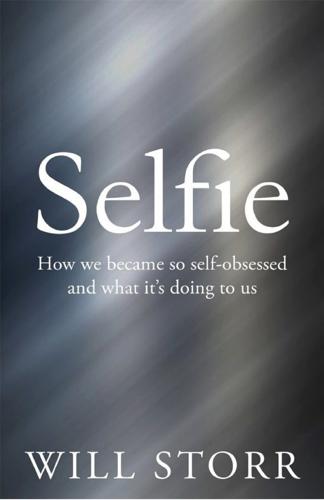
Selfie: How We Became So Self-Obsessed and What It's Doing to Us
by
Will Storr
Published 14 Jun 2017
These days, when business leaders are challenged about the lengths they go to reduce their tax bills, for example, they frequently defend their actions by presenting themselves as ultra-smart contestants in the neoliberal game who are managing to reduce their liabilities whilst still cleverly playing within its rules. In 2016, a three-year investigation by the EU found that electronics company Apple Inc. had paid between 0.005 per cent and 1 per cent tax on their European profits. The commission found that their ‘sweetheart’ deal with Ireland, where they’d based their European HQ, amounted to a form of illegal state aid and attempted to claw back $13bn. Dismissing all this as ‘political crap’, Chief Executive Tim Cook defended Apple by explaining that they’d ‘played by the rules’. Similarly, following the financial crisis, some bankers in Wall Street saw their bailing out by the state as proof of their superior skill at the game.
…
‘Extremely poor’ neighbourhoods are here defined as ‘census tracts where 40 percent or more of the population lives below the federal poverty line.’ Back in 1981 the American Business Roundtable: Mirror, Mirror, Simon Blackburn (Princeton University Press, 2014), p. 97. In 2016, a three-year EU investigation . . . ‘political crap’: ‘Tim Cook condemns Apple tax ruling’, Julia Kollewe, Guardian, 1 September 2016. some bankers in Wall Street saw their bailing out: This American Life, WBEX Chicago, episode 415: ‘Crybabies’, originally aired 24 September 2010. As veteran tech reporter Dan Lyons has observed: Disrupted, Dan Lyons (Hachette, 2016), pp. 117–18.
…
We live in a world of things, he thought, and each of those things has unique properties that can be defined and categorized and acts predictably according to certain laws: an apple that falls to the ground does so under the force of gravity, he said, just as it floats on the sea under that of levity. His view of reality, and of change, was deeply optimistic. Historian Adrienne Mayor writes that Aristotle believed that ‘all things in nature moved towards achieving perfection of their potentials’. One thing in the world that undergoes change is a human. A person, like an apple, is an object in isolation that possesses its own unique properties. But what kind of thing is it?
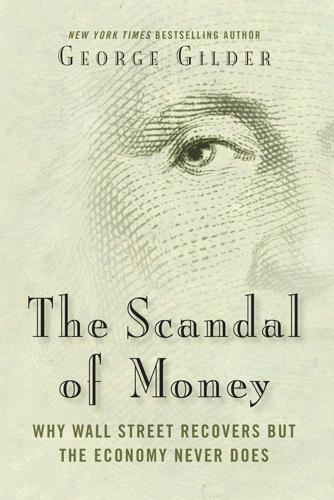
The Scandal of Money
by
George Gilder
Published 23 Feb 2016
The oligopsonists include Facebook’s Mark Zuckerberg, Microsoft’s Satya Nadella, Google’s alphabetic Larry Page, Disney’s Robert Iger, Verizon’s Lowell McAdam, Amazon’s Jeff Bezos, Netflix’s Reed Hastings, and Apple’s Tim Cook. None seems a good bet for a gaggle of gulls. What is really going on is the displacement of the open and rabble-run IPO market by an exclusive game of horse trading among the most exalted elite of “qualified investors,” the owners of the leviathans of the last generation of IPOs. Capped by such regulatory tolls and encumbrances as the accounting mazes of Sarbanes-Oxley, Fair Disclosure’s code of omertà, and the EPA’s “cautionary principle” barring innovative manufacturing, the new Silicon Valley confines ascendant companies beneath a glass ceiling. From Apple to Google, a few public giants dominate this private-company market since they are the only potential buyers.
…
The Boston Consulting Group and Bain & Company charted learning curves across the entire capitalist economy, affecting everything from pins to cookies, insurance policies to phone calls, transistors to lines of code, pork bellies to bottles of milk, steel ingots to airplanes.2 Growing apace with output and sales is entrepreneurial learning, yielding new knowledge across companies and industries, bringing improvements to every facet of production, every manufacturing process, every detail of design, marketing, and management. Crucially, the curve extends to customers, who learn how to use the product and multiply applications as it drops in price. The proliferation of hundreds of thousands of applications for Apple’s iPhones, for example, represented the learning curve of the users as much as the learning curve at Apple. The most famous such curve is that described by Moore’s Law, which predicts a doubling of computer cost-effectiveness every twenty-four months. It has been recycled by the solar industry in the form of Swanson’s Law, showing the decline of the cost of silicon photovoltaic cells from seventy-six dollars per watt in 1977 to fifty cents per watt in 2014.
…
As we saw in chapter 2, it is the most thoroughly documented phenomenon in all enterprise, ordaining that the cost of producing any good or service drops by between 20 percent and 30 percent with every doubling of total units sold. Crucially, the curve extends to customers, who learn how to use the product and multiply applications as it drops in price. The proliferation of hundreds of thousands of applications for Apple’s iPhones, for example, represented the learning curve of the users as much as the learning curve at Apple. All these curves document the essential identity of growth and learning as a central rule of capitalist change. Sound management of money cannot focus on finding stable elements among existing goods and services that are endlessly multifarious and changing.
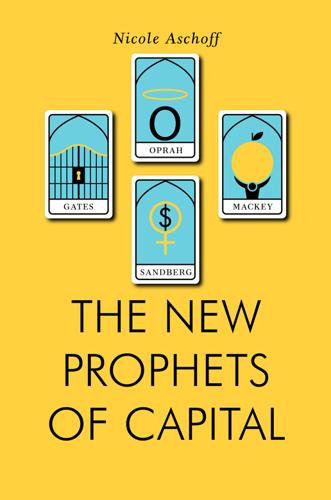
The New Prophets of Capital
by
Nicole Aschoff
Published 10 Mar 2015
And, while the salaries of US corporate executives have skyrocketed over the past two decades, the company has restrained executive pay to nineteen times the average pay of all team members ($18 an hour for full-time, permanent employees). By comparison, in 2011 Apple’s Tim Cook took home $378 million in salary, stock, and other benefits, which was 6,258 times the pay of an average Apple employee. How can Whole Foods do all these things and remain profitable in the cutthroat food industry, where most food retailers make profits of pennies on the dollar? Although Whole Foods saw a temporary dip in profits following the 2008 financial crisis, Mackey attributes the long-term prosperity of the company to its conscious growth model.
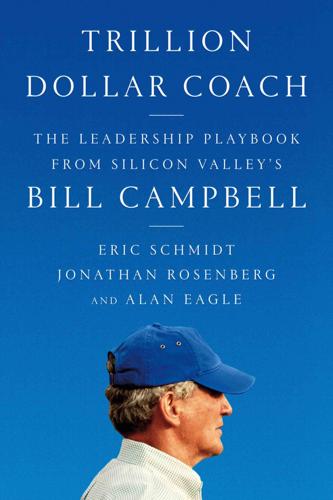
Trillion Dollar Coach: The Leadership Playbook of Silicon Valley's Bill Campbell
by
Eric Schmidt
,
Jonathan Rosenberg
and
Alan Eagle
Published 15 Apr 2019
—Adam Grant Chapter 1 The Caddie and the CEO On a warm April day in 2016, a large crowd gathered on the football field at Sacred Heart School, in the heart of Atherton, California, to honor William Vincent Campbell, Jr., who had recently succumbed to cancer at the age of seventy-five. Bill had been a transcendent figure in the technology business since moving west in 1983, playing a critical role in the success of Apple, Google, Intuit, and numerous other companies. To say he was tremendously respected would be a gross understatement—loved is more like it. Among the audience that day were dozens of technology leaders—Larry Page. Sergey Brin. Mark Zuckerberg. Sheryl Sandberg. Tim Cook. Jeff Bezos. Mary Meeker. John Doerr. Ruth Porat. Scott Cook. Brad Smith. Ben Horowitz. Marc Andreessen. Such a concentration of industry pioneers and power is rarely seen, at least not in Silicon Valley.
…
Going out to the wild, woolly west, where it was more a meritocracy, I would have a chance to move quickly and sit on the management team.”8 Move quickly, indeed. Within nine months of joining Apple, Bill was promoted to VP of sales and marketing and given the task of overseeing the launch of the highly anticipated Macintosh, Apple’s new computer that would replace the Apple II as the company’s flagship product. To kick off the launch, the company made a big move: it bought a slot to run a commercial during the Super Bowl, which would be played in Tampa, Florida, on January 22, 1984. Once the ad was produced, Bill and the team showed it to Apple cofounder Steve Jobs. An allusion to George Orwell’s novel 1984, it showed a young woman running through a dark hallway, fleeing guards, and emerging into a chamber where hundreds of gray-clad, head-shaven men are listening, zombie-like, to a droning “big brother” figure on a large screen before them.
…
.* Although he did not know it at the time, he was about to enter the third chapter of his career, a return to coaching full-time, but not on a football field. When Steve Jobs was forced out of Apple in 1985, Bill Campbell was one of the few leaders at the company who fought against the move. Dave Kinser, an Apple colleague of Bill’s at the time, recalls Bill saying that “we’ve got to keep Steve in the company. He’s way too talented to just let him leave!” Steve remembered that loyalty. When he returned to Apple and became its CEO in 1997, and most of the board members stepped down, Steve named Bill as one of the new directors.* (Bill served on the Apple board until 2014.) Steve and Bill became close friends, speaking frequently and spending many Sunday afternoons walking around their Palo Alto neighborhood discussing all sorts of topics.

Age of Context: Mobile, Sensors, Data and the Future of Privacy
by
Robert Scoble
and
Shel Israel
Published 4 Sep 2013
Location In September 2012, Apple launched its own mobile maps. It took very little time for the public to realize that they were so awful as to be comedic. But the humor got lost if you were using them to find your way along a snowy road late at night. Apple Maps somehow managed to erase famous landmarks from their sites in the world’s major cities; others were relocated under bodies of water. Drivers reported that turn-by-turn voice directions were misguiding them, occasionally urging them to take abrupt turns mid-span on suspension bridges. The maps were so flawed that CEO Tim Cook soon publicly apologized, encouraging customers to use competing products, including Google Maps.
…
How could a company, universally acclaimed for unmatched product elegance, make such an unmitigated gaffe? Some pointed to a bitter and public divorce between Apple and Google. Steve Jobs had considered Google Android to be a direct rip-off of Apple’s iOS operating system. Could Apple Maps have simply been a crudely devised and poorly executed act of revenge against a powerful former ally? We think not. In our view, Apple made a huge mistake, but it was strategically motivated and not part of a petty Silicon Valley vendetta. Although Google and Apple historically had lots of good reasons to be allies, they were destined to become the rivals they now are.
…
Caterina Fake, CEO and founder of Findery, a location-based platform, explains it best in a statement that is simultaneously obvious and profound: “Without location, there is no context.” And for Apple, without context there will be no leadership. So Apple and Google divorced. Today Android and iOS compete for mobile operating system dominance, and thus Apple had little choice but to develop its own maps. Its big mistake was not in the play, but in being unprepared for the enormous challenges they faced on an unrealistically short timeline and then blindly plowing forward. By the time Apple Maps launched, Google had about 7000 employees working on its mobile maps. Matching that is nearly impossible for Apple, whose entire company has only 20,000 employees.
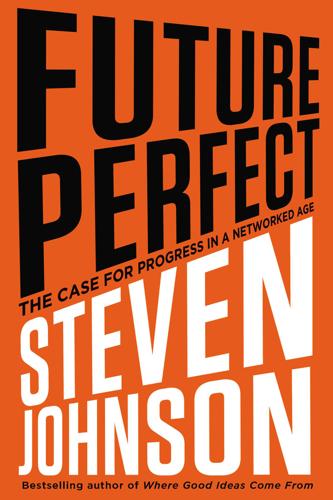
Future Perfect: The Case for Progress in a Networked Age
by
Steven Johnson
Published 14 Jul 2012
In the old days, it might have taken months for details from a John Sculley keynote to make it to the College Hill Bookstore; now the lag is seconds, with dozens of people live-blogging every passing phrase from a Steve Jobs or Tim Cook speech. There are 8,000-word dissections of each new release of OS X at the technological site Ars Technica, written with attention to detail and technical sophistication that far exceed anything a traditional newspaper would ever attempt. Writers such as John Gruber and Donald Norman regularly post intricate critiques of user-interface issues. The traditional newspapers have improved their coverage as well: think of David Pogue’s reviews in The New York Times, or Dow-Jones’s extended technology site, AllThingsD.
…
Tech critics such as Scott Rosenberg and Andrew Leonard at Salon wrote tens of thousands of words on the latest developments at Apple. (I wrote a few thousand myself at the online magazine I had founded, FEED.) Sometime around then, Apple launched its first official website; now I could get breaking news about the company directly from the source, the second they announced it. If my nineteen-year-old self could time-travel to the present day, he would no doubt be amazed by all the Apple technology—the iPhones and MacBook Airs—but I think he would be just as amazed by the sheer volume and diversity of the information about Apple available now. In the old days, it might have taken months for details from a John Sculley keynote to make it to the College Hill Bookstore; now the lag is seconds, with dozens of people live-blogging every passing phrase from a Steve Jobs or Tim Cook speech.
…
We need to be reminded of what life was like before the Web. I made my monthly pilgrimages to College Hill because I was interested in the Mac, which was, it should be said, a niche interest in 1987, though not that much of a niche. Apple was one of the world’s largest creators of personal computers, and by far the most innovative. But if you wanted to find out news about the Mac—new machines from Apple, the latest word on the upcoming System 7 or HyperCard, or any new releases from the thousands of software developers or peripheral manufacturers—if you wanted to keep up with any of this, there was just about one channel available to you, as a college student in Providence, Rhode Island.
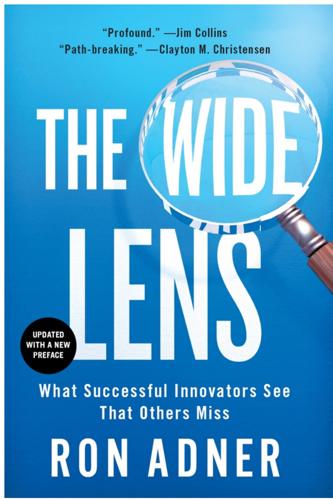
The Wide Lens: What Successful Innovators See That Others Miss
by
Ron Adner
Published 1 Mar 2012
CNET.com, July 12, 2002, http://news.cnet.com/2100-1040-943519.xhtml. 210 iPod, boasting 100 million customers: Steven Levy, “Why We Went Nuts About the iPhone,” Newsweek, July 16, 2007. 210 Apple’s stock shot up 44 percent: Matt Krantz, “iPhone Powers up Apple’s Shares,” USA Today, June 28, 2007. 211 “four times the number of PCs that ship every year”: Morris, “Steve Jobs Speaks Out.” 211 Ericsson released the R380: Dave Conabree, “Ericsson Introduces the New R380e,” Mobile Magazine, September 25, 2001. 211 Palm followed up with its version: Sascha Segan, “Kyocera Launches First Smartphone in Years,” PC Magazine, March 23, 2010, http://www.pcmag.com/article2/0,2817,2361664,00.asp#fbid=C81SVwKJIvh. 211 “one more entrant into an already very busy space”: “RIM Co-CEO Doesn’t See Threat from Apple’s iPhone,” InformationWeek, February 12, 2007. 212 the phone was exclusively available from only one carrier: In a handful of markets regulators ruled the exclusivity arrangement illegal. 212 “The bigger problem is the AT&T network”: David Pogue, “The iPhone Matches Most of Its Hype,” New York Times, June 27, 2007. 212 priced at a mere $99 in 2007: Kim Hart, “Rivals Ready for iPhone’s Entrance; Pricey Gadget May Alter Wireless Field,” Washington Post, June 24, 2007. 212 “cause irreparable damage to the iPhone’s software”: Apple, press release, September 24, 2007. 213 “I say I like our strategy”: Steve Ballmer interviewed on CNBC, January 17, 2007. 213 They ran out of the older model six weeks before the July 2008 launch: Tom Krazit, “The iPhone, One Year Later,” CNET.com, June 26, 2008, http://news.cnet.com/8301-13579_3-9977572-37.xhtml. 213 60 percent went to buyers who already owned at least one iPod: Apple COO Tim Cook’s comments at Goldman Sachs Technology and Internet Conference, cited in JPMorgan analyst report, “Strolling Through the Apple Orchard: The Good, the Bad and the Ugly Scenarios,” March 4, 2008. 215 the average iPhone user paid AT&T $2,000: Jenna Wortham, “Customers Angered as iPhones Overload AT&T,” New York Times, September 2, 2009. 215 as high as $18 per user per month: Tom Krazit, “Piper Jaffray: AT&T Paying Apple $18 per iPhone, Per Month,” CNET.com, October 24, 2007, http://news.cnet.com/8301-13579_3-9803657-37.xhtml. 216 Apple announced its 10 billionth app download: Apple.com, “iTunes Store Tops 10 Billion Songs Sold,” February 25, 2010, http://www.apple.com/pr/library/2010/02/25iTunes-Store-Tops-10-Billion-Songs-Sold.xhtml.
…
But while we can see these three principles employed by scores of successful organizations, no recent firm is a better exemplar of their use than Apple. Apple’s Success in the New Millennium Everyone knows that Apple has been on an incredible run for the last decade. But while a great deal of attention has focused on Apple’s sleek product designs, what is often misunderstood is Apple’s systematic approach to its ecosystem strategy—its hidden source of advantage. Apple has no monopoly on great products, great interfaces, or a great brand. Apple’s product design is key, of course, but Apple’s rivals have been at its heels—behind but close—for years, even garnering praise for comparable design quality and better functionality.
…
,” EDN.com, June 25, 2001, http://www.edn.com/article/484332-Is_MP3_Here_to_Stay_.php. 145 “the hit of the holiday season”: Arik Hesseldahl, “iPod’s a Winner,” Forbes.com, December 7, 2001, http://www.forbes.com/2001/12/07/1207tentech.xhtml. 145 “revolutionary,” and “brilliant”: Eliot Van Buskirk, “How the iPod Will Change Computing,” CNET.com, November 2, 2001, http://reviews.cnet.com/4520-6450_7-5020659-1.xhtml. 146 purchased over 600,000 iPods: “Apple Press Info,” Apple.com., 2011, http://www.apple.com/pr/products/ipodhistory/. Accessed July 23, 2011. 146 Apple held only 15 percent of the digital player market: Brian Garrity, “Digital Devices Get Smaller, Capacity Grows; Will Consumers Respond?,” Billboard, November 9, 2002. 146 “iTunes Music Store offers a groundbreaking solution”: Apple, “Apple Launches the iTunes Music Store,” press release, April 28, 2003. 146 200,000 songs from major labels: Ibid. 146 8 billion songs: William Blair & Company, “Apple Inc.,” equity research report, September 2, 2009. 146 operating margin of 10 percent: Estimate from report by Pacific Crest Securities analyst Andy Hargreaves, discussed in Eric Savitz, “Apple: Turns Out, iTunes Makes Money, Pacific Crest Says, Subscription Service Seems Inevitable,” Tech Trader Daily, April 23, 2007. 146 compatible with both FireWire and USB cables: Michelle Megna, “Apple’s Shining Moment: The Company Hits the Right Notes with Its New Online Music Store and Revamped iPods,” New York Daily News, May 11, 2003. 146 sales of portable CD players were still more than double: Christopher Walsh, “All They Want for Xmas Is the iPod,” Billboard, January 29, 2005. 147 sales of the iPod had leaped 616 percent: Mark Evans, “Apple’s iPod Is ‘the Kleenex’ of MP3 Players: Cultural Phenomenon Garnered Apple US$1.1-Billion in Q3,” National Post (Canada), July 15, 2005. 147 closest competitor with 8 percent market share: IDC data cited in William Blair & Company, “Apple Inc.,” equity research report., September 2, 2009. 147 “These waves of technology, you can see them way before they happen”: Betsy Morris, “Steve Jobs Speaks Out,” Fortune, March 7, 2008. 147 “the Walkman of the early 21st century”: “Behind the Smiles at Sony,” Economist, March 12, 2005. 148 pioneers are the ones with arrows in their backs: Peter N.

Connectography: Mapping the Future of Global Civilization
by
Parag Khanna
Published 18 Apr 2016
Apple is now taking its passive provision of goods a step further by strategically relaunching the production of one iMac line in Texas. As the CEO, Tim Cook, said in December 2013, “I don’t think we have a responsibility to create a certain kind of job. But I think we do have a responsibility to create jobs.”3 The distinction is important, because even though Apple will invest $100 million in repatriating assembly, Apple products are still largely made from foreign parts such as Samsung chips and Sharp screens that will have to be imported, and its longtime manufacturing partner, Taiwanese Foxconn, has facilities in Texas already.
…
In early 2015, the trading house Itochu made the largest Japanese foreign investment ever in China, buying (together with Thailand’s CP Group) a 10 percent stake in CITIC, one of China’s oldest and most respected conglomerates. CHAPTER 7: THE GREAT SUPPLY CHAIN WAR 1. Interview with author, July 18, 2015. 2. Enrico Moretti, The New Geography of Jobs (Houghton Mifflin Harcourt, 2012). 3. Josh Tyrangiel, “Tim Cook’s Freshman Year: The Apple CEO Speaks,” Bloomberg Businessweek, Dec. 6, 2012. 4. However, additive manufacturing and the sharing economy together do cause tremendous domestic dislocation. The construction sector is not tradable, but it can increasingly be automated as entire homes are designed, printed, and assembled out of 3-D printing kits, displacing contractors and builders across America and Europe. 5.
…
Even Silicon Valley’s technology companies increasingly make their products—and keep their money—in the cloud. There are fewer than five countries in the world whose GDP is larger than the more than $200 billion of liquid cash Apple Inc. holds in securities worldwide, meaning Apple could buy many countries’ combined output (minus their debt). Having sold almost two billion products to over one billion people, Apple not only has more money but also occupies greater mind share than most nations. Countries run by supply chains, cities that run themselves, communities that know no borders, and companies with more power than governments—all are evidence of the shift toward a new kind of pluralistic world system.

Hit Refresh: The Quest to Rediscover Microsoft's Soul and Imagine a Better Future for Everyone
by
Satya Nadella
,
Greg Shaw
and
Jill Tracie Nichols
Published 25 Sep 2017
Believing that the iPhone used by one of the shooters might contain information that would illuminate just what had happened and thereby help prevent future attacks, the FBI filed suit to force Apple to unlock the phone. Apple pushed back. Tim Cook, Apple’s CEO, argued that his company could breach the phone’s security only by creating new software that would expose a so-called backdoor that anyone could then infiltrate. The FBI, in Apple’s view, was threatening data security by seeking to establish a precedent that the U.S. government could use to force any technology company to create software that would undermine the security of its products. Other technologists backed Apple’s position. Once again, Microsoft faced a difficult decision—one that weighed heavily on me personally.
…
I don’t see it that way. When done right, partnering grows the pie for everyone—for customers, yes, but also for each of the partners. Ultimately the consensus was that this partnership with Apple would help to ensure Office’s value was available to everyone, and Apple was committing to make its iOS really show off the great things Office can do, which would further solidify Microsoft as the top developer for Apple. On launch day, Apple’s Senior Vice President for Worldwide Marketing, Phil Schiller, teased the audience as he set up the next demo at the iPad Pro launch. “We’ve been lucky to have some developers come in to work with us on professional productivity.
…
PC shipments, the financial lifeblood of Microsoft, had leveled off. Meanwhile sales of Apple and Google smartphones and tablets were on the rise, producing growing revenues from search and online advertising that Microsoft hadn’t matched. Meanwhile, Amazon had quietly launched Amazon Web Services (AWS), establishing itself for years to come as a leader in the lucrative, rapidly growing cloud services business. The logic behind the advent of the cloud was simple and compelling. The PC Revolution of the 1980s, led by Microsoft, Intel, Apple, and others, had made computing accessible to homes and offices around the world.
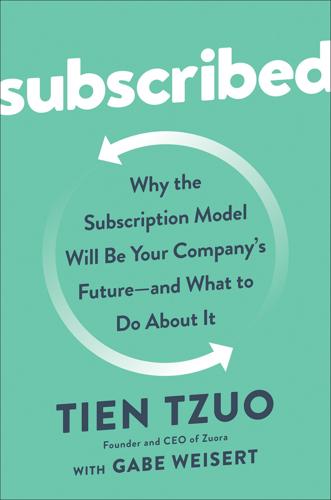
Subscribed: Why the Subscription Model Will Be Your Company's Future - and What to Do About It
by
Tien Tzuo
and
Gabe Weisert
Published 4 Jun 2018
That revenue is growing at 27 percent a year and represents more than half of Apple’s growth. And while its hardware business is seasonal and subject to wide peaks and troughs, its service business shows consistent, predictable growth quarter over quarter. But guess what? Some people still don’t get it! The Q&A session of that last earnings call was dominated by analyst questions around iPhone supply and demand. It’s enough to make you slam your forehead on your desk. Now, I understand that today Apple is doing just fine by selling expensive phones to affluent people. But just imagine what would happen at the next Apple keynote if Tim Cook announced a simple monthly Apple subscription plan that covered everything: network provider charges, automatic hardware upgrades, and add-on options for extra devices, music and video content, specialty software, gaming, etc.
…
If, as a result, Cupertino could deliver a financial statement similar to Salesforce’s noting that 80 percent of next year’s revenue was already in the bank, how fast do you think it would take for Apple to hit that trillion-dollar valuation? As each year passes, Apple cares less and less about how many iPhones it ships, and more about its revenue per Apple ID, lifetime value per Apple ID, and efficiency metrics toward growing the base and value of those Apple IDs. Apple has cleverly integrated those IDs into its retail experience as well. I can walk into any Apple store, give them my ID, and walk out with a product. That’s pretty amazing. Starbucks also has the ID. I can log in to Starbucks and look at all the coffees and lattes I’ve been drinking since I started using a Starbucks card and its mobile payment app.
…
But just imagine what would happen at the next Apple keynote if Tim Cook announced a simple monthly Apple subscription plan that covered everything: network provider charges, automatic hardware upgrades, and add-on options for extra devices, music and video content, specialty software, gaming, etc. Not just an upgrade program, but Apple as a Service. I have to admit, this isn’t my idea—it belongs to Goldman Sachs. Goldman analyst Jankowski has suggested an “Apple Prime” $50 monthly subscription that would include a guaranteed phone upgrade, Apple TV, and Apple Music. If, as a result, Cupertino could deliver a financial statement similar to Salesforce’s noting that 80 percent of next year’s revenue was already in the bank, how fast do you think it would take for Apple to hit that trillion-dollar valuation?

Move Fast and Break Things: How Facebook, Google, and Amazon Cornered Culture and Undermined Democracy
by
Jonathan Taplin
Published 17 Apr 2017
Amazon, whose founder, Jeff Bezos, embraces the libertarian creed but has not taken the “don’t ask permission” route, has instead opened a new front: a relentless push to lower prices and commoditize content (especially books), which presents a different danger. And then there is Apple, the dissenter from the libertarian creed. Both Steve Jobs and Tim Cook have been real allies to the content community, and their stance against the surveillance-marketing model that is at the core of Google’s and Facebook’s businesses—i.e., their support of ad blockers—puts them in direct opposition to the dominant search and social platforms.
…
Jobs went back to Cupertino and called a board meeting, saying he had to build a new computer based on the PARC architecture and that it should not be backward-compatible with the existing Apple II. The board thought he was crazy, but Jobs applied his charisma—his “reality distortion field”—and got his way. Xerox got its Apple shares, and in December of 1980, Apple went public at $22 per share. Xerox’s holdings were instantly worth millions. The first version of a computer using the PARC architecture, the Lisa, was a commercial failure, but when Jobs introduced the Macintosh in an iconic advertisement that aired during the 1984 Super Bowl, the long-awaited vision of the future arrived. The tragedy for Xerox was that two years later, the Xerox CFO sold all its Apple stock. Imagine what it would have meant to the company if it had held on to 5 percent of Apple, which would now be worth about $32 billion.
…
Brown explains: “Xerox built big complicated stuff that sold for $250,000 a unit and came with three-year guarantees. What was the chance that any of the PARC stuff could ever be sold through the Xerox channels? Zero.” So the decision was made to try to partner with Apple. Almost every version of the story of Steve Jobs visiting PARC for a demonstration in December of 1979 is wrong. It is usually said to epitomize the complete failure on Xerox’s part to understand what they had invented. A bit of background: Apple had successfully launched the Apple II computer in April of 1977. It was an instant hit, and between September of 1977 and September of 1980, yearly sales grew from $775,000 to $118 million, an average annual growth rate of 533 percent.
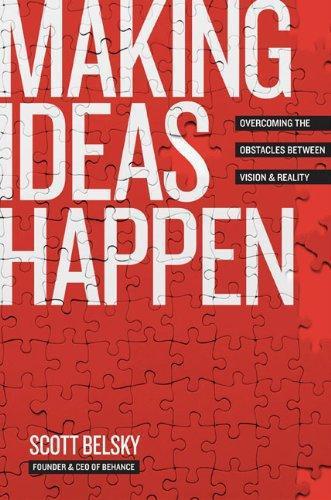
Making Ideas Happen: Overcoming the Obstacles Between Vision and Reality
by
Scott Belsky
Published 31 Mar 2010
As we examine the history of spectacular creations and the leaders behind these accomplishments, some obvious examples of Doers, Dreamers, and Incrementalists stand out. Bill Bowerman, the former track coach who developed Nike’s running shoes, partnered with Phil Knight to transform his vision into a business. In the leadership of Apple, one might call Jonathan Ive (chief designer), Tim Cook (chief operating officer), and Steve Jobs (chief executive officer) Dreamer, Doer, and Incrementalist, respectively. In the world of fashion, the Dreamer Calvin Klein had Barry Schwartz, Ralph Lauren had Roger Farah, and Marc Jacobs had Robert Duffy—three fashion visionaries paired with a world-class Doer as a partner.
…
You also don’t want to create too much structure around when you can and cannot generate new ideas. However, you must be willing to kill ideas liberally—for the sake of fully pursuing others. In a rare interview in BusinessWeek on Apple’s system for innovation, CEO Steve Jobs explained that, in fact, there is no system at Apple—and that spontaneity is a crucial element for innovation, so long as it is paired with the ability to say no without hesitation: Apple is a very disciplined company, and we have great processes. But that’s not what it’s about. Process makes you more efficient. But innovation comes from people meeting up in the hallways or calling each other at 10:30 at night with a new idea, or because they realized something that shoots holes in how we’ve been thinking about a problem.
…
Since 2004, AMR Research, a leading authority on supply chain research that serves numerous Fortune 500 companies, has published an annual list of the twenty-five companies with the best supply chain management. You might be surprised to learn that Apple debuted on the list at No. 2 in 2007, and overtook companies such as Anheuser-Busch, Wal-Mart, Procter & Gamble, and Toyota to take the No. 1 slot in 2008. Why would Apple, a company known for new ideas and its ability to “think different,” also be one of the most organized companies on the planet? The answer is that—like it or not—organization is a major force for making ideas happen.
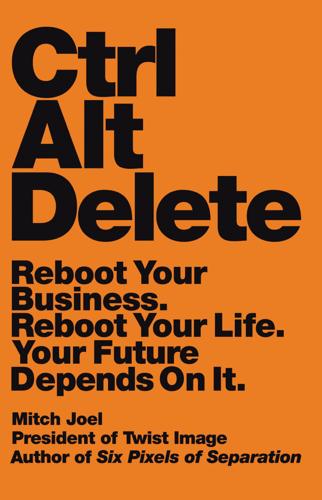
Ctrl Alt Delete: Reboot Your Business. Reboot Your Life. Your Future Depends on It.
by
Mitch Joel
Published 20 May 2013
And what this data indicates is that the one-screen world is not a possible trend but an inevitability that has already taken place, and that the growth continues at an exponential pace. When Apple CEO Tim Cook took to the stage at the Yerba Buena Center for the Arts on March 7, 2012, many people were waiting to see both how Cook would handle the first major release from Apple in a post–Steve Jobs world and what the rumored iPad would be capable of, as the iPad 2 was still selling well. Beyond a smooth performance and a new iPad that featured Retina Display with a faster computer processor (dual-core A5X processor with quad-core graphics, thank you very much), few picked up on the staggering data point that Cook enlightened us all with. Apple sold over fifteen million iPads in the first quarter of 2012.
…
Ironically, other, scrappier startups have disrupted this traditional retail model with digital-only brands that are capturing the imagination (and money) of consumers all over the world. WHAT APPLE KNOWS. What happened prior to 2001 that made Apple go into the retail business? Whenever the topic of Apple and the Apple retail experience (aka Apple Store) is brought up, many media pundits roll their eyes as if the success of these sparse and crisp stores is some kind of anomaly in business lore. It’s not. Apple came to a conclusion in the 1990s that many businesses have yet to wake up to. They knew that if potential customers walked into a traditional consumer electronics goods store and became inundated with a massive selection of computers and laptops, they would, instinctively, defer to the first sales associate they could wrestle down.
…
Prior to becoming the CEO of JCPenney, Johnson was the senior vice president of retail operations at Apple. In short, he led the concept of both the Apple retail stores and the Genius Bar. His record at Apple is pristine. Within two years of the first store opening, the retail operation of Apple surpassed a billion dollars in annual sales (beating the record held by The Gap). Globally, Apple now has over three hundred stores, and their expansion plans continue to be as aggressive as their product launches. In November 2011, Johnson left Apple to lead JCPenney through this time of purgatory and reboot. His first big and bold moves made news as the 110-year-old company not only struggles to remain relevant but fights within the constraints of the traditional retail world—a place where being an anchor store at a highly coveted shopping mall was the difference between success and failure.
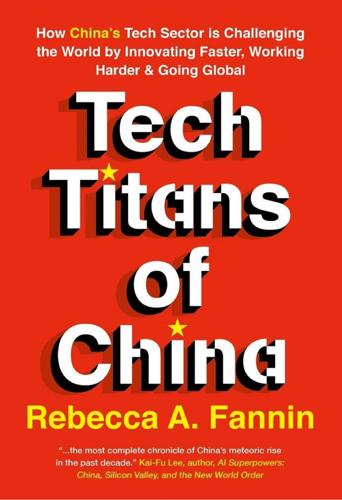
Tech Titans of China: How China's Tech Sector Is Challenging the World by Innovating Faster, Working Harder, and Going Global
by
Rebecca Fannin
Published 2 Sep 2019
China’s massive $9 trillion mobile payments market led by Alibaba and Tencent is light-years ahead of the United States.5,6 Nearly everyone in the country, about 900 million, uses their smartphone as a mobile wallet, Alipay or WeChat Pay, to scan items and pay instantly without banking and credit card fees. Cash is a thing of the past in China. Cash, checks, money orders, and credit and debit cards are still commonly used in the United States, and Apple Pay and Google Pay are not yet mainstream in the States.7 Breaking into China now isn’t an option for American financial brands, given the dominance of Alibaba and Tencent. Google’s app store is blocked, and Apple Pay has such limited traction that Apple CEO Tim Cook agreed to accept Alipay at Apple’s 41 retail stores in China. Master-Card and Visa have tried for years to break into China while American Express was recently approved, but it’s probably too late.
…
DJI’s new flashy home in Shenzhen is a futuristic twin skyscraper designed by Foster & Partners, the same architect as for Apple’s orbit-like base in Cupertino. The plush building features cantilevered floors, a sky bridge where drones will be tested, and even a robot-fighting ring. The Apple of Drones DJI has positioned itself as the Apple of drones. Rumors have popped up that Apple would buy DJI as the iPhone maker mulls an entry into the drone market. In a stroke of marketing genius, DJI has obtained a dedicated section of prime real estate space at Apple retail stores globally for a line of advanced consumer drones. Its drones are sold on Amazon, eBay, Alibaba’s online retail service AliExpress, DJI’s site, and retail stores.
…
CHAPTER 3 ________________ GAINING FAST: CHINA’S NEXT TECH TITANS The next group of up-and-comers is right behind China’s BAT and leading the future for smartphones that rival Apple, internet-connected smart homes, superapps for speedy on-demand takeout lunches, plus 15-second video thrills and AI-fed news. XIAOMI: The Apple of the East Chinese tech entrepreneur Lei Jun is sometimes called the Steve Jobs of Apple. An entrepreneur celebrity in China much as Jobs was in Silicon Valley, he launched China’s smartphone maker Xiaomi in the spirit of Jobs and copied his products and style down to blue jeans and black T-shirt attire and stage presentations for new iPhones and iPads, even once teasing an introduction with the adopted line “Just one more thing.”

Prediction Machines: The Simple Economics of Artificial Intelligence
by
Ajay Agrawal
,
Joshua Gans
and
Avi Goldfarb
Published 16 Apr 2018
If strategy involves doing something at the expense of something else, then in the AI space, few companies made a stronger, earlier commitment than Apple. Tim Cook wrote, in a special section devoted to privacy on Apple’s home page: “At Apple, your trust means everything to us. That’s why we respect your privacy and protect it with strong encryption, plus strict policies that govern how all data is handled.”11 He went on: A few years ago, users of Internet services began to realize that when an online service is free, you’re not the customer. You’re the product. But at Apple, we believe a great customer experience shouldn’t come at the expense of your privacy.
…
Plain and simple.12 Apple did not make this decision due to a government regulation. Some claimed Apple made the decision because it was purportedly lagging behind Google and Facebook in developing AI. No company, certainly not Apple, could eschew AI. This commitment would make its job harder. It plans to do AI in a way that respects privacy. It is making a big strategic bet that consumers will want control over their own data. Whether for security or privacy, Apple has bet that its commitment will make consumers more, not less, likely to allow AI onto their devices.13 Apple isn’t alone in betting that protecting privacy will pay off.
…
Many other companies, including Google, Facebook, and Amazon, have chosen a different path, telling users that they will use data to provide better products. Apple’s focus on privacy limits the products it can offer. For instance, both Apple and Google have face recognition built into their photo services. To be useful to consumers, the faces have to be tagged. Google does this, preserving the tags, regardless of device, since the recognition runs on Google servers. Apple, however, because of privacy concerns, has opted to have that recognition occur at the device level. That means if you tag faces of people you know on your Mac, the tags will not carry over to your iPhone or iPad.
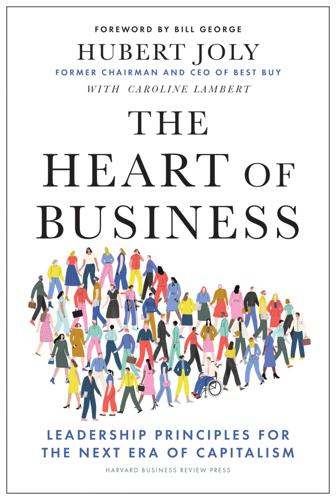
The Heart of Business: Leadership Principles for the Next Era of Capitalism
by
Hubert Joly
Published 14 Jun 2021
In one of my first addresses at Best Buy, I asked the company’s top leaders to imagine how the conversation would go if I were to call Apple’s CEO Tim Cook and Amazon’s Jeff Bezos. “How is the wind where you are sailing?” I would ask. “The wind is great! Great sailing. We’re having the time of our life,” they both would answer. So if they found the wind at their backs, I concluded, then the problem was not the wind. And if wind was not the problem, then we probably were. We could keep coming up with the best possible excuses and wait for the unlikely day when prizes would be handed out in that category. Or we could change tack. First, we had to regroup, which required some pruning.
…
We applied the same model with other suppliers, including Microsoft, Sony, LG, AT&T, Verizon, Sprint, Canon, Nikon, and Google. The strategy contributed to revitalizing Sony’s ailing TV business. Apple, with whom we had developed the first store-within-a-store experience back in 2007, also decided to double down and invest more in our space, even though they had their own flagship retail fleet. And in 2019, Apple announced that Best Buy would service Apple products, helping the many customers who do not live near an Apple store. Great for the customers, great for Apple, and great for Best Buy, as this meant another reason for customers to visit our stores. If Best Buy had remained a company whose mission was to sell electronics, showrooming might well have killed us, as more and more customers used us to look at products and then ordered them from Amazon.
…
So was the shift to online shopping and the fact that Amazon was not collecting sales tax. Apple Stores added to the headwinds. Prices on key products were deflating; the iPhone was making cameras, voice recorders, and music players redundant. Best Buy appeared to be the victim of a perfect storm of circumstances—even the best sailors cannot overcome such headwinds. But how could that be? All my previous jobs had been in industries where IT and electronics played a positive role. The likes of Amazon, Apple, and Samsung were doing very well. In one of my first addresses at Best Buy, I asked the company’s top leaders to imagine how the conversation would go if I were to call Apple’s CEO Tim Cook and Amazon’s Jeff Bezos.

Future Crimes: Everything Is Connected, Everyone Is Vulnerable and What We Can Do About It
by
Marc Goodman
Published 24 Feb 2015
Though modern computer operating systems, including those from both Microsoft and Apple, come with free hard disk encryption tools built in, they are not turned on by default, and only a small minority of companies and a tiny percentage of consumers encrypt the data on their laptops or desktops. In fact, most consumers have no idea these security protocols even exist. In the wake of the celebrity iCloud hacking fiasco of 2014, Apple’s chief executive, Tim Cook, acknowledged the company had to do more to ratchet up customers’ awareness of cyber-security matters. I thoroughly agree. In September 2014, Apple announced that its latest iPhone would encrypt all data on the device when a password was set, a move Google vowed to match with its forthcoming Android mobile phone operating system.
…
In September 2014, Apple announced that its latest iPhone would encrypt all data on the device when a password was set, a move Google vowed to match with its forthcoming Android mobile phone operating system. These are important steps forward in minimizing smartphone security risks, but given that 40 percent of users don’t even use a password on their mobile phones at all, Tim Cook was right: much more education and awareness are needed. Taking a Byte out of Cyber Crime: Education Is Essential Civilization is in a race between education and catastrophe. H. G. WELLS We have a literacy problem in the United States and around the world, and it’s not the one most think of.
…
By finally creating its own mobile app for users, Facebook devised not only a better user experience but also a new tool for grabbing voluminous amounts of data from a user’s mobile device. Pilfering Your Data? There’s an App for That An Apple iPhone commercial in 2009 famously introduced us to the phrase “there’s an app for that” as a means of demonstrating there is an iPhone application for every possible human need. A bold statement at the time, but perhaps Steve Jobs was right. Since its launch in 2008, there have been more than sixty-five billion downloads from Apple’s App Store, generating revenues of over $10 billion in 2013 alone. To compete with Apple, Google launched its own app store known as Google Play, and each company hosts more than a million separate applications available for download.
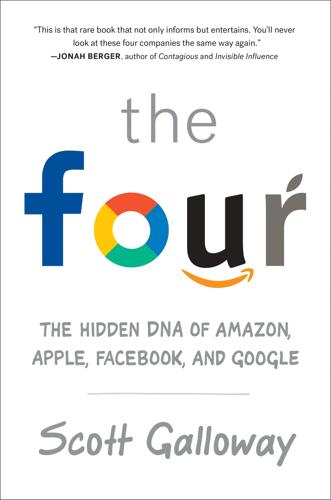
The Four: How Amazon, Apple, Facebook, and Google Divided and Conquered the World
by
Scott Galloway
Published 2 Oct 2017
For all the good that Jobs did for Apple, he was also a destructive force inside the company. He bullied employees; his attitudes around philanthropy and inclusiveness were small; his mercurial personality and megalomania kept Apple perpetually in borderline chaos. His death ended the company’s historic run of innovation, but it also let Apple, under Tim Cook, focus on predictability, profitability, and scale. You can see the results on the balance sheet: if profits are a sign of success, in fiscal year 2015 Apple was the most successful firm in history, registering $53.4 billion in net profit.9 If Apple were anything but a Fortune 500 tech darling, Congress would have implemented tax reforms.10 But most politicians, like other privileged classes around the world, feel a tiny rush when they pull out their iPhones.
…
Biography. http://www.biography.com/people/louis-vuitton-17112264. 21. Apple Newsroom. “‘Designed by Apple in Calfornia’ chronicles 20 years of Apple design.” https://www.apple.com/newsroom/2016/11/designed-by-apple-in-california-chronicles-20-years-of-apple-design/. 22. Ibid. 23. Norman, Don. Emotional Design: Why We Love (or Hate) Everyday Things (New York: Basic Books, 2005). 24. Turner, Daniel. “The Secret of Apple Design.” MIT Technology Review, May 1, 2007. https://www.technologyreview.com/s/407782/the-secret-of-apple-design/. 25. Munk, Nina. “Gap Gets It: Mickey Drexler Is Turning His Apparel Chain into a Global Brand.
…
The company’s former chief financial officer, Joseph Graziano, signaled disaster, telling Business Week that Jobs was insisting on “serving caviar in a world that seems content with cheese and crackers.”31 The stores, of course, changed the tech industry—and advanced Apple as a luxury company. The iPhone drove Apple’s share, but stores drove the brand and margin. Walk up Fifth Avenue or the Champs Élysées, and you see Vuitton, Cartier, Hermès, and Apple. These are captive channels. A $26,000 Cartier Ballon Bleu watch or a $5,000 suede Burberry trench coat would lose their luster on shelves at Macy’s. But stores operated by the brands become temples to the brand. Apple’s stores sell nearly $5,000 per square foot. Number 2 is a convenience store, which lags by 50 percent.32 It wasn’t the iPhone, but the Apple Store, that defined Apple’s success. 4.
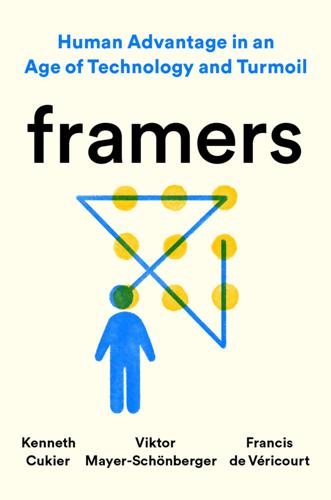
Framers: Human Advantage in an Age of Technology and Turmoil
by
Kenneth Cukier
,
Viktor Mayer-Schönberger
and
Francis de Véricourt
Published 10 May 2021
There would be disagreement and friction, which is a headache to manage. But the benefits of diversity outweigh these difficulties. Three years after Podolny started, Jobs passed away and his deputy, Tim Cook, took over as chief executive. Cook has long been an advocate of diversity in all its forms. His personal story may play a role, as he is one of the few bosses of a major company to come out as gay. Under his leadership, Apple would honor Jobs’s belief that diversity makes for better framers and more successful companies. A Mind-Set, Not a Method Think of mental diversity as you might carpentry tools.
…
The information was also compiled from conversations with Podolny when he was at Yale, interviews, firsthand experience, and written accounts, including: Jessica Guynn, “Steve Jobs’ Virtual DNA to Be Fostered in Apple University,” Los Angeles Times, October 6, 2011, https://www.latimes.com/archives/la-xpm-2011-oct-06-la-fi-apple-university-20111006-story.html; Brian X. Chen, “Simplifying the Bull: How Picasso Helps to Teach Apple’s Style,” New York Times, August 10, 2014, https://www.nytimes.com/2014/08/11/technology/-inside-apples-internal-training-program-.html; Adam Lashinsky, Inside Apple: How America’s Most Admired—and Secretive—Company Really Works (New York: Business Plus, 2012). On insight problems: Marvin Levine, A Cognitive Theory of Learning: Research on Hypothesis Testing (Hillsdale, NJ: Lawrence Erlbaum, 1975); Janet Metcalfe and David Wiebe, “Intuition in Insight and Noninsight Problem Solving,” Memory & Cognition 15, no. 3 (May 1987): 238–46.
…
We make similar mistakes in our own day. In 2008 Nokia led the world in mobile phone sales. When Apple introduced the iPhone, few thought it would take off. The trend was to make handsets smaller and cheaper, but Apple’s was bulkier, pricier, and buggier. Nokia’s frame came from the conservative telecom industry, valuing practicality and reliability. Apple’s frame came from the breathlessly innovative computing industry, valuing ease of use and the extensibility of new features via software. That frame turned out to be a better fit for the needs and wants of consumers—and Apple dominated the market. Misapplying frames can have horrendous consequences.
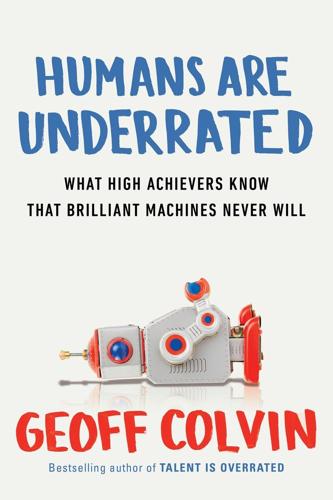
Humans Are Underrated: What High Achievers Know That Brilliant Machines Never Will
by
Geoff Colvin
Published 3 Aug 2015
Dunbar, “Rowers’ High: Behavioural Synchrony Is Correlated with Elevated Pain Thresholds,” Biology Letters 15, September 2009, doi:10.1098/rsbl.2009.0670. Nonetheless, by the time Jobs stepped down as CEO in August 2011 . . . See biographies at www.apple.com for the tenures as of August 2011 of Eddy Cue (twenty-two years), Phil Schiller (fourteen years), Jonathan Ive (nineteen years), Scott Forstall (nineteen years), and Tim Cook (thirteen years). To see how wrong things can go . . . “Why Teams Don’t Work: An interview with J. Richard Hackman by Diane Coutu,” Harvard Business Review, May 2009. Dr. John Noseworthy, CEO of the Mayo Clinic, told me about the considerable lengths to which he has gone . . .
…
We do not all bring the same social skills, and group effectiveness depends on building up social capital between group members through earning trust and helping one another. It all takes time. An important implication of these findings is that since highly effective teams are rare and valuable, not easily or quickly replicated, keeping them together, once formed, is worth a lot. Exhibit A was Apple’s top team under Steve Jobs. The conventional view of Apple’s success is that it derived from Jobs’s genius and dictatorial management, but Jobs knew that wasn’t nearly enough. He worked extraordinarily hard to assemble and keep a highly effective top team, which is an extremely difficult feat in a successful company. As the company prospers, other firms try to lure away its executives, usually with higher-level, higher-paying, more highly visible roles, and the temptation can be overwhelming.
…
You run into someone, you ask what they’re doing, you say ‘Wow,’ and soon you’re cooking up all sorts of ideas.’” It all has to happen in person. That’s why Jobs famously designed the Pixar headquarters the way he did. Pixar is the animation studio that Jobs initially funded and eventually ran in the years before he returned to Apple and for several years thereafter. It’s arguably the most successful film studio ever, since it has never produced a flop. The Toy Story films, Finding Nemo, the Cars films—of the fourteen features it had produced through 2013, every one was a major financial winner. Jobs wanted to keep it that way, so he insisted that Pixar’s new headquarters be designed around a central atrium; he then placed the café, mailboxes, conference rooms, and other elements so as to force people to criss-cross it.
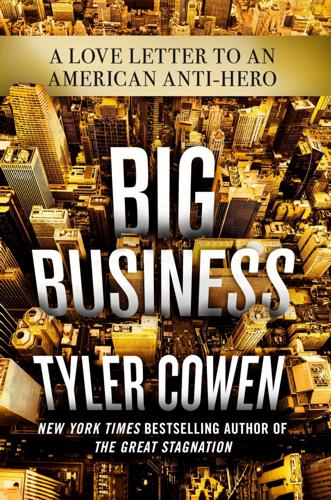
Big Business: A Love Letter to an American Anti-Hero
by
Tyler Cowen
Published 8 Apr 2019
And then there’s the fact that large American companies are much more globalized than ever before, and their supply chains are spread across a larger number of countries. Apple’s iPhone, for instance, relies on components and assembly from the United States, South Korea, Thailand, Malaysia, the Philippines, Taiwan, India, and China. A lot of Apple’s key innovation was not the technology behind the iPhone, much of which already was in place, but rather new ideas about how to build up and maintain such a supply chain. Steve Jobs and Tim Cook had to develop a great deal of knowledge about trade patterns, foreign direct investment, and the global economy more generally. In each of the countries in which it does business, Apple has faced unique institutional and regulatory obstacles.
…
Your real options are to find corners of the internet that will be interested in your ideas, and adjust accordingly. It’s still a far freer intellectual world than what we knew only a short time ago. To consider a third major tech company: Apple too continues to be a major innovator, in spite of its reputation to the contrary. Not only does Apple have three truly major developments under its belt—personal computers, smartphones, and smart tablets—but the company continues to try to drive further advances. The future of the Apple Watch remains uncertain, but at the very least it is a major achievement along the path of developing higher-quality and more practical internet-connected wearables; its millions of users already find it a convenient way to receive messages and track and measure certain aspects of their behavior.
…
For each copy of Microsoft Word that is sold, other copies are pirated or otherwise reproduced in a way that does not result in a traditional fee for sale at the price set by Microsoft. Apple is the company on this list that charges luxury prices, at least for its hardware. But before the iPhone, you couldn’t buy something like that at any price. And within a few years after the debut of the iPhone, there were plenty of cheaper smartphone models on the market, and since that time those models have gained most of the market share. As of this writing, smartphones are becoming cheaper yet, due to imports from China, and the quality of those products is likely to improve rapidly. Apple helped enable these cheaper products, whether it wanted to or not, and all along the company knew it would end up creating competitors.
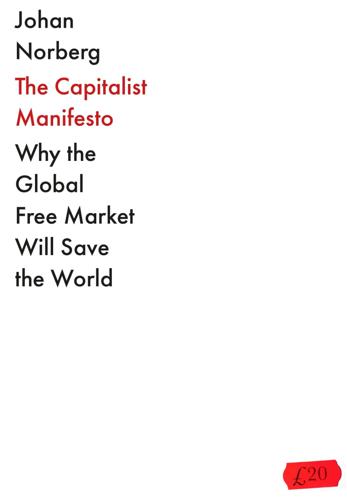
The Capitalist Manifesto
by
Johan Norberg
Published 14 Jun 2023
And the much-hyped Google Glasses are currently in the ‘Where are they now?’ file. Apple was the company that almost perished before Steve Jobs made a comeback, but even under his rule the company made some blunders, for example with the social network Ping, the stereo speaker iPod Hi-Fi, the smart speaker Home Pod and the connection Firewire, which admittedly could do more than USB but cost too much. Most embarrassing was probably the launch of Apple’s map app, which in its first incarnation was so buggy and incomplete that CEO Tim Cook had to apologize and recommend angry users to use its competitors’ products.
…
The average US region increased employment 1.3 per cent more annually than a hypothetical region that had no trade with China. As a result, 75 per cent of American workers got higher real wages.38 But why sacrifice any jobs at all? Just look at an iPhone. Donald Trump could not understand why Apple assembles its mobile phones on the other side of the globe. ‘China is the biggest beneficiary of Apple – not us,’ he complained in January 2019, urging Apple to ‘build their damn computers and things in this country instead of in other countries’. But is China really the biggest winner? Some researchers disassembled an iPhone 7 that sold for $649. They observed that the manufacturing cost of just over $237 (which looks like $237 of Chinese imports in the data tables) mostly consists of components that have previously been imported to China, such as American, Japanese, Korean and Taiwanese microprocessors, memory chips and displays.
…
France has a law against planned obsolescence, and it has mostly shown how difficult it is to document a single case. Yes, it was heard all over the world that Apple was forced to pay a fine after older iPhones started working more slowly following a software update. But what few observed is that Apple was never considered guilty of planned obsolescence, only of not informing users of the change. The background was that many users’ iPhones crashed after an update of the operating system at the end of 2016. The reason was that older batteries could not cope with the power of all new applications when they were not sufficiently charged. To solve that problem, Apple introduced a feature in the next update that prevented phones from crashing when exposed to high workloads, by performing certain tasks over a longer period of time when they reached a peak.

Insane Mode: How Elon Musk's Tesla Sparked an Electric Revolution to End the Age of Oil
by
Hamish McKenzie
Published 30 Sep 2017
And for the first four years that the iPhone was on sale, it wasn’t even compatible with China Mobile, which accounted for 700 million customers. Since then, Apple has fixed those problems, and China is now arguably its most important market, having registered more iPhone sales than in the United States. In October 2015, Apple CEO Tim Cook said China will be “Apple’s top market in the world.” Apple’s commitment to the country shows in its products. In particular, the large-format plus-size iPhones (starting with the iPhone 6 Plus) were perfect for China, where mobile phones serve as showpieces. The flashy Apple Watch is an equally powerful status item. There is little reason to suggest that Tesla can’t capitalize on the same dynamics.
…
Then there’s Apple. “They have hired people we’ve fired,” Musk told the German newspaper Handelsblatt in September 2015. Rumors that Apple was working on an electric car project had emerged that February, when an Apple employee allegedly e-mailed Business Insider to say that the Cupertino company was working on a project that would “give Tesla a run for its money.” Former Tesla people had been joining the company in droves. Musk had his own view of the situation. “We always jokingly call Apple the ‘Tesla Graveyard,’” he said. “If you don’t make it at Tesla, you go work at Apple. I’m not kidding.”
…
In fact, on reflection, it looked like Tesla was following a similar path to the one taken by Apple, which also got off to a rocky start in China. Apple launched the iPhone in China in 2009 but was struck by a series of criticisms early on, not the least of which were about working conditions in the Shenzhen factory where its devices were made. The factory owner, Foxconn, came under fire for several worker suicides. Meanwhile, Apple’s scalper problem was on another level. The scalpers were so bold as to buy iPhones in bulk and sell them right outside Apple stores. Apple was also slow to make the latest iPhones available in the country, with Chinese consumers typically getting them months after they went on sale in the United States.

The Switch: How Solar, Storage and New Tech Means Cheap Power for All
by
Chris Goodall
Published 6 Jul 2016
There is indeed probably an element of window-dressing in the actions of some businesses. They are seeking to appeal to environmentally conscious customers, and possibly investors. But most businesses are driven primarily by a desire to save money and avoid future electricity price rises. Discussing Apple’s investments in renewable energy, CEO Tim Cook said recently that ‘we expect to have very significant savings’. Similarly, Walmart – not usually seen as an environmental do-gooder – stresses the financial benefits of PV as much as its other benefits: ‘Using the power of the sun and installing solar panels lowers our energy costs and is clearly good for the environment, but another benefit is that it keeps prices low for our customers.’
…
Among the most notable solar supporters is Apple, the world’s most valuable company, which has made a promise of carbon neutrality for its operations and manufacturing plants around the world. As well as investing in solar in the US, the business has started to commission PV farms in China. One series of investments in Inner Mongolia will produce 170 megawatts of peak output across three huge farms. To get a sense of the scale of this, a solar portfolio of this size will produce enough electricity to meet about one thousandth of the UK’s total annual power need. But to wipe out its entire carbon impact Apple will need to make investments of about ten times this size.
…
But to wipe out its entire carbon impact Apple will need to make investments of about ten times this size. For a company with $200bn of cash on its balance sheet, this represents little more than small change. Apple is not alone. Google has made renewable investment pledges totalling $2.5 billion in recent years including financing the largest US residential PV installer, SolarCity. Global retailer IKEA has put 700,000 panels on its stores and recently pledged another €100 million to solar as it promised to move to 100 per cent clean energy by 2020. The world’s largest retailer, Walmart, has made similar investment on its own warehouses while in the UK Sainsbury’s has put over 100,000 panels on its roofs.

The Twittering Machine
by
Richard Seymour
Published 20 Aug 2019
For the sake of her own sanity, she delegated the management of her Facebook account to an employee. Many social industry and tech executives resist their own technologies. Mark Zuckerberg’s Facebook account is run by employees. Apple’s Steve Jobs wouldn’t let his children near an iPad, while his replacement, Tim Cook, doesn’t allow his nephew to use social networking sites. Apple’s design strategist Jony Ive warns that ‘constant use’ of tech is overuse.3 As always, tech is adept at producing profitable solutions to the problems it creates. Now smartphone users can trade in their addictive devices for a range of minimalist alternatives, with the limited texting and call-making functionality of a very old mobile phone.
…
Google resorted to internal encryption to evade surveillance when it was revealed that both the NSA and GCHQ had wiretapped the firm’s communications. Apple fought the FBI to a standstill over encryption on its phones. The FBI wanted to force Apple to unlock an iPhone belonging to Rizwan Farook, one of the shooters in the San Bernardino massacre in December 2015. Apple resisted in the courts, and ultimately the FBI backed off when it used third-party software to hack the phone, revealing nothing of pertinence. FBI director James Comey complained that Apple allowed ‘people to hold themselves beyond the law’.29 This was revealing, suggesting that he expected there to be no area of life not potentially scrutable by the law.
…
Increasingly, these abstractions are linked to an emerging web of ubiquitous computing technologies which Greenfield has presciently called ‘everyware’.76 Ostensibly designed to smooth the edges of life, this network connects smartphones, sensors, data collectors, cookies and platforms in a constant flow of information. In so doing, it quietly outsources important decisions. When you ask Alexa or Siri for a nearby restaurant or shoe shop, it will be Apple or Google or Amazon that determines your path of movement through the urban space on the basis of their commercial needs. Naturally, these structures can be used by political authority to promote governing norms, but they can also work as more insidious forms of control. The emerging ideal of the ‘smart city’, where sensors and data collectors determine the allocation of resources and assets, is a case in point.

Capitalism Without Capital: The Rise of the Intangible Economy
by
Jonathan Haskel
and
Stian Westlake
Published 7 Nov 2017
We know that innovation often involves investing in organizational change, such as creating a new business unit to sell a new product line. And it’s also possible to think of examples of companies that have invested to create valuable organizational assets outside their own firms. The remarkable Apple supply chain that Tim Cook was responsible for developing is clearly a long-term source of value for Apple, allowing it to bring products to market extraordinarily quickly. A valuable asset of so-called sharing-economy businesses like Uber or AirBnB is typically their network of committed suppliers—Uber’s drivers or AirBnB’s hosts. This too is an asset of lasting value that both companies have invested heavily to develop (and which they invest to protect, for example, against legal actions requiring them to treat their suppliers as employees).
…
Consider an expert designer at Apple, a company famed for, and to some extent reliant on, its good design. What stops that designer, from an economic point of view, demanding more and more money in return for not leaving for the competition or setting up a new, design-led start-up? One answer to the question is synergies. Apple’s design is especially valuable in the context of a whole set of intangible assets Apple owns: its technologies, its customer service, and the power of its brand and marketing channels. All of these things make an Apple designer more valuable to Apple than to an alternative employer, and they reduce the incentives to leave.
…
Oral Rehydration Therapy is a perfect example. But spillovers don’t just arise from R&D. After Apple released the iPhone, almost all smartphones started looking just like it. Apple’s investments in software, design, and supply chains (for example, creating the software supply chain we call the App Store) were adopted or imitated by its competitors as they sought to create phones like Apple’s. By creating what marketing experts would call the smartphone “category” (or more precisely, growing it significantly), Apple benefited not just themselves but other smartphone manufacturers. The iPhone also provides an example of marketing spillovers.
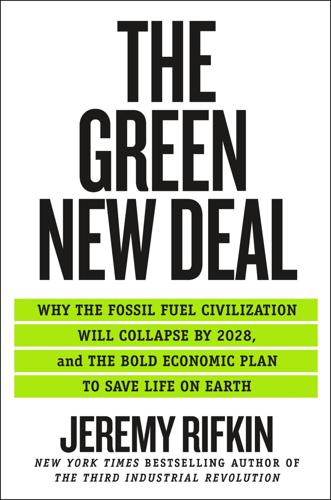
The Green New Deal: Why the Fossil Fuel Civilization Will Collapse by 2028, and the Bold Economic Plan to Save Life on Earth
by
Jeremy Rifkin
Published 9 Sep 2019
The world’s giant internet companies are leading the way in decoupling from fossil fuels and reinvesting in green energy in the ICT sector, with Apple, Google, and Facebook setting the pace. In April 2018, Apple announced that all of its data centers worldwide are now powered by renewable energy. The company also announced that twenty-three of its key manufacturing partners around the world have agreed to power all of Apple’s production with 100 percent green energy. Commenting on this milestone, Apple’s CEO, Tim Cook, said, “We’re going to keep pushing the boundaries of what is possible with the materials in our products, the way we recycle them, our facilities and our work with suppliers to establish new creative and forward-looking sources of renewable energy because we know the future depends on it.”19 Google achieved 100 percent renewable energy usage in its data centers in 2017 and is currently operating twenty renewable energy projects with a total investment of $3.5 billion in renewable energy infrastructure.20 In July 2017, Facebook announced that “all” of its new data centers from here on out will be powered by 100 percent renewable energy.21 The internet behemoths are out front in decoupling from the fossil fuel civilization, but many other leading ICT and telecom companies are running nearly apace.
…
Mario Pickavet et al., “Worldwide Energy Needs for ICT: The Rise of Power-Aware Networking,” paper presented at the 2008 International Conference on Advanced Networks and Telecommunication Systems, 2, doi:10.1109/ants.2008.4937762; Lotfi Belkhir and Ahmed Elmeligi, “Assessing ICT Global Emissions Footprint: Trends to 2040 & Recommendations,” Journal of Cleaner Production 177 (January 2, 2018): 448, doi:10.1016/j.jclepro.2017.12.239. 17. Belkhir and Elmeligi, “Assessing ICT Global Emissions Footprint,” 458. 18. Ibid., 458–59. 19. Apple, “Apple Now Globally Powered by 100 Percent Renewable Energy,” news release, April 9, 2018, https://www.apple.com/newsroom/2018/04/apple-now-globally-powered-by-100-percent-renewable-energy/ (accessed January 15, 2019). 20. Urs Hölzle, “100% Renewable Is Just the Beginning,” Google news release, December 12, 2016, https://sustainability.google/projects/announcement-100 (accessed February 7, 2019). 21.
…
Africa North Africa power grid plans for solar and wind energy in South Africa Age of Progress Age of Resilience aggregate energy efficiency agriculture sector carbon farming digital operations effect of animal rearing on greenhouse gas emissions green electricity cooperatives Internet of Things infrastructure organic farming percentage of crops and land used for animal feed use of public land and vegetarian or vegan diets AIG Alliance of Liberals and Democrats for Europe (ALDE) Allianz Alphabet Inc.. See also Google American Society of Civil Engineers (ASCE) infrastructure report card apartheid divestment movement Apple apprenticeships, green Arias Cañete, Miguel artificial intelligence (AI) Ashton, Kevin AT&T autonomous (self-driving) electric vehicles AXA Balsillie, Jim Bank of America Bank of England Prudential Regulation Authority (PRA) Barber, Randy Barbier, Edward Bernhard, Wolfgang Bernstein Research Big Data Bilicic, George bio-based materials biosphere consciousness Blair, Tony blockchain technology Bloomberg, Michael Bond, Kingsmill Booker, Cory Boston Tea Party Bowser, Muriel Brattle Group Brown, Jerry Buffett, Warren building sector decoupling from fossil fuel industry nodal IoT buildings retrofits Bulc, Violeta Burger King Burns, Larry Burrow, Sharan Buttigieg, Pete Byrd, Harry Caldecott, Ben Canada and liquefied natural gas (LNG) pipeline and natural gas Toronto waterfront smart city project capital market capital pension capital public capital social capital capitalism and near-zero marginal costs and pension capital pension fund divest/invest campaign and Sharing Economy social capitalism and socially responsible investment (SRI) carbon bubble carbon capture and storage and agriculture sector limitations of process of carbon tax Carbon Tracker Initiative Carney, Mark Castro, Julián Cavoukian, Ann Changing Wealth of Nations 2018: Building a Sustainable Future, The (World Bank report) China.
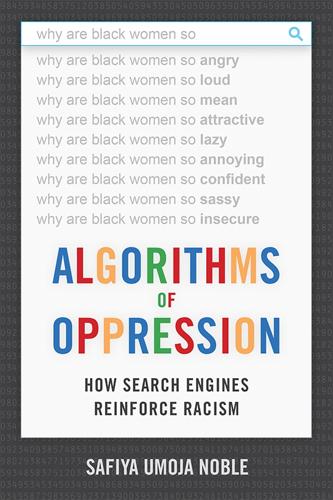
Algorithms of Oppression: How Search Engines Reinforce Racism
by
Safiya Umoja Noble
Published 8 Jan 2018
Dunbar, A. (2006). Introducing Critical Race Theory to Archival Discourse: Getting the Conversation Started. Archival Science, 6, 109–129. Dyer, R. (1997). White. London: Routledge. Eddie, R., and Prigg, M. (2015, November 13). “This Does Not Represent Our Values”: Tim Cook Addresses Racism Claims after Seven Black Students Are Ejected from an Apple Store and Told They “Might Steal Something.” Daily Mail. Retrieved from www.dailymail.co.uk. Eglash, R. (2002). Race, Sex, and Nerds: From Black Geeks to Asian American Hipsters. Social Text, 20(2), 49–64. Eglash, R. (2007). Ethnocomputing with Native American Design.
…
See Hardenaug, 2001; Shah, 2010. 43. While less formal scholarship has been dedicated to this issue, considerable media attention in 2011 and 2012 has been focused on the labor conditions in parts of China where Apple manufactures its products. While some of the details of the journalistic reporting have been prone to factual error in location and dates, there is considerable evidence that labor conditions by Apple’s supplier Foxconn are precarious and rife with human-rights abuses. See Duhigg and Barboza, 2012. 44. See Fields, 2004. 45. Wallace, 1990, 98. 46. See Hobson, 2008. 47. See Harvey, 2005. 48.
…
With all of the aberrations and challenges that tech companies face in charges of data discrimination, the possibility of hiring recent graduates and advanced-degree holders in Black studies, ethnic studies, American Indian studies, gender and women’s studies, and Asian American studies with deep knowledge of history and critical theory could be a massive boon to working through the kinds of complex challenges facing society, if this is indeed the goal of the technocracy. From claims of Twitter’s racist trolling that drives people from its platform34 to charges that Airbnb’s owners openly discriminate against African Americans who rent their homes35 to racial profiling at Apple stores in Australia36 and Snapchat’s racist filters,37 there is no shortage of projects to take on in sophisticated ways by people far more qualified than untrained computer engineers, whom, through no fault of their own, are underexposed to the critical thinking and learning about history and culture afforded by the social sciences and humanities in most colleges of engineering nationwide.
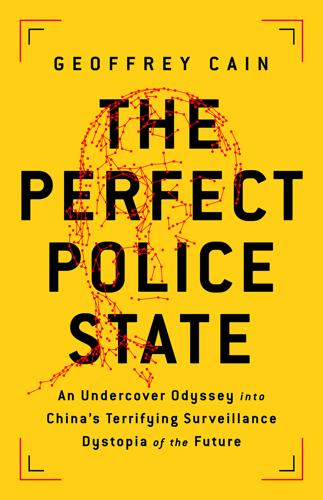
The Perfect Police State: An Undercover Odyssey Into China's Terrifying Surveillance Dystopia of the Future
by
Geoffrey Cain
Published 28 Jun 2021
Gap said it worked with two suppliers who used yarn from mills in Xinjiang and was sorting out and reviewing its relationships there.13 Apple was another American company that benefited. It had connections to at least three factories in its supply chain that employed Uyghur laborers forcibly transferred from the camps. ASPI found that, between April 28 and May 1, 2017, seven hundred Uyghurs were transferred to the city of Nanchang to work at a factory run by O-Film. O-Film made cameras for the iPhone 8 and iPhone X. In December 2017, Apple CEO Tim Cook visited another O-Film factory. According to an Apple press release, Cook praised O-Film for its “humane approach towards employees” during his visit.
…
He also said that workers seemed “able to gain growth at the company, and live happily.” Apple’s manufacturing partners expanded their use of Uyghur labor in September 2019, according to a local government document stating that 560 Uyghur workers had been transferred to the Foxconn factory that made half the world’s iPhones. Foxconn, a major Apple partner, had taken part in the Xinjiang Aid scheme.14 Apple said it launched an investigation into O-Film. “Apple is dedicated to ensuring everyone in our supply chain is treated with dignity and respect,” an Apple spokesman said in a statement. “We have found no evidence of any forced labor on Apple production lines and we plan to continue monitoring.”
…
“We have found no evidence of any forced labor on Apple production lines and we plan to continue monitoring.” In late 2020 or early 2021, Apple reportedly dropped O-Film as a components supplier over accusations of its involvement in forced labor.15 Another company that claimed to make components for an Apple supplier, Highbroad Advanced Material Company, signed an agreement with a local government to employ one thousand Uyghur workers each year for three years.16 Highbroad makes components for flat-panel displays, and counts among its other customers HP, Mercedes-Benz, Dell, LG, and Volkswagen.17 HP didn’t respond to media requests for comment after the report was released.
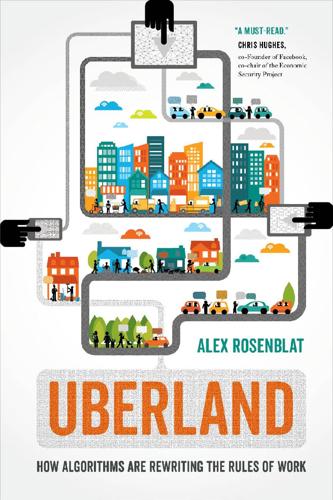
Uberland: How Algorithms Are Rewriting the Rules of Work
by
Alex Rosenblat
Published 22 Oct 2018
Anyone within that geofence (e.g., Apple’s app-review team) would see a different version of Uber’s app. (It’s a bit like if a company were to send a tech reporter a new smartwatch to test and review—under the pretense that it is their normal product—but the device sent to the reporter secretly includes a faster processor not available to everyone else, so that the tech reporter will give it a better grade.) In a meeting that took place years before the event became public knowledge, Apple CEO Tim Cook summoned a nervous Travis Kalanick to his office to discuss Uber’s willful disregard for Apple’s rules. Kalanick agreed to comply properly.
…
But in direct violation of these rules, Uber continued to track iPhone data even after users had deleted the ridehail app from their phones, as Mike Isaac reported for the New York Times.48 Normally, app developers who flout Apple’s app-store guidelines risk being cut from the app store, which in Uber’s case would have resulted in their losing access to millions of Apple customers. Given the stakes, Uber went to elaborate lengths to hide its noncompliance: the ridehail company purposefully set out to evade Apple’s fraud detection protocols by manipulating what Apple’s app-review team would see when approving the Uber app. Under orders from then-CEO Travis Kalanick, Uber’s engineers duped Apple for a time by building a “geofence” around Apple’s corporate headquarters in Cupertino, California.
…
As privacy and legal scholar Woodrow Hartzog observes publicly on Twitter, “By not including a common option like “only while app is in use,” they [Uber] manipulate users into sharing by making privacy costly.”47 (Uber later revised the settings when Apple made it mandatory as a condition of hosting Uber and others in its app store, though Android users were still affected before Uber changed course.) Most consumers, who are generally further removed from Uber drama, accept data practices that are not in their best interests simply because they want a cheap taxi ride and a convenient service. It is clear that consumers can be taken advantage of through data exploits. And it’s not just individual consumers who are vulnerable—large companies can also get duped by sly data practices. Apple’s app store has specific privacy rules that all apps must follow, including the Uber app.
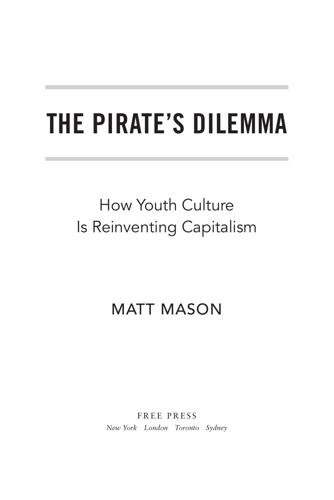
The Pirate's Dilemma: How Youth Culture Is Reinventing Capitalism
by
Matt Mason
David Pinch, Jamie-James Medina, Seth Godin, Tom Curry, Susan Arciero and Milos Bang, Ryan Senser (for his idea of using a Venn diagram to illustrate the Pirate's Dilemma), Sweet Joy Hachuela-Johansson, Corey Tatarczuk, Jacques DeJardin, Phoebe Eng and Zubin Schroff (for letting me hide out at their place in the Hamptons and get some serious writing done), my uncle Stephen Boyd, my uncle Graham Brown, Esther Gold, Chris Campion, Alex Donne Johnson, Fabio Scianna, Alicia Hansen, Mr. Richard Antwi, Kirk Vallis, Anthony Mouskoundi, Tim Cooke, Graeme Pretty, Jit Shergill, Dave McConachie, Rob Moore, Spencer Giles, Rob Marciano, Jon Allen, Gaby Marciano, Laura Sunley, Laurie Basannavar, Jeff Chang, Harold Anthony at jumpoff.tv, James Barrett, Dilia Baille, Shane Tomlinson, Marvin Lutrell, everyone at dissensus.com, all the staff at the Brooklyn Public Library, and Lynne D.
…
In May 2006 he financed a lawsuit that overturned New York legislation that banned anyone age eighteen to twenty from buy- ing or carrying spray paint or broad-tipped marker pens, which effectively prohibited many art students from buying supplies for school, or even carrying them to class. Judge George B. Daniels granted a temporary injunction against the law, arguing, “That's like telling me I can eat an apple, but I can't buy an apple, no one can sell me an apple and I can't bring it to work for lunch.”] and yet the tag became a billion-dollar brand. Ecko's hoax was spectacular [FN: *Ecko wasn't the first person to think of this. Back in the 1960s one of the earliest writ- ers, CORNBREAD, tagged the Jackson 5's 747 when the pop group made a stop in Philadelphia.] and his ongoing defense of street art and free speech is admirable, but some critics see nothing more than thinly veiled PR stunts for his multinational corporation.
…
If we also consider that over 800 million mobile phones are sold every year, which will all be able to receive music, and study the growth of new technologies and their application in the last century, the industry should be confident.” The jury is still out on Jenner's solution, but EMI and Universal became the first major labels to begin selling MP3s without DRM encryption in 2007. That February, Apple's Steve Jobs made a plea to all the record companies to abolish DRM completely, saying it was “clearly the best alternative for consumers, and Apple would embrace it in a heartbeat.” John Kennedy, the CEO of the IFPI (the International Federation of Phonograph Industries), summed up the music industry's new position on the Pirate's Dilemma it faced: “At long last the threat has become the opportunity.”
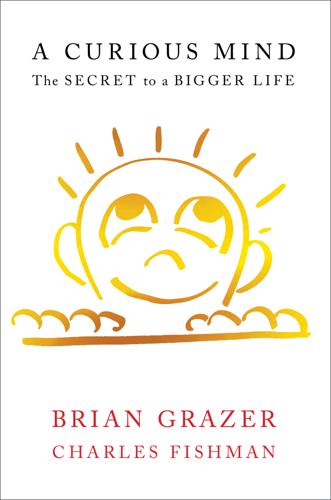
A Curious Mind: The Secret to a Bigger Life
by
Brian Grazer
and
Charles Fishman
Published 6 Apr 2014
Simpson Jared Cohen: director of Google Ideas Joel Cohen: population specialist, mathematical biologist Kat Cohen: university admissions counselor, author of The Truth About Getting In William Colby: CIA director, 1973–1976 Elizabeth Baron Cole: nutritionist Jim Collins: management consultant, expert on business and management, author of Good to Great Robert Collins: neurologist, former chairman of neurology at UCLA School of Medicine Sean Combs: musician, music producer, fashion designer, entrepreneur Richard Conniff: author who specializes in human and animal behavior Tim Cook: CEO of Apple, Inc. Tatiana Cooley-Marquardt: repeat winner of USA Memory Championship Anderson Cooper: journalist, author, TV personality, anchor of CNN’s Anderson Cooper 360 Norman Cousins: medical guru, author of Anatomy of an Illness: As Perceived by the Patient Jacques Cousteau: oceanographer, pioneered marine conservation Chris W.
…
Wilson: biologist, author, professor emeritus at Harvard University, two-time winner of the Pulitzer Prize Oprah Winfrey: founder and chairwoman of the Oprah Winfrey Network, actress, author George C. Wolfe: playwright, theater director, two-time winner of the Tony Award Steve Wozniak: cofounder of Apple Inc., designer of Apple I and Apple II computers, inventor John D. Wren: president and CEO of marketing and communications company Omnicom Will Wright: game designer, creator of Sim City and The Sims Steve Wynn: businessman, Las Vegas casino magnate Gideon Yago: writer, former correspondent for MTV News Eitan Yardeni: teacher and spiritual counselor at the Kabbalah Centre Daniel Yergin: economist, author of The Prize: The Epic Quest for Oil, Money and Power, winner of the Pulitzer Prize Dan York: chief content officer at DirecTV, former president of content and advertising sales, AT&T Michael W.
…
News & World Report, winner of the Pulitzer Prize for investigative reporting Jack Healey: human rights activist, former executive director of Amnesty International USA Thomas Heaton: seismologist, professor at California Institute of Technology, contributed to the development of earthquake early warning systems Peter Herbst: journalist, former editor of Premiere and New York magazines Danette Herman: talent executive for Academy Awards Seymour Hersh: investigative reporter, author, winner of the Pulitzer Prize for uncovering the My Lai massacre and its cover-up during the Vietnam War Dave Hickey: art and cultural critic who has written for Harper’s, Rolling Stone, and Vanity Fair Jim Hightower: progressive political activist, radio talk-show host Tommy Hilfiger: fashion designer, founder of lifestyle brand Christopher Hitchens: journalist and author who was a critic of politics and religion David Hockney: artist and major contributor to the Pop art movement in the 1960s Nancy Irwin: hypnotherapist Chris Isaak: musician, actor Michael Jackson: singer, songwriter, his 1982 album Thriller is the bestselling album of all time LeBron James: NBA basketball player Mort Janklow: literary agent, founder and chairman of the literary agency Janklow & Nesbit Associates Jay Z: musician, music producer, fashion designer, entrepreneur Wyclef Jean: musician, actor James Jebbia: CEO of the Supreme clothing brand Harry J. Jerison: paleoneurologist, professor emeritus at UCLA Steve Jobs: cofounder and former CEO of Apple Inc., cofounder and former CEO of Pixar Betsey Johnson: fashion designer Jamie Johnson: documentary filmmaker who directed Born Rich, heir to Johnson & Johnson fortune Larry C. Johnson: former analyst for the CIA, security and terrorism consultant Robert L. Johnson: businessman, media magnate, cofounder and former chairman of BET Sheila Johnson: cofounder of BET, first African American woman to be an owner/partner in three professional sports teams Steve Johnson: media theorist, popular science author, cocreated online magazine FEED Jackie Joyner-Kersee: Olympic gold medalist, track star Paul Kagame: president of Rwanda Michiko Kakutani: book critic for the New York Times, winner of the Pulitzer Prize for criticism Sam Hall Kaplan: former architecture critic for the Los Angeles Times Masoud Karkehabadi: wunderkind who graduated from college at age thirteen Patrick Keefe: author, staff writer for the New Yorker Gershon Kekst: founder of the corporate communications company Kekst and Co.
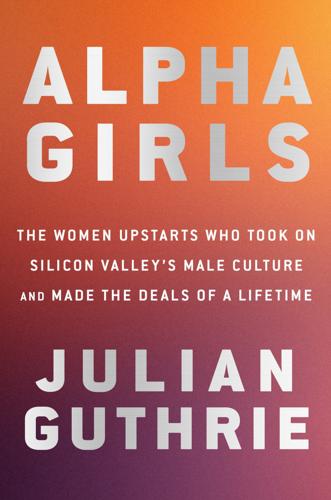
Alpha Girls: The Women Upstarts Who Took on Silicon Valley's Male Culture and Made the Deals of a Lifetime
by
Julian Guthrie
Published 15 Nov 2019
Things were not that different in the more recent gold rush. The Valley was always a region dominated by men, from William Hewlett, Dave Packard, Bob Noyce, Gordon Moore, Andy Grove, Larry Ellison, Steve Jobs, and Steve Wozniak to, decades later, in the twenty-first century, Larry Page, Sergey Brin, Mark Zuckerberg, Elon Musk, Tim Cook, Travis Kalanick, and Marc Benioff. Mary Jane, fueled by peanut butter sandwiches packed in wax paper for the two-day journey, was under no illusion that it would be easy to navigate the old boys’ club of Sand Hill Road and Silicon Valley. Even today, decades after Mary Jane first arrived, 94 percent of investing partners at venture capital firms—the financial decision makers shaping the future—are men, and more than 80 percent of venture firms have never had a woman investing partner.
…
Her first interview had been with Steve Jobs and Steve Wozniak of Apple. The founders invited double-e students to the LOTS computer center to hear a pitch about their three-year-old company. If the students liked what they heard, they could stay and be interviewed. Jobs, wearing wire-rimmed glasses and jeans, told Magdalena and the other double-e students that working for Apple would be like “an extension of college.” Magdalena was one of sixteen students who showed up for the interview. She loved the idea of working for Apple. Jobs had dropped out of college and spent time studying Hinduism and Buddhism in India.
…
When he was a teenager, he and a few friends started a company called Liberty Software to make adventure games for the Atari 800. He earned extra money going to people’s homes to repair antennas and CB radios, and he worked for Apple Computer the summer before his junior year at the University of Southern California. Largely unsupervised, Marc started writing software for a game about raiding IBM’s headquarters. His manager at Apple said the game wasn’t appropriate and later suggested Marc consider a job at Oracle. They had the best salespeople in the world, he was told. In his first year at Oracle, Benioff was named rookie of the year.
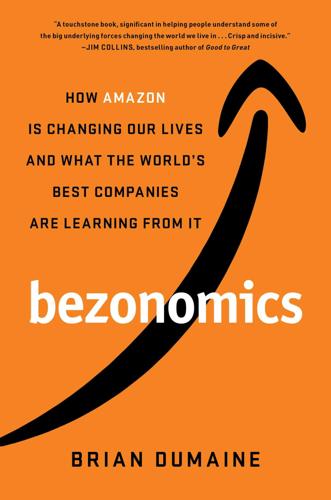
Bezonomics: How Amazon Is Changing Our Lives and What the World's Best Companies Are Learning From It
by
Brian Dumaine
Published 11 May 2020
Stitch Fix built its online women’s clothing business around a smart algorithm that identifies which fashions its customers prefer. The impact that Bezonomics is having on society is just as profound. Some of the big tech companies are sowing discord with fake news, interfering with elections, and violating personal privacy. As Apple CEO Tim Cook put it: “If you’ve built a chaos factory, you can’t dodge responsibility for the chaos.” The global wealth gap has become so out of kilter that politicians in America and Europe have singled out Amazon and other big tech companies for blame. These wealth-creation machines have become so efficient at creating riches for their top employees and shareholders that they’re likely to engender more public outrage and become easy targets for regulators—perhaps in some cases even be broken up.
…
See also Alexa Bezos and development of, 49, 111 goal of becoming part of people’s lives with, 14–15 Internet of Things and, 123–24 introduction of, 26 Prime Video use with, 26 shopping assistance with, 115–16 Amazon Flex, 23, 172–73 Amazon 4-star stores, 24, 167 AmazonFresh, 170–71, 189 Amazon Go stores, 13, 24, 111, 139–41, 143, 167 Amazonia (Marcus), 41 Amazon Lending, 13, 233–34 Amazon Music, 10, 26, 80, 97, 98, 100, 220, 260 Amazon Pay, 234 Amazon Prime, 93–105, 109 addictive nature of, 98–99 AI flywheel and, 94, 99, 102, 115 Alexa and, 115 all-you-can-eat aspect of shipping and services with, 99 Amazon ecosystem around, 94 Amazon’s income from, 154 Amazon’s sale of its own products and, 153 annual fee for, 14 Bezos’s focus on shortening delivery time by, 22 corporate synergy with other Amazon services, 98 cross-category spending in, 100 customer data from, 101 customer service and selection in, 104–5 decision to launch, 95–96 free delivery options from, 4, 10, 14, 22, 80, 98, 101, 154, 171, 186 free services with, 97, 101–2 free shipping debate over, 96–97 growth in number of members of, 94 health-care purchases and, 226 household percentage having, 15 merchant’s expenses for, 146 naming of, 96 number of shoppers in, 14 1-Click design and, 18, 98, 232–33 Prime Video and new members in, 102–3 shopping behavior change with, 98 spending by members of, 95, 100 as stand-alone business within Amazon, 97–98 streaming music service with, 26 streaming video service with, 25 Whole Foods discount with, 97, 101, 168, 260 Amazon Prime Air, 179 Amazon Prime Now, 22, 171 Amazon Restaurants food delivery business, 64 Amazon Robotics Challenge, 138 Amazon Studios, 101–2 Amazon Visa card, 234 Amazon Web Services (AWS), 51–52 Bezos’s creation of, 7, 218 Bezos’s long-term vision for, 63–64 medical records using, 225 Prime with free storage space on, 97 profitability of, 25, 64, 65 small business use of, 10–11 ambient computing, 111 American Civil Liberties Union (ACLU), 36 American Culture and Faith Institute, 240 Anderson, Chris, 18 Anderson, Joel, 186 Anderson, Sterling, 175 Andreessen, Marc, 248 Android operating system, 14, 64, 225 Android TV, 237 Ant Financial, 198, 234–35 antitrust law, 257–68, 271 academic arguments for breakup under, 258–59 Amazon lobbyists on, 247 congressional testimony on, 258 critics and proposed breakup of Amazon under, 255, 257–58, 261, 263–64, 266–67 Department of Justice review in, 257, 267 European investigations under, 259 evidence showing lack of violation of, 259–60 historical background to, 264–66 Apollo software platform, 176 Apple AI skills and customer knowledge of, 8, 114 brand value of, 16 corporate campus of, 75 economic power of, 265–66 global wealth gap and, 271 health-care innovation and, 90, 222, 225 identification with founder, 53 iOS operating system of, 225 iWatch from, 222 Jobs’s working culture at, 55 Siri voice assistant app from, 108 Apple Music, 26, 98 Apple Pay, 234, 235 Apple TV, 237 Arcadia Group, 223 Aronowitz, Nona Willis, 16–17 artificial intelligence (AI) Alexa and voice recognition and, 108–9, 111, 112–13 Amazon’s application of, 270 Amazon smart speakers and, 109–10 Bezonomics and companies’ adaptation to, 125 black box and, 91, 147 business plans driven by, 4, 6, 86, 125, 269–70 buying model and, 85–87 coining of term, 107 connected devices and, 124 disruptive nature of, 125 doctors’ diagnosis using, 27 early voice recognition and, 108 Echo’s use of, 26 expectations for future of, 112–13 flywheel model and, 5, 88.
…
Perhaps the company’s most public failure was the Amazon Fire Phone. Apple’s iPhone, launched in 2007, had become a huge success, and Google had its fast-growing Android operating system. Why not, thought Bezos, develop a phone that would appeal to Amazon’s Prime members? In 2014, Amazon launched the Fire Phone, a smart device that sold for $650, making it competitive with the iPhone and Samsung’s Android phones. The phone, however, didn’t support many popular apps, including Google Maps and Starbucks, and some users complained how awkward it was to import programs such as the Apple iTunes library. The phone never caught the public’s imagination, and soon after the product’s launch Amazon took a massive write-down on its unsold inventory.
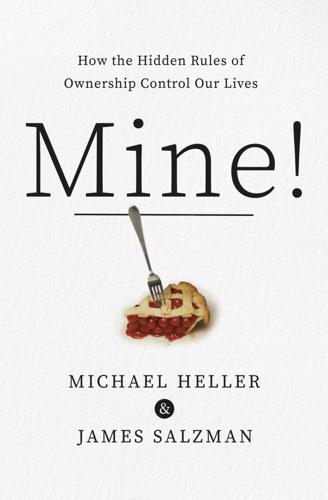
Mine!: How the Hidden Rules of Ownership Control Our Lives
by
Michael A. Heller
and
James Salzman
Published 2 Mar 2021
Like millions of consumers, da Silva buys movies through his Apple iTunes account. To his surprise one day, he found that three movies he’d bought had disappeared from his account. He contacted Apple, looking for an explanation. He didn’t like the customer service agent’s answer, so he tweeted a dramatized version of his unsatisfying exchange—which promptly went viral. As he wrote: Me: Hey Apple, three movies I bought disappeared from my iTunes library. Apple: Oh yes, those are not available anymore. Thank you for buying them. Here are two movie rentals on us! Me: Wait…WHAT?? @tim_cook when did this become acceptable?
…
Ownership rewards two types of labor: physical and intellectual. Tending an apple orchard is physical; creating an apple pie recipe is intellectual. Granting ownership for physical labor is time-tested—that’s the origin of the intuition behind You reap what you sow. For producers, ownership motivates them to grow more apples because they can charge for what they grow. Consumers benefit, too. Ownership provides a quick and easy way to decide who gets the apples: whoever pays the market price gets a bite. If one person eats an apple, another can’t. But this trade-off does not hold for consumers of intellectual labor.
…
@tim_cook when did this become acceptable?… Apple: You see, we are just a store front. Me: Store front? Apple: Yeah, we take your money, but we are not responsible for what is sold. And, we certainly do NOT guarantee you get to keep anything you buy in our store front. We only guarantee that we get to keep your money. Me: I see….So that “Buy” button is meaningless? It should maybe be called: “Feelin Lucky”? Apple: I see you are unhappy. Have two more rentals on us. Linn Nygaard felt the same frustration, but with Amazon instead of Apple. An information technology consultant based in Oslo, Nygaard is often on the road.

Everything's Trash, but It's Okay
by
Phoebe Robinson
Published 15 Oct 2018
Kennedy’s “Ask not what your country can do for you, ask what you can do for your country,” Michelle Obama’s “When they go low, we go high,” and the classic Ying Yang Twins rap lyric “Ay, bitch! Wait till you see my dick.” . . . Y’all, this is like when Apple hints there’s going to be a big announcement regarding the iPhone, so we all tune in to Tim Cook’s live stream of the product launch, and he’s just like, “The phone is slightly bigger,” and we’re all like, “Dat could’ve been a Post-it note message next to an empty bag of Chex Mix.” Ying Yang, your dicks are like practically all of the dicks that have ever been seen, so calm down.
…
For every one of these glaringly outrageous situations, there are thousands where going for the complaint case is just ignorant. Take, for example, that 2013 viral video of a lady going off on a Los Angeles Apple store employee because she thought she could roll in there sans an appointment and get replacement parts. Raise of hands if you’ve ever gone into an Apple store that wasn’t insanely crowded. For real, every time I go to Apple’s Genius Bar, I just see a line of Old Roses from Titanic who were formerly young hipsters, talking about how “it’s been eighty-four years” since they first walked into Apple, seeking help for their technology woes. Of course, waiting for something to be fixed when you weren’t planning on waiting can be annoying; however, losing your mind over something that insignificant is abuse of the complaint attaché case.
…
Then there was the De-Peening of 2017 aka very powerful men such as award-winning actor Kevin Spacey, legendary journalist Charlie Rose, comedian/auteur Louis C.K. watching their lives and careers implode following the uncovering of their sometimes decades-long sexual-deviant behavior, which ranged from harassment to sexual assault. And let’s not forget the murder of Harambe, the gorilla, at the Cincinnati Zoo; Apple removing the headphone jack from their iPhones because this company is hell-bent on being the Nurse Ratched of our time; or the first black bachelorette, Rachel Lindsay, incorrectly choosing Bryan over Peter, thus denying the world some cocoa, gap-teefed babies. Oh! And remember a few years ago when a dude in the US legit had Ebola and went bowling and ate chicken wings with friends instead of quarantining himself because #WhiteNonsense?
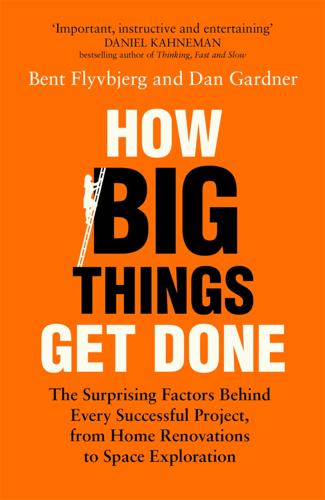
How Big Things Get Done: The Surprising Factors Behind Every Successful Project, From Home Renovations to Space Exploration
by
Bent Flyvbjerg
and
Dan Gardner
Published 16 Feb 2023
“Jobs’ idea was to repeat those pods over and over: pod for office work, pod for teamwork, pod for socializing, like a piano roll playing a Philip Glass composition.”17 That extended to how the building was put together. “We viewed the construction process as a manufacturing project and wanted to do as much outside of here as possible,” Apple’s CEO Tim Cook told Wired magazine. “Then you begin to put together Legos.” The difference between cheap-and-ugly modular and these projects is imagination and technology. To fully unlock modularity’s potential, to see how astonishingly versatile it can be, we need to “think different,” as the old Apple slogan put it. PLAYING WITH LEGO What is our basic building block, the thing we will repeatedly make, becoming smarter and better each time we do so?
…
Even Steve Jobs committed this error after insisting on the opposite: that projects have to start with the customer experience and work backwards to the technology. The most notorious example was Apple’s Power Mac G4 Cube computer. Released in 2000, the G4 was a translucent cube that even today looks gorgeously futuristic. It had no power switch. You just waved your hand, and it turned on. So cool. So Steve Jobs. And that was the problem. The G4 had not been designed by looking at who Apple’s customers were and what would serve them best. Its combination of cost, capabilities, and aesthetics was molded by Steve Jobs’s passions, and impressive as the machine was, it was an awkward fit for customers. The G4 flopped, and Apple scrapped it a year later at great cost.10 But “work backwards” also fails when planners aren’t compelled to nail down what’s in that final flowchart box on the right and forced to think from right to left.
…
Author interview with Mike Green, June 5, 2020. 16. Dan Avery, “Warren Buffett to Offer a Fresh Approach on Modular Construction,” Architectural Digest, May 20, 2021; author interviews with Danny Forster, January 4 and 27, 2021. 17. Steven Levy, “One More Thing: Inside Apple’s Insanely Great (or Just Insane) New Mothership,” Wired, May 16, 2017, https://www.wired.com/2017/05/apple-park-new-silicon-valley-campus/. 18. Leif Lia et al., “The Current Status of Hydropower Development and Dam Construction in Norway,” Hydropower & Dams 22, no. 3 (2015); “Country Profile Norway,” International Hydropower Association, https://www.hydropower.org/country-profiles/norway. 19.
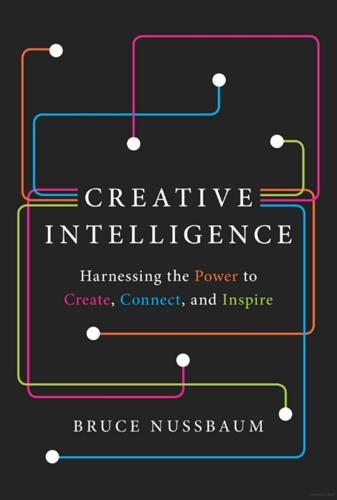
Creative Intelligence: Harnessing the Power to Create, Connect, and Inspire
by
Bruce Nussbaum
Published 5 Mar 2013
We have recently seen a spate of what seemed to be innovative companies fail in maintaining that aura in their products, and there is no guarantee that Apple will succeed despite Jobs’s assurances that his successor, Tim Cook, understands the need to have goals that transcend simply making a profit. Certainly Apple’s aura has been compromised because of labor conditions at Foxconn, the Chinese manufacturer of iPads and iPhones, as well as the less than perfect launch of Apple Maps. The power of aura cannot be underestimated. I remember seeing a Ferrari designed by Italian firm Pininfarina at a conference in the mid-nineties that mesmerized me.
…
But the technology of our time—their improved features and lowered costs, their ability to make us all creators and not just passive users—can, in fact, connect people in ways that the films or photographs of seven decades ago could not. As with many of the Creative Intelligence competencies, the road leads back to Apple. Consumers call Apple products “cool” and “easy to use,” and more sophisticated business analysts applaud Apple’s “ecosystem” of integrated software and hardware. But none of those qualities alone explains why we feel the way we do about Apple products; it’s impossible to discuss Apple products without mentioning how they feel in the hand, look to the eye, and connect to our deep emotions. The story of how Apple began creating beautiful, easy-to-use products should be required reading for anyone interested in creating something that’s not just useful but meaningful.
…
Browning, Steven Russolillo, and Jessica E. Vascellaro, “Apple Now Biggest-Ever U.S. Company,” Wall Street Journal, August 20, 2012, accessed October 22, 2012, http://online.wsj.com/article/ SB10000872396390443855804577601773524745182.html; “Apple Becomes the Most Valuable Company Ever,” CBS Money Watch, August 20, 2012, accessed October 22, 2012, http://www.cbsnews.com/8301-505123_ 162-57496461/apple-becomes-most-valuable-company-ever/. In inflation-adjusted dollars, Microsoft was valued at about $850 billion in 1999, higher than Apple in August 2012. Many Wall Street analysts are predicting that Apple’s stock would rise to $800 and perhaps even $1,000 over the next year or two, which would give it a market capitalization higher than Microsoft even when inflation is taken into account. 263 There are clear lessons: Japan’s great moment of innovation in the 1970s and 80s came from a small group of post–World War II entrepreneurs, such as Sony’s Akita Morita, who were not connected with the country’s giant zaibatsus, or conglomerates.
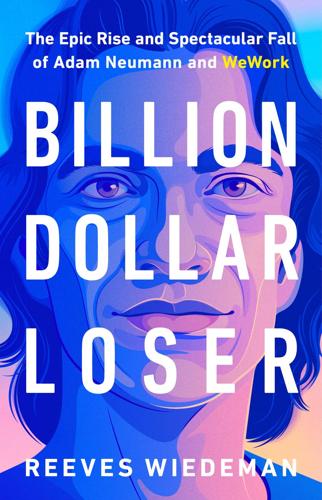
Billion Dollar Loser: The Epic Rise and Spectacular Fall of Adam Neumann and WeWork
by
Reeves Wiedeman
Published 19 Oct 2020
No one had raised private capital in the 2010s as successfully as Neumann, and he became less concerned about the specifics of what WeWork could offer potential partners and more focused on pushing his fellow CEOs to commit to investing in his IPO. Even a token commitment from Salesforce or Apple would go a long way toward building support for the story Adam was telling to investors. In the spring, Adam secured a meeting with Tim Cook, Apple’s CEO. Neumann and Gross worked with Adrian Perica, Apple’s vice president of corporate development, and Luca Maestri, Apple’s CFO, to develop a pitch to Cook on a collaboration that could lead Apple—which was already invested in WeWork through the Vision Fund—to invest in WeWork’s IPO. When he visited Cupertino, Adam wore a T-shirt under a blazer and brought his dad.
…
Jen Berrent, the company’s lawyer, got frustrated when one new tech hire came in with a spreadsheet laying out various kinds of equity payment schemes. “You have to trust us,” Berrent said. To build out the tech team, Adam poached Shiva Rajaraman, an engineer who had bounced among jobs at YouTube, Spotify, and Apple; Adam told Rajaraman he should leave Apple because what WeWork was building would be “bigger than the iPhone.” WeWork’s tech team had grown from half a dozen people in 2013 to more than two hundred, but the first task facing Rajaraman remained fixing Space Station and Space Man. The insistence that WeWork build and maintain its systems in-house rather than outsourcing to an established software provider had lingering consequences.
…
America was preparing to reelect a former community organizer as president. Occupy Wall Street took over a park in lower Manhattan, and a sense persisted that the old world order no longer served humanity’s needs. WeWork was premised on the idea that even the most iconoclastic entrepreneurs couldn’t build a business without help. With Jobs having left Apple to deal with pancreatic cancer, Adam seemed eager to position his company as a rising star of the new economy and himself as a candidate for America’s next entrepreneur in chief. “The next decade is the ‘We’ decade,” he told the Daily News. “If you look closely, we’re already in a revolution.” Many of WeWork’s first employees were bewildered by Adam’s bombast.
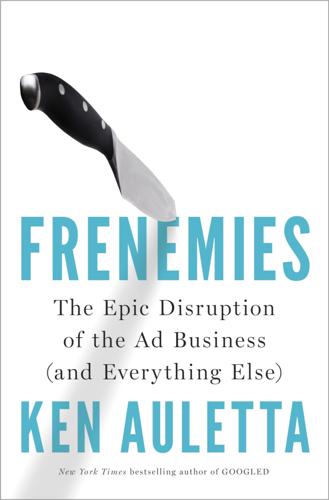
Frenemies: The Epic Disruption of the Ad Business
by
Ken Auletta
Published 4 Jun 2018
—David Ogilvy If Jon Mandel’s March 2015 speech to the ANA sparked a client revolt that year, by 2016 signs were growing of a wider and more ominous revolt, a revolt by consumers against all advertising, as mobile technology brought ads more intimately and insistently into people’s lives but at the same time gave them new tools to block them. The marketing community gulped when Apple, which three decades before had famously aired a TV ad that declared a rebellion against the ruling IBM computer Goliath, now seemed to want to smash most advertising. Tim Cook, the CEO of Apple, stood on a San Francisco stage late that summer and announced that Apple would offer a new operating system for iPhones and iPads that would contain apps empowering users to block ads. Apple, which received less than one percent of its revenues from advertising, was helping consumers seal their devices from ads.
…
The user experience must be paramount, Apple proclaimed. No, no, proclaimed Web sites, media companies, marketers, and ad-reliant companies like Facebook and Google: our ability to inform users and subsidize content is crippled by ad blockers. Those dependent on advertising accused Apple and ad blockers of murder. Apple and ad blocker advocates accused advertisers of committing suicide with mindless and intrusive ads. What neither Apple nor Google said publicly was that Apple’s maneuver was part of a raging war between Apple and Google for smartphone supremacy. Apple made its money selling hardware and software; Google made its money selling ads.
…
And their abundant data allows a peek into private lives, employing this information as a marketing tool. Apple raised its voice against Facebook and Google. With little reliance on advertising, in September 2017 Apple wielded privacy as a weapon against its digital competitors. For its upgraded Safari browser, Apple said it would limit how advertisers and websites could use cookies to track and target users. Apple was, once again, portraying itself as a company on the side of consumers and their privacy. Arrayed against Apple were the trade groups of the entire advertising universe—the Interactive Advertising Bureau, the ANA, and the 4A’s. In an open letter, they accused Apple of “sabotage,” insisting that the blocking of cookies could murder the advertising business.
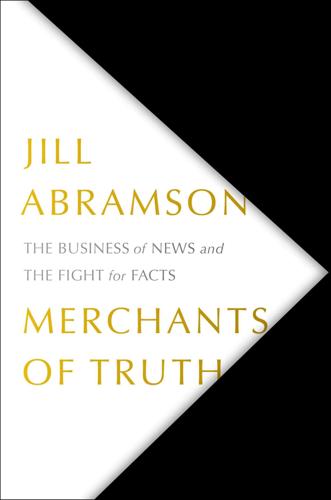
Merchants of Truth: The Business of News and the Fight for Facts
by
Jill Abramson
Published 5 Feb 2019
I scrambled to find the appropriate editors to work on these projects in teams often co-led with the business side. I invited Thompson to accompany me on a trip to Silicon Valley. I had been invited to give a speech at San Francisco’s Commonwealth Club, to be the guest at one of Sheryl Sandberg’s monthly gatherings in her home for the most influential women in tech, and for lunch with Apple CEO Tim Cook, with whom I was trying to create better communication after he took umbrage over the Times’s series on his company. We chatted amiably through the three-day trip. He told me several times that he was developing a plan to restructure the leadership of the Times. I feared this didn’t bode well for the independence of the newsroom.
…
Two days after the election, Bezos tried to bury the hatchet, tweeting, “Congratulations to @realDonaldTrump. I for one give him my most open mind and wish him great success in his service to the country.” Trump ended up inviting Bezos to attend a tech summit at the White House in June 2017 to discuss ways to modernize the government’s technology. Along with Apple’s Tim Cook and Microsoft’s CEO Satya Nadella, Bezos was a member of Trump’s American Technology Council, sitting with an impassive look on his face just a seat away from the president. But the detente did not last long. Less than a week later, the President tweeted, “The #AmazonWashingtonPost, sometimes referred to as the guardian of Amazon not paying internet taxes (which they should) is FAKE NEWS!”
…
Within 24 hours: Sarah Phillips, “A Brief History of Facebook,” Guardian, July 25, 2007, https://www.theguardian.com/technology/2007/jul/25/media.newmedia. “You had the underpinnings: Chris Cox, interviewed by Martin Nisenholtz, Digital Riptide, April 1, 2013, https://www.digitalriptide.org/person/chris-cox/. “iPhone is a revolutionary: “Apple Reinvents the Phone with iPhone,” Apple, Inc. (press release), January 9, 2007, https://www.apple.com/newsroom/2007/01/09Apple-Reinvents-the-Phone-with-iPhone/. The release date was set: “Where Would Jesus Queue?,” The Economist, July 5, 2007, https://www.economist.com/business/2007/07/05/where-would-jesus-queue. With seed funding: Tanner Greenring, Scott Lamb, Jack Shepherd, Matt Stopera, and Peggy Wang, interviewed by Jill Abramson and John Stillman, New York, June 26, 2015.

The Age of Stagnation: Why Perpetual Growth Is Unattainable and the Global Economy Is in Peril
by
Satyajit Das
Published 9 Feb 2016
Between 1979 and 2005, around 70 percent of increases in income accrued to the top 0.1 percent of workers. In the 1950s, the average US chief executive officer was paid around twenty times the typical employee. Currently, the pay ratio of a CEO to an average employee is in excess of 200 times. In 2011, Apple CEO Tim Cook was paid US$378 million in salary, stock, and other benefits, over 6,000 times the earnings of an average Apple employee. At Walmart, the CEO earned 900 times the earnings of a typical worker. Deregulation, incentive-based remuneration, the use of equity options, managers’ bargaining powers, and their ability to convince remuneration committees of a shortage of talent all boosted compensation packages.
…
Ironically, China's new socialism did not unite the workers of the world, but divided them, triggering “the profoundest global reshuffle of people's economic positions since the Industrial Revolution.”4 Automation increased both corporate profits and income inequality. Apple's ubiquitous i-gadgets consist of components made in multiple countries and assembled in China, with the supply chain being managed in the US by Apple, which earns around 30–50 percent of the final price. The process favors skilled labor, reducing the share of revenue accruing to low-skilled workers. Similar complex and fragmented production processes apply to the products that constitute around 85 percent of global GDP.
…
By 2014, total cash balances worldwide were as much as US$7 trillion, roughly double the level of ten years earlier. American corporations held over US$1.7 trillion in cash. The five largest hoarders alone held around half a billion dollars in cash. Technology firms held around US$690 billion in cash, roughly double the levels of five years ago. Apple alone held over US$170 billion. Over 60 percent of this cash was held abroad. Interestingly, the large cash balances coexisted with elevated overall corporate debt levels. Many corporations borrowed at home to fund their spending, taking advantage of low interest rates and avoiding paying taxes on repatriated overseas profits.

Augmented: Life in the Smart Lane
by
Brett King
Published 5 May 2016
That summer, Google made an eight-pound prototype of a computer meant to be worn on the face. To Ive, then unaware of Google’s plans, “the obvious and right place” for such a thing was the wrist. When he later saw Google Glass, Ive said, it was evident to him that the face “was the wrong place.” [Tim Cook, Apple’s C.E.O.] said, “We always thought that glasses were not a smart move, from a point of view that people would not really want to wear them. They were intrusive, instead of pushing technology to the background, as we’ve always believed.” Ian Parker on Jonathan Ive’s thinking about wearable notification devices20 As context becomes critical to better engagement, functionality is already shifting away from apps.
…
Contrary to popular belief, IBM wasn’t the first company to create a personal computer (PC). In the early 1970s, Steve Jobs and Steve Wozniak had been busy working on their own version of the personal computer. The result—the first Apple computer (retrospectively known as the Apple I)—actually preceded the IBM model6 by almost five years, and used a very different engineering approach. However, it wasn’t until Apple launched the Apple II that personal computing really became a “thing”. Figure 3.2: An original Apple I computer designed by Jobs and Wozniak and released in 19767 (Credit: Bonhams New York) Around the same time as Jobs and Wozniak’s development of the earliest form of PC, there was also a rapid downsizing of computers in the workplace.
…
Let’s dive deeper into this concept of adding years to our lives and life to our years, and building our brains while we are at it, before looking at how to activate the protection against linear decay, and upgrading ourselves. Figure 5.5: Apple’s HealthKit measures 67 different categories. (Credit: Apple) QS products started off as separate products and, by 2013, had reached over US$200 million a year in sales, primarily for devices that counted steps and calculated calories based on height, age and weight input by the user. Several apps have duplicated or emulated this functionality in iOS and Androids. Such an app functionality became part of the Apple iOS in 2015, in large part to increase the functionality and usefulness of the Apple Watch. Apple calls this particular app HealthKit. As you can see from the screen shot of Apple’s HealthKit app in figure 5.5, there are seven major categories (body measurements, fitness, me, nutrition, results, sleep and vitals) and 67 separate categories under All, ranging from active calories through to zinc levels.

Brotopia: Breaking Up the Boys' Club of Silicon Valley
by
Emily Chang
Published 6 Feb 2018
Seeing a more inclusive workforce in Silicon Valley will encourage more girls and women studying computer science now. “People that just merely point to the pipeline issue, they don’t get it,” Apple’s CEO, Tim Cook, told me at a 2017 fundraiser for a girls’ high school. “The tech companies have a lot to do ourselves. The truth is that in aggregate we all don’t do a good job retaining either.” Diversity matters at Apple, Cook said, because without that mixture of input it would be impossible to create the most desirable products on the planet. To be clear, Apple’s diversity numbers (which include its retail store employees) are also average by Silicon Valley standards, with women representing 32 percent of employees worldwide and 23 percent of tech roles.
…
“Of course I do”: Sheryl Sandberg, “Sheryl Sandberg: Bloomberg Studio 1.0 (Full Show),” interview by author, Bloomberg, Aug. 9, 2017, video, 24:16, https://www.bloomberg.com/news/videos/2017-08-10/sheryl-sandberg-bloomberg-studio-1-0-full-show-video. “broader group of employees”: “Uber Report: Eric Holder’s Recommendations for Change.” A true marvel: Steven Levy, “One More Thing: Inside Apple’s Insanely Great (or Just Insane) New Mothership,” Wired, May 16, 2017, https://www.wired.com/2017/05/apple-park-new-silicon-valley-campus. “everything an Apple employee”: Beth Spotswood, “Apple’s Campus Has Everything—Oh, Except Daycare,” SFist, May 19, 2017, http://sfist.com/2017/05/19/apples_campus_has_everything_-_oh_e.php. Because child care has proven: Rose Marcario, “Patagonia’s CEO Explains How to Make On-Site Child Care Pay for Itself,” Fast Company, Aug. 15, 2016, https://www.fastcompany.com/3062792/patagonias-ceo-explains-how-to-make-onsite-child-care-pay-for-itself.
…
Holder noted that an earlier dinner would allow a “broader group of employees” to utilize the benefit—including those who “have spouses or families waiting for them at home”—and signal an earlier end to the workday. Uber complied. In April 2017, as I was writing this book, Apple opened its new spare-no-expense, spaceship-like campus, Apple Park, at a cost of $5 billion. A true marvel, it includes four-story sliding glass doors, rotating elevators, and a 100,000-square-foot wellness center (plus a two-story yoga room), not to mention a carbon-fiber roof and nine thousand drought-resistant trees. One thing it doesn’t have is a child-care facility. One blogger quipped, Apple’s new campus has “everything an Apple employee could wish for, unless they have children in which case: tough.” Sure, child care might be hard to execute, but Silicon Valley has never claimed to be normal or shied away from hard problems.
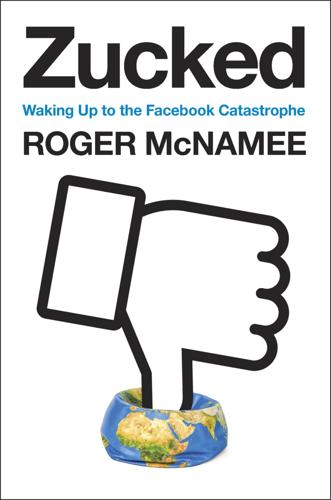
Zucked: Waking Up to the Facebook Catastrophe
by
Roger McNamee
Published 1 Jan 2019
Thank you to Alex Knight, Bobby Goodlatte, David Cardinal, Charles Grinstead, Jon Luini, Michael Tchao, Bill Joy, Bill Atkinson, Garrett Gruener, and Andrew Shapiro for ideas, encouragement, and thought-provoking questions. Many thanks to Satya Nadella, Peggy Johnson, and Bill Gates for taking the issues seriously. Thank you to Tim Cook and all of Apple for their commitment to protecting the privacy and freedom of customers. Bono provided invaluable counsel in the early stages of the work that led to this book. My thanks go out to Herb Sandler, Angelo Carusone, Melissa Ryan, Rebecca Lenn, Eric Feinberg, and Gentry Lane. Thank you to the Omidyar Network, the Knight Foundation, the Hewlett Foundation, and the Ford Foundation for their support of the Center for Humane Technology.
…
I had successful surgery in early July 2001, but my recovery was very slow. It took me nearly a year to recover fully. During that time, Apple shipped the first iPod. I thought it was a sign of good things to come and reached out to Steve Jobs to see if he would be interested in recapitalizing Apple. At the time, Apple’s share price was about twelve dollars per share, which, thanks to stock splits, is equivalent to a bit more than one dollar per share today. The company had more than twelve dollars in cash per share, which meant investors were attributing zero value to Apple’s business. Most of the management options had been issued at forty dollars per share, so they were effectively worthless.
…
In this second phase of the web, Google emerged as the most important player, organizing and displaying what appeared to be all the world’s information. Apple broke the code on tech style—their products were a personal statement—and rode the consumer wave to a second life. Products like the iMac and iPod, and later the iPhone and iPad, restored Apple to its former glory and then some. At this writing, Apple is the most valuable company in the world. (Fortunately, Apple is also the industry leader in protecting user privacy, but I will get to that later.) In the early years of the new millennium, a game changing model challenged the page-centric architecture of the World Wide Web.
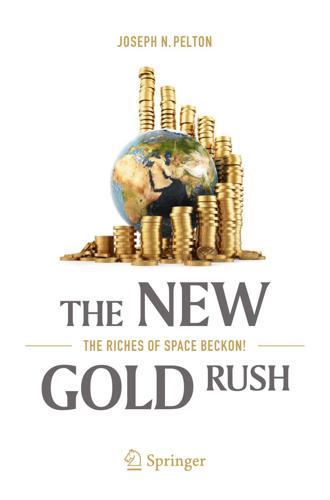
The New Gold Rush: The Riches of Space Beckon!
by
Joseph N. Pelton
Published 5 Nov 2016
Today it is sustainable energy, transportation, communications and virtual reality (VR) telecommuting systems. It is even advanced building materials systems, housing built by 3-D printers, and “smart” building systems designs. These state of the art sustainable products are not being promoted by bleeding heart liberal environmentalists but are being developed by today’s leading figures, such as Tim Cook of Apple, Mark Zuckerberg of FaceBook, Elon Musk of Tesla, and other forward-looking smart industrialists around the world. 3. Planetary Protection to Preserve Modern Infrastructure and Avoid Global Destruction. One of the keys to the future of human survival is for the world’s space agencies to finally recognize that their top strategic objective is to deploy space systems that would save Earth from massive destruction.
…
All of the companies now seeking to engage in space mining have also indicated that they would also want to do space processing and manufacturing as well. Spaceship EarthPlanet Earth is for humanity simply a 6 sextillion- ton spaceship that currently carries a very large crew of about 7.5 billion people and a lot of other flora and fauna as well. If Earth were a cosmic apple, the protective shielding we call the atmosphere is equivalent in size to the rind of the apple. The Van Allen Belts formed by Earth’s magnetic poles is all that protects us from destruction from periodic coronal mass ejections from the Sun. U. N. Committee on the Peaceful Uses of Outer Space (COPUOS)A committee that meets once a year in Vienna.
…
On change: “Here’s to the crazy ones, the misfits, the rebels, the troublemakers, the round pegs in the square hole—they’re not fond of rules… You can quote them, disagree with them, glorify or vilify them, but the only thing you can’t do is ignore them because the ones who are crazy enough to think that they can change the world are the ones who do.” (Steve Jobs, founder of Apple.) On investing $275 million in New Space: “We seek to assist human exploration and the discovery of beneficial resources, whether in Low Earth Orbit (LEO), on the moon, in deep space or on Mars”. (Robert Bigelow, CEO of Budget Suites and Bigelow Aerospace.) On a space elevator providing low-cost access to space: “It’s a phenomenal enabling technology that would open up our Solar System to humankind.

The Age of Surveillance Capitalism
by
Shoshana Zuboff
Published 15 Jan 2019
Menell, “2014: Brand Totalitarianism” (UC Berkeley Public Law Research Paper, University of California, September 4, 2013), http://papers.ssrn.com/abstract=2318492; “Move Over, Big Brother,” Economist, December 2, 2004, http://www.economist.com/node/3422918; Wojciech Borowicz, “Privacy in the Internet of Things Era,” Next Web, October 18, 2014, http://thenextweb.com/dd/2014/10/18/privacy-internet-things-era-will-nsa-know-whats-fridge; Tom Sorell and Heather Draper, “Telecare, Surveillance, and the Welfare State,” American Journal of Bioethics 12, no. 9 (2012): 36–44, https://doi.org/10.1080/15265161.2012.699137; Christina DesMarais, “This Smartphone Tracking Tech Will Give You the Creeps,” PCWorld, May 22, 2012, http://www.pcworld.com/article/255802/new_ways_to_track_you_via_your_mobile_devices_big_brother_or_good_business_.html; Rhys Blakely, “‘We Thought Google Was the Future but It’s Becoming Big Brother,’” Times, September 19, 2014, http://www.thetimes.co.uk/tto/technology/internet/article4271776.ece; CPDP Conferences, Technological Totalitarianism, Politics and Democracy, 2016, http://www.internet-history.info/media-library/mediaitem/2389-technological-totalitarianism-politics-and-democracy.html; Julian Assange, “The Banality of ‘Don’t Be Evil,’” New York Times, June 1, 2013, https://www.nytimes.com/2013/06/02/opinion/sunday/the-banality-of-googles-dont-be-evil.html; Julian Assange, “Julian Assange on Living in a Surveillance Society,” New York Times, December 4, 2014, https://www.nytimes.com/2014/12/04/opinion/julian-assange-on-living-in-a-surveillance-society.html; Michael Hirsh, “We Are All Big Brother Now,” Politico, July 23, 2015, https://www.politico.com/magazine/story/2015/07/big-brother-technology-trial-120477.html; “Apple CEO Tim Cook: Apple Pay Is Number One,” CBS News, October 28, 2014, http://www.cbsnews.com/news/apple-ceo-tim-cook-apple-pay-is-number-one; Mathias Döpfner, “An Open Letter to Eric Schmidt: Why We Fear Google,” FAZ.net, April 17, 2014, http://www.faz.net/1.2900860; Sigmar Gabriel, “Sigmar Gabriel: Political Consequences of the Google Debate,” Frankfurter Allgemeine Zeitung, May 20, 2014, http://www.faz.net/aktuell/feuilleton/debatten/the-digital-debate/sigmar-gabriel-consequences-of-the-google-debate-12948701-p6.html; Cory Doctorow, “Unchecked Surveillance Technology Is Leading Us Towards Totalitarianism,” International Business Times, May 5, 2017, http://www.ibtimes.com/unchecked-surveillance-technology-leading-us-towards-totalitarianism-opinion-2535230; Martin Schulz, “Transcript of Keynote Speech at Cpdp2016 on Technological, Totalitarianism, Politics and Democracy,” Scribd, 2016, https://www.scribd.com/document/305093114/Keynote-Speech-at-Cpdp2016-on-Technological-Totalitarianism-Politics-and-Democracy. 2.
…
Max Weber, Economy and Society: An Outline of Interpretive Sociology (Berkeley, CA: University of California Press, 1978), 1:67. CHAPTER TWO 1. Roben Farzad, “Apple’s Earnings Power Befuddles Wall Street,” Bloomberg Businessweek, August 7, 2011, https://www.bloomberg.com/news/articles/2011-07-28/apple-s-earnings-power-befuddles-wall-street. 2. “iTunes Music Store Sells Over One Million Songs in First Week,” Apple Newsroom, March 9, 2018, https://www.apple.com/newsroom/2003/05/05iTunes-Music-Store-Sells-Over-One-Million-Songs-in-First-Week. 3. Jeff Sommer, “The Best Investment Since 1926? Apple,” New York Times, September 22, 2017, https://www.nytimes.com/2017/09/22/business/apple-investment.html. 4. See Shoshana Zuboff and James Maxmin, The Support Economy: How Corporations Are Failing Individuals and the Next Episode of Capitalism (New York: Penguin, 2002), 230. 5.
…
We relive that August day every day as in some ancient fable, doomed to retrace this looping path until the soul of our information civilization is finally shaped by democratic action, private power, ignorance, or drift. I. The Apple Hack Apple thundered onto the music scene in the midst of a pitched battle between demand and supply. On one side were young people whose enthusiasm for Napster and other forms of music file sharing expressed a new quality of demand: consumption my way, what I want, when I want it, where I want it. On the other side were music-industry executives who chose to instill fear and to crush that demand by hunting down and prosecuting some of Napster’s most-ardent users. Apple bridged the divide with a commercially and legally viable solution that aligned the company with the changing needs of individuals while working with industry incumbents.
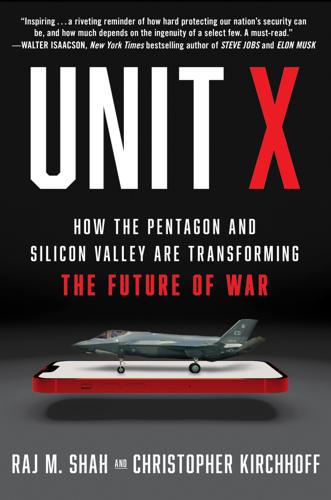
Unit X: How the Pentagon and Silicon Valley Are Transforming the Future of War
by
Raj M. Shah
and
Christopher Kirchhoff
Published 8 Jul 2024
Beck, a naval reserve officer who’d deployed to Iraq and Afghanistan and like Carter was a Yale-trained Rhodes Scholar, was one of Tim Cook’s direct reports at Apple. Doug had been part of the informal team behind the idea of DIUx and saw “dual fluency” reservists like Raj and himself as a central part of the solution. He had a knack for evangelizing to the military brass about the opportunity that existed in Silicon Valley and had charmed Pentagon officials during the run-up to DIUx 1.0 by showing them the original Apple Watch before it was released to the public, with Apple’s permission. We were meticulous in our preparation for the first all-hands.
…
Air Force, plus several former secretaries of state and secretaries of defense, as well as Doug Beck, DIU’s future head, and Philip Bilden, Raj’s future Shield Capital cofounder. Ash Carter joined by video. By day’s end, Beck and Goldfein had agreed to a talent swap: Apple would send five engineers to spend time with the air force, and the air force would send five service members to spend time with Apple. The idea was to help infuse each side with the culture of the other. To be sure, ten people weren’t going to magically transform the culture of enormous organizations. But it was a start. Raj also had been named a visiting fellow at the Hoover Institution and started teaching a class at Stanford called “Technology, Innovation, and Great Power Competition,” with Steve Blank, who, as we mentioned previously, was a successful tech entrepreneur, and Joe Felter, a West Point graduate and former Army Ranger who had served as U.S. deputy assistant Secretary of Defense for South Asia, Southeast Asia, and Oceania.
…
DOUG BECK AND DIU 3.0 In April 2023, Secretary of Defense Lloyd Austin made a bold decision and named Doug Beck to be the new director of DIU. Doug was a vice president at Apple and a navy vet who’d commanded DIU’s Reserve Unit. Over the years Doug had quietly cultivated relationships in defense circles. He’d advised three chiefs of naval operations, lectured at the Naval Postgraduate School, and served in various defense-related advisory roles in Washington. Ash Carter had pushed Doug hard to succeed Mike at DIU, telling him there is one reason to give up his beloved role at Apple: “Duty.” Doug also served as an unpaid innovation advisor to Deputy Secretary of Defense Kathleen Hicks.

The Costs of Connection: How Data Is Colonizing Human Life and Appropriating It for Capitalism
by
Nick Couldry
and
Ulises A. Mejias
Published 19 Aug 2019
“Google Starts Testing Chrome’s Built-In Ad Blocker.” The Verge, August 1, 2017. https://www.theverge.com/2017/8/1/16074742/google-chrome-ad-blocker-canary-build-test. Waters, Richard. “Four Days That Shook the Digital Ad World.” Financial Times, July 29, 2016. . “Google Plays Down Impact of Data Rules.” Financial Times, April 25, 2018. . “Tim Cook Is Right to Kick Facebook over Its Data Privacy Failings.” Financial Times, March 30, 2018. Weber, Max. Economy and Society. Edited by Roth Guenther and Claus Wittich. Berkeley: University of California Press, 1978. Weber, Steven. “Data, Development, and Growth.” Business and Politics 19, no. 3 (2017): 397–423.
…
As though in response, Apple, which makes vast profits through a walled garden of devices, proclaims its refusal to collect data on users via those devices.22 Yet Apple tracks its users for many purposes and so does not contradict the trend of data colonialism, except that its business model does not generally depend on the sale of this data. Indeed, Apple receives substantial sums from Google for allowing it privileged access to iPhone users.23 A controversy developed when Apple’s iOS and MacOS systems were shown to collect information on user location and search activity. Apple’s subsequent Privacy Policy states that collected data “will not be associated with [a user’s] IP address,”24 yet iPhone features still support the surveillance needs of marketers.
…
It is also a huge web-services provider, currently supplying 44 percent of the world’s cloud computing capacity, with clients ranging from Netflix to the CIA.37 Next there is Apple, which has become known for the high integration of its hardware and its software: its devices use only Apple’s operating system, and software from other providers runs on its devices only when Apple allows it. Such a degree of control is seen as authoritarian by some and as the epitome of good design by others. Regardless, this stance allows Apple to distinguish itself from its competitors by, for instance, building ad blockers right into its Safari web browser or claiming that they do not sell any of the data they collect from users.38 Even if this is the case, Apple must take some responsibility for the labor conditions under which its devices are manufactured, for its collusion with the media industry in ways that are not favorable to consumers,39 or for its innovative ways to avoid paying taxes: the company pays 9.8 percent in taxes, whereas global corporations typically pay around 24 percent.40 Facebook’s business model is premised entirely on its ability to capture data from its users and sell it to advertisers.

Deep Medicine: How Artificial Intelligence Can Make Healthcare Human Again
by
Eric Topol
Published 1 Jan 2019
Nature, 2017. 542(7639): pp. 36–38. 68. Esteva et al., “Dermatologist-Level Classification of Skin Cancer with Deep Neural Networks.” 69. Zakhem, G. A., C. C. Motosko, and R. S. Ho, “How Should Artificial Intelligence Screen for Skin Cancer and Deliver Diagnostic Predictions to Patients?” JAMA Dermatol, 2018. 70. Leswing, K., “Apple CEO Tim Cook Gave a Shout-Out to a $100-per-Year App for Doctors—Here’s What It Does,” Business Insider. 2017. CHAPTER 7: CLINICIANS WITHOUT PATTERNS 1. Gellert, G., and L. Webster. The Rise of the Medical Scribe Industry: Implications for Advancement of EHRs, in HiMSS 16. 2016. Las Vegas, NV. 2. Wang, M.
…
Gundotra, Petterson, and Prakash interview with Topol. 5. Comstock, J., “Apple, Stanford Launch Apple Heart Study to Improve Atrial Fibrillation Detection,” MobiHealthNews. 2017; Loftus, P., and T. Mickle, “Apple Delves Deeper into Health,” Wall Street Journal. 2017, p. B5. 6. Gonzalez, R., “The New ECG Apple Watch Could Do More Harm Than Good,” Wired. 2018. https://www.wired.com/story/ecg-apple-watch/; Dormehl, L., “Why We Should Be Wary of Apple Watch ‘Ultimate’ Health Guardian Claims,” Cult of Mac, 2018. https://www.cultofmac.com/577489 /why-we-should-be-wary-of-apple-watch-ultimate-health-guardian-claims/; Victory, J., “What Did Journalists Overlook About the Apple Watch ‘Heart Monitor’ Feature?”
…
His youthful appearance doesn’t jibe with a track record of twenty years of experience in product development, which included leading the Google Glass design project. He also worked at Apple for nine years, directly involved in the development of the first iPhone and iPad. That background might, in retrospect, be considered ironic. Meanwhile, a team of more than twenty engineers and computer scientists at Apple, located just six miles away, had its sights set on diagnosing atrial fibrillation via their watch. They benefited from Apple’s seemingly unlimited resources and strong corporate support: the company’s chief operating officer, Jeff Williams, responsible for the Apple Watch development and release, had articulated a strong vision for it as an essential medical device of the future.
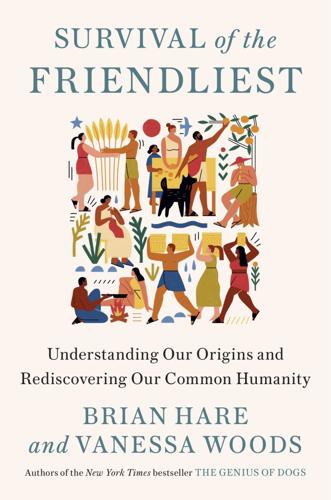
Survival of the Friendliest: Understanding Our Origins and Rediscovering Our Common Humanity
by
Brian Hare
and
Vanessa Woods
Published 13 Jul 2020
Build eco-smart cities, grow steak in a petri dish from stem cells, and genetically engineer high-yield drought-resistant crops. Need to make education universal? Develop scalable software for children anywhere in the world to teach themselves reading, writing, and math online in eighteen months flat.76 But as Tim Cook, the CEO of Apple, said, “technology alone isn’t the solution. And sometimes it’s even part of the problem.” Because technology is, and always has been, a double-edged sword. The projectile weapon that we used to cooperatively hunt mammoths could also be used to kill our fellow humans. Nuclear power could be a critical solution to our energy crisis if we manage not to start a nuclear war.
…
There were the Japanese rape of Nanking, the Hungarian death marches, the Russian rape of Berlin, the Romanian pogroms. Psychologists could not account for it. It was convenient to assign most of the blame to a few psychopathic leaders, but the sheer scale of the carnage made it unlikely that it was the work of just a few bad apples. The field of social psychology emerged primarily to understand what made ordinary people do terrible things. Three dominant explanations came out of their work: prejudice, a desire to conform, and obedience to authority. Gordon Allport described prejudice as “an antipathy based on faulty and inflexible generalization.”43 It starts young, he maintained, and is stubbornly persistent.
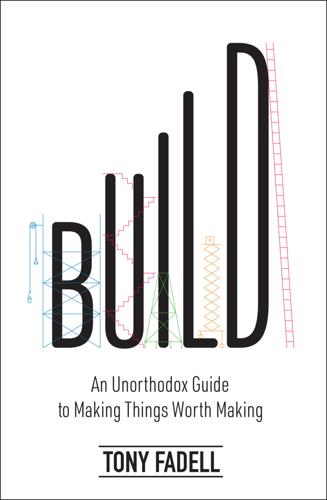
Build: An Unorthodox Guide to Making Things Worth Making
by
Tony Fadell
Published 2 May 2022
There always needs to be some kind of pressure-release valve. There always needs to be someone who can shake their head and give it to you straight. And if you do it right, you should never be a victim of your board. As CEO, you help to shape it. Boards always change based on the CEO—the board under Steve Jobs was different from the board under Tim Cook. Boards complement a CEO’s strengths and no two CEOs are alike. So when you’re choosing your board members, here’s what types of people you should be considering: Seed crystals: Just as you need seed crystals to grow your team, you want someone on the board who knows everyone, has done it before, and can suggest other amazing people to add to the board or to your company.
…
The following afternoon he had lunch with a colleague who worked at Apple. They mentioned they were kicking off a new project. Did he happen to know anyone with experience building handheld devices? I got a call from Apple the next day. Because you’ve picked up this book, the rest of the story is probably pretty familiar. I took a consulting gig with Apple at first, just hoping to make enough money to pay my employees or maybe leverage my job into a buyout for Fuse. Putting my hopes on Apple was a serious long shot. Steve Jobs was back at the helm then, but during the previous decade Apple had been in a death spiral, launching a slew of mediocre products that edged the company close to collapse.
…
As businesses began adopting the iPhone, they reached out to Apple, asking to make applications for their employees and sales. If Apple wanted people to continue using their phones for work, they’d have to give the enterprise the ability to create its own apps. And so the App Store was born. Now Apple has separate teams to handle all of their B2B business, but the products are never defined to appease B2B customers. By keeping itself pure as a B2C company, Apple was able to tack on B2B without significantly altering its priorities or its marketing, or knocking its core business out of whack. After Steve set the rules, Apple followed them.
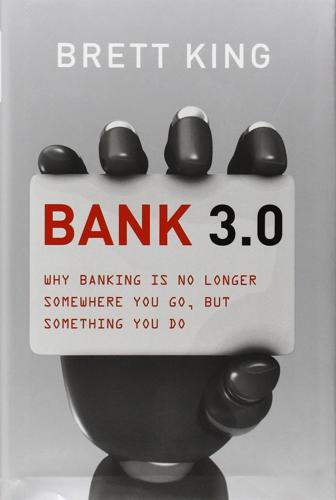
Bank 3.0: Why Banking Is No Longer Somewhere You Go but Something You Do
by
Brett King
Published 26 Dec 2012
Figure 1.2: Technology adoption rates over the last 100 years Ultimately new technologies and initiatives such as the iPod and Facebook are now being adopted by consumers en masse in a period measuring months, not years. To illustrate this shift, Apple sold more iOS devices in 2011 alone than all the Macs it had ever sold in the 28 years prior. “This 55m [iPads sold to-date] is something no one would have guessed. Including us. To put it in context, it took us 22 years to sell 55 million Macs. It took us about 5 years to sell 22 million iPods, and it took us about 3 years to sell that many iPhones. And so, this thing is, as you said, it’s on a trajectory that’s off the charts . . .” —Tim Cook, Apple CEO during February 2012 reporting call Apple then sold more iPhone 4S devices in fiscal Q1 of 2012 than in the preceding 12 months.
…
However, the meet-and-greet component is important in providing a strong initial service offering, an appearance as a brand with the wish to engage the customer. Genius Bars and Pods Apple has been famous for its “genius bar” concept built into its Apple Stores. As per Apple’s own description, the Genius Bar gives high-touch technical support to Apple customers: “When you have questions or need hands-on technical support for your Mac, iPad, iPod, Apple TV, or iPhone, you can get friendly, expert advice at the Genius Bar in any Apple Retail Store. The Genius Bar is home to our resident Geniuses. Trained by Apple, they have extensive knowledge of Apple products and can answer all your technical questions. In fact, Geniuses can take care of everything from troubleshooting problems to actual repairs.”12 Banks are trying to replicate this concept by turning to having specialist advisors roam the floor, ready to engage in a wide range of technical and product discussions.
…
Even if you assume that the first interaction for a customer is in an Apple Store or in a branch, how do customers behave once they have purchased their first device or opened an account? Does the most excellent “store” experience drive them back to the store repeatedly over time? No. The average Apple Store makes approximately $34m in revenue annually, with $8.3m in operating income. However, if you examine the 10-K filing for Apple, revenue is split almost 50/50 between online and device-based store sales, and its retail presence split between resellers and its own stores.6 Since the Apple “App Store” opened on 10 July 2008, Apple has booked close to $6 billion in revenue just on apps.7 Cyber Monday is used as the benchmark for US online and mobile retail sales, and figures show that iPhones and iPads account for 7–10 per cent of all online sales activity on those days.8 What we know from all the data is this: Customers might start their relationship with Apple in-store, but they don’t have to, and increasingly they’re actually choosing not to.

The Optimist: Sam Altman, OpenAI, and the Race to Invent the Future
by
Keach Hagey
Published 19 May 2025
This particular year, despite a healthy economy and the usual splendid weather, the conference was permeated by a sense of dread, as the big players in media seemed increasingly desperate to sell themselves off to some tech company or another before the profits fully leaked out of their business, thanks to competition from the likes of Netflix. As if to troll the legacy types, SoftBank founder Masayoshi Son arrived and declared to reporters, “I’m not interested in traditional media.”20 Apple’s Tim Cook and Facebook’s Sheryl Sandberg echoed his sentiments the following day. Jeff Bezos, not yet divorced but in the midst of making himself over, strutted between boutique pop-up shops, his muscles bulging improbably. For his part, Altman bumped into Microsoft’s Nadella in a stairwell, and they had a five-minute conversation.
…
The meetings in November 2007 won Loopt no special access to the iPhone SDK when it was finally made available in March 2008. But Apple did offer Loopt something that turned out to be very valuable: they would test Loopt’s iPhone app internally, give feedback on it and offer them a chance to be part of the keynote speech of Apple’s Worldwide Developers Conference the following June. The deal came with some time pressure, and no guarantee of any kind of prominent placement on the device. But after some discussion, Altman and McAdoo agreed it was worth investing in building the software to elicit Apple’s feedback. “I think we had one hundred Apple employees at one point running around using the [Loopt] app on an iPhone,” McAdoo said.
…
“We were enamored with the application,” Forstall recalled. To get up on the coveted stage of Apple’s developer conference, however, Altman had to pitch Jobs himself. The Apple developer relationships team helped Altman and Howard come up with a script for their presentation and drilled them on it. Eventually they brought them to a building on Apple’s Cupertino campus. Altman and Howard waited in a lobby with the Bösendorfer grand piano that Jobs had bought to inspire the original Macintosh team—a symbol of Apple’s emphasis on beauty—and then were shuttled into an auditorium. In the center of the seats sat Jobs, surrounded by a few assistants, dressed not in a black turtleneck, as Altman and Howard expected, but in shorts and a T-shirt.
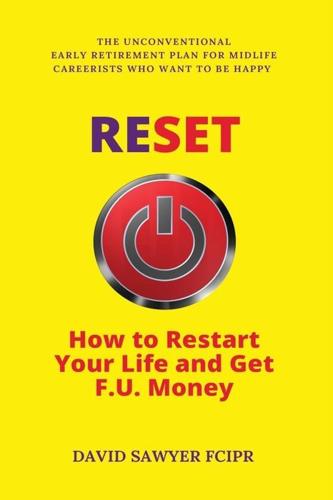
Reset: How to Restart Your Life and Get F.U. Money: The Unconventional Early Retirement Plan for Midlife Careerists Who Want to Be Happy
by
David Sawyer
Published 17 Aug 2018
[175] 2,617 times a day: “We touch our phones 2,617 times a day, says study | Network World.” 7 Jul. 2016, toreset.me/175. [176] In a 2016 blog post: “How Technology is Hijacking Your Mind — from a Former... – Medium.” 18 May. 2016, toreset.me/176. [177] kids’ screen time: “Bill Gates and Steve Jobs limited screen time for... – Business Insider.” 10 Jan. 2018, toreset.me/177. [178] Cook: “Tim Cook – Wikipedia.” toreset.me/178. The Apple CEO. [179] Horvath: “Michael Horvath | LinkedIn.” toreset.me/179. The Strava co-founder. [180] RescueTime: “RescueTime.” toreset.me/180. [181] Unroll.Me: “Unroll.Me.” toreset.me/181. [182] (3% of people)?: “Sleep with your smartphone in hand? You’re not alone – CNET.” 30 Jun. 2015, toreset.me/182
…
A work IT department, speedy-service warranty, or a computer specialist who lives locally. That’s it. When you’re linking this together, you have three global behemoths vying for your attention: Microsoft, Google and Apple. Which you pick is up to you. I’m a Google man myself, with an Android smartphone and a subscription to its “brand of cloud computing, productivity and collaboration tools, software and products”, G Suite. I avoid Apple. Microsoft’s Office 365 cloud service is now good and by far the most widely used cloud-based productivity software. If you have neither G Suite nor Office 365 at work and are still storing everything on servers or your computer’s hard drive, speak to your boss and ask them to remedy this dysfunctional situation.
…
He doesn’t have time to look for the best electricity and gas provider, so signs up for another year. He rings his local car dealer and arranges a meeting to talk about a three-year contract hire on that new Audi he’s had his eye on. It’s got great boot space, and he’s had his current car five years. He deserves it. Months go by and suddenly Bren’s the apple of his young chief executive’s eye. (She’s ten years younger with five more letters after her name and a star that’s on the rise. And if he swallows enough shit, his will be, too.) May brings a pay rise. Ten thousand pounds (with strings attached). Bren’s having to take on more responsibility. As well as his own department, he’ll now head the internal transformational change team, looking at “cross-cutting new ways of working” across the local authority.
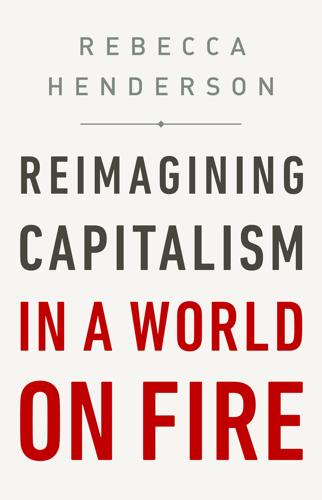
Reimagining Capitalism in a World on Fire
by
Rebecca Henderson
Published 27 Apr 2020
Pence urging him to veto the measure, saying: As leaders of technology companies, we not only disagree with this legislation on a personal level, but (believe that) the RFRA will adversely impact our ability to recruit and retain the best and the brightest talent in the technology sector. Technology professionals are by their nature very progressive, and backward-looking legislation such as the RFRA will make the state of Indiana a less appealing place to live and work.38 Following the signing of the act, Tim Cook, the CEO of Apple (the first CEO of a Fortune 500 company to come out as gay) tweeted that he was “deeply disappointed” in the law. Yelp CEO Jeremy Stoppelman remarked, [It] is unconscionable to imagine that Yelp would create, maintain, or expand a significant business presence in any state that encouraged discrimination by businesses against our employees, or consumers at large.… These laws set a terrible precedent that will likely harm the broader economic health of the states where they have been adopted, the businesses currently operating in those states and, most importantly, the consumers who could be victimized under these laws.39 The CEOs of Anthem Inc., Eli Lilly and Company, Cummins, Emmis Communications, Roche Diagnostics, Indiana University Health, and Dow AgroSciences—all companies with significant operations in Indiana—called on the local Republican leadership to pass legislation to prevent “discrimination based upon sexual orientation or gender identity.”
…
My career has given me extensive firsthand experience of just how difficult it is to do things in new ways. For many years I worked with firms struggling to change. I worked with GM as it attempted to respond to Toyota. With Kodak, as the conventional film business collapsed in the face of digital photography. With Nokia—which at its peak sold more than half of the world’s cell phones—as Apple revolutionized the business.1 Transforming the world’s firms will be hard. Transforming the world’s social and political systems will be even harder. But it is eminently possible, and if you look around, you can see it happening. I am reminded of a moment some years ago when I was in Finland, facilitating a business retreat.
…
Companies must benefit all of their stakeholders, including shareholders, employees, customers, and the communities in which they operate.”10 BlackRock has just under $7 trillion in assets under management, making it among the largest shareholders in every major publicly traded firm on the planet. It owns 4.6 percent of Exxon, 4.3 percent of Apple, and close to 7.0 percent of the shares of JPMorgan Chase, the world’s second-largest bank.11 For Fink to suggest that “companies must serve a social purpose” is the rough equivalent of Martin Luther nailing his ninety-five theses to Wittenberg Castle’s church door.12 The week after his letter came out, a CEO friend reached out to me to confirm that surely he didn’t—really—mean it?
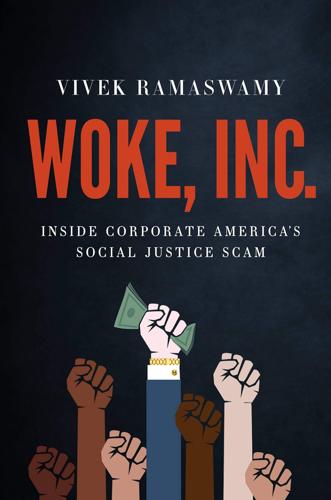
Woke, Inc: Inside Corporate America's Social Justice Scam
by
Vivek Ramaswamy
Published 16 Aug 2021
Were mass protests in the middle of a pandemic that was killing a lot of black people really a good way to save black lives? But those nuances didn’t stop media outlets from reporting a singular black-and-white narrative. And it didn’t stop corporations from pouncing on the opportunity to achieve their own ends. High-profile CEOs like Tim Cook of Apple and Dara Khosrowshahi of Uber rushed to issue staid statements of solidarity. Khosrowshahi stated that Uber was donating millions to fight racism and that “Uber stands in solidarity with the Black community and with peaceful protests against the injustice and racism that have plagued our nation for too long.”1 The company announced that it would promote black-owned businesses on its ride-sharing app and tie executive pay to “diversity goals.”
…
Antitrust law was designed to protect consumers from monopolies and cartels that use market power to limit consumer choice and charge higher prices. But today’s Big Tech titans—companies like Apple, Microsoft, Google, Facebook, and Amazon—provide consumers with a wider range of products than ever before and for strikingly low prices. Facebook, Twitter, and Google are all free for users. Consumers can find pretty much anything they want on Amazon or at the Apple iTunes store. That’s why tech CEOs ran circles around the House Judiciary Committee’s Antitrust Subcommittee in hearings in August 2020. They’ll likely do the same thing in court if they’re charged with antitrust violations.
…
Of course, “diversity and perspectives” is different from a diversity of perspectives.7 Larry Fink, CEO of BlackRock, the world’s largest investment firm, issued an open letter to CEOs describing a “Sustainability Accounting Standards Board” that would tackle issues ranging from labor practices to workforce diversity to climate change. Scores of others followed. If the turn of the decade was a tipping point, then the murder of George Floyd, a black man, at the hands of a white police officer in May 2020 broke the dam. Companies ranging from Apple to Uber to Novartis issued lengthy statements in support of the Black Lives Matter (BLM) movement. In a surprising about-face, L’Oréal rehired a model it had fired for her comments about “the racial violence of white people.” Well-respected companies like Coca-Cola implemented corporate programs teaching employees “to be less white” and that “to be less white is to be less oppressive, be less arrogant, be less certain, be less defensive, be more humble” and that “white people are socialized to feel that they are inherently superior because they are white.”8 Starbucks said it would mandate anti-bias training for executives and tie their compensation to increasing minority representation in its workforce.

Arriving Today: From Factory to Front Door -- Why Everything Has Changed About How and What We Buy
by
Christopher Mims
Published 13 Sep 2021
The company also has to hire and train its robot minders, find people qualified to maintain their fleet, and—this has lately become one of the biggest bottlenecks—figure out how to make enough of its robots, fast enough. Every hardware company must eventually confront the challenge of the vast gulf between making prototypes of its devices, usually built by hand, and making thousands or even millions of them. The former requires creativity, pluck, and a hacker mentality, while the latter requires, basically, Tim Cook. Apple’s CEO rose to his position as Steve Jobs’s anointed successor by being a master of the logistics of global manufacturing. Starship, meanwhile, is still manufacturing its robots a few dozen at a time in the same place it always has, in Estonia, where the company’s chief technology officer happens to live.
…
Mick was living off his savings, but he wasn’t exactly eating ramen and sleeping under his desk. Previously, he’d been an engineer at Motorola, where he learned how microchips—the most complicated and difficult-to-make objects on Earth—are manufactured. Then he was a product manager at Apple, on the Power Mac team, the Macintoshes that Apple sold from 1994 until 2006. After Apple, Mick went in an unexpected direction and made a decision that may one day be viewed by future historians as pivotal for the trajectory of e-commerce and the nature of work: Mick went to Webvan. People who were sentient during the first dot-com bubble of the late 1990s remember the delivery service Kozmo, because you could order literally anything: a can of Coke, a pack of gum, a CD.
…
Chapter 18 How Warehouse Work Injures The effects of automation are amply demonstrated by what are by now innumerable anecdotal accounts of former employees. Injury reports from within Amazon’s warehouses back up their accounts, even if Amazon can plausibly argue that these self-reported numbers may not allow for an apples-to-apples comparison with their competitors. But what about those other effects of warehouse work that aren’t accounted for in Occupational Safety and Health Administration (OSHA) statistics, such as repetitive stress injuries that might not show up on reports intended to track acute injuries, or the psychological impact of this kind of work?

The Long History of the Future: Why Tomorrow's Technology Still Isn't Here
by
Nicole Kobie
Published 3 Jul 2024
Eventually he gave up on the hardware and shifted into virtual worlds, building the multi-user online world Second Life.13 Blake Harris’ book The History of the Future: Oculus, Facebook, and the Revolution that Swept Virtual Reality includes a detailed telling of how the group came together to make the Rift happen.14 We humans can handle very low frame rates and much faster ones, but anything between four to 12 frames per second causes confusion – what SRI’s Thomas Piantanida called the ‘Barfogenic Zone’.15 In hindsight, Zuckerberg has made many, many mistakes.16 You can read the full story on The Information here: https://biturl.top/vYJFJn 17 CEO Tim Cook apparently finds Facebook’s favoured term ‘metaverse’ offputting to average people; and they go with that?18 You can read her full article here: https://biturl.top/6beQVf 19 This isn’t an assumption I make from my privileged position in a wealthy, Western country. There are almost as many smartphones in the world as there are people, though of course many people do carry multiples (CEOs, drug dealers, etc.).
…
Meta, according to The Verge, plans to release more fully featured smart AR glasses in 2027, after a decade in development. * * * There’s one easy way to judge if a technology is ready for the market: does Apple make one? Apple has been working on an augmented reality headset since 2015 or so, indicated by a series of acquisitions and hires, including German AR firm Metaio in 2015 and Canadian headset maker Vrvana in 2017, as well as former NASA employee Jeff Norris in 2017. After years of such teasing, Apple made it official, unveiling in June 2023 the Apple Vision Pro for $3,499. Apple is calling the experience ‘spatial computing’,17 which is effectively augmented reality. You can see what’s going on around you (such as in your living room), with digital images overlaid on top.
…
While Google was eager to have everyone on stage wearing Glass, New York Times reporter Vanessa Friedman noted that no one actually wore a Vision Pro during the launch demo, suggesting Apple was well aware not only how silly it looked, particularly the cable running down to the battery pack, but also that they risked become memes online.18 It’s also interesting what Apple didn’t (yet) build: AR glasses. The dream of pulling on a pair of glasses and getting notifications or playing games without glancing at your phone isn’t yet feasible, based on what the world’s most successful technology maker has managed to produce, at least. Naturally, Apple hasn’t officially said anything on the subject, but reports from Bloomberg suggest work on lightweight AR glasses has been delayed, perhaps indefinitely, owing to technical challenges.
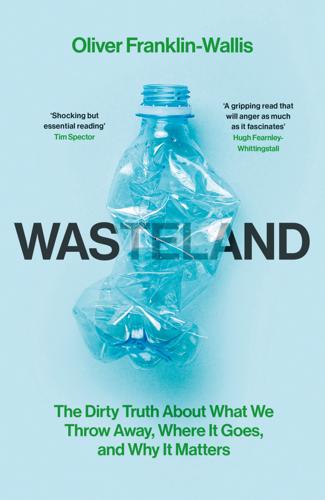
Wasteland: The Dirty Truth About What We Throw Away, Where It Goes, and Why It Matters
by
Oliver Franklin-Wallis
Published 21 Jun 2023
Quandary: Why There’s No Such Thing As “Built To Last”’, New Yorker, 14/07/2016. 22 Slade, Made to Break, p. 80. 23 Adam Minter, Secondhand: Travels in the New Global Garage Sale (New York: Bloomsbury), 2019, p. 200. 24 Shara Tibken, ‘Here’s why Apple says it’s slowing down older iPhones’, CNET, 21/12/2017: https://www.cnet.com/tech/mobile/apple-slows-down-older-iphone-battery-issues/ 25 Chaim Gartenberg, ‘Apple says it could miss $9billion in iPhone sales due to weak demand’, The Verge, 02/01/2019: https://www.theverge.com/2019/1/2/18165804/apple-iphone-sales-weak-demand-tim-cook-letter-revised-q1-estimate 26 Chance Miller, ‘Apple hit with another lawsuit over iPhone batterygate, seeking $73million in damages for users’, 9to5Mac, 25/01/2021: https://9to5mac.com/2021/01/25/iphone-batterygate-lawsuit-italy/ 27 Although the shop owner, Henrik Huseby, never advertised the parts as real, the Norwegian High Court eventually ruled that the screens broke copyright law, and forced Huseby to pay Apple $23,000 in compensation. 28 Brian X.
…
The assertion is less one of fact than of feeling, but nonetheless has slowly but steadily accumulated, along with our rubbish. In 2017, for example, Apple admitted that it had been quietly using software to slow the performance of older iPhones. The company claimed the measure was to protect the devices from electrical issues associated with ageing lithium-ion batteries;24 critics argued that by hiding the problem, Apple had likely induced people to upgrade their phones early. This assertion was somewhat backed up by the fact that when Apple discounted battery replacement fees that year by way of apology, iPhone upgrade rates fell sharply.25 Apple, which has faced multiple lawsuits as a result of ‘Batterygate’ – including a $500 million civil action lawsuit that it settled in 2020 – eventually apologised.26 But it has also engaged in a pattern of behaviour that critics allege undermine its self-image as a sustainable business.
…
CONTROL, DELETE 1 Vanessa Forti, Cornelis Peter Baldé et al., The Global E-waste Monitor 2020: Quantities, flows, and the circular economy potential, United Nations University and United Nations Institute for Training and Research, 2020. 2 Simon O’Dea, ‘Number of smartphones sold to end users worldwide from 2007 to 2021 (in million units)’, Statista, 06/05/2022 (accessed: 24/06/2022): https://www.statista.com/statistics/263437/global-smartphone-sales-to-end-users-since-2007/ 3 ‘Global PC shipments pass 340 million in 2021 and 2022 is set to be even stronger’, Canalys, 12/01/2022: https://www.canalys.com/newsroom/global-pc-market-Q4-2021 4 Saranraj Mathivanan, ‘Global Headphones Market Shipped nearly 550 million units in 2021’, Futuresource Consulting (2022): https://www.futuresource-consulting.com/insights/global-headphones-market-shipped-nearly-550-million-units-in-2021 5 Calculated using Apple, ‘Environmental Responsibility Report: 2019 Progress Report, covering fiscal year 2018’, 2019: https://www.apple.com/environment/pdf/Apple_Environmental_Responsibility_Report_2019.pdf 6 Bianca Nogrady, ‘Your old phone is full of untapped precious metals’, BBC Future, 18/10/2016: https://www.bbc.com/future/article/20161017-your-old-phone-is-full-of-precious-metals 7 Adam Minter, Junkyard Planet: Travels in the Billion-Dollar Trash Trade (New York: Bloomsbury Press), 2013, p. 175. 8 World Economic Forum, ‘A New Circular Vision for Electronics: Time For A Global Reboot’, 2019, p. 5. 9 Lauren Joseph and James Pennington, ‘Tapping the economic value of e-waste’, China Daily, 29/10/2018: http://europe.chinadaily.com.cn/a/201810/29/WS5bd64e5aa310eff3032850ac.html 10 World Economic Forum, ‘A New Circular Vision’, p. 11. 11 Or $57 billion, according to Forti, Baldé et al., The Global E-waste Monitor 2020. 12 Originally, the company was called Computer Recyclers of America, but it rebranded and relaunched in 2005 as ERI. 13 ‘Nonferrous Scrap Terminology’, Recycling Today, 15/07/2001: https://www.recyclingtoday.com/article/nonferrous-scrap-terminology/ 14 Richard Pallot, ‘Amazon destroying millions of items of unsold stock in one of its UK warehouses every year, ITV News investigation finds’, ITV News, 21/06/2021: https://www.itv.com/news/2021-06-21/amazon-destroying-millions-of-items-of-unsold-stock-in-one-of-its-uk-warehouses-every-year-itv-news-investigation-finds 15 Thomas Claburn, ‘Apple seeks damages from recycling firm that didn’t damage its devices: 100,000 iThings “resold” rather than broken up as expected’, The Register, 05/10/2020. 16 ‘Burberry burns bags, clothes and perfume worth millions’, BBC News, 19/07/2018: https://www.bbc.co.uk/news/business-44885983 17 Christine Frederick, Selling Mrs.
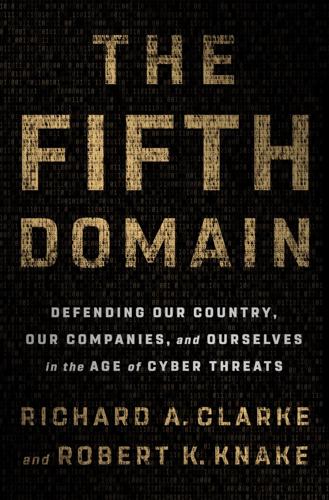
The Fifth Domain: Defending Our Country, Our Companies, and Ourselves in the Age of Cyber Threats
by
Richard A. Clarke
and
Robert K. Knake
Published 15 Jul 2019
By February, the FBI was saying publicly that it could not open one of the iPhones used by the terrorists. The devices were set so that after a few failed attempts to open them with a PIN, the phones would wipe all data. FBI Director James Comey called upon Apple to develop software that could be used to bypass the PIN and unlock the devices. Apple CEO Tim Cook, correctly in our view, refused, saying that Apple could not be compelled to weaken the security of its own products. Comey took Cook to court. The backstory was that Comey had been campaigning inside the Obama administration for new legislation that would require companies that make encryption software to build in ways that the government could decrypt the code.
…
There were, however, hundreds of other iPhones involved in other cases that the FBI or local police could not open. What happened next tells you a lot about the value of encryption to cybersecurity. Far from supporting Comey and the FBI, former high-level national security officials came out of the woodwork to support Apple, including former CIA and NSA directors. We were part of that chorus. What we were all saying was that encryption is essential to secure private-sector networks and databases. If Apple created a way to break the encryption on its devices, malicious actors would find a way to use it too. In a heated debate at the RSA security conference in 2016, Dick Clarke asserted that the government was looking to create a bad precedent and that, in fact, it already had classified means to open the phone.
…
The NotPetya malware took billions from companies operating in Ukraine, Europe, and the United States, leading many to report the losses on their quarterly and annual filings with the Securities and Exchange Commission. Yet some, if not most, multinational corporations operating in Ukraine either were not impacted, were minimally impacted, or had some really good lawyers who argued the losses did not need to be reported (more on that later). Companies such as Microsoft, Apple, and Google, all companies that at one time saw concerns over cyber threats as overhyped, now have religion and are investing in cybersecurity with the zealotry of the converted. They view cybersecurity as a competitive advantage in a market where consumers are increasingly wary of doing business online.
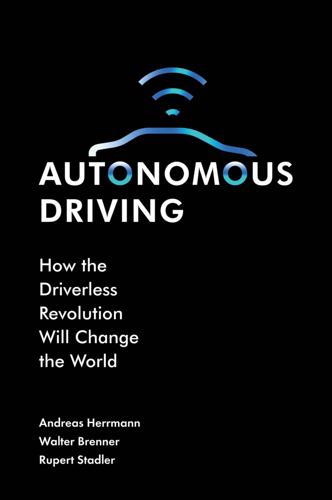
Autonomous Driving: How the Driverless Revolution Will Change the World
by
Andreas Herrmann
,
Walter Brenner
and
Rupert Stadler
Published 25 Mar 2018
Until now, the company’s focus has been on the development of driver-assist technologies along the levels of automation. TECHNOLOGY COMPANIES Tim Cook, CEO of Apple, described the challenge of building autonomous vehicles as the mother of all artificial intelligence projects. Plans to develop self-driving cars were not confirmed until mid-2017, prior to which the company had remained tight-lipped. However, the focus is less on the vehicles, and more on the development of the artificial intelligence. This technology could be provided in products from other industries to car manufacturers, who do not develop their own software for driverless cars. So far, Apple has tested its software and sensors with three Lexus vehicles in the streets around San Francisco.
…
This page intentionally left blank INDEX A9 autobahn in Germany, 134, 135, 407 ACCEL, 324 Accelerating, 8, 22, 27, 59, 78, 91, 122, 295, 296 Access Economy, 344 Acoustic signals, 108 Ad-hoc mobility solutions, 354 Ad-hoc networks, 133 Adaptive cruise control, 4, 51, 72 74, 78, 86, 96, 113, 116, 289, 297, 333 Aerospace industry, 153 Agenda for auto industry culture change, 396 increasing speed, 398 service-oriented business model, 397 398 V-to-home and V-to-business applications, 399 Agile operating models, 330 Agriculture, 154 productivity, 155 sector, 154 157 Air pollution, 27 AirBnB, 311 Airplane electronics, 144 Aisin, 9 Albert (head of design at Yahoo), 228 Alexandra (founder and owner of Powerful Minds), 228 Alibaba Alipay payment system, 372 Alternative fuels, autonomous vehicles enabling use of, 305 Altruistic mode (a-drive mode), 252 Amazon, 138, 141, 311 American Trucking Association, 68 Android operating system, 327 Anthropomorphise products, 290 Appel Logistics transports, 167 Apple, 9, 138, 327 CarPlay, 285 Apple Mac OS, 247 Apple-type model, 323 Application layer, 119 software, 118 Artificial intelligence, 115, 255, 291, 332 333 Artificial neuronal networks, 114 115 Asia projects, 371 374 Assembly Row, 386 Assessment of Safety Standards for Automotive Electronic Control Systems, 144 Assistance systems, 71 77 Audi, 5, 130, 134, 137, 179, 211, 301, 318, 322, 398 Driverless Race Car, 5 piloted driving, 286 piloted-parking technology, 386 387 Audi A7, 44, 198, 282 427 428 Audi A8 series-car, 79, 180 Audi AI traffic jam pilot, 79 Audi Fit Driver service, 318 319 Audi piloted driving lab, 227, 229 Audi Q7, 74 assistance systems in, 75 Audi RS7, 43, 44, 79 autonomous racing car, 179 driverless, 227 Audi TTS, 43 Audi Urban Future Initiative, 384 386, 406 Augmented reality, 279 vision and example, 279 280 Authorities and cities, 171 173 Auto ISAC, 146 Autolib, 317, 344 Autoliv, 285 Automakers’ bug-bounty programs, 146 Automated car, 233, 246, 264, 289, 384 Automated driving division of labour between driver and driving system, 48 examples, 51 53 image, 177 levels of, 47 51 scenarios for making use of travelling time, 52 strategies, 53 56 technology, 160 Automated vehicles, 9, 174, 246 Automated Vehicles Index, 367 368 Automatic car, 233, 244 Automatic pedestrian highlighting, 78 Automation ironies of, 76 responsibility with increasing, 235 Automobile, 3, 21 locations, 405 manufacturers, 311 Index Automotive design, 265 266 Automotive Ethernet, 126 Automotive incumbents operate, 330 Automotive industry, 332 335, 367, 379, 397 Automotive technology, 327 328 AutoNet2030 project, 369 Autonomous buses, 14, 81, 158, 159, 175, 302 Autonomous cars, 25, 126, 197, 205 206, 233, 244, 270 expected worldwide sales of, 85 savings effects from, 67 68 Autonomous driving, 3, 8, 39, 62, 94, 111, 116, 120, 121 123, 141, 160 162, 171, 173, 207 208, 217, 247, 252, 266, 332 333, 379 applications, 10 12, 160 aspects for, 93 Audi car, 5 autonomous Audi TTS on Way to Pikes Peak, 43 in combination with autonomous loading hubs, 166 driving to hub, 213 ecosystem, 18 20, 131 element, 243 facts about, 306 functions, 74 impression, 40 industry, 16 18 living room in Autonomous Mercedes F015, 44 milestones of automotive development, 4 NuTonomy, 6 projects, 41 45 real-world model of, 92 scenarios, 211 215 science fiction, 39 41 technology, 9 10, 92 Index time management, 215 218 vehicles, 12 16 See also Human driving Autonomous driving failure, 221 consequence, 221 222 decision conflict in autonomous car, 223 design options, 222 223 influencer, 223 224 Autonomous Mercedes F015, living room in, 44 Autonomous mobility, 12, 13, 16 17, 172, 405 establishment as industry of future, 404 405 resistance to, 171 172 Autonomous Robocars, 81 Autonomous sharp, 274 ‘Autonomous soft’ mode, 274 Autonomous trucks, 161 from Daimler, 163 savings effects from, 68 69 Autonomous vehicles, 26, 81, 99, 138, 155, 182, 221, 238, 249, 255, 353 354 enabling use of alternative fuels, 305 integration in cities, 406 promoting tests with, 407 uses, 153 AutoVots fleet, 350 Backup levels, 127 Baidu apps, 338, 372 Base layer, 119 Becker, Jan, 42 43 Behavioural law, 234 Being driven, 61, 63, 78, 342 343 Ben-Noon, Ofer, 142, 143, 145 Benz, Carl, 3, 4 Bertha (autonomous research vehicle), 42 Big data, 313, 332 333 BlaBlaCar, 359 429 Blackfriars bridge, lidar print cloud of, 104 Blind-spot detection, 78 Bloggers, 225 227 Blonde Salad, The, 226 Bluetooth, 130, 142, 154 BMW, 6, 130, 137, 174, 180, 316, 320, 322, 332 333, 372, 398 3-series cars, 338 BMW i3, 27 holoactive touch, 285 Boeing 777 development, 243 Boeing, 787, 261 Bosch, 9, 181 182 Bosch, Robert, 333 Bosch suppliers, 315 BosWash, metropolitan region, 384 Budii car, 272 273 Business models, 311, 353 355 automobile manufacturers, 311 content creators, 319 320 data creators, 320 322 examples, 312 hardware creators, 314 315 options, 312 314 passenger looks for new products, 321 passenger visits website, 321 service creators, 316 319 software creators, 315 316 strategic mix, 322 323 Business vehicle, 15 Business-to-consumer car sharing, 342 343 Cadillac, 180 California PATH Research Reports, 298 299 Cambot, 290 Cameras, 111, 126 CAN bus, 126, 143 Capsule, 33 Car and ride sharing, studies on, 348 430 Car dealers, repair shops and insurance companies, 173 174 Car manufacturers, 328, 396 397 business model, 312 Car-pooling efforts, 364 365 Car-sharing programs, 364 365 service, 383 Car-sharing, 206 Car2Go, 317, 345 Casey Neistat, 226 Castillo, Jose, 364 365 Celebrities and bloggers, 225 227 Central driver assistance control unit, 124 Central processing unit, 96, 124 zFAS, 125 Centre for Economic and Business Research in London, 189 Chevrolet, 40 app from General Motors, 316 Spark EV, 27 Cisco, 41 CityMobil project, 369, 406 CityMobil2, 14, 157 Cognitive distraction, 287 Coherent European framework, 246 Committee on Autonomous Road Transport for Singapore, 347 Communication, 198 200 investing in communication infrastructure, 403 404 technology, 261 Community, 341 detection algorithms, 389 Companion app, 316 Compelling force, 223 Competitiveness Iain Forbes, 368 369 projects in Asia, 371 374 Index projects in Europe and United States, 369 371 projects in Israel, 374 375 Computer operating systems, 247 Computer-driven driving, 108 Computerised information processing, 109 Congestion pricing, 296 Connected car, 129 ad-hoc networks, 133 connected driving, 137 138 connected mobility, 138 development of mobile communication networks, 130 digital ecosystems, 138 eCall, 136 137 online services, 136 137 permanent networks, 130 statement by telecommunications experts, 132 133 V-to-I communication, 134 135 V-to-V communication, 133 134 V-to-X communication, 135 136 See also Digitised car Connected mobility, 129, 138 Connected vehicles, 138 vulnerability of, 142 Connected-car services, 313 Connectivity of vehicles, 147 Consumer-electronics companies, 285 Container Terminal, 159 Content creators, 319 320 Continental (automotive suppliers), 9, 284, 315 Continuous feedback, 281 Convenience, 302 304, 306 Conventional breakthrough approach, 332 Index Conventional broadband applications, 132 Conventional car manufacturing, 10 Cook, Tim, 182 Cooperative intelligent transport system (C-ITS), 369 370 Corporate Average Fuel Economy standard, 297 Cost(s), 187 192, 295 autonomous vehicles enabling use of alternative fuels, 305 fuel economy, 297 299 intelligent infrastructures, 299 301 land use, 304 operating costs, 301 302 relationship between road speed and road throughput, 296 vehicle throughput, 295 297 Croove app, 318 Culture, 330 change, 396 differences, 195 197 and organisational transformation, 395 Curtatone, Joseph, 387 Customers’ expectations attitudes, 204 207 incidents, 203 204 interview with 14 car dealers, 207 persuasion, 207 208 statements by two early adopters, 205 Cyber attacks, 141 Cyber hacking or failures in algorithms, 354 Cyber security, 141 146 Cyber-physical systems, 9 Daimler, 130 Data, 121 categories in vehicle, 147 creators, 320 322 431 from passengers, 94 95 privacy, 147 148 processing, 91 protection principles, 148 recorders, 239 Data-capturing technology, 103 Data-protection issues, 239 Database, 98 Decelerating, 91, 122 Decision-making mechanism, 369 Declaration of Amsterdam, 246 247 Deep learning, 115 Deep neural networks, 115 116 Deere, John, 154, 155 Deere, John, 154, 155, 263 Defense Advanced Research Project Agency (DARPA), 41 Degree of autonomous driving, 53 Degree of autonomy, 262 Degree of market penetration, 84 Degree of not-invented-here arrogance, 332 Degree of vehicle’s automation, 233 234 Delhi municipal government, 21 22 Delphi, 9, 181 Delphi Automotive Systems, 6 Demise of Kodak, 111 Denner, Volkmar, 333 334 Denso, 9 Depreciation, 345 Destination control, 299, 300 Digital company development, 395 396 Digital economy, 225 Digital ecosystems, 138 Digital light-processing technology, 277, 279 Digital maps, 101 Digital products, 267 Digitised car algorithms, 113 117 432 backup levels, 127 car as digitised product, 111 112 data, 121 drive recorder, 125 126 drive-by-wire, 122 over-provisioning, 127 processor, 122 125 software, 117 121 See also Connected car Digitising and design of vehicle, 265 267 Dilemma situations, 61 Direct attacks, 141 Direct connectivity of vehicle, 130 Disruptions in mobility, 31, 34 arguments, 34 35 history, 32 33 OICA, 34 Disruptive technologies, 221, 223, 402 Document operation-relevant data, 263 Doll, Claus, 166 Dongles, 142 Drees, Joachim, 165 ‘Drive boost’ mode, 274 “Drive me” project, 370 Drive recorder, 125 126 ‘Drive relax’ mode, 274 Drive-by-wire, 122 DriveNow, 317, 345 Driver, 235 role, 235 238 Driver distraction, 55 causes and consequences, 278 Driver-assistance systems, 53, 71, 160, 174, 222, 298, 333, 353 Driverless cars, 3, 7, 27 28, 222, 233, 244 taxis, 302 vans, 406 vehicles, 168 Index Driverless Audi RS7, 227 229 Driverless Race Car of Audi, 5 Driving manoeuvres, 91 modes, 107 oneself, 342 343 Drunk driving, 303 Dvorak keyboard, 242 Dynamic patterns of movement in city of London, 390 eCall.
…
The former 118 Autonomous Driving makes sure that the processor, memory and input/output devices are managed and are available to the application software (iOS from Apple, Android from Google). In digitised vehicles, special operating systems developed by the individual automobile manufacturers are currently in use for infotainment systems. Application software relies on the operating system and makes functions available that interest the user (e.g. receiving and sending e-mails). Application software has to be programmed so that it is compatible with the operating system. For example, if a car manufacturer decides on iOS Car Play from Apple as an operating system, only those apps can be used that were programmed for this operating system.

Hype: How Scammers, Grifters, and Con Artists Are Taking Over the Internet―and Why We're Following
by
Gabrielle Bluestone
Published 5 Apr 2021
He’d earned a marketing position as McFarland’s number two at Magnises in 2014 after cold emailing Billy an overly detailed business plan of all the things he thought Magnises had been doing wrong, and ended up serving as the vice president of marketing and branding for the company for two years before negotiating his way to become Fyre’s CMO. Margolin seemed to envision himself as the Tim Cook to Billy’s Steve Jobs. But when they got together, critics say, it was more like Dwight Schrute and Michael Scott from The Office. “I was very surprised he ended up with Billy because he’s kind of the one that brought Magnises more down-market,” the publicist said. “Billy’s whole thing was his bling, and he wanted it to be very trendsetting and then [with Margolin] he got more down to business, you know, he wanted to get just a lot of people joining, and that’s when it really changed.”
…
According to Rachel Kurzius, a reporter for DCist, Magnises used the same language Fyre would later use, blaming unforeseen circumstances.87 But not all was lost: the rapper Wale, a cardholder who had performed at the Magnises clubhouse for a reported “ten minutes” in 2013 (an attendee told the New York Daily News, “The mic didn’t work for the first couple,” which was just as well since the party was shut down by the NYPD not long after), stepped in and performed in Ja Rule’s place.88 The DC launch wasn’t a total bust, but by July of that summer, McFarland was still desperate enough for new members to resort to his old Spling tricks. “Want a free Apple Watch?” one Facebook post read. “Magnises is giving away a free Apple Watch to each member who successfully refers 5 new members by July 7th. Refer away!”89 By August, the company fully pivoted from an event-and-membership club to a lifestyle blog in the vein of Guest of a Guest, with the dubious bonus of a concierge app. Not long after, the company gave up on the membership-club aspect altogether.
…
(Ostensibly, I could have spoken up about the canine sex act happening on my side of the solid rosewood cube anchoring the living room—the podcast wasn’t live—but before we started recording, Bernstein told me she prefers not to have to edit the episodes. She would, in fact, upload the recording to Apple within seconds of us finishing our conversation, without removing a single second.) It was a trippy experience, overall, going from Instagram to IRL with Bernstein. Just from following the WeWoreWhat Instagram page, for example, I knew her coffee table was one of Bernstein’s first designer-furniture purchases, that it was recommended to her by her “friend Maggie from Claude Home,” an Instagram-based home-decor brand, and that she would soon release a $195 deep brown wood-print suit as part of a swim line, again for Onia, “inspired by pieces in my home.”

Careless People: A Cautionary Tale of Power, Greed, and Lost Idealism
by
Sarah Wynn-Williams
Published 11 Mar 2025
The handshake does happen, but in a particularly galling setting: the Microsoft campus, during Xi’s tour of the facilities. I’m not with them, but watching the video, it’s hard to tell if it’s “longer than normal.” They’re together for less than a minute. In contrast, Xi holds a closed-door meeting with thirty American and Chinese CEOs, including Jeff Bezos and Tim Cook. Mark is not invited. Having invested so much to get this handshake, Mark posts a photo of it on his Facebook page, making it sound like he actually was allowed to attend the meeting with the other CEOs: Today I met President Xi Jinping of China at the 8th annual US-China Internet Industry Forum in Seattle.
…
Facebook deploys something called a “double Irish” to avoid paying taxes. It’s something Google and Apple do as well. The way the double Irish works is that when one of these companies makes a dollar selling ads (or iPhones in Apple’s case) in Italy or Germany or elsewhere in the European Union, that revenue can be shifted to Ireland for tax purposes, and then on to a tax-haven country like Bermuda that charges no taxes at all. To do this, the companies have to set up subsidiaries in Ireland and transfer their foreign IP rights to those subsidiaries. What Ireland gets out of the deal is big Google and Apple and Facebook operations located on their soil, with thousands of local employees earning good wages.
…
Right now, most of our users access Facebook on their Android phones or iPhones. Android’s made by Google, so this gives Google and Apple very meaningful control over Facebook. Either could potentially remove Facebook from their app stores and devices, or restrict the way things like notifications work with Facebook. Google—very aware of its power over Facebook—is increasing pressure in a variety of ways, like requesting payment or data in return for Facebook’s use of Google Maps. (Years later, when Apple allows iPhone users to opt out of the tracking Facebook does for advertisers, Facebook’s market value drops $10 billion.)
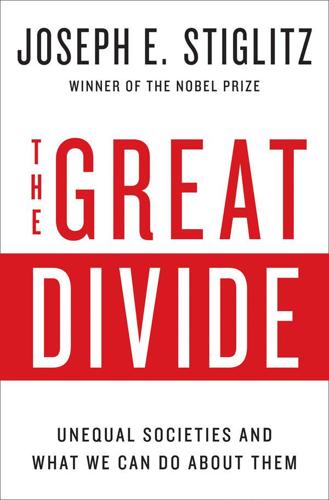
The Great Divide: Unequal Societies and What We Can Do About Them
by
Joseph E. Stiglitz
Published 15 Mar 2015
If Americans believe that government is unfair—that ours is a government of the 1 percent, for the 1 percent, and by the 1 percent—then faith in our democracy will surely perish. ______________ * New York Times, April 14, 2013. GLOBALIZATION ISN’T JUST ABOUT PROFITS. IT’S ABOUT TAXES TOO.* THE WORLD LOOKED ON AGOG AS TIM COOK, THE HEAD OF Apple, said his company had paid all the taxes owed—seeming to say that it paid all the taxes it should have paid. There is, of course, a big difference between the two. It’s no surprise that a company with the resources and ingenuity of Apple would do what it could to avoid paying as much tax as it could within the law. While the Supreme Court, in its Citizens United case, seems to have said that corporations are people, with all the rights attendant thereto, this legal fiction didn’t endow corporations with a sense of moral responsibility; and they have the Plastic Man capacity to be everywhere and nowhere at the same time—to be everywhere when it comes to selling their products, and nowhere when it comes to reporting the profits derived from those sales.
…
These articles were written before the scandals of tax avoidance on a global scale were exposed. At that time, GE was the shining example of a corporate leader that had managed to avoid paying its fair share of taxes. But then the Apple and Google scandals broke out—these Silicon Valley companies, long noted for their ingenuity in technology, had displayed the same ingenuity in tax avoidance. They took advantage of globalization—the ability to move money around the world. Apple claimed that its profits could really be attributed to a few people working in Ireland! Honesty—let alone a sense of fair play—seems a rarer commodity than ingenuity. These companies were willing to take but not to give back: after all, their success depends on the Internet, which was created by government spending.
…
The problem of multinational corporate tax avoidance is deeper, and requires more profound reform, including dealing with tax havens that shelter money for tax evaders and facilitate money-laundering. Google and Apple hire the most talented lawyers, who know how to avoid taxes staying within the law. But there should be no room in our system for countries that are complicitous in tax avoidance. Why should taxpayers in Germany help bail out citizens in a country whose business model was based on tax avoidance and a race to the bottom—and why should citizens in any country allow their companies to take advantage of these predatory countries? To say that Apple or Google simply took advantage of the current system is to let them off the hook too easily: the system didn’t just come into being on its own.
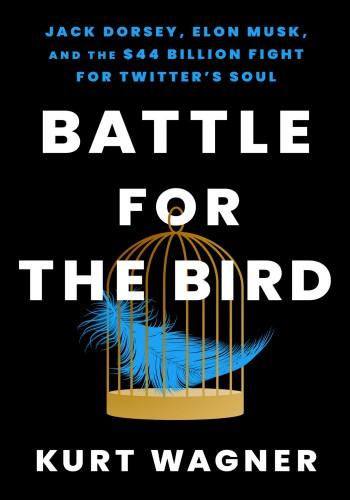
Battle for the Bird: Jack Dorsey, Elon Musk, and the $44 Billion Fight for Twitter's Soul
by
Kurt Wagner
Published 20 Feb 2024
Thank you all, Jack The following month, the president-elect hosted several prominent tech and business executives at Trump Tower in New York City to discuss working together after he was sworn in. The attendees included some of the most powerful people in the world: Amazon CEO Jeff Bezos sat next to Google cofounder Larry Page, who sat next to Facebook COO Sheryl Sandberg. Apple CEO Tim Cook sat to Trump’s left, and just a few feet away sat Tesla CEO Elon Musk. Dorsey didn’t receive an invite. Twitter was undeniably smaller than most of the other companies in attendance that day, but few were more influential, especially for Trump. Back at Twitter’s office, some on the team believed that Dorsey had been snubbed because of the #CrookedHillary advertising incident.
…
accidentally ran it aground: Tony Stubblebine, “What Was It Like to Work with Jack Dorsey on the Early Versions of Twitter?” Quora, https://quorasessionwithcoachtony.quora.com/Tony-Stubblebine-What-was-it-like-to-work-with-Jack-Dorsey-on-the-early-versions-of-Twitter. Apple launched an update: “Apple Takes Podcasting Mainstream,” Apple Newsroom, June 28, 2005, https://www.apple.com/newsroom/2005/06/28Apple-Takes-Podcasting-Mainstream/. Dorsey brought up the status concept: Nick Bilton, “Status,” in Hatching Twitter, 56–59. “having some coffee. heading home. sleep”: Nick Bilton, “Just Setting Up My Twttr,” in Hatching Twitter, 69.
…
II announcing the party in a video recorded by three astronauts floating inside the International Space Station: Shefali Shah Mirakhur (@shahsr), “Best party invite. Ever. @TwitterOneTeam.” Twitter, January 14, 2020, 3:11 p.m., https://twitter.com/shahsr/status/1217222720972378112. Apple hired Lady Gaga: Raymond Wong, “Lady Gaga Performed Private Apple Concert as a Tribute to Steve Jobs,” Mashable SE Asia, May 19, 2019, https://sea.mashable.com/tech/3879/lady-gaga-performed-private-apple-concert-as-a-tribute-to-steve-jobs. that featured an ice sculptor wielding a chain saw: Arielle Pardes and Annie Goldsmith, “The Buzz Is Gone: Tech Companies (with a Few Exceptions) Are Reining in Once-Legendary Holiday Parties,” The Information, December 16, 2022, https://www.theinformation.com/articles/the-buzz-is-gone-tech-companies-with-a-few-exceptions-are-reining-in-once-legendary-holiday-parties.

The Hype Machine: How Social Media Disrupts Our Elections, Our Economy, and Our Health--And How We Must Adapt
by
Sinan Aral
Published 14 Sep 2020
He has resisted governments’ requests to hand over data or build back doors into Telegram’s infrastructure. In the wake of Edward Snowden, Cambridge Analytica, and the release of Netflix’s The Great Hack, the reasons behind Telegram’s meteoric rise seem obvious. Individuals around the world are clamoring for privacy, security, and freedom from surveillance. Tim Cook, the CEO of Apple, was applauded when he resisted the government’s request to crack the San Bernardino shooter’s private iPhone data, and there are certainly important values and protections that must be preserved in privacy rights and data security. But as we found out on November 13, 2015, unrestricted, private, and anonymous communication can aid and abet the darkness in social media as well.
…
More developers wrote software for Windows, and the indirect network effect created by Windows’ large installed base was evident in CompUSA’s endless rows of Windows software that dwarfed the tiny corner devoted to Apple. By 2013, however, the tables had turned. Apple launched the iPhone in 2007 and everyone wanted one. Apple built so much innovation into the iPhone that its intrinsic value alone was enough to get people to buy iPhones en masse. Software was added to the iPhone through applications, or “apps,” and Apple launched the App Store in 2008. As more people bought the iPhone, developers had more incentive to write apps for it. As a result, the iPhone’s adoption curve looks like Mount Everest. The first iPhone was sold in 2007 and by 2013 Apple had sold 400 million of them.
…
If the user base is like a platform’s mass, and network effects are like gravity, Apple’s gravity increased as the iPhone’s mass increased and consumers flocked to the now iconic brand. In contrast, Microsoft’s share of the cell phone market in 2013 was like Apple’s share of CompUSA’s shelves in the 1980s—minuscule. Developers had very little incentive to write apps for Windows phones. Instead, they wrote for Apple. In 2013 there were over five times as many apps for the iPhone as there were for Windows phones. In fact, Apple’s installed base advantage was so large that while developers were clamoring to write apps for the iPhone for free, Microsoft was paying developers over $100,000 a pop for apps written for Windows phones.
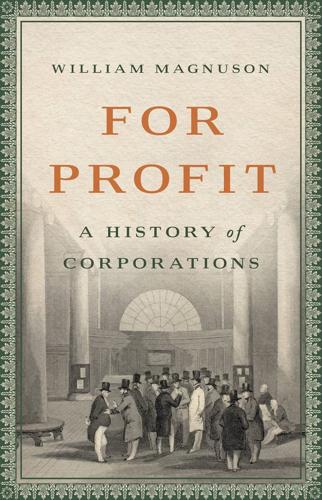
For Profit: A History of Corporations
by
William Magnuson
Published 8 Nov 2022
This is an astounding idea. Not just some information, not just most information, but all information, of all kinds, is somehow instantaneously gathered and beamed into the stock price of a company as soon as it emerges. Apple earned higher profits this year than last? Already incorporated. It’s planning to release a bigger, more powerful iPhone in September? Already incorporated. Tim Cook has a headache this morning and is not responding to his emails? Already incorporated. One of the most important ramifications of the efficient markets theory is that no investor can accurately predict where stock prices will go in the future.
…
But stocks have one great merit and one great flaw. The merit is that they grant their holders limited liability. This is a marvelous power. You own a company, but you are not responsible for what it does. If Apple makes a phone that catches fire, its shareholders don’t have to reimburse the victims. If Apple is found to have violated privacy laws, the shareholders don’t have to pay the fines. If Apple doesn’t pay back its lenders, the shareholders don’t have to make them whole. From the perspective of a capitalist looking to put his money to work, it is hard to beat stocks. You get none of the risk and all of the upside.
…
“It is settled beyond all doubt,” Marx said, “that there is in India a permanent financial deficit, a regular over-supply of wars, and no supply at all of public works, an abominable system of taxation, and a no less abominable state of justice and law, that these five items constitute, as it were, the five points of the East Indian Charter.” To Marx, these evils were not the result of bad apples in the company or mismanagement by its executives. They were the inevitable result of the structure of stocks themselves. “On looking deeper into the framework of this anomalous government, we find at its bottom a third power, more supreme than either the Board [of Control] or the Court [of Directors], more irresponsible, and more concealed from and guarded against the superintendence of public opinion.”
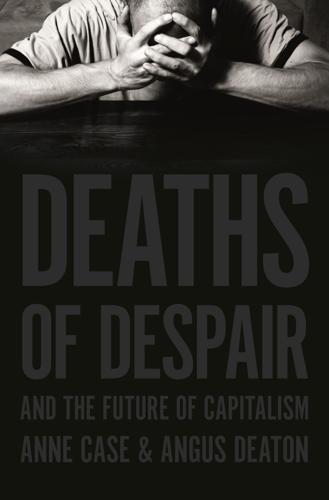
Deaths of Despair and the Future of Capitalism
by
Anne Case
and
Angus Deaton
Published 17 Mar 2020
It is good for great innovators to get rich. Making is not the same as taking. It is not inequality itself that is unfair but rather the process that generates it. The people who are being left behind care about their own falling living standards and loss of community, not about Jeff Bezos (of Amazon) or Tim Cook (of Apple) being rich. Yet when they think the inequality comes from cheating or from special favors, the situation becomes intolerable. The financial crisis has much to answer for. Before it, many believed that the bankers knew what they were doing and that their salaries were being earned in the public interest.
…
These local monopolies are today being challenged by internet streaming; long-standing monopolies are often challenged by new technology. More common than monopoly is oligopoly, where there are only a few sellers, each of which has some control over price. There may be only one Toyota dealer nearby, but dealers of other brands provide imperfect competition. Apple is not the only producer of cell phones, but it has a large number of loyal customers who are unlikely to switch to Samsung, and this enables Apple to set the price of an iPhone far above what it costs to make. Airlines have frequent-flyer schemes designed to make customers reluctant to switch carriers when prices are raised. Oligopolists sometimes collude to keep prices up, implicitly or explicitly.
…
Globalization has aided the shift, both weakening unions and empowering employers,17 and American institutions have helped push this further than elsewhere. Corporations have become more powerful as unions have weakened, and as politics has become more favorable to them. In part, this comes from the phenomenal growth of high-tech firms, such as Apple and Google, that employ few workers for their size and have high profits per worker. This is good for productivity and for national income, but little of the gain is shared by labor, especially by less educated labor. Less positively, consolidation in some American industries—hospitals and airlines are just two of many examples—has brought an increase in market power in some product markets so that it is possible for firms to raise prices above what they would be in a freely competitive market.
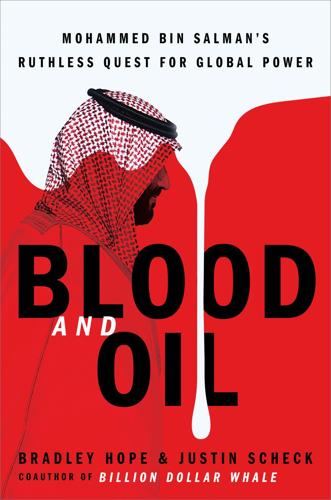
Blood and Oil: Mohammed Bin Salman's Ruthless Quest for Global Power
by
Bradley Hope
and
Justin Scheck
Published 14 Sep 2020
Pecker’s relationship to Trump, rather than the grand plans of the prince, became the focal point for many US pundits. Grine, who preferred to operate on the fringes, was now in the center of an embarrassing uproar that brought lots of publicity and no money. Mohammed continued his visit, meeting executives like Mark Zuckerberg, Bill Gates, and Apple’s Tim Cook. He ate dinner with Jeff Bezos and was photographed with Google founder Sergey Brin wearing his Silicon Valley best: a blazer, dress shoes, and a button-down shirt tucked into dark jeans belted across his broad belly. He sat with Oprah Winfrey, venture capitalist Peter Thiel, and the CEOs of Disney, Uber, and Lockheed.
…
Alwaleed delighted in that image and in representations of his own image, showing visitors to his offices in Riyadh, Paris, and New York thick stacks of magazines with his face on the cover or long interviews about his business career. Some rooms in his homes contained more than a dozen photos or paintings of Alwaleed at different stages of his life. He liked drinking tea from a mug with his face on it. The prince was a force in American business, buying stakes in Citibank, Apple, and Twitter. In a partnership with Bill Gates, Alwaleed’s Kingdom Holding Company owned a chunk of the Four Seasons hotel chain, famed for its luxury accommodations. When he traveled, he brought along a two-dozen-person retinue, including cooks, cleaners, butlers, and business advisors. Yet here he was on a cool November night in 2017, feeling a chill down his spine as he got dressed at his desert retreat for the meeting with the king.
…
A third, a Saudi, was “a professional” who used encryption to conceal his identity, though once he signed in without encryption, and Alzabarah was able to track his IP address. The Twitter engineer realized he was providing valuable information to Mohammed’s men—some of the accounts he was accessing were, the Royal Court suspected, connected to terrorism, and Saudi officials announced a $1.9 million reward to anyone who helped avert an attack. In his private Apple Notes account, Alzabarah drafted language to ask Asaker about whether he could claim that money. Alzabarah spoke by phone with Asaker on June 18 and the next day accessed the Twitter account of Omar Abdulaziz, a Saudi man who had obtained asylum in Canada after the kingdom cut off his schooling in retribution for public critiques of the government and who would form a strong bond with a Saudi journalist and regime critic named Jamal Khashoggi.
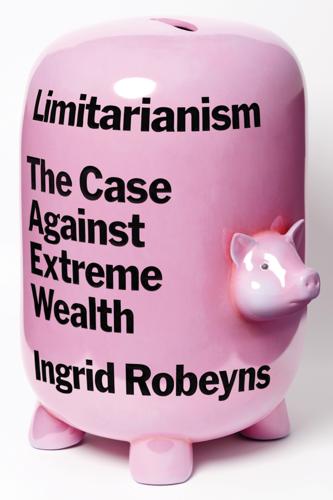
Limitarianism: The Case Against Extreme Wealth
by
Ingrid Robeyns
Published 16 Jan 2024
Recall Jason Hickel, Dylan Sullivan, and Huzaifa Zoomkawala’s estimate that workers in the Global South have lost out on trillions through unequal global trade relations. Not to mention the atrocious treatment of workers in developing economies by rich businesses based in the Global North. How can Tim Cook, the CEO of Apple and who became a billionaire thanks to Apple, sleep peacefully at night knowing about the poor, sometimes horrendous, working conditions endured by men and women in the assembly line of Apple’s Chinese factories? There are plenty of companies which make considerable profits and whose shareholders get a very nice return on their investments, yet which have, in the process, violated the human rights of their workers, or others in the supply chain, or who have degraded the local environment or even the planet.
…
As the Italian-British economist Mariana Mazzucato has shown in her book The Entrepreneurial State, many entrepreneurs who have made fortunes have relied on innovations that were originally funded by the government—and hence by all of us as taxpayers and as citizens who shape the agenda through our votes. For example, many of the tech companies that have created billionaires—such as Google and Apple—depend for their success on technologies that can be traced back to state support, including, most famously, the internet itself. It is doubtful whether, without governments across countries investing in research with the common good in mind, any of today’s tech billionaires, from Sergey Brin and Larry Page to Bill Gates, would ever have become so wealthy and successful.25 This point has been readily grasped by many of the scientists who have developed medicines and technologies that have benefited humanity hugely.
…
Index affluenza 194 air travel/aviation industry 101 air traffic controllers strike, US (1981) 33 climate change and 98, 100, 101–3, 110, 114 private jets 11, 101, 103, 115 Alazrak, Yahya 32 Allen, Robert 19, 20 Amazon (online retailer) 58–60, 65, 135 American Dream 156, 205, 217 American Dream and Other Fairy Tales, The (documentary) 156, 21 Antigua National Development Fund 78 Apple 136, 137 Arab Spring (2011) 191 Ariely, Dan 204 Arnault, Bernard xi assassination 23 assets xi, 4, 12–13, 37, 66, 68, 70, 78, 120, 122, 130, 147, 172, 200 Atkinson, Anthony 220–1, 226; Inequality: What Can be Done? 220 Atlantic 172 Atmosfair 107 attribution bias 129, 174 Auschwitz concentration camp 44 austerity measures 92, 156, 217 Axelsen, David xxii Baal, Mark van 96–7 balance of economic power 219–21 basic income 138, 150–2, 174, 178, 213 Basic Income Grant (BIG) Coalition 150 Benetton 58 Bentham, Jeremy 146 Berlusconi, Silvio 51–2 Beurden, Ben van 6–7 Bezos, Jeff xi, 58, 59, 60, 136, 147, 181, 194, 213 Bhopal disaster (1984) 55–6 Biden, Joe 79, 88, 96 big government 169–72 Bill & Melinda Gates Foundation 18, 181 biodiversity crisis 115, 158, 211, 228 Black Lives Matter movement 191–2 Blair, Tony 38 Bloomberg 58 Bolsa Familia (Family Allowance) 152 Bouazizi, Mohamed 191 Boushey, Heather 39 BP 96 Branson, Richard 181 Brexit 87 Brin, Sergey 137 Brown University 46 Buffet, Warren 165 Buiter, Willem 35 Business & Human Rights Resource Centre 136 business practices, harmful 52 Cambridge University 49, 174 Cameron, David 87 capital addiction to accumulation of 16 capital flight 222 capital gains 28, 37, 161 climate disaster and 94 deregulation and 210 human capital 216 inheritance and see inheritance limiting income from 224–5 returns on 4 social capital 138 taxing 69, 70, 222, 225–6 trickle-down effect and 38 venture-capital 159, 188 capitalism alternative economic systems and 208–14 see also individual system name neoliberal and see neoliberalism poverty and 19, 20–21 predatory 57 success in game of, 6 transnational capitalist class 92 carbon emissions 100–10 allowance/budget 98, 102, 105, 107, 109, 110–11, 112 offsetting 101, 102, 107 rich people and levels of 101–4 Carnegie, Andrew 123 CBS xxv CDA (Dutch Christian-democratic party) 81 CEO (Chief Executive Officer) 39, 66 climate change and 106 luck and 130 pay 3, 6, 126, 127, 128, 133, 142, 145, 205–6, 221, 224 tax and 67, 86, 93 Cerrulli Associates 121 Chancel, Lucas 100, 107 Chang, Ha-Joon 21 charity 167, 175, 185 Chauvin, Derek 191 Chevron 96 childcare xv, 11, 127, 133, 177 child mortality rates 18, 21 Children’s Place 58 Childres, Hody 157 China 2, 20, 24, 25, 99 Chomsky, Noam 23, 35, 172 Chouinard, Yvon xxiii, 218; Let My People Go Surfing 180 Christiano, Thomas 82 “chumocracy” scandal, UK (2020) 52 citizenship commodification of 77–8 democratic 217, 219 civil rights 30 class awareness of 30 dominant class 29, 33, 93, 140, 145, 147, 154, 204 see also super-rich existence of questioned 31 middle class see middle class political candidates and 82 poor or impoverished 29 the rich 29, 32 see also rich, the segregation 30, 217–8 terminology 29–31 transnational capitalist class/Davos class 91–3 working or disadvantaged class see working class Clean Clothes Campaign 58 Clegg, Nick xxi climate change 16, 95, 96–116, 143, 158, 177, 178, 179, 188, 228 air travel/aviation industry and 102 carbon emissions see carbon emissions denialism 90, 104–6, 113 distributive justice and 106 drought and 99 extreme wealth and climate safety, relationship between 96–106 flooding and 99, 113 food consumption and 108 green transition 105–16 greenwashing 115 hunger/famine and 99 moral issue 106 oil company profits 96 Paris Climate Agreement and 104 Patagonia and xxiii philanthropy and 175 polluter pays principle 103–4, 106 refugees 79 shared spaces and 109 tax and 102–3, 110, 112, 114, 115, 116 wildfires and 99, 105 codetermination system 220 Cohen, G.

Them and Us: How Immigrants and Locals Can Thrive Together
by
Philippe Legrain
Published 14 Oct 2020
Accessed on 24 January 2020 at https://www.ons.gov.uk/peoplepopulationandcommunity/populationandmigration/populationestimates/bulletins/annualmidyearpopulationestimates/mid2018#local-population-change 28 Jonathan Wadsworth, ‘Mustn’t Grumble: Immigration, Health and Health Service Use in the UK and Germany’, Fiscal Studies, 34:1, 2013, pp. 55–82. https://www.ifs.org.uk/publications/6628 29 Carlos Vargas-Silva, Osea Giuntella and Catia Nicodemo, ‘The effects of immigration on NHS waiting times’, Journal of Health Economics, 58, March 2018, pp. 123–43. https://doi.org/10.1016/j.jhealeco.2018.02.001 30 Charlotte Geay, Sandra McNally and Shqiponja Telhaj, ‘Non-Native Speakers of English in the Classroom: What are the Effects on Pupil Performance’, Centre for the Economics of Education discussion paper 137, 2012. http://cee.lse.ac.uk/ceedps/ceedp137.pdf 31 Simon Burgess, ‘Understanding the success of London’s schools’, CMPO Working Paper 14/333, October 2014. http://www.bristol.ac.uk/media-library/sites/cmpo/migrated/documents/wp333.pdf 32 Jennifer Hunt, ‘The Impact of Immigration on the Educational Attainment of Natives’, Journal of Human Resources, 52:4, Fall 2017, pp. 1060–118. http://jhr.uwpress.org/content/52/4/1060.short 33 Asako Ohinata and Jan C. van Ours, ‘Spillover Effects of Studying with Immigrant Students: A Quantile Regression Approach’, IZA Discussion Paper 7720, November 2013. http://ftp.iza.org/dp7720.pdf 34 In 2012, 37 percent of pharmacists, 35 percent of medical practitioners, 35 percent of dental practitioners and 22 percent of nurses in the UK were foreign-born, according to ONS data reported in World Health Organisation, ‘Migration of Health Workers’, 2014. http://www.who.int/hrh/migration/14075_MigrationofHealth_Workers.pdf#page=173 35 Marie Mccullough, ‘Nearly 1 in 3 US physicians were born abroad’, Medical Xpress, 5 December 2018. https://medicalxpress.com/news/2018-12-physicians-born.html 36 World Health Organisation, ‘Migration of Health Workers’, 2014. https://www.who.int/hrh/migration/14075_MigrationofHealth_Workers.pdf?ua=1 37 Joel Negin, Aneuryn Rozea, Ben Cloyd and Alexandra LC Martiniuk, ‘Foreign-born health workers in Australia: an analysis of census data’, Human Resources for Health, 11:69, 2013. https://www.ncbi.nlm.nih.gov/pmc/articles/PMC3882294/ 38 Tim Cook, Emira Kursumovic and Simon Lennane, ‘Exclusive: deaths of NHS staff from covid-19 analysed’, HSJ, 22 April 2020. https://www.hsj.co.uk/exclusive-deaths-of-nhs-staff-from-covid-19-analysed/7027471.article 14 Development Dividend 1 ‘HBO History Makers Series with Mo Ibrahim’, Council on Foreign Relations, 9 October 2013. https://www.cfr.org/event/hbo-history-makers-series-mo-ibrahim 2 London Business School, ‘Profile: Mo Ibrahim, Chairman and Founder, Mo Ibrahim Foundation & Celtel International’, YouTube, 24 June 2011. https://www.youtube.com/watch?
…
And as skilled workers both compete and collaborate, spread ideas and spark new ones, so productivity, pay and profits tend to prosper. Chapter 10 looks in more detail at how diverse workplaces stimulate innovation, generating a diversity dividend. Such virtuous circles are what make open cities and regions thrive. In Silicon Valley, the home of Apple, Google, Facebook and so many other companies that epitomise America’s technological prowess, six in ten highly skilled technology workers are foreign-born.12 Apple’s iconic iPhone was designed by a Brit, Jony Ive. Hugo Barra, who led Google’s Android mobile phone operating system division and now runs Facebook’s Oculus virtual reality division, is Brazilian. Ajay Bhatt, the chief technologist at chipmaker Intel and co-inventor of USB (Universal Serial Bus, a standard computer interface), was born in India.
…
As of 2016, immigrants had also co-founded more than half of the US’s eighty-seven unicorns, as start-ups valued at $1 billion (£770 million) or more are known.2 One unicorn, valued at $13 billion (£10 billion), is DoorDash, the country’s fastest-growing meal-delivery app and a lifeline for millions of Americans during coronavirus lockdowns, which was founded by Tony Wu, who moved to the US from China as a child.3 Across the entire US, nearly three in eight new businesses have at least one immigrant founder.4 Newcomers’ children have an outsized impact too. Apple’s Steve Jobs had a Syrian-born father. Fourteen of America’s twenty-five most valuable tech companies were co-founded by migrants or their children.5 Overall, immigrants co-founded 101 of the Fortune 500 most valuable listed companies in the US and their children 122, so an astonishing 45 percent in total.6 Those firms had $6.1 trillion (£4.7 trillion) in revenues and employed 13.5 million people.
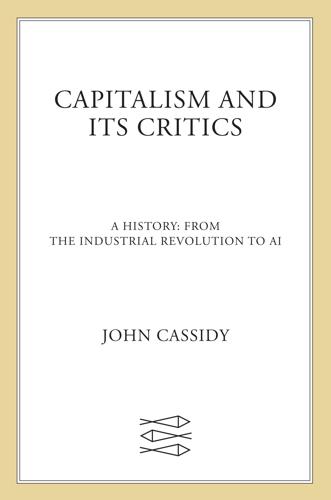
Capitalism and Its Critics: A History: From the Industrial Revolution to AI
by
John Cassidy
Published 12 May 2025
After decades of financialization in the United States and other Anglo-Saxon economies, the path to megariches that Disney’s Michael Eisner, General Electric’s Jack Welch, and others had established in the 1990s was by now a well-trodden one. In 2011, Tim Cook, Apple’s CEO, received salary, stock options, and other benefits worth $378 million:16 6,258 times the annual wages of an average Apple employee.17 Such gargantuan payouts were justified on the grounds that the CEO’s job was to create “shareholder value,” which Apple had certainly done. (Between December 2001 and December 2014, its stock price had risen nearly a hundredfold.) The triumph of the shareholder value movement was by this stage so complete that few people pointed out that its origins were relatively recent, or that one of its original promoters, the economist Michael Jensen, had expressed misgivings about some of its consequences.
…
Coleridge, Samuel Taylor Colombia colonialism; in Africa; British, see British colonies; decolonization; in dependency theory; economic impact of; extractive; French; Furtado on; Lenin on; Luxemburg on; poverty and; Smith on; Spanish; see also imperialism Columbia University Columbus, Christopher Combination Acts Comintern Commager, Henry Steele Commanding Heights, The (documentary series) Commanding Heights, The (Yergin and Stanislaw) Commerce, US Department of Commercial and Financial Chronicle, The communism; capitalist development necessary for; Kumarappa on; Marx and Engels’s definition of Communist International (Comintern) Communist League Communist Manifesto, The (Marx and Engels); bourgeoisie in; Capital and; class war in; commercial crises in; globalization in; immiseration in; industrialization in; living standards in; overproduction in; printing of; proletariat in; underlying assumption of; writing of Communist Party of Germany (KPD) competition; corporations and; decline of; elimination of; foreign; perfect; Robinson on; Social Darwinists and; within classes Condition of the Working Class in England, The (Engels) Congo (Belgian) Congress Party Conjuncture Institute Conservative Party Considérant, Victor Prosper Considerations on India Affairs (Bolts) conspicuous consumption conspicuous waste Constant, Alphonse Constitution, US; Nineteenth Amendment to; Sixteenth Amendment to Constitutional Democratic Party Constitution of Liberty, The (Hayek) consumer choice consumerism Consumer Product Safety Commission consumption; conspicuous; social pressures on; underconsumption Contemporary Review, The contraceptives Contribution to the Critique of Political Economy, A (Marx) convergence, forces of Cook, Tim Cooke, Jay Cooper, Peter Cooperative and Economical Society cooperative communities; Fourier and; Owen and; Thompson and; Tristan and; women and Co-operative Congress Co-operative Magazine Cooper Union Coors, Joseph Corbyn, Jeremy CORE Econ Corn Laws coronavirus pandemic corporations; CEOs of; industry domination by; joint-stock; profits of; recapitalization in cost-benefit analysis cotton industry; in the Americas; in Britain; child workers in; female workers in; in India; slavery and; technological advancements in Cotton Mill and Factories Act Council of Economic Advisers coverture Coxey, Jacob Crafts, Nicholas creative destruction credit Creditanstalt Crédit Mobilier Crisis Crisis of Liberalism, The (Hobson) Cromford Mill Crompton, Samuel Cromwell, Oliver croppers Crosland, Anthony Cuba cultural values and institutions Cumberland Militia Cummings, John currencies; dollar; exchange rates and; gold standard and Czechoslovakia Dachau concentration camp Daedalus Daily Times Dale, Gareth Dalla Costa, Mariarosa Dalrymple, William Daly, Herman E.
…
Alan Travis, “Thatcher Had Secret Plan to Use Army at Height of Miners’ Strike,” The Guardian, January 3, 2014, https://www.theguardian.com/politics/2014/jan/03/margaret-thatcher-secret-plan-army-miners-strike. 21. Our World in Data, “Employment in the Coal Industry in the United Kingdom,” August 17, 2020, https://ourworldindata.org/grapher/employment-in-the-coal-industry-in-the-united-kingdom. 22. R. W. Apple Jr., “Macmillan, at 90, Rouses the Lords,” The New York Times, November 14, 1984. 23. Simon Lewis, “How Union Membership Has Grown—and Shrunk,” The Guardian, April 30, 2010, https://www.theguardian.com/news/datablog/2010/apr/30/union-membership-data. 24. William Keegan, “This Is Not the 1970s.

The Lonely Century: How Isolation Imperils Our Future
by
Noreena Hertz
Published 13 May 2020
Neoliberal capitalism, with its ‘minimum state, maximum markets’ approach, has never provided assurances on either. And this isn’t just a project for government – businesses and their leaders also need to step up. Indeed, it was partly in recognition of this that in August 2019 the Business Roundtable, a group of influential chief executives of leading US corporations including Amazon’s Jeff Bezos, Apple’s Tim Cook and Citigroup’s Michael Corbat,22 jettisoned Milton Friedman’s longstanding principle that the only business of business was to serve its shareholders,23 pledging instead to serve all its stakeholders – shareholders, yes, but also suppliers, communities and employees who it promised to ‘compensat[e] fairly and provid[e] important benefits’, as well as foster ‘diversity and inclusion, dignity and respect’.24 Whilst I welcome this sentiment and hope that such rhetoric will translate into meaningful action, the reality is that unless the pressure on companies to generate short-term financial returns is alleviated and their executives’ incentives not tied to this, the focus on narrowly defined ‘return to shareholders’ will likely continue to dominate, especially in the case of publicly traded companies.
…
Collis, ‘Dogs as catalysts for social interactions: Robustness of the Effect’, British Journal of Psychology 91, no. 1 (February 2000), 61–70, https://doi.org/10.1348/000712600 161673. 40 Abha Bhattarai, ‘Apple wants its stores to become “town squares.” But skeptics are calling it a “branding fantasy”’, Washington Post, 13 September 2017, https://www.washingtonpost.com/news/business/wp/2017/09/13/apple-wants-its-stores-to-become-town-squares-but-skeptics-call-it-a-branding-fantasy/. 41 Andrew Hill, ‘Apple stores are not “town squares” and never should be’, Financial Times, 17 September 2017, https://www.ft.com/content/8c5d4aec-988f-11e7-a652-cde3f882dd7b. 42 Julia Carrie Wong, ‘Pepsi pulls Kendall Jenner ad ridiculed for co-opting protest movements’, Guardian, 6 April 2017, https://www.theguardian.com/media/2017/apr/05/pepsi-kendall-jenner-pepsi-apology-ad-protest. 43 See original tweet at: https://twitter.com/BerniceKing/status/849656699464056832?
…
And although big corporations are starting to recognise the value of community as a brand proposition, the authenticity of their offerings can at times be highly questionable. In 2017, for example, Apple rebranded its shops as ‘Town Squares’.40 Sounds good in theory yet all that seems to mean in practice is renaming its product aisles ‘avenues’, its presentation spaces ‘forums’ and its technician desks ‘groves’: a ‘lexical takeover’ that doesn’t just co-opt the actual civic spaces those words represent, but marks a concerning trend away from true public ownership of those types of spaces, as Andrew Hill of the Financial Times points out. ‘The very nature of how people use most Apple products – head down, AirPods in – is at odds with the look-up, look-around, listen-out ethos of the town square,’ he writes.41 That same year, critics pounced on the similarly misguided blending of capitalist and activist premises in the now-infamous TV advert that featured a denim-clad Kendall Jenner diffusing police-protester tension with a can of Pepsi.42 ‘If only Daddy would have known about the power of #Pepsi,’ Bernice King, the daughter of US civil rights leader Reverend Martin Luther King Jr. tweeted sarcastically.43 Pepsi initially insisted that the advert was meant to highlight ‘people from different walks of life coming together in a spirit of harmony’, but in appropriating the language and even the aesthetic of communities engaged in protest the company showed that in reality it had no idea what those communities were fighting for, nor did it care.44 It just wanted to sell more Pepsi.
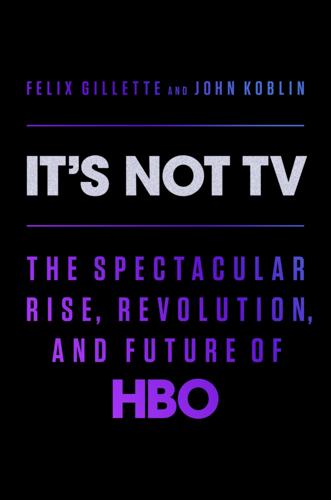
It's Not TV: The Spectacular Rise, Revolution, and Future of HBO
by
Felix Gillette
and
John Koblin
Published 1 Nov 2022
At that moment, HBO would not, as the saying goes, learn to code. On the morning of March 9, 2015, inside the Yerba Buena Center for the Arts in San Francisco, Apple CEO Tim Cook strode onto the stage. In front of a packed crowd of hooting Apple supporters, he took a moment to praise the cantilevered second floor of a new Apple store in Hangzhou, China. “It’s absolutely breathtaking,” Cook said. A few minutes later he noted that Apple TV was adding more programming from “all of the leading content providers,” including a new channel from HBO. Plepler walked out onstage. He was wearing a dark suit and crisp white shirt, spread wide open at the neckline.
…
A few days later, Brindle and her colleague Bernadette Aulestia, a top HBO executive in distribution, met with MLB Advanced Media at their offices in Manhattan’s Chelsea Market—the former home to HBO’s Oz, which in recent years had been transformed into a posh hub of New York City’s growing tech scene. There, Gersh and CEO Robert Bowman delivered their pitch. “We walked out and were like, yep, that’s our solution,” Brindle says. Meanwhile, Plepler was drifting further away from his Seattle team and into the gravitational pull of the Apple-centric universe, at one point meeting with Eddy Cue, the head of Apple’s digital media business. Together, they hatched a dramatic plan for bringing HBO’s new direct-to-consumer experience into the world. In early December, HBO confirmed reports that it was scrapping Project Halley and hiring MLB Advanced Media. The plan was to ensure that HBO Now would be ready to stream the opening day of Game of Thrones in the spring.
…
GO TO NOTE REFERENCE IN TEXT The company ended 2005: Gina Keating, Netflixed (New York: Portfolio/Penguin, 2012), 163–64. GO TO NOTE REFERENCE IN TEXT companies including Amazon: Elizabeth M. Gillespie, “Amazon.com Launches Long-Awaited TV, Movie Download Service,” Associated Press, September 8, 2006. GO TO NOTE REFERENCE IN TEXT and Apple preparing: Byron Acohido, “Apple Beats Amazon to Punch with Movie Downloads,” USA Today, September 6, 2006. GO TO NOTE REFERENCE IN TEXT Netflix looked vulnerable: Michael Liedtke, “Netflix Lowers Its Online Video Rental Fees,” Associated Press, July 22, 2007. GO TO NOTE REFERENCE IN TEXT By any measure, Comcast: The Lazard Report, Time Warner Inc., February 1, 2006.

Don't Burn This Book: Thinking for Yourself in an Age of Unreason
by
Dave Rubin
Published 27 Apr 2020
Seriously. Nothing is holding you or anyone else back. Especially not straight white men. Not only are minorities some of the most famous and successful players in Hollywood, they are also among the most powerful people in our country’s leading industries. Take, for instance, openly gay CEO of Apple Tim Cook (net worth $500 million); female CEO of YouTube Susan Wojcicki (net worth $500 million); and CEO of General Motors Mary Barra (net worth $60 million). This is part of why Jay-Z (a black man, in case you’d forgotten) is now hip-hop’s first billionaire and why Rihanna (a black immigrant from Barbados) was recently named the world’s richest female musician with a wealth of $600 million.
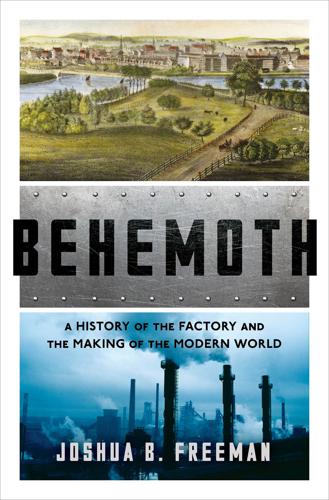
Behemoth: A History of the Factory and the Making of the Modern World
by
Joshua B. Freeman
Published 27 Feb 2018
Even more important, just-in-time production avoids the possibility of being stuck with piles of outdated cell phones, laptops, or sneakers in what are essentially fashion industries. Tim Cook—the Apple executive who masterminded the company’s shift from in-house production to contracting out before succeeding Steve Jobs as CEO—once called inventory “fundamentally evil.” “You kind of want to manage it like you’re in the dairy business. If it gets past its freshness date, you have a problem.”44 Foxconn and Pegatron keep Apple’s milk fresh by rapidly mobilizing hundreds of thousands of young, poorly paid Chinese workers, often under harsh conditions (perhaps closer to evil than inventory).
…
Lüthje, “Electronics Contract Manufacturing,” 230 (Nishimura quote); Marcelo Prince and Willa Plank, “A Short History of Apple’s Manufacturing in the U.S.,” The Wall Street Journal, Dec. 6, 2012, http://blogs.wsj.com/digits/2012/12/06/a-short-history-of-apples-manufacturing-in-the-u-s/; Peter Burrows, “Apple’s Cook Kicks Off ‘Made in USA’ Push with Mac Pro,” Dec. 19, 2013, http://www.bloomberg.com/news/articles/2013-12-18/apple-s-cook-kicks-off-made-in-usa-push-with-mac-pro; G. Clay Whittaker, “Why Trump’s Idea to Move Apple Product Manufacturing to the U.S. Makes No Sense,” Popular Science, Jan. 26, 2016, http://www.popsci.com/why-trumps-idea-to-move-apple-product-manufacturing-to-us-makes-no-sense; Klein, No Logo, 198–99. 40.Vanderbilt, Sneaker Book, 90–99; New York Times, Nov. 8, 1997; Klein, No Logo, 197–98, 365–79; Donald L.
…
Steele, “As Apple Grew, American Workers Left Behind,” Nov. 16, 2011, http://americawhatwentwrong.org/story/as-apple-grew-american-workers-left-behind/; David Pogue, “What Cameras Inside Foxconn Found,” Feb. 23, 2012, http://pogue.blogs.nytimes.com/2012/02/23/what-cameras-inside-foxconn-found/. 41.Lüthje, “Electronics Contract Manufacturing,” 231, 234, 236–37; Boy Lüthje, Stefanie Hürtgen, Peter Pawlicki, and Martina Sproll, From Silicon Valley to Shenzhen: Global Production and Work in the IT Industry (Lanham, MD: Rowman & Littlefield, 2013), 69–149; Appelbaum, “Giant Transnational Contractors,” 71–72. 42.For the container revolution, see Marc Levinson, The Box: How the Shipping Container Made the World Smaller and the World Economy Bigger (Princeton, NJ: Princeton University Press, 2006). 43.David Barboza, “In Roaring China, Sweaters Are West of Socks City”; Oliver Wainwright, “Santa’s Real Workshop: The Town in China That Makes the World’s Christmas Decorations,” The Guardian, Dec. 19, 2014, https://www.theguardian.com/artanddesign/architecture-design-blog/2014/dec/19/santas-real-workshop-the-town-in-china-that-makes-the-worlds-christmas-decorations. 44.Ngai et al., “Apple, Foxconn, and Chinese Workers’ Struggles,” 169; Wall Street Journal, July 22, 2014; Adam Starariano and Peter Burrows, “Apple’s Supply-Chain Secret? Hoard Lasers,” Bloomberg Businessweek, Nov. 3, 2011, http://www.bloomberg.com/news/articles/2011-11-03/apples-supply-chain-secret-hoard-lasers; and Adam Lashinsky, “Apple: The Genius Behind Steve,” Fortune, Nov. 24, 2008, http://fortune.com/2008/11/24/apple-the-genius-behind-steve/ (Cook quote). 45.In 2004, Foxconn employed five thousand engineers in Shenzhen alone.
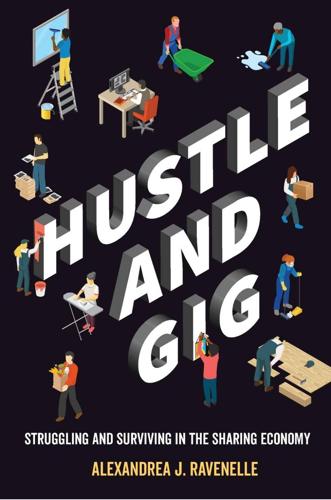
Hustle and Gig: Struggling and Surviving in the Sharing Economy
by
Alexandrea J. Ravenelle
Published 12 Mar 2019
Design: The Invention of Desire. New Haven, CT: Yale University Press. Henwood, Doug. 2015. “What the Sharing Economy Takes.” The Nation, January 27. Higgins, Michelle. 2013. “The Get-into-School Card.” New York Times, May 3. Higgins, Tim, Joseph Ciolli, and Callie Bost. 2014. “Apple Inc. Market Cap Tops US$700B, Double What It Was When Tim Cook Took Over as CEO.” Bloomberg News, November 25. Hill, Steven. 2015a. Raw Deal: How the “Uber Economy” and Runaway Capitalism Are Screwing American Workers. New York: St. Martin’s Griffin. ———. 2015b. “The Unsavory Side of Airbnb.” American Prospect, October 15. Hirsch, Barry T., and Edward J.
…
All gig economy workers would be employees. A worker on Upwork, who is monitored via webcam or keystroke software, would not be covered by the pajama rule and so would be an employee. This model is not revolutionary: even in the tech industry, full-time and part-time workers for Google, Facebook, Apple, and Microsoft are hired as employees with workplace protections and benefits. The default in many fields is to be hired as an employee, with some entrepreneurial individuals seeking to go into business for themselves as independent consultants and contractors. Even workplaces that are part of the gig economy, such as Uber, TaskRabbit, Airbnb, Munchery, and Kitchensurfing, pay their professional workers as employees.
…
“Taxi Cab Syndrome: A Review of the Extensive Genitourinary Pathology Experienced by Taxi Cab Drivers and What We Can Do to Help.” Review of Urology 16(3):99–104. Mathews, Joe. 2014. “The Sharing Economy Boom Is about to Bust.” Time, June 27. http://time.com/2924778/airbnb-uber-sharing-economy/. May, Patrick. 2015. “Apple Says It’s Created 1 Million Jobs, App Store Is Going Gangbusters.” San Jose Mercury News, January 8. McAfee, Andrew. N.d. “The Great Decoupling of the US Economy.” Andrew McAfee (website). http://andrewmcafee.org/2012/12/the-great-decoupling-of-the-us-economy/. McAfee, Andrew, and Erik Brynjolfsson. 2017.

Mbs: The Rise to Power of Mohammed Bin Salman
by
Ben Hubbard
Published 10 Mar 2020
Cisco Systems signed a preliminary agreement to upgrade the kingdom’s digital infrastructure. Microsoft signed on to a program to train young Saudis. Dow Chemical received a license, billed as the first ever, allowing it to operate in the kingdom without a Saudi partner. MBS got sit-downs with Tim Cook of Apple and Mark Zuckerberg of Facebook. Photos of the young prince in jeans and a sport coat trying out a virtual reality headset at Facebook headquarters zinged around the kingdom, convincing many young Saudis that this prince was indeed different from the others. In his meetings, MBS pitched a bright future for Saudi Arabia and argued that authoritarianism would help bring it about.
…
MBS has never publicly discussed when he began plotting his political career, but he has talked about his desire to be a new kind of ruler, one who disrupted the old order like the giants of Silicon Valley, instead of one who followed the traditional ways. “There’s a big difference,” he said. “The first, he can create Apple. The second can become a successful employee. I had elements that were much more than what Steve Jobs or Mark Zuckerberg or Bill Gates had. If I work according to their methods, what will I create? All of this was in my head when I was young.” King Abdullah, however, saw MBS as an upstart whose experience fell far short of his ambitions.
…
Salman was dressed like “a Wall Street banker,” Westphal recalled, and made sure that those giving the tour explained everything to his son, who jotted down copious notes on a small pad. That was MBS, and Westphal was intrigued. “There is something very special about this young guy,” he thought. “There was no question that he was the apple of his father’s eye.” King Abdullah was busy and often ill, so Westphal frequently visited Salman and noticed MBS, usually standing to the side but never speaking. So Westphal requested a meeting with the young prince and got the impression that MBS was excited, because no one as prominent as a U.S. ambassador had ever asked to meet him before.

Off the Rails: 10,000 Km by Bicycle Across Russia, Siberia and Mongolia to China
by
Chris Hatherly
and
Tim Cope
Published 31 Aug 2013
The only difference was that it had turned during the night and was now coming from the opposite direction. The anchor line tied to Tim’s bike was useless and the tent was flapping crazily about our heads. We crawled out into the freezing gloom of pre-dawn and found that, once again, our water bottles had iced over. We huddled over the roaring, belching diesel stove as Tim cooked breakfast. Then I packed up and set out – riding in all my clothes – while Tim sheltered out of the wind behind his bike to watch the sunrise and update his diary. About mid-morning I was startled out of a daydream by the sound of galloping horse hooves. I pulled on the brakes and looked up to see a young Mongolian man in traditional dress grinning curiously down at me.
…
He chuckled again and waved an arm expansively in the direction of the featureless plains to the east. ‘There are lots of tracks out there, boys. I’m sure that one of them might take you to Ulaan Ule, but which it is, I cannot say.’ He said goodbye, his wife gave us a couple of fat, red apples and they drove off, leaving us in a cloud of dust. We discussed the situation briefly, crunched the delicious juicy apples, then pedalled on – still towards China – and ready to take the first turnoff we could find. Later that afternoon I sat at yet another junction in the wheel-tracks and waited for Tim. We’d turned off the road onto a track that had quickly dwindled and split up into many tracks.
…
The world was again a three-dimensional picture with millions of shades of colours. By comparison winter had been like a black and white graphic in low resolution. Even Chris’s face underwent a dramatic change. He had often looked pale and sallow in the grey light, but now, almost overnight, his cheeks shone like shiny polished apples. East of Kirov the forest parted to reveal a series of open fields – green grassy pastures! The transformation had been so quick. A newly arrived tourist from the southern hemisphere would have wondered what all the fuss was over winter. There was absolutely no trace of the cold. Despite the change we were not yet free of the legacy of winter.
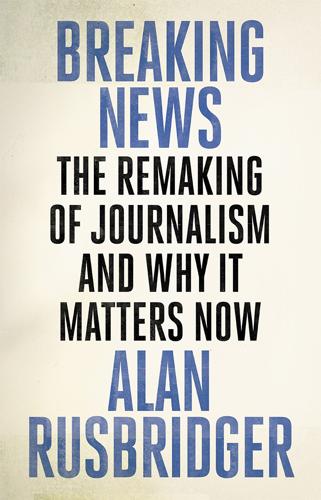
Breaking News: The Remaking of Journalism and Why It Matters Now
by
Alan Rusbridger
Published 14 Oct 2018
The Republican congressman who wrote the Patriot Act declared himself appalled it should have been used in ways he never intended. Jim Sensenbrenner54 wrote that the Act was never intended to hand the US government the kind of powers Snowden revealed it had awarded itself. Silicon Valley chief executives, including Apple’s Tim Cook, visited the Guardian to discuss the issue. There was also a memorable Guardian private dinner in Davos attended by Eric Schmidt from Google; inventor of the world wide web, Tim Berners-Lee; the boss of Vodafone, Vittori Colao; former Swedish prime minister Carl Bildt; the founder of LinkedIn, Reid Hoffman; and Fadi Chehadé, CEO of the body charged with co-ordinating the internet.
…
The editor, Andy Coulson, had resigned – he was now on his way to Downing Street as the media adviser to David Cameron – and the official story from News International was that Goodman had been a rotten apple: his phone hacking was a one-off. Nick was here to tell me this story was not true. He’d been contacted by a source who had met him in a hotel room. This person told him that the idea that Goodman was the only person to hack phones was a joke. Loads of reporters were at it: it was how the News of the World had won so many awards. Hacking phones was the system, not an aberration. I listened with interest and a faintly raised heartbeat. Nick’s voice lowered more. The police knew this at the time Goodman had been singled out as a rotten apple, but had done nothing about it.
…
This one was not necessarily mad, but it was heartfelt. The digital world was going to divide between open and closed. We were at a fork in the road. The tech world could see it in the differing approaches of Google versus Apple: for them it was an article of faith that open would always beat closed. The Columbia Law School professor Tim Wu was to write about this argument later, questioning whether (in the wake of a golden period by Apple) it was still true. His conclusion: ‘closed can beat open, but you have to be genius. Under normal conditions, in an unpredictable industry, and given regular levels of human error, open still beats closed.’

Evil Geniuses: The Unmaking of America: A Recent History
by
Kurt Andersen
Published 14 Sep 2020
*5 At the beginning of the Great Depression, when the young Burns taught economics at Rutgers University, one of his most devoted students was Milton Friedman. *6 Not-so-fun fact: In 2019, nearly half a century after the Business Roundtable formed, no less than 83 percent of its 182 CEO members—among them its chairman Jamie Dimon, Jeff Bezos, Tim Cook, Michael Dell, and Stephen Schwarzman—were still white men. *7 Not until 1994 did the Times run an article all about the Kochs, and then almost entirely about their business—it included just two paragraphs (of sixty) about their two decades of world-changing political work. *8 The majority opinion in this second case, First National Bank of Boston v.
…
The one genuinely new pop cultural genre, hip-hop, made an explicit, unapologetic point of quoting old songs. Science fiction, the cultural genre that is all about imagining the future, got a new subgenre in the 1990s that was considered supercool because it was set in the past—steampunk. And commercialized futurism also became oddly familiar and nostalgic. Apple devices of the twenty-first century and glassy, supersleek Apple stores feel “contemporary” in the sense that they’re like props and back-on-Earth sets from 2001: A Space Odyssey, the 2000s as they were envisioned in the ’60s, the moment before nostalgia took over everything. The nostalgia division of the fantasy-industrial complex began merchandising in precincts beyond entertainment, from fake-old cars like Miatas and PT Cruisers to retail chains like Restoration Hardware selling stylish fake-old things.
…
In 1962, when GM made most of the cars sold in America and AT&T manufactured and operated all the telephones, the two together employed more than a million people, one out of sixty American workers, each of whom generated revenues for the companies equivalent to $170,000. Today Apple and Google have revenues and profit margins twice as high as GM and AT&T had in 1962, but together employ only a quarter-million people, just one out of six hundred American workers. Thus those newer companies, in constant dollars, collect twelve times as much revenue per employee, and they earn twenty times as much profit in all. The market value of Apple, Google, Facebook, and Microsoft combined is nearly 10 percent of the value of all public companies, yet those four employ only a small fraction of one percent of the U.S. workforce.

Valley of Genius: The Uncensored History of Silicon Valley (As Told by the Hackers, Founders, and Freaks Who Made It Boom)
by
Adam Fisher
Published 9 Jul 2018
It wasn’t like one of those things where everybody really has their shit together. It was a really small, very eclectic group: Bob Iger was there, he spoke; Lee Clow read “The Crazy Ones”; Steve’s biological sister Mona Simpson was there; all his children were there; Laurene was there; the only Apple people I recall were Jony Ives, Eddy Cue, and Tim Cook. George Riley was kind of running the show. Larry Brilliant was there. Larry Brilliant: We read something from the Bhagavad Gita, but we’re not going to talk about that. Mike Slade: It was in the cemetery and his coffin was right there. We all formed a semicircle around the casket and then anybody who wanted to speak could speak.
…
Hello, I’m Macintosh It sure is great to get out of that bag While Atari was having its troubles, so was Apple. By the early ’80s the Apple II was starting to show its age. Other competitors, including Atari but most importantly IBM, were coming out with newer, sleeker machines. Apple was trying to counter, first with the Apple III and then with the Lisa, but both machines were flops. The next machine in line to be released was the Macintosh, and it would make or break the company. The Mac was Jobs’s exclusive turf. Although Jobs was the public face of Apple, he did not have actual control of the company. Jobs contented himself with being the (nonexecutive) chairman of Apple’s board and directing what was, in 1980, a minor research effort: an experiment in making a computer for the common man.
…
John Couch: I don’t think he asked Jef’s permission; Steve just took it over. Randy Wigginton: Steve hijacked it. Andy Hertzfeld: When the Mac started, the big projects in Apple’s future were the Lisa on the one hand and the Apple III on the other hand. Even the Apple II was diminished in their minds, not thinking it would last as long as it did. Randy Wigginton: Remember Steve always had this insecurity about the Apple II, because he didn’t actually make the Apple II, right? And Steve’s idea for the Mac was basically the next-generation Apple II for the rest of the world. Andy Hertzfeld: The Mac was going for well more than a year before it found what it really was: the volks-Lisa.

Dawn of the Code War: America's Battle Against Russia, China, and the Rising Global Cyber Threat
by
John P. Carlin
and
Garrett M. Graff
Published 15 Oct 2018
We suspect that this shift in operations reflects the influence of ongoing military reforms, widespread exposure of Chinese cyber operations, and actions taken by the U.S. government,” the cybersecurity firm FireEye concluded in one report.5 In December 2014, even as inside government we were struggling to respond to the Sony attack, China’s head internet official, Lu Wei, had come to the United States. During his visit, he had received a personal tour from Mark Zuckerberg of Facebook’s headquarters and had met with Jeff Bezos and Tim Cook—meetings that publicly had them all smiling, given the business opportunity Lu, the gatekeeper to the Chinese internet, offered. But he also had tense meetings in Washington with officials from the National Security Council.6 In a public address at George Washington University, Lu offered that he felt China and the United States had become “one community of common interest” when it came to internet policy and that they should follow “common rules.”
…
Yet the moment when computers would be a real part of daily life still seemed far away; the computers he knew at the time were the “size of the side of a barn.” Then, Gibson passed a bus stop with an advertisement for Apple Computers, the upstart technology firm led by wunderkind Steve Jobs. He stopped again and stared at the life-sized businessman in the ad. As Gibson recalled, the businessman’s neatly cuffed arm was holding an Apple II computer, which was vastly smaller than the side of a barn. “‘Everyone is going to have one of these,’ I thought, and ‘everyone is going to want to live inside them,’” he recalled. “Somehow I knew that the notional space behind all of the computer screens would be one single universe.”
…
When in 2008 he was asked by the National Science Foundation to imagine a new internet, he put at the top of his list of goals one thing: security.14 America’s early lead online allowed us to remain at the forefront of technology; the world’s technology titans—and the largest companies of the last ten years—are, for now, still mostly US companies—Facebook, Google, Amazon, Apple, and others. Apple’s iPhone and Google’s Android operating systems dominate nearly all of the world’s cell phones. Yet, today, the internet is increasingly global—two out of every five users today are in Asia, with hundreds of millions more in China and India still waiting to be connected. By 2008, China could lay claim to being the internet’s largest online user base, with nearly a quarter million new Chinese users joining the digital age each day; in 2017, official estimates held that over 50 percent of the country, about 731 million people, had access to the internet.15 China’s online shopping powerhouse Alibaba did $25 billion in business in 2017 on the country’s Singles’ Day, its equivalent of Black Friday.16 China is leading aggressively on new just-around-the-corner technologies, such as artificial intelligence and quantum computers, each of which will herald both new economic opportunities and huge security risks.
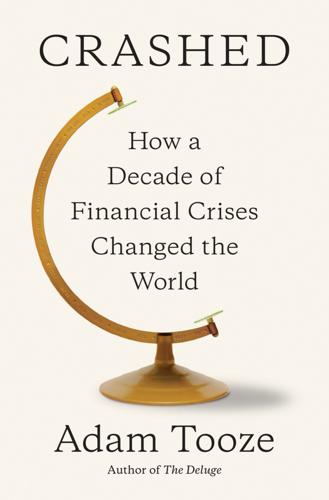
Crashed: How a Decade of Financial Crises Changed the World
by
Adam Tooze
Published 31 Jul 2018
As Peter Orszag, Obama’s former director of management and budget, now at Citigroup, and Jason Furman, serving as chair of the Council of Economic Advisers, reported in a research paper, two thirds of the nonfinancial firms that had managed to achieve a return on invested capital of 45 percent or more between 2010 and 2014 “were in either the health care or information technology sectors.”38 What allowed such gigantic profits and enormous salaries to be concentrated in these sectors were market power, IP protection and government-licensed pricing.39 Silicon Valley saw no need to apologize. Theirs was the great technological and entrepreneurial success story of the late twentieth and early twenty-first centuries. Antitrust, data protection and intrusive tax investigations were, as far as Tim Cook of Apple was concerned, nothing more than “political crap,” antiquated road bumps on the highway to the future.40 As tech oligarch Peter Thiel told audiences and readers: “Creating value isn’t enough—you also need to capture some of the value you create.” That depended on market power. “Americans mythologize competition and credit it with saving us from socialist bread lines,” but Thiel knew better.
…
Orszag, “A Firm-Level Perspective on the Role of Rents in the Rise of Inequality” (presentation at “A Just Society” Centennial Event in Honor of Joseph Stiglitz at Columbia University, October 16, 2015), http://gabriel-zucman.eu/files/teaching/FurmanOrszag15.pdf. 39. H. M. Schwartz, “Wealth and Secular Stagnation: The Role of Industrial Organization and Intellectual Property Rights,” Russell Sage Foundation Journal 2.6 (2016): 226–249. 40. J. Kollewe, “‘Political Crap’: Tim Cook Condemns Apple Tax Ruling,” Guardian, September 1, 2016. 41. P. Thiel, “Competition Is for Losers,” Wall Street Journal, September 12, 2014. 42. Piketty, Capital in the Twenty-First Century (Cambridge, MA: Harvard University Press, 2014). 43. R. Reich, “Income Inequality in the United States” (testimony before the Joint Economic Committee, US Congress, January 16, 2014). 44.
…
And not first and foremost as a result of missing eurozone institutions, but as a result of choices made by business leaders, dogmatic central bankers and conservatively minded politicians. Of course, we may not welcome a world organized this way. Europeans may warm to the spectacle of the European Commission as a consumer champion taking on global monopolists like Google and challenging Apple’s tax evasion.42 But the fines levied on Silicon Valley are a tiny portion of those firms’ cash hoards. A rather different vision of the balance of power is suggested by those moments in 2016 when the financial world waited with bated breath to learn the size of the settlement that the US Department of Justice was going to impose on Deutsche Bank for mortgage fraud.

Lifespan: Why We Age—and Why We Don't Have To
by
David A. Sinclair
and
Matthew D. Laplante
Published 9 Sep 2019
The juxtaposition between the superior performance of older workers and the discrimination against them in the workplace just really makes no sense.”63 Between 2012 and 2017, the average age of new CEOs at the largest companies in the United States increased from 45 to 50 years. Yes, it’s true that older people cannot work physically the same way they did when they were 20, but when it comes to management and leadership, it’s the opposite. Consider some examples of leadership: Tim Cook, Apple’s CEO, is currently 58; Bill Gates, Microsoft cofounder, is 63; Indra Noori, who recently stepped down as CEO of PepsiCo and now sits on Amazon’s board, is 63; and Warren Buffett, the CEO of the investment firm Berkshire Hathaway, is 87. These people are not what you’d call technophobes. It’s bad enough when companies allow themselves to be deprived of great workers because of untrue stereotypes.
…
The ears of corn you see at the grocery store look nothing like the wild plant from which modern corn came; over the course of nine thousand years, the spindly finger-length grass known as teosinte was cultivated to evolve larger cobs and more rows of plump, soft, sugary kernels, a process of modification that significantly altered the plant’s genome.34 The apples we’ve grown accustomed to eating have a bit more resemblance to their small, wild ancestors, but good luck finding one of those ancestors; they have been nearly wiped off the planet, and that’s no great loss to our diet, since the biggest genetic contributor to modern apples, Malus sylvestris, is so tart it’s darn near inedible.35 In 2016, the National Academy of Sciences, in a sweeping report on genetically engineered crops, noted that lab-modified plants could be vital for feeding the planet’s growing human population if global warming threatens traditional farm products.
…
Woese Institute for Genomic Biology, University of Illinois at Urbana-Champaign, “Scientists Engineer Shortcut for Photosynthetic Glitch, Boost Crop Growth 40%,” Science Daily, January 3, 2019, https://www.sciencedaily.com/releases/2019/01/190103142306.htm. 34. P. Mirocha, and A. Mirocha, “What the Ancestors Ate,” Edible Baja Arizona, September/October 2015, http://ediblebajaarizona.com/what-the-ancestors-ate. 35. J. Wenz, “The Mother of All Apples Is Disappearing,” Discover, June 8, 2017, http://blogs.discovermagazine.com/crux/2017/06/08/original-wild-apple-going-extinct/#.W_3i8ZNKjOQ. 36. “Vitamin A deficiency is the leading cause of preventable childhood blindness and increases the risk of death from common childhood illnesses such as diarrhoea,” according to a late-2017 UNICEF report. It stated that vitamin A had been shown to “reduce all-cause mortality by 12 to 24 percent, and is therefore an important programme in support of efforts to reduce child mortality.”

A Generation of Sociopaths: How the Baby Boomers Betrayed America
by
Bruce Cannon Gibney
Published 7 Mar 2017
Finally, on the international stage, the consumer-driven, neoliberal Boomer culture has unleashed vast environmental and social problems, and just because some of these manifest offshore does not mean they vanish from the moral equation. The sociopathic society of consumption depends heavily on goods turned out by dismal sweatshops (e.g., Boomer Kathie Lee’s/Wal-Mart’s Dickensian workshops, Boomers Steve Jobs’/Tim Cook’s subcontracted factories, so depressing that they feature suicide nets to prevent employees from leaping to their deaths).23 Asking other countries to improve their labor conditions would not only be ethical, it would improve America’s competitive position. The only thing Boomers really ask for now, however, is that their purchases be cheap and the moral quandaries offshored.
…
White House, Council of Economic Advisors. Issue Brief. “Gender Pay Gap: Recent Trends and Explanations,” April 2015, p. 1, www.whitehouse.gov/sites/default/files/docs/equal_pay_issue_brief_final.pdf. 23. Cooper, Rob. “Inside Apple’s Chinese ‘Sweatshop’ Factory Where Workers Are Paid Just £1.12 Per Hour to Produce iPhones and iPads for the West.” Daily Mail, 25 Jan. 2013, http://www.dailymail.co.uk/news/article-2103798/Revealed-Inside-Apples-Chinese-sweatshop-factory-workers-paid-just-1-12-hour.html (based on reporting originally conducted by Nightline). 24. Hillenbrand. 2015 Annual Report, p. 3, s1.q4cdn.com/966021326/files/doc_financials/annual/hillenbrand-ar-2015.pdf. 25.
…
Recent wars have featured occasional outrages like Abu Ghraib, but nothing at the scale of My Lai or, at least, nothing not ordered by senior officials (many of them Boomers). The Legacy: All Harm, No Foul They generally fail to compensate or make amends for their behavior. —DSM-V The scope of misconduct during Vietnam rules out the few-bad-apple theories; the conduct was systemic, and given the nature of the draft and the composition of those involved, it was also generational. However, it’s important to note that the consequences were social, not strategic. The war was a lost cause from the beginning, as Ho Chi Minh made clear to the French in 1946, saying to them that “you can kill ten of my men for every one I kill of yours… but even at those odds you will lose and I will win.”48 As the French were dispatched, so were the Americans; there were too many Vietnamese guerrillas and not enough reasons to be in Vietnam.
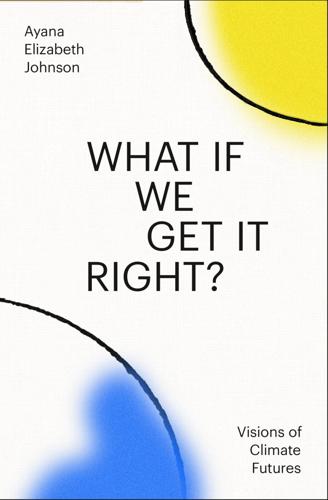
What If We Get It Right?: Visions of Climate Futures
by
Ayana Elizabeth Johnson
Published 17 Sep 2024
One of the reasons that analysis by BankFWD and their colleagues focused on these big tech companies, and demonstrated what a huge amount of carbon they were producing with their cash, is because we’re hopeful that we can enlist those guys in this fight. It’d be really good if Tim Cook sat down with the dude who runs Chase and said, “Look, nice to see you as always. We can’t meet our net-zero promises because you guys keep taking our money and handing it over to Exxon. So, you’re gonna have to choose Apple or Exxon, which do you want?” Ayana: Ooooh. Bill: When that happens, I think they’ll make the right choice. In the meantime, to help speed up that day, we have a big consumer campaign going on against these banks.
…
Even though energy is renewable, we conserve it—to minimize both the amount of metals mined and the amount of nature that is disrupted with panels and turbines. Batteries and solar panels are recycled and newly mined materials are justly sourced. We have figured out fusion. If we get it right, we have re-localized and we eat well. We no longer eat Washington State apples in New York State and New York apples in Washington. Our food is fresh and flavorful, ample and accessible to all. We don’t fight the seasons, but rather enjoy what the time and place offer. Our regionalized supply chains are more resilient to global shocks. We look back in horror at the age of shipping bottles of water from Fiji and France to stores all over the world.
…
[Per the Carbon Bankroll report, “If the largest banks and asset managers in the U.S. were a country, they would be the third-largest emitting country in the world, behind China and the U.S.”] We finally have, thanks to BankFWD and some other groups, a detailed study of just how much carbon we’re talking about. And the numbers are incredible. That study looked at the financial holdings of the big tech companies, Google, Apple, and so on because (a) these guys have a lot of money, and (b) they’ve all pledged to go net zero. Well, it turns out the money these tech companies have sitting in the bank is producing far more carbon than anything they’re doing with their operations, because their deposits, in the hands of the banks, become investments in the fossil fuel industry.
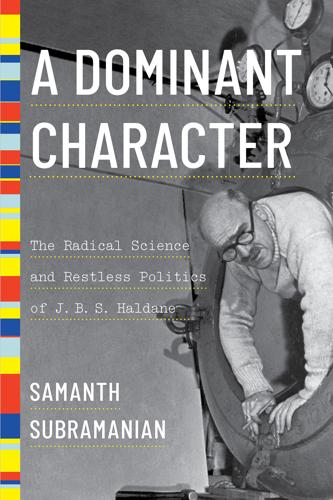
A Dominant Character
by
Samanth Subramanian
Published 27 Apr 2020
Hunter, as quoted in Canada in the Great World War (Ann Arbor: University of Michigan Library, 1918), 70. 90 “What we saw was total death”: Siebert’s account is part of the collection of In Flanders Field Museum in Ypres, Belgium. 90 Four days after the first attack: Goodman, Suffer and Survive. J. S. wrote an account of his time as well, located in the National Library of Scotland collection, as part of Acc. 9589. 91 “Piss on your handkerchiefs”: Quoted in Tim Cook, No Place to Run, 25. 91 Jack was reunited with his father: See Haldane, Why I Am a Cooperator, and Haldane’s essay Callinicus. 91 The uproar engulfed him: Haldane wrote about the injury in detail in an unpublished set of notes, now held at the National Library of Scotland as part of Acc. 10306.
…
—Any sermon and then proceeded to show how Darwinism was, in fact, vital and alive. It was a prototypical Haldane tract, stocked with casual nods to the Book of Daniel and William Blake and Vladimir Lenin and with untranslated German verse, ranging easily over the history of the world but pausing just long enough on practical examples involving primroses or apples. The book was an ode to the power of Darwinian selection. “However small may be the selective advantage,” Haldane wrote, “the new character will spread, provided it is present in enough individuals of the population to prevent its disappearance by mere random extinction.” This single sentence could have been the creed of the modern synthesis.
…
That autumn, he was paid a visit by Ivan Glushchenko, part of a Soviet delegation touring Britain. Glushchenko was a plant geneticist; Maynard Smith called him Lysenko’s hatchet man. To British scientists, Glushchenko seemed vapid and unimpressive, prattling on about how the Soviet Union had produced apples that looked like pears. He came to University College, Maynard Smith recalled later, with a couple of goons: And he and the goons . . . were actually closeted in Haldane’s office for about three hours, trying to persuade Haldane how right Lysenko was. And Haldane was absolutely unapproachable for two or three days afterwards.
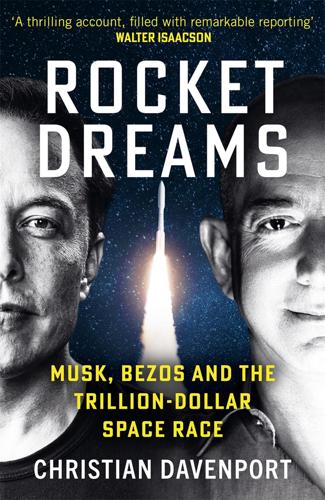
Rocket Dreams: Musk, Bezos and the Trillion-Dollar Space Race
by
Christian Davenport
Published 6 Sep 2025
In the garish, Vegas casino–like lobby of Trump Tower, the press was cordoned off behind a red velvet rope, within view of the building’s golden-hued elevators. From there they could film and photograph those CEOs whom Trump deemed worthy of an invitation. In all, about a dozen made the cut, including Tim Cook of Apple, Sheryl Sandberg of Facebook, and Larry Page and Eric Schmidt of Alphabet, all looking somewhat uncomfortable as reporters shouted questions and recorded every gesture until the elevator doors mercifully closed. C-SPAN, the dedicated chronicler of Washington minutiae, installed a Trump lobby cam, offering live coverage as the cortege of CEO suitors arrived.
…
At the time, Musk was warring with the SEC over the “funding secured” tweet, mocking the agency on Twitter as the “Shortseller Enrichment Commission.” Bridenstine didn’t want to let Musk intimidate him, or to give him special treatment. It didn’t matter that SpaceX was one of the most innovative companies since Apple, or that he had been fanboying over the Falcon Heavy launch and decorating his office with images of it just a few months earlier. “You can’t be doing that,” Bridenstine told Musk when they spoke by phone. “The whole world is watching you.” Musk let loose an awkward giggle and assured him that it had been a spur-of-the-moment thing.

Drink: A Cultural History of Alcohol
by
Iain Gately
Published 30 Jun 2008
Nation, prophetess of God”: Ibid., p. 211. 353 “the largest missionary field in the world”: Ibid., p 256. 353 “a school of vice to a great extent”: Ibid., p. 267. 354 “I now feel that this great wave”: Ibid., p. 303. 355 “controlled six Congresses”: Kobler, p. 182. 355 “In America we are making”: Sinclair, p. 62. 356 “Probably, certainly, more than fifty percent”: Ibid., p. 64. 356 “I ALCOHOL INFLAMES THE PASSIONS”: Ibid., p. 65. 356 “From that December day in 1913”: Kobler, p. 201. 357 “comparatively few alcoholics”: John Barleycorn, or Alcoholic Memoirs (1913), Jack London, Signet Classics edition, New York, 1990, p. 17. 357 “let me warm by their fires”: Ibid., p. 36. 358 “talked with great voices”: Ibid., p. 37. 358 “All the no-saying and no-preaching”: Ibid., p. 115. 358 “The trouble I had with the stuff ”: Ibid., p. 202. 358 “The only rational thing”: Ibid., p. 115. 27 IN THE CHALK TRENCHES OF CHAMPAGNE 360 “the individual man is in all cases free”: “Rum in the Trenches,” Tim Cook, Legion Magazine, Defence Today, September/October 2002. 360 “It surprises me when”: Memoirs of an Infantry Officer, Siegfried Sassoon, Faber and Faber, London, 1997, p. 18. 360 “Under the spell of ”: Cook. 361 “to take the taste of dead men”: Ibid. 361 “The gas was phosgene”: Williams, p. 187. 361 “the ‘No Rum Division’”: Sassoon, p. 122. 361 “estaminets”: Her Privates We, Frederic Manning (1929), Serpent’s Tail edition, London, 1999. 362 “We have the right to get”: Under Fire, Henri Barbusse (1916), Penguin Classics edition, Trans.
…
In 1637 he “set up a brew house at his great charge, & very commodious for this part of the countrey.” The drinks list in New England was supplemented by cider, whose manufacture grew to be a cottage industry, analogous to ale brewing in medieval England. Indeed, the drink came to be identified with the place—fermented apple juice 16 was more American than apple pie. The first orchard in Massachusetts was planted in 1623 by William Blaxton—an eccentric clergyman, who for a number of years was the only English resident of Boston—on his farm on Beacon Hill. Cider orchards were also planted in Virginia and in New Amsterdam, an American settlement founded by the Dutch, in imitation of their English Protestant cousins.
…
Once they had possession of Manhattan, the Dutch completed their fort, whose southern limit was marked by Wall Street, and laid out farms. They were as fond of their booze as the English, and in 1632 their West India Company built a brewery on a lane that became known as “Brouwers Straet.” They also planted vineyards, gathered wild hops from the woods, and Peter Stuyvesant, who became governor in 1647, cultivated cider apple trees imported from Holland on his farm in what is now the Bowery district of Manhattan. As had been the case with other European settlers in North America, the Dutch noted that the Indians with whom they traded for land and furs had no prior acquaintance with alcoholic drinks. In his Description of the New Netherlands (c. 1642) Adriaen van der Donck observed that while the local tribes drank fresh grape juice, “They never make wine or beer.

Unscripted: The Epic Battle for a Media Empire and the Redstone Family Legacy
by
James B Stewart
and
Rachel Abrams
Published 14 Feb 2023
But the court hadn’t set a trial date until October—far too late to offer Dauman any immediate protection. * * * — Shari was nervous about the prospect of that year’s Allen & Company media summit, which was held every year in Sun Valley, Idaho, and informally known as the “billionaires’ summer camp.” With participants Justin Trudeau, Mark Zuckerberg, Tim Cook, and Warren Buffett on the guest list, it would have been intimidating under any circumstances, especially since she was one of just a handful of women who weren’t attending as “significant others.” As usual, she’d be traveling alone. Adding to her anxiety: both Moonves and Dauman were supposed to be there.
…
Shari looked over at Klieger in surprise: even though Gordon had told her something about a discussion of “the industry,” such a strategic review wasn’t on the agenda. Centerview’s list of potential partners included the usual suspects: MGM, Sony Entertainment, and Lionsgate were companies CBS might acquire; Verizon, Amazon, Apple—perhaps even Warren Buffett’s Berkshire Hathaway—were among the larger companies that might want to acquire CBS. There was a glaring omission. Viacom was barely mentioned, dismissed as largely irrelevant, even though it had just surprised Wall Street with better earnings than expected, suggesting that Bakish’s strategy was yielding results.
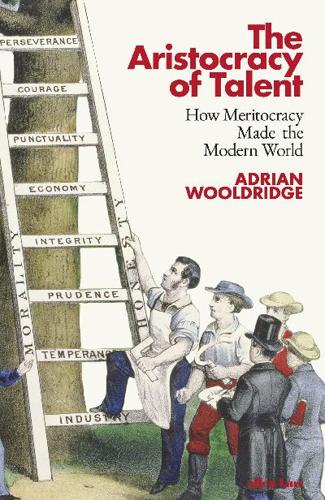
The Aristocracy of Talent: How Meritocracy Made the Modern World
by
Adrian Wooldridge
Published 2 Jun 2021
Daniel Markovits calculates that more than half the richest 1 per cent of households include someone who works more than fifty hours a week – a far higher incidence of overwork than you find in the rest of the population.39 Prominent businesspeople have taken to giving absurd interviews to the press about how they get up at 4 a.m. (Indra Nooyi, boss of PepsiCo), immediately leap on an exercise bike, work out furiously in the gym (Tim Cook of Apple), and then spend their days in a whirlwind of activity.40 Before it took over the world, meritocracy was the rallying cry of the oppressed and marginalized everywhere. Feminists demanded that they should be allowed to compete for jobs and educational distinctions and judged by the same standards as men.